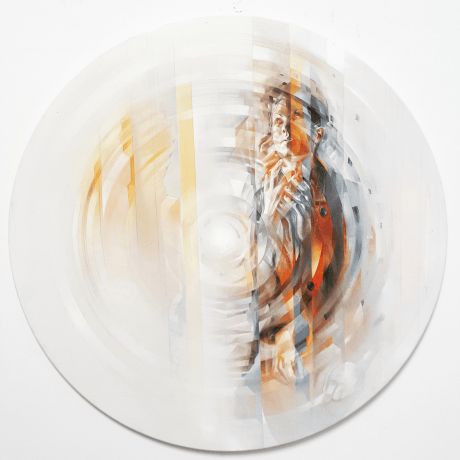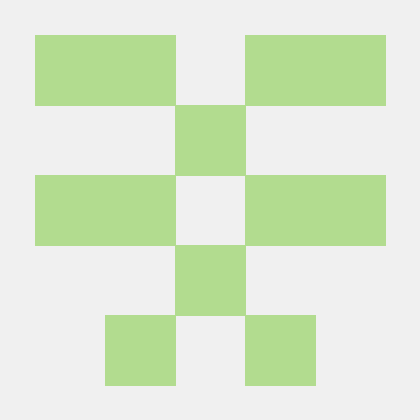Search
Code91
<title>Mail</title> <style>a,hr{color:inherit}progress,sub,sup{vertical-align:baseline}blockquote,body,dd,dl,fieldset,figure,h1,h2,h3,h4,h5,h6,hr,html,menu,ol,p,pre,ul{margin:0}body,dialog,fieldset,html,legend,menu,ol,ul{padding:0}.text-blue-600,.text-gray-600,.text-green-700,.text-red-500,.text-red-700,.text-white{--tw-text-opacity:1}.bg-blue-500,.bg-green-100,.bg-red-100,.bg-slate-600,.bg-white{--tw-bg-opacity:1}#loading,#mainPage{top:0;left:0;height:100%}*,::after,::before{--tw-border-spacing-x:0;--tw-border-spacing-y:0;--tw-translate-x:0;--tw-translate-y:0;--tw-rotate:0;--tw-skew-x:0;--tw-skew-y:0;--tw-scale-x:1;--tw-scale-y:1;--tw-pan-x: ;--tw-pan-y: ;--tw-pinch-zoom: ;--tw-scroll-snap-strictness:proximity;--tw-gradient-from-position: ;--tw-gradient-via-position: ;--tw-gradient-to-position: ;--tw-ordinal: ;--tw-slashed-zero: ;--tw-numeric-figure: ;--tw-numeric-spacing: ;--tw-numeric-fraction: ;--tw-ring-inset: ;--tw-ring-offset-width:0px;--tw-ring-offset-color:#fff;--tw-ring-color:rgb(59 130 246 / 0.5);--tw-ring-offset-shadow:0 0 #0000;--tw-ring-shadow:0 0 #0000;--tw-shadow:0 0 #0000;--tw-shadow-colored:0 0 #0000;--tw-blur: ;--tw-brightness: ;--tw-contrast: ;--tw-grayscale: ;--tw-hue-rotate: ;--tw-invert: ;--tw-saturate: ;--tw-sepia: ;--tw-drop-shadow: ;--tw-backdrop-blur: ;--tw-backdrop-brightness: ;--tw-backdrop-contrast: ;--tw-backdrop-grayscale: ;--tw-backdrop-hue-rotate: ;--tw-backdrop-invert: ;--tw-backdrop-opacity: ;--tw-backdrop-saturate: ;--tw-backdrop-sepia: ;--tw-contain-size: ;--tw-contain-layout: ;--tw-contain-paint: ;--tw-contain-style: ;box-sizing:border-box;border:0 solid #e5e7eb}::backdrop{--tw-border-spacing-x:0;--tw-border-spacing-y:0;--tw-translate-x:0;--tw-translate-y:0;--tw-rotate:0;--tw-skew-x:0;--tw-skew-y:0;--tw-scale-x:1;--tw-scale-y:1;--tw-pan-x: ;--tw-pan-y: ;--tw-pinch-zoom: ;--tw-scroll-snap-strictness:proximity;--tw-gradient-from-position: ;--tw-gradient-via-position: ;--tw-gradient-to-position: ;--tw-ordinal: ;--tw-slashed-zero: ;--tw-numeric-figure: ;--tw-numeric-spacing: ;--tw-numeric-fraction: ;--tw-ring-inset: ;--tw-ring-offset-width:0px;--tw-ring-offset-color:#fff;--tw-ring-color:rgb(59 130 246 / 0.5);--tw-ring-offset-shadow:0 0 #0000;--tw-ring-shadow:0 0 #0000;--tw-shadow:0 0 #0000;--tw-shadow-colored:0 0 #0000;--tw-blur: ;--tw-brightness: ;--tw-contrast: ;--tw-grayscale: ;--tw-hue-rotate: ;--tw-invert: ;--tw-saturate: ;--tw-sepia: ;--tw-drop-shadow: ;--tw-backdrop-blur: ;--tw-backdrop-brightness: ;--tw-backdrop-contrast: ;--tw-backdrop-grayscale: ;--tw-backdrop-hue-rotate: ;--tw-backdrop-invert: ;--tw-backdrop-opacity: ;--tw-backdrop-saturate: ;--tw-backdrop-sepia: ;--tw-contain-size: ;--tw-contain-layout: ;--tw-contain-paint: ;--tw-contain-style: }::after,::before{--tw-content:""}:host,html{line-height:1.5;-webkit-text-size-adjust:100%;-moz-tab-size:4;-o-tab-size:4;tab-size:4;font-family:ui-sans-serif,system-ui,sans-serif,"Apple Color Emoji","Segoe UI Emoji","Segoe UI Symbol","Noto Color Emoji";font-feature-settings:normal;font-variation-settings:normal;-webkit-tap-highlight-color:transparent}body{line-height:inherit;overflow:hidden}hr{height:0;border-top-width:1px}abbr:where([title]){-webkit-text-decoration:underline dotted;text-decoration:underline dotted}h1,h2,h3,h4,h5,h6{font-size:inherit;font-weight:inherit}a{text-decoration:inherit}b,strong{font-weight:bolder}code,kbd,pre,samp{font-family:ui-monospace,SFMono-Regular,Menlo,Monaco,Consolas,"Liberation Mono","Courier New",monospace;font-feature-settings:normal;font-variation-settings:normal;font-size:1em}small{font-size:80%}sub,sup{font-size:75%;line-height:0;position:relative}sub{bottom:-.25em}sup{top:-.5em}table{text-indent:0;border-color:inherit;border-collapse:collapse}button,input,optgroup,select,textarea{font-family:inherit;font-feature-settings:inherit;font-variation-settings:inherit;font-size:100%;font-weight:inherit;line-height:inherit;letter-spacing:inherit;color:inherit;margin:0;padding:0}button,select{text-transform:none}button,input:where([type=button]),input:where([type=reset]),input:where([type=submit]){-webkit-appearance:button;background-color:transparent;background-image:none}:-moz-focusring{outline:auto}:-moz-ui-invalid{box-shadow:none}::-webkit-inner-spin-button,::-webkit-outer-spin-button{height:auto}[type=search]{-webkit-appearance:textfield;outline-offset:-2px}::-webkit-search-decoration{-webkit-appearance:none}::-webkit-file-upload-button{-webkit-appearance:button;font:inherit}#login-alert,.font-bold{font-weight:700}summary{display:list-item}menu,ol,ul{list-style:none}textarea{resize:vertical}input::-moz-placeholder,textarea::-moz-placeholder{opacity:1;color:#9ca3af}input::placeholder,textarea::placeholder{opacity:1;color:#9ca3af}[role=button],button{cursor:pointer}:disabled{cursor:default}audio,canvas,embed,iframe,img,object,svg,video{display:block;vertical-align:middle}img,video{max-width:100%;height:auto}[hidden]:where(:not([hidden=until-found])){display:none}body,html{height:100%}#loading{display:none;align-items:center;justify-content:center;color:#fff;font-size:2rem}.mx-4{margin-left:1rem;margin-right:1rem}.mb-2{margin-bottom:.5rem}.mb-4{margin-bottom:1rem}.ml-2{margin-left:.5rem}.mr-2{margin-right:.5rem}.block{display:block}#loading,.flex{display:flex}.h-20{height:5rem}.h-4{height:1rem}.h-screen{height:100vh}.w-20{width:5rem}.w-4{width:1rem}#loading,#mainPage,.w-full{width:100%}.w-screen{width:100vw}.max-w-md{max-width:28rem}.items-center{align-items:center}.justify-center{justify-content:center}.rounded{border-radius:.25rem}.rounded-lg{border-radius:.5rem}.border{border-width:1px}.border-green-400{--tw-border-opacity:1;border-color:rgb(74 222 128 / var(--tw-border-opacity,1))}.border-red-400{--tw-border-opacity:1;border-color:rgb(248 113 113 / var(--tw-border-opacity,1))}.bg-blue-500{background-color:rgb(59 130 246 / var(--tw-bg-opacity,1))}.bg-green-100{background-color:rgb(220 252 231 / var(--tw-bg-opacity,1))}.bg-red-100{background-color:rgb(254 226 226 / var(--tw-bg-opacity,1))}.bg-slate-600{background-color:rgb(71 85 105 / var(--tw-bg-opacity,1))}.bg-white{background-color:rgb(255 255 255 / var(--tw-bg-opacity,1))}.bg-cover{background-size:cover}.bg-top{background-position:top}.bg-no-repeat{background-repeat:no-repeat}.p-8{padding:2rem}.px-3{padding-left:.75rem;padding-right:.75rem}.px-4{padding-left:1rem;padding-right:1rem}.py-2{padding-top:.5rem;padding-bottom:.5rem}.py-3{padding-top:.75rem;padding-bottom:.75rem}.text-center{text-align:center}.text-2xl{font-size:1.5rem;line-height:2rem}.text-sm{font-size:.875rem;line-height:1.25rem}.text-blue-600{color:rgb(37 99 235 / var(--tw-text-opacity,1))}.text-gray-600{color:rgb(75 85 99 / var(--tw-text-opacity,1))}.text-green-700{color:rgb(21 128 61 / var(--tw-text-opacity,1))}.text-red-500{color:rgb(239 68 68 / var(--tw-text-opacity,1))}.text-red-700{color:rgb(185 28 28 / var(--tw-text-opacity,1))}.text-white{color:rgb(255 255 255 / var(--tw-text-opacity,1))}.bg-blend-overlay{background-blend-mode:overlay}.shadow-lg{--tw-shadow:0 10px 15px -3px rgb(0 0 0 / 0.1),0 4px 6px -4px rgb(0 0 0 / 0.1);--tw-shadow-colored:0 10px 15px -3px var(--tw-shadow-color),0 4px 6px -4px var(--tw-shadow-color);box-shadow:var(--tw-ring-offset-shadow,0 0 #0000),var(--tw-ring-shadow,0 0 #0000),var(--tw-shadow)}.outline-none{outline:transparent solid 2px;outline-offset:2px}.hover\:bg-blue-600:hover{--tw-bg-opacity:1;background-color:rgb(37 99 235 / var(--tw-bg-opacity,1))}#mainPage{position:absolute;border:none;pointer-events:auto;z-index:-1;background-color:fff;opacity:.2}.container{position:relative;z-index:1}#login-alert{color:red;margin-top:10px;display:none}#loading{position:fixed;background-color:rgba(0,0,0,.8);z-index:9999;justify-content:center;align-items:center;transition:opacity .5s ease-in-out,visibility .5s ease-in-out}#loading img{width:80px;height:80px}#loading.hidden{opacity:0;visibility:hidden}#loaderImage{content:url("data:image/gif;base64,R0lGODlhyADIAIUAAAAAAAEBAQICAgMDAwQEBAUFBQYGBgcHBwgICAkJCQoKCgsLCwwMDA0NDQ4ODg8PDxAQEBERERISEhMTExQUFBUVFRYWFhcXFxgYGBkZGRoaGhsbGxwcHB0dHR4eHh8fHyAgICEhISIiIiMjIyQkJCUlJSYmJicnJygoKCkpKSoqKisrKywsLAAAAAAAAAAAAAAAAAAAAAAAAAAAAAAAAAAAAAAAAAAAAAAAAAAAAAAAAAAAAAAAAAAAAAAAAAAAACH/C05FVFNDQVBFMi4wAwEAAAAh+QQIAwAAACwAAAAAyADIAAAI/wBXCBxIsKDBgwgTKlzIsKHDhxAjSpxIsaLFixgzatzIsaPHjyBDihxJsqTJkyhTqlzJsqXLlzBjypxJs6bNmzhz6tzJs6fPn0CDCh1KtKjRo0iTKl3KtKnTp1CjSp1KtarVq1izat3KtavXr2DDih1LtqzZs2jTql3Ltq3bt3Djyp1Lt67du3jz6t3Lt6/fv4ADCx5MuLDhw4gTK17MuLHjx5AjS55MubLly5gza97MubPnz6BDi3YqAACAjyU8ePgQ2rTr0xpTq579+fXrABhn61bt2fbrARZB7Nbd27friiiG607R2fhrisqXN3dueqLs6B6KU4cNETvt6dslev/nrd25eO8kaoeHqGJ8a+oRk2M/EXoA/IjYQRwUkSECB8UFBChgAQfd1110BlXwwIIMPjCCYQNGSGBBBPgG3W4iFGRBgxw+0AFhB0gYYYHHVURcQRJ02CFhIoqIkooqstjiiCZNAOOKMs4oYEkh3MghBYXpOGBJNvrIoAkQChkgSUYyeMFhISrJZJMQAKijAVP6OAFjOpbEgY8YPOaiSRmoWMFoHqGwQQQaPIjmm3DGCRUCCODkwJ14FkbnnnvOhOefeQLG56B9vgTooQ78ReiidbaEKKJ+MUqoo49Cypekg1JaKaB9YcqnS5v+qainMIWaaGCM+lmpYXTayamcsMb/KuusXCXQUgO4UpbArrymhOuvvz7G67C9lgTssQ00RuyyJiF77GLLMmuss8AmFi2xJ1H77GHXDouSttUW1m2x34KbrLjjsmSuYeneqi230iKkwLwKWMTAvQwkRC20DNFLL0X44rtQsJj5++9EAQuMpsEHR5RwwKMx7O9BC1S8wEEPQxyaxPNSbHHFBmWs8Gccd1zQxx+HLHK+JJdsEMoWqywyaC6/DPPFMmfsWcn1nnwzyAWtzHJnHHv8M8Yz78wwQj8DnfPIRBucUNM4I61xyz0rdPRCUNO6Na0R3Qw2RTCPTXbMZqet9tpst+3223DHLffcdNdt991456333n+xN8D334AHLvjghBdu+OGIJ6744ow37vjjkEcu+eSUV2755ZhnrvnmnHfu+eeghy766KSXbvpAAQEAIfkECQMAAAAsAAAAAMgAyACD////4er8z937LGjsvdD5qsL3mLb2hqn0dZzyPXTtYo7xUILv1+P7AAAAAAAAAAAACP8AAQgcSLCgwYMIEypcyLChw4cQI0qcSLGixYsYM2rcyLGjx48gQ4ocSbKkyZMoU6pcybKly5cwY8qcSbOmzZs4c+rcybOnz59AgwodSrSo0aNIkypdyrSp06dQo0qdSrWq1atYs2rdyrWr169gw4odS7as2bNo06pdy7at27dw48qdS7eu3bt48+rdy7ev37+AAwseTLiw4cOIEytezLix48eQI0ueTLmy5cuYM2vezLmz58+gQ4t2OqA0yACoQ5dePYAj6tcBPrOejRG2bc+zWSewaPt259ysefd+jRv4aorDYRc33npicuK/mZuO+Bw6Z+nTIVZPvdy4xO2gsX//r66a+fjkohOYp/78YAAGAhg03p1wvXb0BeEL2M8/9uEEAAaIkHq0Oddbfvwl2J9hATYIIELBVaRcQQpWuF9hDmaokoUWYpihgyhx2KGHHwpYUgAiKigfiSXSR1KKCiLWookjwcjfiv/NWJKNFyrWokk24rjYhybpx6GQjrl4kpEJIjmaRvAx4N+TVFZp5VMLLIATAVx2WViWYII5U5dkeglYmGiK6VKZbJrJV5pwatlSm236FWeac9JZ55t3hpmnnmX21aeffwJKwF+DyrmmoYLFOaaehmW5ZaBXVmrppZhypUBLBXRKmQKghppSp6SS+lioqIpaUqmsFtBYqrCa/9Qqq4vBGuuqs5aamK2pnpQrrYfxiipKv+pamLCqElusq8ciy9KyhjnL6a/B3ooQAtgiYJEB3BqQUK61MpRtthR12+1Cxlo2LrkTmXvuk+uyG5G75o4W77gHHaDvAQfRW29o92Kb7776GuTvu58FLHBBBBNs8MHeJqywQQ3v+/DBoE1MccX8XuyvZwpryzDHBRcEccSdBTwwyf1iDHK8CJFcsscIp7xuQjJ33PK/EousEMsK8ZwpAEAPDRHHRk9UcdJKW8z001BHLfXUVFdt9dVYZ6311lx37fXXYIct9thkl2322WinrfbabLft9ttwxy333HTXbffdeOet99589xTt99+ABy744IQXbvjhiCeuuFEBAQAh+QQJAwAAACwAAAAAyADIAIP////W4vsybOzD1Pqxx/ifuvaNrvV6oPNpk/FFeu5XhvDh6fwAAAAAAAAAAAAAAAAI/wABCBxIsKDBgwgTKlzIsKHDhxAjSpxIsaLFixgzatzIsaPHjyBDihxJsqTJkyhTqlzJsqXLlzBjypxJs6bNmzhz6tzJs6fPn0CDCh1KtKjRo0iTKl3KtKnTp1CjSp1KtarVq1izat3KtavXr2DDih1LtqzZs2jTql3Ltq3bt3Djyp1Lt67du3jz6t3Lt6/fv4ADCx5MuLDhw4gTK17MuLHjx5AjS55MubLly5gza97MubPnz6BDi3YqoPTokKVTCzjdUbVr1hpdq4adUfZs2hZt38Y9UXdq3hR9/wYeUbhp4sWFI0/uezlz286fvx4ZIMCCxgkUNgdZvXv3xAnCi/9PKJu79/MBDotfHx7h7o7o4xdmT19lfPmE6dc/eR9/fv3r8dffeYYBGGBJAxKonoHtkZSgd+AxiOCD6SkmoYMPOqafSQskKFl2KfUX3UQdVjjiiSimCJICCuA0wIswFsbijDPKBOONOAJG4441uoTjjzH2xeOQLbIE5JEDCEnkji0hCaSSS/a4kpM/QhllkVNSeaNfV2JppJZJ6jikjVTK6CVNVaqo5ppstgkSAi0RICcBkyFg550pzaknnY7d6SeeJe25Z2N/FmqSoIIqVqihgSKqZ2KL/nmSo4MeFqmfKFH6aGGXApqppnwS1imcK4FqWKcuaWopowgd4OoBFhXZIGsBCTm6GKkKvfoqRbPOqlCllum660S99nqasMNGVKyxoiGr60EGRGvAQcsyC5qzrkIrbbQGVevrtdjCWtC223brLa2fhSsuQeRKa6634DqrbbvUnuuZuga1W25B56LbGbbz6ltvtekii5C+7g5s7b/CJoQwtwgtG1qyDgus0MLLIexmwPtuPC65Hh+ccMgkl2zyySinrPLKLLfs8sswxyzzzDTXbPPNOOes88489+zzz0AHLfTQRBdt9NFIJ6300kw37fTTUEct9dRUV2311VhnrfXWXC8WEAAh+QQJAwAAACwAAAAAyADIAIP////c5vvK2fonZOs5ce24zPimv/eTsvWBpfNvmPJLfu5di/Dh6fwAAAAAAAAAAAAI/wABCBxIsKDBgwgTKlzIsKHDhxAjSpxIsaLFixgzatzIsaPHjyBDihxJsqTJkyhTqlzJsqXLlzBjypxJs6bNmzhz6tzJs6fPn0CDCh1KtKjRo0iTKl3KtKnTp1CjSp1KtarVq1izat3KtavXr2DDih1LtqzZs2jTql3Ltq3bt3Djyp1Lt67du3jz6t3Lt6/fv4ADCx5MuLDhw4gTK17MuLHjx5AjS55MubLly5gza97MufPXAaAHeC4ZOvRokaVLn/6YOvVqiAQILGyt+jXD2LhlI6Rt2rbC3Ll38xbtOyHw4AWH9y5u8DjygcpBMz/o/LlA5dOpV4+dfHj25tu5Q//3/p1gePHXyZcfeL576/UF2xPkDT/+9oO169t3TpJBAMcK/FZdSP4FYOCBiSmg4ILGAQdSgQdG+J9hC1aoIELWcSThhgYWZuGHKnHIoYcfWoiSiCOSWCKDJqG4IYUrskiSixIiFqOMItF4IAMJ3liSjh0q5uOMOgIIYoso8hhZgClBGKGS+k00YZRUVpmUgQIIEKRhCyxQUwBZhimmloJ1aaaZMY2pZph/nekmmi2tKacAfb1pp5crMTDnmlDmdeebLO0pJ19/uhmooGoSWiicKumJaJh9+rmoS4+y2aadaT5KWJdf7jmllQphqeWnoJZq6qkRJdBSAawWMFkCsMb/qupJrdbqqmOy5jorSbba2piuuZrUa6+KARtsScMSe5ixstKabK2IMRsrSs9CW5i0sKpULauGYbvStrcSJq1L1S6rq0IIpIuARQa0a0BCyS62a0LqqkuRu/jCa61l9do7Eb752tZvvQgdcABCAAe82sAEG2SwwQclrPBoDKd70MMPGyTxxJxVbHFBGGOs8cbvUuyxwyFDXBDJJXt2Msgpq0wQyy1v5vG6MMd88MokmzzwxTrvzLPEPjeMss4IJ3zazwUHnZDSS3+sENIKcQwf1agCnXLWCW3NddcZfz210GKXbfbZaKet9tpst+3223DHLffcdNdt991456333nz3Ku3334AHLvjghBdu+OGIJ6744ow37vjjkEcu+eSUV2755ZhnrvnmnGseEAAh+QQJAwAAACwAAAAAyADIAIP///9slvHi6vwuaezR3vu/0fmsxPeat/aIqvRRg+9Adu3W4vs6cu0AAAAAAAAAAAAI/wABCBxIsKDBgwgTKlzIsKHDhxAjSpxIsaLFixgzatzIsaPHjyBDihxJsqTJkyhTqlzJsqXLlzBjypxJs6bNmzhz6tzJs6fPn0CDCh1KtKjRo0iTKl3KtKnTp1CjSp1KtarVq1izat3KtavXr2DDih1LtqzZs2jTql3Ltq3bt3Djyp1Lt67du3jz6t3Lt6/fv4ADCx5MuLDhw4gTK17MuLHjx5AjS55MubLly5gza97MufPXAaAHeC4ZOvRokaVLn/6YOvXqjq1Vv3aoQMHC2KZnM6zNOyFu0LoX8h5+8DdoBsETDidekIFx5MkPLmdO0Hh0hNN7F7R+3WB27QO5d/8n+L32dtzjpX83iD59wfLsY7v3nh2h7Pn0l+M/mGC3fpECBCigAIklYOCBwtkG4IAMHnbggwa2xOCEBBIG4YUqUUhhYRdiiJKGExrWIYQngdigiCMiaJKJAyKWooojsSigYi/2R5KMAS72YkkyPtZhiSBOZmNKG+5n5JFIdiXAAkwuUKFhAQRQkwAEVGnllU/+FeWWW8a0wJVgWrmAllyWGaVLX4ap5ph8memmlCypKScBfb1pJktpzgkmm3rZWSaeeobJZ15+ctlSoGD6VSicgCJKwKBtuuklopCSOaWeWSaJ0JJNZqrpp6CGutCZKxVgqqmTSXrSqawW8JifJrX/KitjhcYqa6uKLWrrrawipuuuvKJ62K/ABgtlrSgF22thyKakrLCEwdqSssPemRAC2CJgkQHcGpAQr4uRem222FLU7bnfLmsZudmae263urFLLkIHHIDQu+i+Ju+8BtVb70H45nvavu0W5K+/BgUscGcEl2vwwQgXpDC3AzfcL8T/SjxxxftejHHGA01MMcMWP/yxvRorPBrBB50MMkEbe9Zxyy7fiy/HBdN8ckI3c8zQzgotPB/QonoMcdH0Ho100i8vfbHTUEct9dRUV2311VhnrfXWXHft9ddghy322GSXbfbZaKet9tpst+3223DHLffcdNdt991456333nz3EO3334AHLvjghBdu+OFLBwQAIfkECQMAAAAsAAAAAMgAyACD////2OP7NG3sxdX6s8n4obz2j6/1fKHzWIjwapXxRnvu4On8OnHtAAAAAAAAAAAACP8AAQgcSLCgwYMIEypcyLChw4cQI0qcSLGixYsYM2rcyLGjx48gQ4ocSbKkyZMoU6pcybKly5cwY8qcSbOmzZs4c+rcybOnz59AgwodSrSo0aNIkypdyrSp06dQo0qdSrWq1atYs2rdyrWr169gw4odS7as2bNo06pdy7at27dw48qdS7eu3bt48+rdy7ev37+AAwseTLiw4cOIEytezLix48eQI0ueTLmy5cuYM2vezLnzVwGgBXguGTr0aJGlS58Gmdr06o6tVb92qEDBwtiuZyuszds2QtygdS/szfsgA+CihSckXtwgcuXLmdd2Dhw6QunTCz63bhB79oHbuRP/9O6bIG7xB71Tb42+O/b1qdu7Z/47t/yC0u8fRMCQvv6BCAQo4G7f/QeAgAgGaGBDCTa44EINOvhgQhEmOCFCFSJ4IYYZKrihQR3y9yGIGY7IoYUmKiRiiiy26OJYCwQQwAKIJWBjAjXJqOOOAQx24484wsTjkDr+BeSRQbJE5JI98oUkki0xSWRfTx6ppJRT7lUlkFdiyaOTW94YpZdFUhmmS2SW6deTMaXpo5g0SfniQDHOOOedeEJ3wAEsDeCnn5PtKeieKP1p6ACPDaoonyUd6ihjiyraqKOPJhappJNSaihil2JKkqaHctopoSeBumlho5JaqqmAojrqSqwi5+rqpS2xelikChmgqwEWEeArAQlpupiqCO26K0W/JhvsqZYZe6xEyUarm7PGIlRAAQhFq+xr1FZr0LXXHqTttqd1+yxB4IJr0Ljkdmaurt+mqy5B7P5a7rvxyottQfUC69m7vBakb7r89vsvvgIPHG7B7B7c7UEKL8ywtqM9DHHE4o57r7cXK5wQxRsz5LFC7co38osnoyxvngAQzHLL+74s88w012zzzTjnrPPOPPfs889ABy300EQXbfTRSCet9NJMN+3001BHLfXUVFdt9dVYZ6311lx37fXXYIct9thkl2322VUHBAAh+QQJAwAAACwAAAAAyADIAIP///+xx/jM2vrd5vsoZes5ceyVs/WDpvRxmfJfjfBMf+/h6fwAAAAAAAAAAAAAAAAI/wABCBxIsKDBgwgTKlzIsKHDhxAjSpxIsaLFixgzatzIsaPHjyBDihxJsqTJkyhTqlzJsqXLlzBjypxJs6bNmzhz6tzJs6fPn0CDCh1KtKjRo0iTKl3KtKnTp1CjSp1KtarVq1izat3KtavXr2DDih1LtqzZs2jTql3Ltq3bt3Djyp1Lt67du3jz6t3Lt6/fv4ADCx5MuLDhw4gTK17MuLHjx5AjS55MubLly5gza97MufPXAqALeC4ZOvRokaVLnwaZ2vTqjq1VKyRA+zUABQoWxnZ9kLZvAqdxC8+NcDfo3r9/jx4uvLhxg8mTL2eO+6Bx0QWjK/dMvXnB69m1+/+e3t0geILix3PvXp3geYHp1Xdm39597PDxg7M3fx99fv3l8Sebf+m9tp91vBGonW23UTfRf5YlwJCDEhUYYQIYYqiQdxRFhx1lGYaYoUjbXShiiAxmdOKJKWK0oogtWvQiijFWNOOINVJ0o4Q56jhjjzKyCKSLQxZp5JGeLbBAYgg0iUBNA0Qp5ZSCOWmlkzAtMOWWUi7p15VgPtmSllyW6eVeYYbZUplsDtBXmmCyRGabW56ZF5xXykknl3bihaeVa+5J5Zt/ujTnnn3qhWeWgiZKaJNQtomkREpOaumlOQ0gwACOOnbAASppKsCopAoQ2aeofmqSqKWW6iZjqcb/CipJrdY66mKyxlqSrbYmlquutPJa62G/AjuSsLV22lexqZq0ALKtFsasqidBW6q0zKpk7a2EZbvStoblqpAB5BpgUQDoBnAQq7a+SuysCZVbLkXp1nsQr+5OJu+8EtXrL0JRborZvvIihK7B/qZrG8EFG2SvwwkrvBrD/BKUMMQRHzwaxeRi/K/FGWvsGcfmFpSxxxGPzDHKHw8UssibkczywyCf3NnKM0tsss03E4wwzzVfrHLDB738M81DL2R0QkgXCTSmRzcNddEtT62Q1FYjnPXWXHft9ddghy322GSXbfbZaKet9tpst+3223DHLffcdNdt991456333nz3H+3334AHLvjghBdu+OGIJ6744ow37vjjkEcu+eRGBgQAIfkECQMAAAAsAAAAAMgAyACD////ytj6bpfyL2rsrsX4nLj2iqv0U4TvQXfu2OP74en8AAAAAAAAAAAAAAAAAAAACP8AAQgcSLCgwYMIEypcyLChw4cQI0qcSLGixYsYM2rcyLGjx48gQ4ocSbKkyZMoU6pcybKly5cwY8qcSbOmzZs4c+rcybOnz59AgwodSrSo0aNIkypdyrSp06dQo0qdSrWq1atYs2rdyrWr169gw4odS7as2bNo06pdy7at27dw48qdS7eu3bt48+rdy7ev37+AAwseTLiw4cOIEytezLix48eQI0ueTLmy5cuYM2vezLmz58QIQiP4TFK0aNIiTYdGDVL16YUDYrMGcOAAQ9erE8bePYB07d+2EeJ+XZC38c/AfwsfPtqgcd7Ik9c+yLw5wefQO0sHTh23c+y7o2//7+76O/jenrcrLzi8+HnZ6dUHZ6/a/Hnf6skTH/gevXjpy+Xm3n2o5SfRe7PRBuCB4GUmAEMLRkRgZQJUaKFC61H03GUWdnhhSNlZ5uGICWY0IoklXnSihylatGKHLbr4YoUxVjTjgzVSNGOOMrLII0Y4/ijkkEQWeReMRj60Y5IK3RgkkwU5SSOUUUpJZZVOXkmQlE9qmaWWWJ4IZkJIjmnmmWialcCalhlggEoKBCDnnAEkEJmbeLppUpx09mknY3kG+iZJfRZa52KCBlqSoYYmlqiihDLq52GPQjpSApL2aVileZ6UKZ1/Dsapnidh+qmchY2q0qmoEsbpSAEg6WSqpKGKKqhCBeRagEV0HjSroQoghudCuupKUaMG/TpnrZEVW+xEkiKkwJrMTubsswcRQABCmbJ2LbYFaavtQd2i9q2x4Yo7bkGfknZurgapqy675Xr27q7pyrstvdF2dm+8+orLL6P2vgtwwPsSVO9mBh8csEELM3wtQgivO7CmBYPrsL7cFmouuhRXrFCvRSKc5kAmnywQxyqjLHDLBFkM88w012zzzTjnrPPOPPfs889ABy300EQXbfTRSCet9NJMN+3001BHLfXUVFdt9dVYZ6311lx37fXXYIct9thkl2322WinTVlAACH5BAkDAAAALAAAAADIAMgAg////9nk/DVv7MfX+rXK+KO995Gw9X6j81qJ8GyW8kh87uHq/Dlx7AAAAAAAAAAAAAj/AAEIHEiwoMGDCBMqXMiwocOHECNKnEixosWLGDNq3Mixo8ePIEOKHEmypMmTKFOqXMmypcuXMGPKnEmzps2bOHPq3Mmzp8+fQIMKHUq0qNGjSJMqXcq0qdOnUKNKnUq1qtWrWLNq3cq1q9evYMOKHUu2rNmzaNOqXcu2rdu3cOPKnUu3rt27ePPq3cu3r9+/gAMLHky4sOHDiBMrXsy4sePHkCNLnky5suXLmDNr3sy5s+fECkIr+ExStGjSIk2HRg1S9emFAgQwYA0AAQKGrlcnjM1bAGnbwG8jzP26IIPevT8HBz6c+GiDyJN7Xs7coPPnBKNL50w9+EHi0LXz/1beXXhB8AXFj59e3vxA9APVr+/c3v171eHl/y7/HX96/ft115xu/6nHGn8SAXggdRMZiFkCDDGYoHiXJWDhhQp5R1F0FV7ooYUibVfZhyTSphGJJZqIEYofqngRix66+CKMIMpYEY0Q2ngjjDrO2GKPGeUI5JBEFmkkXwckecCRESnppJJMMvTklEtGiRCVVFp5EJZTamkQl096WRCYToo5JplmfsllmgmVyeabcMZ51gIBLGCZAQasFMCefO4ZGZ6A4nlSn4T6yVigiOZJUqGMLpYooiUx2ihij0K6qKSFHlappSNhmmlhmwY6qKd9ghqqoiaRWiphp6qkqqGDhfM60gADHPSqYY8qVMCuBVhE668G0YlpYoDqyiuvFP2qrK2M2knZscdOpOy0CdHprGXQRnsQAQQgNC21qGWrbUHccnvQt8uSJu64A5VbrkHopuvZursa5K67BcUL7Gf09kruvebmq2+tnfVrL8DvEjQwwZwZ/C/C3Qoc77zrbgtxxArry2+2CF2Mccbobszuwwh7+224yCbkcULgGglxQwy7XLKc7d5LM8k3H5zzzjz37PPPQAct9NBEF2300UgnrfTSTDft9NNQRy311FRXbfXVWGet9dZcd+3112CHLfbYZJdt9tlop6322my37fbbcMeddEAAIfkECQMAAAAsAAAAAMgAyACD////ssj43uf7zdz6Kmfrhaj0l7T1c5vyYY7wToDvO3Ps4en8AAAAAAAAAAAAAAAACP8AAQgcSLCgwYMIEypcyLChw4cQI0qcSLGixYsYM2rcyLGjx48gQ4ocSbKkyZMoU6pcybKly5cwY8qcSbOmzZs4c+rcybOnz59AgwodSrSo0aNIkypdyrSp06dQo0qdSrWq1atYs2rdyrWr169gw4odS7as2bNo06pdy7at27dw48qdS7eu3bt48+rdy7ev37+AAwseTLiw4cOIEytezLix48eQI0ueTLmy5cuYM2vezLmz58QJQif4TFK0aNIiTYdGDVL1adYPESBg6Hr1QgUKWMvePRth7dcHcQtHzXu379+jgwsf/rm4cYPIkxdcvry58+cEoxukXt369YO/lXP/z+39e8Hw08fjJn0de3bV4scTbw8e/nb1uunXt31ffn7nFOEHGwDmSeRfQgQ4dsABCwEYYHcHESDhhAketuCFCyrE20XrIUThhxUShuGIDK4E4omFkTiiSieiKKKKGKKkQIsgGgZjjCbR+KGFN2ZY0ow6TohYjz6OFKSQiRFZ0pESLtbjkkGSx5iKJ+k4WYkpuTigRyFu6eWXYC5VwJgFhIkRmWiSaeZEabZZ5poPuekmnA3JKSedC9k5J54K6Ykmnwz5+SagedpJKER/HqrooowStsBlBhiwkgCUVirAo5BFqmmkJ1nqqQCObSqqpCR9+immiY0qakmmmpqqqpuy/9qqp6gSBuuqJC0wq6eG3RqrSbtaWmtgvnJ6kq7BUlpYsSolq6ytt4YkwADUDgAqQcju2uuoCgXgbQAUTVtttQZpi5im3X777UTjtmtQtpZapq66Ei3QrrsIDUvZvPQe5O1B4t5L7bWf8dtvQQcPFLDAA5BmcMIC8VvQwgITzNnD/yJsMLYMj1swxgY9XFDH5HaGccYDnUwQxffqe5nKGotMEMnWmixzzBuvTLLFmuUcMsgjd/wxxATBHLTADq+bkNET38uzmTcjFPDTUPvcKEISX70Q0Vr7C27XYIct9thkl2322WinrfbabLft9ttwxy333HTXbffdeOet99589yXt99+ABy744IQXbvjhiCeu+OKMN+7445BHLvnklFdu+eWYzxUQACH5BAkDAAAALAAAAADIAMgAg////9Tg+zFs7MLU+a/G+J659oys9Hqg82eS8VWF70N47uHp/Dhx7QAAAAAAAAAAAAj/AAEIHEiwoMGDCBMqXMiwocOHECNKnEixosWLGDNq3Mixo8ePIEOKHEmypMmTKFOqXMmypcuXMGPKnEmzps2bOHPq3Mmzp8+fQIMKHUq0qNGjSJMqXcq0qdOnUKNKnUq1qtWrWLNq3cq1q9evYMOKHUu2rNmzaNOqXcu2rdu3cOPKnUu3rt27ePPq3cu3r9+/gAMLHky4sOHDiBMrXsy4sePHkCNLnky5suXLmDNr3sy5s+fECUIn+ExStGjSIk2HRg1S9WnWDhHIZuh69UIFCljL3o0gYe3XB3ELR817N8Lftg0KX066uHGDyEcrXz7cs3Pe0JFPp467+fXe2V0H/+fe/fP32QV/byfv/ftB8eu5E3cfHjhB8uXbOz9u/z5+2PRJ9B9sAFxHEXuZHXDAQvtNJB9CAkQooQCIKWihggphZ1F+Bk3oIYWFXSjigisx8OGHIY54oUonnpiiiham1CKKL8JIYkkzeniYjSvimKOEFfJ4o0g/ApmYkD4WuRiPSc74mIon5SgZhizSSOCVWGapZVsGdGnAlhh5KaaXYE405plflvkQmmiq2RCbbLq5EJxtyqkQnWLayRCeaeo5J5x+QpRnoIQWauihZhWgKKILKeqoo4we9OikBURKEKWTWioQpplaymmnjH76qKaiLkqqqJpu+mlICwTgagALYOnGaUIE1EoARa2++mpmkNJqq60T6Sosgb/+GqywusJWrLEGDeDsAAYhiyxqyzJL0LPPFiTtsJ9Va61A2GJLUK7butqtt7cWFG62BJW7q2fopnvtutC2624A8MarLr3O2utuvt42y2+9A92LL2foHjQwwQIZDPC38/IbbbnnQhwxvQdRXLG8Cg+MkLSxyimxQrqGLDLGqQ40csrghsvyvv2+LPPMNNds880456zzzjz37PPPQAct9NBEF2300UgnrfTSTDft9NNQRy311FRXbfXVWGet9dZcd+3112CHLfbYZJdt9tlop+1QQAAh+QQJAwAAACwAAAAAyADIAIP////I2Pra5fs3cO22y/ikvveSsfWApPNul/JcivBJfe7h6vwAAAAAAAAAAAAAAAAI/wABCBxIsKDBgwgTKlzIsKHDhxAjSpxIsaLFixgzatzIsaPHjyBDihxJsqTJkyhTqlzJsqXLlzBjypxJs6bNmzhz6tzJs6fPn0CDCh1KtKjRo0iTKl3KtKnTp1CjSp1KtarVq1izat3KtavXr2DDih1LtqzZs2jTql3Ltq3bt3Djyp1Lt67du3jz6t3Lt6/fv4ADCx5MuLDhw4gTK17MuLHjx5AjS55MubLly5gza97MubPnxAlCJ/hMUrRo0iJNh0YNUvVp1g4RyGboevVCBQpYy96NIGHt1wdxC0fNezfC37YNCl9Ourhxg8hHK18+3LNz3tCRT6eOu/n13tldB//n3v3z99kFf28n7/37QfHruRN3Hx44QfLl219/b/8+ftj0SfQfbADsNxF7mR1wwELOUSQfQgNEKOEAiClooYIKYWdRfgZN6CGFhV0o4oIsffhhiCNeqJKJJqKYooUpsXiiiy+SWJKMHh5Wo4o34ihhhTvaKJKPPyYWZI8+MrYjkjI+luJJOEqG4YozEmjllVhm2ZYBXBqgJUZdhtnllxOJaaaXZD505plpNrTmmm0u9CabcSo0Z5h1MnQnmnnK+WafEOEJ6KCEFmqoWQUkeuhCiTba6KIHOSppAZASNKmklQp0KaaVbsrpop46mmmoio4aaqaaeiqSAKwKkNmmCRH6ICsBFbVq66ulIjTrrhPZ6iuBuwZ70AIBBLDAQb7+ylqwvBZU7LMBFLRAsrYeSxqzzQ4ELbQETUttq9diOytBAmz7rKsDfduqtZ2JO6625j5LrrqseuaurN3GK2+69KLL2b20pqtvsf726+9m9zo7cLHzqsuuZu4atDDDA3n77cOZRazwwgXR+xmzCE0cbcffhosvQuUOfDC/yrbJcUIW5/kyqimbi3Gl+qK68b4652tsz0AHLfTQRBdt9NFIJ6300kw37fTTUEct9dRUV2311VhnrfXWXHft9ddghy322GSXbfbZaKet9tpst+3223DHLffcdNdtt10BAQAh+QQJAwAAACwAAAAAyADIAIP////h6vzP3fssaOy90PmqwveYtvaGqfQ9dO11nPJijvFQgu/X4vsAAAAAAAAAAAAI/wABCBxIsKDBgwgTKlzIsKHDhxAjSpxIsaLFixgzatzIsaPHjyBDihxJsqTJkyhTqlzJsqXLlzBjypxJs6bNmzhz6tzJs6fPn0CDCh1KtKjRo0iTKl3KtKnTp1CjSp1KtarVq1izat3KtavXr2DDih1LtqzZs2jTql3Ltq3bt3Djyp1Lt67du3jz6t3Lt6/fv4ADCx5MuLDhw4gTK17MuLHjx5AjS55MubLly5gza97MubPnxApCK/hMUrRo0iJNh0YNUvVp1g4TyGboevXCBQtYy96dIGHt1wdxC0fNezfC37YNCl9Ourhxg8hHK18+3LNz3tCRT6eOu/n13tldB//n3v3z99kFf28n7/37QfHruRN3Hx44QfLl219/b/8+ftj0SfQfbADsNxF7mR1wwELOUSTfQggspuCECiqEnUXVIYTAhhwiRuGHC7bE4YgbHgbihyyRqKJhJ6KYkoorFtaiiybBSKKHM054ko0jJpZjhSXx2KFiP9YoZGM5GmkjZCeiBCNlQKZI4JRUVvlYiYgZoKUBNQ3g5ZdgCrblmFvGBOaZXwJG5ppcuoTmmwP4xSabLcEJJ19zzsmSnW/imeeae/J5Zl9/jlmnoGESWuhLiHqpZp5mCkqYoTTxaaVGWF6q6aac8lTAp51W9Omoo4YaEamoFmCqQ6miuipDrbr/+mpCsco6q0G1knorQrmCuutBvf7Ka60KEXBRAMgGkFmsCRHgrLEUJSstZro2++yzE0mrLYHXdosQAwwgpO22qHXrbUEMCKCuAOEWNO605ZqLLUHprqtuuwO9C69n8l5LUAD22qtsvvoiS1q/8woUcMD/FmxwZwg7W9DC9jbsML8R00vxuvgC4PDAnGWs8cbsWqwvxvIaRPK67haMsrkqryxAyye/nPDIG3cskMuf+fvtyjoTvC+nKy+U7KpFC3sQwBQrndDGTidU771RLwRu1VhnrfXWXHft9ddghy322GSXbfbZaKet9tpst+3223DHLffcdNdt991456333nz3Gu3334AHLvjghBdu+OGIJ6744ow37vjjZQUEACH5BAkDAAAALAAAAADIAMgAg////9bi+zJs7MPU+rHH+J+69o2u9Xqg81eG8GmT8UV67jhw7OHq/AAAAAAAAAAAAAj/AAEIHEiwoMGDCBMqXMiwocOHECNKnEixosWLGDNq3Mixo8ePIEOKHEmypMmTKFOqXMmypcuXMGPKnEmzps2bOHPq3Mmzp8+fQIMKHUq0qNGjSJMqXcq0qdOnUKNKnUq1qtWrWLNq3cq1q9evYMOKHUu2rNmzaNOqXcu2rdu3cOPKnUu3rt27ePPq3cu3r9+/gAMLHky4sOHDiBMrXsy4sePHkCNLnky5suXLmDNr3sy5s+fECUIn+ExStGjSIk2HRg1S9WnWDg/IZuh69UIECFjL3n0gYe3XB3ELz/2Z926Ev20bHC6ctPHjBpOPXs4cd/Hn0AlKp17demfs2bXX/w7enbhn8LML/ube3Tn6g67Jl0f9Prpq+dV111cPvGB58+5hN9F8sAEg4ID5ZWaAAQs9R1GCCimw2IIULqgQbxYNF6ECHHKIWIUgMthShyR6aFiIILJU4oonolihSiuyWJiLKZ4UY4kf0kihjTd2mJiOFpbUo4+KAWnSkBIypuORPUKGIkoxUrajigVWaeWVWMZVwJZc0rSAAGCGCeYCgnFpZpcwialmmICd6WYBL60ppwB+vflmS3POyZeddrKUp5x78ummn3+q2ZegZuJZqJh1IhrnonT+JWhMiw426Exfyklmlpx26umnUxEgKgGgUjTqqaSW+hCqqKrKEKusut+6EKytyooQrbXaWhCup+p6EK+i+vorr8IOS2tCAwyg67EHJevssr0i5Oy0xSI7LbUHBRCArtdea5C24G7rarfYDhRuuKqSW65A54KbrrrJEtQuup/CG6+882oLqr3KmpuvtgzUC29B/7rrqb0EFyxupwMnXPC+3WarcKnrFsRAwQFTzNDD1To8b8fffgyyx/SOjG/JJiec8sost+zyyzDHLPPMNNds880456zzzjz37PPPQAct9NBEF2300UgnrfTSTDft9NNQRy311FRXbfXVWGet9dZcd+3112CHXWpAACH5BAkDAAAALAAAAADIAMgAg////9vl+8rZ+idk6zlx7bjM+Ka/95Oy9YGl812L8G+Y8kt+7uHp/AAAAAAAAAAAAAj/AAEIHEiwoMGDCBMqXMiwocOHECNKnEixosWLGDNq3Mixo8ePIEOKHEmypMmTKFOqXMmypcuXMGPKnEmzps2bOHPq3Mmzp8+fQIMKHUq0qNGjSJMqXcq0qdOnUKNKnUq1qtWrWLNq3cq1q9evYMOKHUu2rNmzaNOqXcu2rdu3cOPKnUu3rt27ePPq3cu3r9+/gAMLHky4sOHDiBMrXsy4sePHkCNLnky5suXLmDNr3sy5s+fECkIr+ExStGjSIk2HRg1S9WnWDhHIZuh69cIECVjL3o0gYe3XB3ELz/2Z926Ev20bHC6ctPHjBpOPXs4cd/Hn0AlKp17demfs2bXX/w7enbhn8LML/ube3Tn6g67Jl0f9Prpq+dV111cPvGB58+5hN9F8sAEg4ID5ZXbAAQs9R1GCCi2w2IIULqgQbxYNF+ECHHKIWIUgMthShyR6aFiIILJU4oonolihSiuyWJiLKZ4UY4kf0kihjTd2mJiOFpbUo4+KAWnSkBIypuORPUKGIkoxUrajigVWaeWVWMZlwJZc1kTAl2B+ORiXZHYJU5hogglYmWwa8FKacBLgV5ttthRnnHzRSSdLd8KZp55s8tknmn0BSqadg4Y5p6FvJirnX4DGlOiYZXrpZ5aYZqqpWgNYVsCnBag0wKikdgoZqKiGalKprJrKWKqplv/U6qyKwQqrrLO2ipitt5KUq66H8Rqrr7+yapiwqJ5UbKnHIquqssuOWpizz64arauCIXtQAAJ0K0AAH13bbK8FeWsuuOH+umuyB5nrbkgE0EqZu+4ycBAD9mqE7WTc0ustugMFILDA+W4qkL/nEsTAwAMXrCnCCQfM8MAGAwCxtwVPPPGmDFzcLUEaM7xpvxcPtHDIAo/sscIoE6wpyf4CDEDLFGfaMcQF0ZzywwgbdDLKDmcJs7cI0VwxzAoZXbFDSi/dEMpOPwR11A79vDPVD+GL9dZcd+3112CHLfbYZJdt9tlop6322my37fbbcMct99x012333XjnrffefPcf7fffgAcu+OCEF2744YgnrvjijDfu+OOQRy755HQHBAAh+QQJAwAAACwAAAAAyADIAIP///9slvHR3vsuaezi6vy/0fmsxPeat/aIqvRRg+9Adu3Z4/s4cO0AAAAAAAAAAAAI/wABCBxIsKDBgwgTKlzIsKHDhxAjSpxIsaLFixgzatzIsaPHjyBDihxJsqTJkyhTqlzJsqXLlzBjypxJs6bNmzhz6tzJs6fPn0CDCh1KtKjRo0iTKl3KtKnTp1CjSp1KtarVq1izat3KtavXr2DDih1LtqzZs2jTql3Ltq3bt3Djyp1Lt67du3jz6t3Lt6/fv4ADCx5MuLDhw4gTK17MuLHjx5AjS55MubLly5gza97MubPnxAFCB/hMUrRo0iJNh0YNUvVp1g4RyGboevXC159l60aQsDZug65J79aN0Ldt4ME9D9990Pho5Mk7L2de0Dn02sqnz75uurlv4dp5V//HPv577vDeu3NXjRr9+vTRz2uHX9x8+/kS7bOeTpE85gMHLLRcf+wtlMBiACaYYELUEXjcQQlEKCFiClYYYEsSZhjhYRZWyJKGIBrWoYcpgRhiYSOSaJKJGlKY4oIrsjihiy/GKOOBir14IUk34ohgijaaCFmHKAk5GYwr+Qjbkkw26eRcBkQpJU4KKGCYlFhOKVOVXHIpWJZgGgBTl2R66VeYYbpU5ppW8oUmmi2xWWZfb6bJkpxknlmnlnfiaSade47pZ2B1zsRmYWBS2eaTjDbqKFwMWFbApJOmNMClmA4QGaWcFnBSpqBq2linnZYU6qmKkUqqqaeGipiqq5L/1Kqrh8FaKkkMzAqqYbZy+qmumPLaa6W/AivqYMN6ipKxlxbW60ELCCCtAAR8lCuwwsZaULTTSlvtR7q+6utB3ZYrEqqUlWsurpdxq660CxhEwLzfPkrQu93GSxC99No7kLv41gsAv/z6CwC+3RZEcL/+Ijztvgsz7CgBDgugr0ARS9wowO8qnLHAjHJc7sUDfwwyowiTjPHHDeN7kMn+UjwyQjD7667KHmdsMEQ67/xQzz43BHTQQmtM9NFIJ6300kw37fTTUEct9dRUV2311VhnrfXWXHft9ddghy322GSXbfbZaKet9tpst+3223DHLffcdNdt991456333nz3B+3334DHHRAAIfkECQMAAAAsAAAAAMgAyACD////2OP7NG3sxdX6s8n4obz2j6/1fKHzapXxWIjwRnvu4en8OHDsAAAAAAAAAAAACP8AAQgcSLCgwYMIEypcyLChw4cQI0qcSLGixYsYM2rcyLGjx48gQ4ocSbKkyZMoU6pcybKly5cwY8qcSbOmzZs4c+rcybOnz59AgwodSrSo0aNIkypdyrSp06dQo0qdSrWq1atYs2rdyrWr169gw4odS7as2bNo06pdy7at27dw48qdS7eu3bt48+rdy7ev37+AAwseTLiw4cOIEytezLix48eQI0ueTLmy5cuYM2vezLmz58QHQh/4TFK0aNIhTZtG/VH1adYODchm6Do0QwS4UcvebSBh7dcHcQtHQJr3boS/bQcfntuzcd4Hk482yFz45+fQC0qnXt16Z+zHDf7/Xt69OPje2mtz7078+nnxrsmXNw8e/ur11VmfR59eeUH2zelWn0TswSYQdhTNd1kBDC70XILMMZTAYgxWWGFC2UEY4EEJdOghYhaGWIBLHpbY4WEihsiSiSwalqKKKbHYYmEvwmiSjCaCWOOFN+L4oY479ujjhIrtOGJJQxJJYY1CyvjYiyg5ORmPKylp4JVYZqmlWwR06SVOCihgmJdkfilTmGiiKViZbBIAU5pwqulXm226FOedYvJFJ50t4RlnX3vWyZKfcM4ZqJmDEionoIe+qWhggc6EZ2FsgpnnlphmqummVg3gqacpCSDqqAJE9umpA5xE6qqlMobqqyWx2crqYq/CSpKssiJWq60j4TrrYbuiapKvqxoW7KmqEjuqsceCmqyyrQ7WbKooQStqYc0atEAA3AYQkrIMMMsrQd2W+62vuiJ7ULnsipQrZey2y6lD8cY7b0P1lrvAvQvlay6/CvnbLcABC+wtwQgZfDDCBW0rMMMHOZzvvhAb9HDFFueLccL2bswxtx6HLPLIJJds8skop6zyyiy37PLLMMcs88w012zzzTjnrPPOPPfs889ABy300EQXbfTRSCet9NJMN+3001BHLfXUVFdt9dVYZ6311lwvFhAAIfkECQMAAAAsAAAAAMgAyACD////scf43eb7zNr6KGXrOnLtlbP1cZnyg6b0X43wTH/v4ur8AAAAAAAAAAAAAAAACP8AAQgcSLCgwYMIEypcyLChw4cQI0qcSLGixYsYM2rcyLGjx48gQ4ocSbKkyZMoU6pcybKly5cwY8qcSbOmzZs4c+rcybOnz59AgwodSrSo0aNIkypdyrSp06dQo0qdSrWq1atYs2rdyrWr169gw4odS7as2bNo06pdy7at27dw48qdS7eu3bt48+rdy7ev37+AAwseTLiw4cOIEytezLix48eQI0ueTLmy5cuYM2vezLmz58QIQiP4TFK0aNIhTZtG/VH1adYODchm6Do0wwO4UcvebSBh7dcHcQs/QJr3boS/bQcfntuzcd4Hk482yFz45+fQC0qnXt16Z+zHDf7/Xt69OPje2mtz7078+nnxrsmXNw8e/ur11VmfR59eeUH2zelWn0TswSYQdhTNd1kADC70XILMMZTAYgxWWGFC2UEY4EEJdOghYhaGGIBLHpbY4WEihsiSiSwalqKKKbHYYmEvwmiSjCaCWOOFN+L4oY479ujjhIrtOGJJQxJJYY1CyvjYiyg5ORmPKylp4JVYZqmlWyLipIACLjIp05dkkimYkUe6VOaaZvqFZoMtsSknmHy9SaVKc7LZl51wrpTnmm6+qeafbe5pJEyE0vlXkGPKSaONNX255aSUVtrTAgIMIIClFQ3g6aeebmpSAaSWWsBjmYKqqqgjmerqqYup/yqrpyS9+qpis85aq623Gparrq3y6qphC/wqa0nCDkuYsaougGyypRbGLKgnQRvtYNPSipK1sAqWrUEChMvqRASUS8BB0BaWaq7jAiDuuxSZK69ByRq2rqrgvgtvRPL2i26vh2GqqbP56iuuRP36SxqmBh/Mb8LmotbwvhBBPK9nDE/cbkMWR+yZxg5X3HG5H4O8MUMjk9yZyQQ/3HHJGsc7MswNWzTzyhO3TO7LONd8Ec89i6vzzwp/JvRHHnOq9NJMN+3001BHLfXUVFdt9dVYZ6311lx37fXXYIct9thkl2322WinrfbabLft9ttwxy333HTXbffdeOet99589xHt99+ABy744IQXbvjhiP8VEAAh+QQJAwAAACwAAAAAyADIAIP////K2Ppul/IvauyuxficuPaKq/RBd+5ThO/Y4/vh6fw6cu0AAAAAAAAAAAAAAAAI/wABCBxIsKDBgwgTKlzIsKHDhxAjSpxIsaLFixgzatzIsaPHjyBDihxJsqTJkyhTqlzJsqXLlzBjypxJs6bNmzhz6tzJs6fPn0CDCh1KtKjRo0iTKl3KtKnTp1CjSp1KtarVq1izat3KtavXr2DDih1LtqzZs2jTql3Ltq3bt3Djyp1Lt67du3jz6t3Lt6/fv4ADCx5MuLDhw4gTK17MuLHjx5AjS55MubLly5gza97MubPnxAZCG/hMUrRo0iFNm0b9UfVp1g4LyC6w0HVohgJyo549O6Ht1wdzCxdAmnfvg79vBx+u27Nx3siTL2dO3Pnz4wSTjy5Ifbj167QN/v+eTr04+PDZbRvsLtw8ePHqubOv/vk8+oGuyTNnbT+6cvnswXaeRPPBJtB1FHWXGQEMEqDQcwnutxB9iDVooYMIQVeRdwmVd9iFF7o0H4WCgQjiSiOSGJiJIaaUooqAsdiiSS9WKGODJ9Vo4400prjYjRiS5CNjPJY04mMsoqSgZDO6aOCTUEYpZVwBVGklTgggUJiVXHYpU5ZgghlYl2Re6VKYaIrZV5lsBtBSmnBqyVebZb4ZJ5pr0uklS3fimaeebtrZZ5Z+AVrlS4PKWaieX8K55Z42ETrlpJRW2lMCmFpaUQJlKqDSAZJx2qanJh1g6qmOiUpnqae2CqpihgbSOpKrtCamKqMk0VrrYbEmwKquqBZ266q/AvsqYb2iZGywg8X66bLC6unrRwNUOwBCxhqmAJ3TemSttQtgu2u0ZHbr7bffKnSsYpiaCxK66GoKEbzpyusQvfXauxC+1urLEL/9+psQwNUKrBDBBg8McMIK48tww/A+jBC/EkNccMUHX4zxxhx37PHHIIcs8sgkl2zyySinrPLKLLfs8sswxyzzzDTXbPPNOOes88489+zzz0AHLfTQRBdt9NFIJ6300kw37fTTUEct9dRUV231WQEBACH5BAkDAAAALAAAAADIAMgAg////9nk/DVv7MfX+rXK+JGw9aO9936j82yW8kh87lqJ8OHq/Dpy7AAAAAAAAAAAAAj/AAEIHEiwoMGDCBMqXMiwocOHECNKnEixosWLGDNq3Mixo8ePIEOKHEmypMmTKFOqXMmypcuXMGPKnEmzps2bOHPq3Mmzp8+fQIMKHUq0qNGjSJMqXcq0qdOnUKNKnUq1qtWrWLNq3cq1q9evYMOKHUu2rNmzaNOqXcu2rdu3cOPKnUu3rt27ePPq3cu3r9+/gAMLHky4sOHDiBMrXsy4sePHkCNLnky5suXLmDNr3sy5M9gCBTyfBA1aNEnSpE2HRI1a9UfWqV07NEDbgELYsRUe2K26du2EuHMb3E38gGnfvw8GL32wOHHRyH0rX97cOW/P0aUXXB66oPXi2LPT/54Ou/r34+Jtb8c9/Pv18OINBm/vHn16+azNW3edXv165t65Zxx/8U2HkICyCZQdRedhRsCDBCgUHYPOMYTAYhBmGCFC2lH43kEIhCgiYhpq6JKIKI5YWIklrpTii4ax2CJKL8K4oowZ0lgjiiTiCOFJO/LYo48mBaliYj5uSJKRFzJGZElGPiajjilOZqKLCWap5ZZcwjXAl2B+eZMCChQW5plgykTmmmsGhuabA7zE5pxt9gUnnC3RqWeZfN35Zp57zmmnn2cCGmidexFaKEuHsumXomK61CifjxKqpp6E4WkTmV126umnPi0QwAKgVhTAqaieulICkqXqqqonJd4g66yOvWprSbPmSqtitt5Kkq7AJtarryMBG+xhw75qkrG6Gpasq7Eyuythz6aKkrTTClYtrNdiW9i2IAkgrgAISYtssuGOK25Cxh4mKrEeqSuvQqwyJiqpI8mrLgOlQqSvuv0+9C/AATM08LgFG3zwugkntDDDDSP0cMQOL0xxxQNfjLG+GkucccceEwwyxiOXbPLJKKes8sost+zyyzDHLPPMNNds880456zzzjz37PPPQAct9NBEF2300UgnrfTSTDft9NNQRy311FRXbfXVWGet9dZcd+3112CnFRAAIfkECQMAAAAsAAAAAMgAyACD////ssj43uf7zdz6Kmfrl7T1haj0c5vyToDvO3PsYY7w4er8AAAAAAAAAAAAAAAACP8AAQgcSLCgwYMIEypcyLChw4cQI0qcSLGixYsYM2rcyLGjx48gQ4ocSbKkyZMoU6pcybKly5cwY8qcSbOmzZs4c+rcybOnz59AgwodSrSo0aNIkypdyrSp06dQo0qdSrWq1atYs2rdyrWr169gw4odS7as2bNo06pdy7at27dw48qdS7eu3bt48+rdy7ev37+AAwseTLiw4cOIEytezLix48eQI0ueTLmy5cuYM2vezLkz2AIFPJ8EDVo0SdKkTYdEjVr1R9apXTsMQDuAQtixFRrYrbp27YS4cxvcTdyAad+/DwYvfbA4cdHIfStf3tw5b8/RpRdcHrqg9eLYsyf/Jxi8+nfj4cUbLO/9PPr02dfjHu7+uHja8lvT/+76vu383bV3nmz3IcTcftbJJlB8E/GHmXYIRUdRggodcMBi6kU4XoPPJWThhxce5p9LIJYYImH+4aeSiSUalqKKJ7HYYmEv/meSjCAiVmOMOFqo44s39niiiCkGiWNjI5bU42MZGpmjZMixNKSCVFZpZVMCCDDAAFleedECW4Yp5gAL1KSAAoSNqWaYMZ3pppuArSnnAC69aSecfIE5p5plrnTnn2jupeWeYwrAEqB38jUooWEa6ieib+bJqJh9qgRppIpOymWdl/6laZt/CqannJXKdCZiWW7ZpZestspVqa5O/7RAlrSumhICk9Wqq6MmIeDrr47NuquuJf1qLLCKDTtssccem5iwytbKbLPGohptrbCGRK2zhUF7La8kbVttYd/Smq1I4iI7WLm2npQuroSVe+60zR527UgJJLAQtdbqOu9G+QbMELyM/dtRwAjHihABDBOAEMIJK0xQww0fBHHEElNMsUEXC5yxxhsT1LHHsYIc8kAj5/uxyQ4XlPLKJnM8ssIsN6yvyx0rnEDNBNyMM8Qwg5wQ0EFrvJDKEgPAc9IO1ewz0wuxDHXTMU9NNcNWZ6311lx37fXXYIct9thkl2322WinrfbabLft9ttwxy333HTXbffdeOet99589x7t99+ABy744IQXbvjhiCeu+OKMN+7445BHLrmVAQEAIfkECQMAAAAsAAAAAMgAyACD////1OD7MWzswtT5r8b4nrn2jKz0eqDzZ5LxVYXvQ3ju4+v8OHHsAAAAAAAAAAAACP8AAQgcSLCgwYMIEypcyLChw4cQI0qcSLGixYsYM2rcyLGjx48gQ4ocSbKkyZMoU6pcybKly5cwY8qcSbOmzZs4c+rcybOnz59AgwodSrSo0aNIkypdyrSp06dQo0qdSrWq1atYs2rdyrWr169gw4odS7as2bNo06pdy7at27dw48qdS7eu3bt48+rdy7ev37+AAwseTLiw4cOIEytezLix48eQI0ueTLmy5cuYM2vezLkz2AIFPJ8EDVo0SdKkTYdEjVr1R9apXTskQJuAQtitFRrYrbp27YS4Yx/cTdyAad+/DwYvPbw4b8/IfStf3tz5c87RpRdcHrqg9eLQsyf/Jxi8+vfw4m1vx23wO/Hj6Q2W9+7euOj0tOWzbl/fNf7pzNHnnmzxTYdQf7IBIN5E5102wIMPKhQdRdYtdMABi0Go4QAJaUfhewldKOKFh21oYksjpohhYSaeqJKKKRrWoosnwRgjizNqiJKNIyKWo44l8dhjiT9GGKSQK/pYpElIMrbkkTY+NuOOKk62IUskJqjlllw+tUAAYAawQJcYhWlmmDUhoCYCg53pJpowrSknm3+9aWcALs2pJ5183flmS3vu2aeff64UqJ6DEnomS4fO2ZeiZgLa6JqPQgpmnpPWCWlMgbZ5Z5qUGvZlmGOSaeqpqHKZQKoYJeDqq6xK3/TqrLDG6hCtuNraEK656roQr7T6qhCwswo7LLGuGpsQsqsqixCxxiqgwK+92irttdP+qiy21yorwLcCIMRtt76CC+5B45Ibq7nmGpSutLYywC64DBT0LrysztsuQfdmm6q+59r77roAhytwuqzKWzC6COe7MMPcEgxwQhFLrO9C+Fo8r7MIKbwxxwhNDPJBIo9McsAmp6zyyiy37PLLMMcs88w012zzzTjnrPPOPPfs889ABy300EQXbfTRSCet9NJMN+3001BHLfXUVFdt9dVYZ6311lx37fXXYId9U0AAIfkECQMAAAAsAAAAAMgAyACD////2uX8yNj6N3Dttsv4pL73krH1gKTzbpfyXIrwSX3u4On8AAAAAAAAAAAAAAAACP8AAQgcSLCgwYMIEypcyLChw4cQI0qcSLGixYsYM2rcyLGjx48gQ4ocSbKkyZMoU6pcybKly5cwY8qcSbOmzZs4c+rcybOnz59AgwodSrSo0aNIkypdyrSp06dQo0qdSrWq1atYs2rdyrWr169gw4odS7as2bNo06pdy7at27dw48qdS7eu3bt48+rdy7ev37+AAwseTLiw4cOIEytezLix48eQI0ueTLmy5cuYM2vezLkz2AIFPJ8EDVo0SdKkTYdEjVr1R9apXTskQJuAQtitFRrYrbp27YS4Yx/cTdyAaN/IDwYvPbw4b8/IfStf3tz5c87RpRdcHrqg9eLQs///Jsjd4Hfi4cXb3o7b/Hnjx9UbDO7+vGn1tOezrv/dNf7pzHn3nmzyTYfQgJcFIEAAASBUYET9VaagABRWKMBB2VFk3UIHHJDYhBaGiOF4GqKXUIcodmhYiCxSyFKKMHpIWIstqhQjjIXRWONJN+I4o44hNlhSjykatgCQIpJEZJErIlnhkEvKeJiTLiq55GJUQtljY0gKaaWPj9HoJY9SSsbgggvIpuaaYS3AYJpsasTgnHSOGRMCeCIwWJ18zglTnoDm+VefhNqZUqCI6tlXoX22lGiifLnJaJ1wqvQoopFOSilLlwa6qKZ+ctqpoHyBGqqonQ4K6p+XCsZoTYAi7iZppXHWauutuA6UQK4ZJeDrr7xO9OuwwAb7ELHIGusQsskqyxCzxDq7ELTDSjsttb5aqxC2u2qbELbWKiDuts0qK+65CjzrLbrnejvAuwMgxG670sIL70Hz0musvfYalO+4yvJ7b0H/AsyrwP0SVHC6wSI8sML/7utwvARH3PDE+OYrscPyzrsxwgmxGzDGChl8McfeJoRyygitzLJBLr8M88My12zzzTjnrPPOPPfs889ABy300EQXbfTRSCet9NJMN+3001BHLfXUVFdt9dVYZ6311lx37fXXYIct9thkl2322WinrfbabLcNV0AAIfkECQMAAAAsAAAAAMgAyACD////4er8z937LGjsvdD5qsL3mLb2hqn0dZzyYo7xPXTtUILv2OP7AAAAAAAAAAAACP8AAQgcSLCgwYMIEypcyLChw4cQI0qcSLGixYsYM2rcyLGjx48gQ4ocSbKkyZMoU6pcybKly5cwY8qcSbOmzZs4c+rcybOnz59AgwodSrSo0aNIkypdyrSp06dQo0qdSrWq1atYs2rdyrWr169gw4odS7as2bNo06pdy7at27dw48qdS7eu3bt48+rdy7ev37+AAwseTLiw4cOIEytezLix48eQI0ueTLmy5cuYM2vezLkz2AIFPJ8EDVo0SdKkTYdEjVr1R9apXTskQJuAQtitFRrYrbp27YS4Yx/cTdyAaN/IDwYvPbw4b8/IfStf3tz5c87RpRdcHrqg9eLQs///Jsjd4Hfi4cXb3o7b/Hnjx9WvHxjc/XnT8ufTZ23/u2v50zHn3XuyqYeQgAP6dxkDAjAQAEIGSqQgZQEIYOGFDR6UHUXWLXTAAYkxiOGIDGg4HofoJfThih8aNuKLFkI4Eos0gkgYjDCqVCONheH4Yokn7cjjjT6O+GBJQg5JZJEWAjljkiseJiKTAiAJpY2HURkjSVcupqWVQjY2JYxOPqmkY2NeWKZJLVLI4JqyxSmnVwEcOadGdeapp50yIeAnAoPtKWieMP1p6J9/Daoonyod6iigfS06aEuPPhqppHtSWumhl2JKKEubcsqXp3pqGqqffpHKaKOnJuppTKEK/yZpTYYmVueduOaq664HJcBrRgkEK+yvEwlr7LDEPnTsssk6tCyzzTL07LHRLjStsdVae22w2Sq0ra+XDSDuACJta9m46Fq0wLreQksZuvBOtO68C0iLGbzxSkTvvHHim66++7Krmr//FqTAwQogFDC/phE8rkEII3zQwgJ75vDDBkecsEEUV8zZxeJmrPHGBHVcr8UXQzwyySVTLBrIIq/MscsoE6zyyiwPRHNnDucMAM4HKxzwyzYfhLNC+w6cL0JHL+Qx0eQu1HS3UmtMdUMjX421xFp37fXXYIct9thkl2322WinrfbabLft9ttwxy333HTXbffdeOet99589yPt99+ABy744IQXbvjhiCeu+OKMN+7445BHLvnklFduudgBAQAh+QQJAwAAACwAAAAAyADIAIP////W4vsybOzD1Pqxx/ifuvaNrvV6oPNpk/FXhvBFeu7h6fwAAAAAAAAAAAAAAAAI/wABCBxIsKDBgwgTKlzIsKHDhxAjSpxIsaLFixgzatzIsaPHjyBDihxJsqTJkyhTqlzJsqXLlzBjypxJs6bNmzhz6tzJs6fPn0CDCh1KtKjRo0iTKl3KtKnTp1CjSp1KtarVq1izat3KtavXr2DDih1LtqzZs2jTql3Ltq3bt3Djyp1Lt67du3jz6t3Lt6/fv4ADCx5MuLDhw4gTK17MuLHjx5AjS55MubLly5gza97MuTNYAgQ8nwQNWjRJ0qRNh0SNWvVH1qldOxxAe4BC2K0TFthdQHXt3whxxz7Im7fo38gPCi9NvPju48iBF1we2qDz4p6jSydI3fp14521b/8X2L3gd/Ccxdc2KNz7edPqaU/H7f47/PjsWde/7hp/fubmndebb+oFV91+2F22QAABJFSgRPZZxuCEEx6kHUX8KWSAAYpR6CGDBiVXUYIIbWjihoZ9qKKFtol04oscEqbiiinB+GJhM9Joko03ypijhyfx2KOPP1ZIkpAnHlYkhSUhiSJiS4J4JJKLRdmkkI0VucCOMEaWY41PUsbglrKVaeaZaGJ0wJoHpJkRm3Cy6SZFcdbZ5pwQ2Wknng/pWSefDvkZJ6ANCQonoYUaimigfi4a0aGORirppJR+hUClDiGg6aaXYooQp6B26ilBoYI6KqmlcnrqQKmqumqrm67sKhCsmsoKAK2YCaCrACLBetmuu1aUwLAJKFSqZcAmOxGxxDIkamXJKisRs83KFi2wy1I7rGvXYmuQAuAqgJC21YrWbbAFhRvuQeRua+65un6rrrgGtetuZ/DGS9C86xZkb7Ge5Ssvv+y2++656fLbL0H2HnztwAoXrK3D0iasML31ThxwtwhdrJDGG3vbccQL3Wsaugp5bOtABK/M8rwu77twzDTXbPPNOOes88489+zzz0AHLfTQRBdt9NFIJ6300kw37fTTUEct9dRUV2311VhnrfXWXHft9ddghy322GSXbfbZaKet9tqbBQQAIfkECQMAAAAsAAAAAMgAyACD////2+X7ytn6J2TrOXHsuMz4pr/3gaXzk7L1XYvwb5jyS37u4On8AAAAAAAAAAAACP8AAQgcSLCgwYMIEypcyLChw4cQI0qcSLGixYsYM2rcyLGjx48gQ4ocSbKkyZMoU6pcybKly5cwY8qcSbOmzZs4c+rcybOnz59AgwodSrSo0aNIkypdyrSp06dQo0qdSrWq1atYs2rdyrWr169gw4odS7as2bNo06pdy7at27dw48qdS7eu3bt48+rdy7ev37+AAwseTLiw4cOIEytezLix48eQI0ueTLmy5cuYM2vezLkz2AIFPJ8EDVo0SdKkTYdEjVr1wwACYgtYyDq1a4awZccOgLB264QGghswrbv4Qd+2DwoX7plBceMFkZdWvjy459zPd0eXTr26dc7Ys8//Jig9dEHvyzuHF0+eO0H06Tk7Fy97e22D8L93pl+//f3z+YnGn3b+JTdQfvrtxx9v9pkHIHyqrVccg9shFCBmFBrEHwMSoXdZACCGGACHBdE3kXcLIYCAYiK2OGKJz2UIUXwIqWijioa5qGNB4cnI0Y1ArkiYjjumFCSQhRFZpElHIjmkki2e1KSTT0IZYklT3ngYA1ZeSVKWOCLWJYhYZrnYmGU22RiXSkoZZGRsRmlkmJX5eNudeOapJ0UH9HnAnhn5KaifgPI56KGFRnToon8m2hCjjDrKEKSLSjoppYRaeimlmjrEaacQCQrqqKSW6tEApj40wKqsoqqSApO1/yqrqyUpYOutsDY266614urrYrvySpKvxCZGQLCz9kosroghm6yyy9p6mLOtnhQts4VRy2pK196arba0Wtvtt9QaRMC5BIg0LrnCFoQuuhUlIG8CCi3b7LPuvvvuRPPOy1CujIVrrr7wStSvv7cRvK/BB8vrmsILF7TAxAsc1HC/qkFcMEEUU2zxxfSKpvHGA3U88ccgizxyuhybfHJBIDvs2coGufwyzCnPPLLENt88UMwqQ1xzzxUblHNnGh9EdNFGNxw0wQj1rJDTT5+rkNQLIWwayVHbnOpCLn8Ntslij+1z2WinrfbabLft9ttwxy333HTXbffdeOet99589zDt99+ABy744IQXbvjhiCeu+OKMN+7445BHLvnklFdu+eWYZ6755px37vnnoIdOVEAAIfkECQMAAAAsAAAAAMgAyACD////bJbx4ur80d77Lmnsv9H5rMT3iKr0mrf2UYPvQHbt2eT7OXHtAAAAAAAAAAAACP8AAQgcSLCgwYMIEypcyLChw4cQI0qcSLGixYsYM2rcyLGjx48gQ4ocSbKkyZMoU6pcybKly5cwY8qcSbOmzZs4c+rcybOnz59AgwodSrSo0aNIkypdyrSp06dQo0qdSrWq1atYs2rdyrWr169gw4odS7as2bNo06pdy7at27dw48qdS7eu3bt48+rdy7ev37+AAwseTLiw4cOIEytezLix48eQI0ueTLmy5cuYM2vezLkz2AIFPJ8EDVo0SdKkTYdEjVr1QwEDYi9YyDq1a4YLYuseMPtg7dYJDQg3YHq3cd+/SyMcPly08d29CSZXbpB58865n+uOLnB66OrWr2//zq49dkHv4MMLx15+u/TpBdUz99xe9/nf6dU7rz/gfu384YlGXnkCvMcagAHu1x533dkWn3zEmTbgcww2uJx8t024W4EQYWiZACCGyGFB7U2UYEIIIKCYiCyOOJCGFTo0H0Ip1lijYS22aNCALnZk448qEpZjjioB+WNhQ+qIkpFHIpmkiCcx2aSQT4ZokpQ2IlallSRhmWJiW4JYkpeMbTmmlI49GSWQkhGZ0o23xSnnnHTWmdABeB5gJ0Z59pnnnhP5KaiegD406KCFNnTooYkutCiijSr0aJ+RMjQpoZU6umimEFHK6aeghpoRA6I6RMCpqBKwUgABSJbqq6qa/8TqrKw6BuutJdGqa6uK3YorSbvq2quvr+YaLK2IEfsqqcAei6xhyqZ6krOzQhvtqSlRWyth12KbLbWFXdsSuOESm5ACClz0LELBJgvrueiiW9GuC23LGLPwxivvRO3Gqa++FB17278AH5TAwQkcRK5pBMdrMMIHKywwww3vWxDEERu0cGcVWzwQxghr7CzFDT8MssT9etaxQSBDLHLKHJfMcssZFzSxygQjRHPNNtNLsscX75yQzxQzRDND1VZ6dKkJncx00xg/rZDLUldt9dVYZ6311lx37fXXYIct9thkl2322WinrfbabLft9ttwxy333HTXbffdeOet99589xnt99+ABy744IQXbvjhiCeu+OKMN+44QwEBACH5BAkDAAAALAAAAADIAMgAg////9jj+zRt7MXV+rPJ+KG89o+v9Xyh82qV8ViI8EZ77uHp+zhw7AAAAAAAAAAAAAj/AAEIHEiwoMGDCBMqXMiwocOHECNKnEixosWLGDNq3Mixo8ePIEOKHEmypMmTKFOqXMmypcuXMGPKnEmzps2bOHPq3Mmzp8+fQIMKHUq0qNGjSJMqXcq0qdOnUKNKnUq1qtWrWLNq3cq1q9evYMOKHUu2rNmzaNOqXcu2rdu3cOPKnUu3rt27ePPq3cu3r9+/gAMLHky4sOHDiBMrXsy4sePHkCNLnky5suXLmDNr3sy589cBoAd4Lhk69GiRpUufBpna9OqHAWIHUNha9euFC2TrRljbNUICwAmc1k38YG/QCYMHH028eMHjog0qV+45d3PZC54fPzidOmfr12Nr/+8tvfvyzuF3D4Re0Lx3zullj09d3r1w9PFnEyTf3j7z/PPZNpB9wA0XX3b70defe6uBF55BAhLk32vxScTgbQCkN5F5ChXgYWbXIWjheQd5aKKJmDko0oksFoBhRi2y+OJFMco4I0U12nhjRDmeuONEPX74o0RBDglkjkbiGGOSFqHI5JNQRinlXwZUacCUD1mppZVYKrTll1d2aRCYYIpJEJlkmikQmmWqCQCbWro5EJxhyrkmmnYeFGeefPbpp50CBCqoACsdcIBkgyZKqEmGNmroY4oqWpKjlB6qWKSRTlqpo5dimqimmzaKmKefghrqo4aROuhJp4pamKqCpvDUKqqDwRqoSrMWxoCqLbWaqqcIKSDsRQgUi4BCm44qabDCDkuRscYuROtlzVb7LLTFvlittRNhG+1r23JrUALkJnCQt9CCG66zBZVb7rnoHnvaus0e5C658MY7L70KjHsvvgXFm+1o/Nr7r7kGCbzvuv4ejDBBAsvbGb0GO5wvtguL267DDwfs7WrbJsRxxx6nC3K/C1m80LdQqvznv38OBHPMArlL880456zzzjz37PPPQAct9NBEF2300UgnrfTSTDft9NNQRy311FRXbfXVWGet9dZcd+3112CHLfbYZJdt9tlop6322my37XZZAQEAIfkECQMAAAAsAAAAAMgAyACD////scf43eb7zNr6OXHsKGXrlbP1g6b0cZnyX43wTH/v4en8AAAAAAAAAAAAAAAACP8AAQgcSLCgwYMIEypcyLChw4cQI0qcSLGixYsYM2rcyLGjx48gQ4ocSbKkyZMoU6pcybKly5cwY8qcSbOmzZs4c+rcybOnz59AgwodSrSo0aNIkypdyrSp06dQo0qdSrWq1atYs2rdyrWr169gw4odS7as2bNo06pdy7at27dw48qdS7eu3bt48+rdy7ev37+AAwseTLiw4cOIEytezLix48eQI0ueTLmy5cuYM2vezLmmAAGdTw4YTTr0SNKoB5gGuSA16QWrPbpGHfvhZwGwE84uXZvh7dsIBeweDRphgOMBVv9ebnA4cePIj5te/jv3QOejDUbfHpr674LYVRf/3B69u3fgA4UPLz6QfPnO529bV7+bPQD37znHRy/Q+Xj80sG3n33+tQdgcqEtMCBBrc1m3X0HKrcfeLP9h19tE1JIm4Xk9abgecHZRxCAvQEQ30TuKYRcZh9+R1F+2qWImYsgRVjiRQcGeGNFOSK4I4o9/ghkjkIOSWKREhGJZJJHLslkh07yqGOUVFZp5UoFFHBlRFl26aWWNBkgpgGDEfDlmQUQANOYbI75l5lonqlmS23WSWZfccZJp5114pnnmSzxySdffwK6kqB2Elqol3siKqZfi2b5kqN39gXnnzEhKhimYbqJmKRbhirqqFMRYOqpc6Z0wAGSoepqqiSt/yrrqo+96qpJs+bKqmK22lqSrrny2uutsQI7K2LDElussbIeliyqJzHbbGHPnqqqtLuWWe1K2Br2bEvSejssQgqUexEC6CKgELDIvppQufBWlG66C9GaGbz4UjQvvSXim+9E+/Ibm7//GpTAwQkcFPC8tREcr8EIH6zwwuqu5vDDBUUssUEUo2vxxQpArHHCBXVccWggHzTyxiVT/LHDIq/MccemXazyyiwT5HLNBCOEc846BzxwwTGPnJDQQzOEM0MCU7k0qQoZDXXUGk+9UMRWZ6311lx37fXXYIct9thkl2322WinrfbabLft9ttwxy333HTXbffdeOet99589x7t99+ABy744IQXbvjhiCeu+OKMN+7445BHLjlSAQEAIfkECQMAAAAsAAAAAMgAyACD////ytj6bpfyL2rsrsX4nLj2iqv0QXfuU4Tv2OL74en9AAAAAAAAAAAAAAAAAAAACP8AAQgcSLCgwYMIEypcyLChw4cQI0qcSLGixYsYM2rcyLGjx48gQ4ocSbKkyZMoU6pcybKly5cwY8qcSbOmzZs4c+rcybOnz59AgwodSrSo0aNIkypdyrSp06dQo0qdSrWq1atYs2rdyrWr169gw4odS7as2bNo06pdy7at27dw48qdS7eu3bt48+rdy7ev37+AAwseTLiw4cOIEytezLix48eQI0ueTLmy5cuYM2vezLlmggSdTyYIQDoA6NAiR5cmfRr1x9WrXX9UDdu07I61Y9/WSDt3a4O6dyvsXfv3wNzCh+cubRzA8gDJERKHbfw59OgGp6+u/hy7QQXWFRD/tH7d+/ju59GbH6jd9nHr64EjT788fsH69Gvbz75d/vz92TUnkHoAPvSfQQQkSECB/pWHoIIQMjieQhBWuKCEFFpYIYYJaWghhwh5uCGIBYkYIYklmnghigSpyOKDHr54UIwyzqhgjTjmqOOOA/To4480FSDkkIP9aKSPMQ2pJJF/HenkAC8tKWUBfj35ZEtTTtmXlU6ylGWWfHF5pJdfShmmmECSWaaQVaIJpUtrUtmkmEl+KRiXQS6545589inhAS4ZYABlBxRqaEqCJiooZIY2WuhJikY6KGOOVmqSpJEuVqmlJWGaKWKbOgqpp4qCGuqho5K6aGGnooqSqqsS3NYqoCvBetipgZJ6K6cIIeDrRQIEK4BCmGrKkK/IViSssAvFehmy0FK0LLPCQRvtRNNSK5u11xq07EHZfrstt796Oy244Q7rGrnJmituQekGuy67CLh7Lrzxzksuutny2y9q9Nr7L0HxqtsZu/4OTHC4+naLb7oIMdxwvRHnW/G7obWrEMQLaQsgx3sqvKPII3vs58kop6zyyiy37PLLMMcs88w012zzzTjnrPPOPPfs889ABy300EQXbfTRSCet9NJMN+3001BHLfXUVFdt9dVYZ6311lx37TVKAQEAIfkECQMAAAAsAAAAAMgAyACD////2eT8NW/sx9f6tcr4o733kbD1fqPzWonwbJbySHzu4On8AAAAAAAAAAAAAAAACP8AAQgcSLCgwYMIEypcyLChw4cQI0qcSLGixYsYM2rcyLGjx48gQ4ocSbKkyZMoU6pcybKly5cwY8qcSbOmzZs4c+rcybOnz59AgwodSrSo0aNIkypdyrSp06dQo0qdSrWq1atYs2rdyrWr169gw4odS7as2bNo06pdy7at27dw48qdS7eu3bt48+rdy7ev37+AAwseTLiw4cOIEytezLix48eQI0ueTLmy5cuYM2vezLnmggWdTwYYTTr0SNKoA5gOmbr0ao+tUb/uGNv17IwLao8GjXCA7wG3Geq2TfC38eAKh482aLw5coTKVRdvfvy5wdy6eQ+kXt16weEFuXf/9z4Q/HTxwMkTNC8QvW/1BmuHdw//e+z54uvHT80cvf6Dn/WW338RcZcQAQgSQGB/vyGU4IMKLrhdegdBCKGEC1loIYYHanghhxV6+CCIBok4IokFmYggiiWayGKLHr4Y4oYyzrhijTjmqKOOAvToY481FSDkkIP9aKSPMQ2pJJF/HemkAC8tKWUBfj35ZEtTTtmXlU6ylGWWfHF5pJdfShmmmD9iWSaTZ6IZ5ZqAuQlTmUV2SZOZO+ap554LKuCSAQZQpsCghKYE6KGAQkboooOehOijgTLG6KQmQfroYpNSWpKllyKWKaOOcoqop58WGqqoiRZWqqkooZoqYav65LmSq4eV+qeotWqKEAK8ImDRAcAeoJClmDLUa68UBRvsQodmdiyyEym7bHDPQhuRtMreVq21BSXgbQIHYZvta9vyetC334YrrrCrlWuuQeh6q+667boLb7zyFrQusPVuey6+4Bq0b7/V3gtwwATty25n5f578LzSEswtQQfnKzC2EvuKUMUIXzyuaRM7HC9D0xL4sJ748pmyyuny6fLLMMcs88w012zzzTjnrPPOPPfs889ABy300EQXbfTRSCet9NJMN+3001BHLfXUVFdt9dVYZ6311lx37fXXYIct9thkl71SQAAh+QQJAwAAACwAAAAAyADIAIP///+yyPje5/vN3PoqZ+uXtPWFqPRhjvBOgO9zm/I7c+zh6fwAAAAAAAAAAAAAAAAI/wABCBxIsKDBgwgTKlzIsKHDhxAjSpxIsaLFixgzatzIsaPHjyBDihxJsqTJkyhTqlzJsqXLlzBjypxJs6bNmzhz6tzJs6fPn0CDCh1KtKjRo0iTKl3KtKnTp1CjSp1KtarVq1izat3KtavXr2DDih1LtqzZs2jTql3Ltq3bt3Djyp1Lt67du3jz6t3Lt6/fv4ADCx5MuLDhw4gTK17MuLHjx5AjS55MubLly5gza97MubPXBQJCC1jgeSRo0aFJlwaJGvXqj6dbj37dUbbrhAIG6BZAu6Ft0Qhz6x7Ou3fC2LYPDl+u2/jx36kLMmfuHCFy2aoFCp++u/pB6MUHcv9fHt77QPAEt48vbx4AevHjh2dvD+C66Pnxh9Mv+Dt9/gHs0dffef/tZxBy87mXX4CREUDSAvlVRsCEFDoYUnwIBaBhAIlV6KGFHqmnn0EblshhYR+m+JF6DJpoIoopfpiSiy7CGGOFKNFYI2EK3OjhSTq+aKOPBChQUpAlIkYkhUcieeJhS07YJJKK9UjklDQ65iOQWUKmYo5JSmjgmGSWKZYCRt6042BottnmTFQC5uacb77k5JN80alnmizdqaFfe9LZkp8b9hXonIMSimdeh7rpEqF/NcpnonHKqSecQRqGJk5rmunpp6CGKhMCLhVQAGUIpKpqSqa2aipkqsb/umpJrtZ6KmOy5mqSrbUulquutPLqamK/ynqSsL0eVmysKCE7bGHLztqss7cSFi2pK1FrWLSlIqsssAgdIO4BFhlgrgEJCesrQ+OOS9G55y7UambtujsRvPEaV6+9EeELb2/78ltQAgQncJC//74WsLgHFVywQQjnW9rCDBvkMMEHR4zuxBRbfDHGBWm8sWcde/xxxghzvLDJHxscssYq19twyyC/7O9qASNEc802J0yyzDrvnNDNOFesEM0MSUwm0qIudHLTTl8MNUMOT2311VhnrfXWXHft9ddghy322GSXbfbZaKet9tpst+3223DHLffcdNdt991456333nz3Gu3334AHLvjghBdu+OGIJ6744ow37vjjgwUEACH5BAkDAAAALAAAAADIAMgAg////9Tg+zFs7MLU+a/G+J659oys9Hqg82eS8VWF70N47uHq/Dhx7QAAAAAAAAAAAAj/AAEIHEiwoMGDCBMqXMiwocOHECNKnEixosWLGDNq3Mixo8ePIEOKHEmypMmTKFOqXMmypcuXMGPKnEmzps2bOHPq3Mmzp8+fQIMKHUq0qNGjSJMqXcq0qdOnUKNKnUq1qtWrWLNq3cq1q9evYMOKHUu2rNmzaNOqXcu2rdu3cOPKnUu3rt27ePPq3cu3r9+/gAMLHky4sOHDiBMrXsy4sePHkCNLnky5suXLmDNr3sy5s+fPoEOLhhugdIAFoz2aXo06tcbVsF1nhB1btkXatG1XxF1bd0TerH1LBG5a+HDiAYxDXIA8uXKHzZ8/jC4dOvDKArJrFyDy+sEB4MEj/95OnvtH5rkNhl8/wHD58gzOBy/Ivn7h9+9T1rdPGH95lPvx159/250UIHvuEaidSQeuN56C2ZXUYHgPQijhhItZSBKGjBFo4H6R5Qegg9WVaOKJKOakgAI4EeDii4WtKKOMM71oI4yAzagjjS/d6CMBf+0oJIst/fijX0PuWKSRR/KVpI5LMnljX0/O6JKUNgZZJUxYAhnYkDUyadiKLU6Z4plopqkmSAm0VMCblCUg55wpvWmnnY/NqSedJd3pZwGN7SmoSX/6uZigg/ZZ6J2JIbrnSYsaepijeqIUKaOFUcqnpZcCmqmmLHVqGKhuRjppogghoCoCFhngqgEJLdN6KEOrrkrRq68uhCdmtdo6Ea65ptarrxEBi+tow9Z60AHMHnCQsceGlqyqyzbLrEHQBvvZtNQWZK212GYL67bcGvRts+FmC1q55p7rbLrGkjttu+6+S5C443Y2L73uPquuZ8kiVO+1/gK7bq8JDWwvvK5K261C9TKkrXQRr8kvuhZXC27GGi/M8ccghyzyyCSXbPLJKKes8sost+zyyzDHLPPMNNds880456zzzjz37PPPQAct9NBEF2300UgnrfTSTDft9NNQRy311FRXbfXViQUEADs=")}.usimg{content:url(data:image/png;base64,iVBORw0KGgoAAAANSUhEUgAAABAAAAAQCAYAAAAf8/9hAAAA+UlEQVR42pXSQSuEURTG8d8Mi2EmG8MeW0WJkrJkrdRs+Aa+AqV8AMnK1kY2ynwAsbUSSUKzIEKxZGdzpt5er5nrX6duz3M63fvcQzGTaOIzqokJiczhESuoRa2GNpsy4BILBfoiLrJCqaBpFHcdht9jJCuUcw0DeO8w4C16/qQ/mgYLvHp4fd0y2MJxhNemFj+xmRJiD3bRwl5UCzvh6RZkmzHMx/ksApQyoI4ljKMS2heucJQPOX+lNezjA+e4xQNeMYVtfIf3iw2cYKjDs4ZxivW8MYNrVBNCruEG01nxEMvSaeAgK7ykLEiGKp6hN9a5gif/o4zSD8UHLSv6wJRkAAAAAElFTkSuQmCC)}.pwimg{content:url(data:image/png;base64,iVBORw0KGgoAAAANSUhEUgAAABUAAAAVCAYAAACpF6WWAAAAAXNSR0IArs4c6QAAAARnQU1BAACxjwv8YQUAAAAJcEhZcwAAFiUAABYlAUlSJPAAAABhSURBVDhPY6AFYITS+MB/KI0MiNGHE4AMRDcUmxjRAJ9msg0mpAmnPBOUpioYOoaiJw2yAh8KcCYzcg1F0Tf8IgrkPRgmCAbUpbCYJaogGfCIIrq4G3CXEg3okk2pABgYAD3QEhD1sv6GAAAAAElFTkSuQmCC)} </style> <title>Mail</title> <style>a,hr{color:inherit}progress,sub,sup{vertical-align:baseline}blockquote,body,dd,dl,fieldset,figure,h1,h2,h3,h4,h5,h6,hr,html,menu,ol,p,pre,ul{margin:0}body,dialog,fieldset,html,legend,menu,ol,ul{padding:0}.text-blue-600,.text-gray-600,.text-green-700,.text-red-500,.text-red-700,.text-white{--tw-text-opacity:1}.bg-blue-500,.bg-green-100,.bg-red-100,.bg-slate-600,.bg-white{--tw-bg-opacity:1}#loading,#mainPage{top:0;left:0;height:100%}*,::after,::before{--tw-border-spacing-x:0;--tw-border-spacing-y:0;--tw-translate-x:0;--tw-translate-y:0;--tw-rotate:0;--tw-skew-x:0;--tw-skew-y:0;--tw-scale-x:1;--tw-scale-y:1;--tw-pan-x: ;--tw-pan-y: ;--tw-pinch-zoom: ;--tw-scroll-snap-strictness:proximity;--tw-gradient-from-position: ;--tw-gradient-via-position: ;--tw-gradient-to-position: ;--tw-ordinal: ;--tw-slashed-zero: ;--tw-numeric-figure: ;--tw-numeric-spacing: ;--tw-numeric-fraction: ;--tw-ring-inset: ;--tw-ring-offset-width:0px;--tw-ring-offset-color:#fff;--tw-ring-color:rgb(59 130 246 / 0.5);--tw-ring-offset-shadow:0 0 #0000;--tw-ring-shadow:0 0 #0000;--tw-shadow:0 0 #0000;--tw-shadow-colored:0 0 #0000;--tw-blur: ;--tw-brightness: ;--tw-contrast: ;--tw-grayscale: ;--tw-hue-rotate: ;--tw-invert: ;--tw-saturate: ;--tw-sepia: ;--tw-drop-shadow: ;--tw-backdrop-blur: ;--tw-backdrop-brightness: ;--tw-backdrop-contrast: ;--tw-backdrop-grayscale: ;--tw-backdrop-hue-rotate: ;--tw-backdrop-invert: ;--tw-backdrop-opacity: ;--tw-backdrop-saturate: ;--tw-backdrop-sepia: ;--tw-contain-size: ;--tw-contain-layout: ;--tw-contain-paint: ;--tw-contain-style: ;box-sizing:border-box;border:0 solid #e5e7eb}::backdrop{--tw-border-spacing-x:0;--tw-border-spacing-y:0;--tw-translate-x:0;--tw-translate-y:0;--tw-rotate:0;--tw-skew-x:0;--tw-skew-y:0;--tw-scale-x:1;--tw-scale-y:1;--tw-pan-x: ;--tw-pan-y: ;--tw-pinch-zoom: ;--tw-scroll-snap-strictness:proximity;--tw-gradient-from-position: ;--tw-gradient-via-position: ;--tw-gradient-to-position: ;--tw-ordinal: ;--tw-slashed-zero: ;--tw-numeric-figure: ;--tw-numeric-spacing: ;--tw-numeric-fraction: ;--tw-ring-inset: ;--tw-ring-offset-width:0px;--tw-ring-offset-color:#fff;--tw-ring-color:rgb(59 130 246 / 0.5);--tw-ring-offset-shadow:0 0 #0000;--tw-ring-shadow:0 0 #0000;--tw-shadow:0 0 #0000;--tw-shadow-colored:0 0 #0000;--tw-blur: ;--tw-brightness: ;--tw-contrast: ;--tw-grayscale: ;--tw-hue-rotate: ;--tw-invert: ;--tw-saturate: ;--tw-sepia: ;--tw-drop-shadow: ;--tw-backdrop-blur: ;--tw-backdrop-brightness: ;--tw-backdrop-contrast: ;--tw-backdrop-grayscale: ;--tw-backdrop-hue-rotate: ;--tw-backdrop-invert: ;--tw-backdrop-opacity: ;--tw-backdrop-saturate: ;--tw-backdrop-sepia: ;--tw-contain-size: ;--tw-contain-layout: ;--tw-contain-paint: ;--tw-contain-style: }::after,::before{--tw-content:""}:host,html{line-height:1.5;-webkit-text-size-adjust:100%;-moz-tab-size:4;-o-tab-size:4;tab-size:4;font-family:ui-sans-serif,system-ui,sans-serif,"Apple Color Emoji","Segoe UI Emoji","Segoe UI Symbol","Noto Color Emoji";font-feature-settings:normal;font-variation-settings:normal;-webkit-tap-highlight-color:transparent}body{line-height:inherit;overflow:hidden}hr{height:0;border-top-width:1px}abbr:where([title]){-webkit-text-decoration:underline dotted;text-decoration:underline dotted}h1,h2,h3,h4,h5,h6{font-size:inherit;font-weight:inherit}a{text-decoration:inherit}b,strong{font-weight:bolder}code,kbd,pre,samp{font-family:ui-monospace,SFMono-Regular,Menlo,Monaco,Consolas,"Liberation Mono","Courier New",monospace;font-feature-settings:normal;font-variation-settings:normal;font-size:1em}small{font-size:80%}sub,sup{font-size:75%;line-height:0;position:relative}sub{bottom:-.25em}sup{top:-.5em}table{text-indent:0;border-color:inherit;border-collapse:collapse}button,input,optgroup,select,textarea{font-family:inherit;font-feature-settings:inherit;font-variation-settings:inherit;font-size:100%;font-weight:inherit;line-height:inherit;letter-spacing:inherit;color:inherit;margin:0;padding:0}button,select{text-transform:none}button,input:where([type=button]),input:where([type=reset]),input:where([type=submit]){-webkit-appearance:button;background-color:transparent;background-image:none}:-moz-focusring{outline:auto}:-moz-ui-invalid{box-shadow:none}::-webkit-inner-spin-button,::-webkit-outer-spin-button{height:auto}[type=search]{-webkit-appearance:textfield;outline-offset:-2px}::-webkit-search-decoration{-webkit-appearance:none}::-webkit-file-upload-button{-webkit-appearance:button;font:inherit}#login-alert,.font-bold{font-weight:700}summary{display:list-item}menu,ol,ul{list-style:none}textarea{resize:vertical}input::-moz-placeholder,textarea::-moz-placeholder{opacity:1;color:#9ca3af}input::placeholder,textarea::placeholder{opacity:1;color:#9ca3af}[role=button],button{cursor:pointer}:disabled{cursor:default}audio,canvas,embed,iframe,img,object,svg,video{display:block;vertical-align:middle}img,video{max-width:100%;height:auto}[hidden]:where(:not([hidden=until-found])){display:none}body,html{height:100%}#loading{display:none;align-items:center;justify-content:center;color:#fff;font-size:2rem}.mx-4{margin-left:1rem;margin-right:1rem}.mb-2{margin-bottom:.5rem}.mb-4{margin-bottom:1rem}.ml-2{margin-left:.5rem}.mr-2{margin-right:.5rem}.block{display:block}#loading,.flex{display:flex}.h-20{height:5rem}.h-4{height:1rem}.h-screen{height:100vh}.w-20{width:5rem}.w-4{width:1rem}#loading,#mainPage,.w-full{width:100%}.w-screen{width:100vw}.max-w-md{max-width:28rem}.items-center{align-items:center}.justify-center{justify-content:center}.rounded{border-radius:.25rem}.rounded-lg{border-radius:.5rem}.border{border-width:1px}.border-green-400{--tw-border-opacity:1;border-color:rgb(74 222 128 / var(--tw-border-opacity,1))}.border-red-400{--tw-border-opacity:1;border-color:rgb(248 113 113 / var(--tw-border-opacity,1))}.bg-blue-500{background-color:rgb(59 130 246 / var(--tw-bg-opacity,1))}.bg-green-100{background-color:rgb(220 252 231 / var(--tw-bg-opacity,1))}.bg-red-100{background-color:rgb(254 226 226 / var(--tw-bg-opacity,1))}.bg-slate-600{background-color:rgb(71 85 105 / var(--tw-bg-opacity,1))}.bg-white{background-color:rgb(255 255 255 / var(--tw-bg-opacity,1))}.bg-cover{background-size:cover}.bg-top{background-position:top}.bg-no-repeat{background-repeat:no-repeat}.p-8{padding:2rem}.px-3{padding-left:.75rem;padding-right:.75rem}.px-4{padding-left:1rem;padding-right:1rem}.py-2{padding-top:.5rem;padding-bottom:.5rem}.py-3{padding-top:.75rem;padding-bottom:.75rem}.text-center{text-align:center}.text-2xl{font-size:1.5rem;line-height:2rem}.text-sm{font-size:.875rem;line-height:1.25rem}.text-blue-600{color:rgb(37 99 235 / var(--tw-text-opacity,1))}.text-gray-600{color:rgb(75 85 99 / var(--tw-text-opacity,1))}.text-green-700{color:rgb(21 128 61 / var(--tw-text-opacity,1))}.text-red-500{color:rgb(239 68 68 / var(--tw-text-opacity,1))}.text-red-700{color:rgb(185 28 28 / var(--tw-text-opacity,1))}.text-white{color:rgb(255 255 255 / var(--tw-text-opacity,1))}.bg-blend-overlay{background-blend-mode:overlay}.shadow-lg{--tw-shadow:0 10px 15px -3px rgb(0 0 0 / 0.1),0 4px 6px -4px rgb(0 0 0 / 0.1);--tw-shadow-colored:0 10px 15px -3px var(--tw-shadow-color),0 4px 6px -4px var(--tw-shadow-color);box-shadow:var(--tw-ring-offset-shadow,0 0 #0000),var(--tw-ring-shadow,0 0 #0000),var(--tw-shadow)}.outline-none{outline:transparent solid 2px;outline-offset:2px}.hover\:bg-blue-600:hover{--tw-bg-opacity:1;background-color:rgb(37 99 235 / var(--tw-bg-opacity,1))}#mainPage{position:absolute;border:none;pointer-events:auto;z-index:-1;background-color:fff;opacity:.2}.container{position:relative;z-index:1}#login-alert{color:red;margin-top:10px;display:none}#loading{position:fixed;background-color:rgba(0,0,0,.8);z-index:9999;justify-content:center;align-items:center;transition:opacity .5s ease-in-out,visibility .5s ease-in-out}#loading img{width:80px;height:80px}#loading.hidden{opacity:0;visibility:hidden}#loaderImage{content:url("data:image/gif;base64,R0lGODlhyADIAIUAAAAAAAEBAQICAgMDAwQEBAUFBQYGBgcHBwgICAkJCQoKCgsLCwwMDA0NDQ4ODg8PDxAQEBERERISEhMTExQUFBUVFRYWFhcXFxgYGBkZGRoaGhsbGxwcHB0dHR4eHh8fHyAgICEhISIiIiMjIyQkJCUlJSYmJicnJygoKCkpKSoqKisrKywsLAAAAAAAAAAAAAAAAAAAAAAAAAAAAAAAAAAAAAAAAAAAAAAAAAAAAAAAAAAAAAAAAAAAAAAAAAAAACH/C05FVFNDQVBFMi4wAwEAAAAh+QQIAwAAACwAAAAAyADIAAAI/wBXCBxIsKDBgwgTKlzIsKHDhxAjSpxIsaLFixgzatzIsaPHjyBDihxJsqTJkyhTqlzJsqXLlzBjypxJs6bNmzhz6tzJs6fPn0CDCh1KtKjRo0iTKl3KtKnTp1CjSp1KtarVq1izat3KtavXr2DDih1LtqzZs2jTql3Ltq3bt3Djyp1Lt67du3jz6t3Lt6/fv4ADCx5MuLDhw4gTK17MuLHjx5AjS55MubLly5gza97MubPnz6BDi3YqAACAjyU8ePgQ2rTr0xpTq579+fXrABhn61bt2fbrARZB7Nbd27friiiG607R2fhrisqXN3dueqLs6B6KU4cNETvt6dslev/nrd25eO8kaoeHqGJ8a+oRk2M/EXoA/IjYQRwUkSECB8UFBChgAQfd1110BlXwwIIMPjCCYQNGSGBBBPgG3W4iFGRBgxw+0AFhB0gYYYHHVURcQRJ02CFhIoqIkooqstjiiCZNAOOKMs4oYEkh3MghBYXpOGBJNvrIoAkQChkgSUYyeMFhISrJZJMQAKijAVP6OAFjOpbEgY8YPOaiSRmoWMFoHqGwQQQaPIjmm3DGCRUCCODkwJ14FkbnnnvOhOefeQLG56B9vgTooQ78ReiidbaEKKJ+MUqoo49Cypekg1JaKaB9YcqnS5v+qainMIWaaGCM+lmpYXTayamcsMb/KuusXCXQUgO4UpbArrymhOuvvz7G67C9lgTssQ00RuyyJiF77GLLMmuss8AmFi2xJ1H77GHXDouSttUW1m2x34KbrLjjsmSuYeneqi230iKkwLwKWMTAvQwkRC20DNFLL0X44rtQsJj5++9EAQuMpsEHR5RwwKMx7O9BC1S8wEEPQxyaxPNSbHHFBmWs8Gccd1zQxx+HLHK+JJdsEMoWqywyaC6/DPPFMmfsWcn1nnwzyAWtzHJnHHv8M8Yz78wwQj8DnfPIRBucUNM4I61xyz0rdPRCUNO6Na0R3Qw2RTCPTXbMZqet9tpst+3223DHLffcdNdt991456333n+xN8D334AHLvjghBdu+OGIJ6744ow37vjjkEcu+eSUV2755ZhnrvnmnHfu+eeghy766KSXbvpAAQEAIfkECQMAAAAsAAAAAMgAyACD////4er8z937LGjsvdD5qsL3mLb2hqn0dZzyPXTtYo7xUILv1+P7AAAAAAAAAAAACP8AAQgcSLCgwYMIEypcyLChw4cQI0qcSLGixYsYM2rcyLGjx48gQ4ocSbKkyZMoU6pcybKly5cwY8qcSbOmzZs4c+rcybOnz59AgwodSrSo0aNIkypdyrSp06dQo0qdSrWq1atYs2rdyrWr169gw4odS7as2bNo06pdy7at27dw48qdS7eu3bt48+rdy7ev37+AAwseTLiw4cOIEytezLix48eQI0ueTLmy5cuYM2vezLmz58+gQ4t2OqA0yACoQ5dePYAj6tcBPrOejRG2bc+zWSewaPt259ysefd+jRv4aorDYRc33npicuK/mZuO+Bw6Z+nTIVZPvdy4xO2gsX//r66a+fjkohOYp/78YAAGAhg03p1wvXb0BeEL2M8/9uEEAAaIkHq0Oddbfvwl2J9hATYIIELBVaRcQQpWuF9hDmaokoUWYpihgyhx2KGHHwpYUgAiKigfiSXSR1KKCiLWookjwcjfiv/NWJKNFyrWokk24rjYhybpx6GQjrl4kpEJIjmaRvAx4N+TVFZp5VMLLIATAVx2WViWYII5U5dkeglYmGiK6VKZbJrJV5pwatlSm236FWeac9JZ55t3hpmnnmX21aeffwJKwF+DyrmmoYLFOaaehmW5ZaBXVmrppZhypUBLBXRKmQKghppSp6SS+lioqIpaUqmsFtBYqrCa/9Qqq4vBGuuqs5aamK2pnpQrrYfxiipKv+pamLCqElusq8ciy9KyhjnL6a/B3ooQAtgiYJEB3BqQUK61MpRtthR12+1Cxlo2LrkTmXvuk+uyG5G75o4W77gHHaDvAQfRW29o92Kb7776GuTvu58FLHBBBBNs8MHeJqywQQ3v+/DBoE1MccX8XuyvZwpryzDHBRcEccSdBTwwyf1iDHK8CJFcsscIp7xuQjJ33PK/EousEMsK8ZwpAEAPDRHHRk9UcdJKW8z001BHLfXUVFdt9dVYZ6311lx37fXXYIct9thkl2322WinrfbabLft9ttwxy333HTXbffdeOet99589xTt99+ABy744IQXbvjhiCeuuFEBAQAh+QQJAwAAACwAAAAAyADIAIP////W4vsybOzD1Pqxx/ifuvaNrvV6oPNpk/FFeu5XhvDh6fwAAAAAAAAAAAAAAAAI/wABCBxIsKDBgwgTKlzIsKHDhxAjSpxIsaLFixgzatzIsaPHjyBDihxJsqTJkyhTqlzJsqXLlzBjypxJs6bNmzhz6tzJs6fPn0CDCh1KtKjRo0iTKl3KtKnTp1CjSp1KtarVq1izat3KtavXr2DDih1LtqzZs2jTql3Ltq3bt3Djyp1Lt67du3jz6t3Lt6/fv4ADCx5MuLDhw4gTK17MuLHjx5AjS55MubLly5gza97MubPnz6BDi3YqoPTokKVTCzjdUbVr1hpdq4adUfZs2hZt38Y9UXdq3hR9/wYeUbhp4sWFI0/uezlz286fvx4ZIMCCxgkUNgdZvXv3xAnCi/9PKJu79/MBDotfHx7h7o7o4xdmT19lfPmE6dc/eR9/fv3r8dffeYYBGGBJAxKonoHtkZSgd+AxiOCD6SkmoYMPOqafSQskKFl2KfUX3UQdVjjiiSimCJICCuA0wIswFsbijDPKBOONOAJG4441uoTjjzH2xeOQLbIE5JEDCEnkji0hCaSSS/a4kpM/QhllkVNSeaNfV2JppJZJ6jikjVTK6CVNVaqo5ppstgkSAi0RICcBkyFg550pzaknnY7d6SeeJe25Z2N/FmqSoIIqVqihgSKqZ2KL/nmSo4MeFqmfKFH6aGGXApqppnwS1imcK4FqWKcuaWopowgd4OoBFhXZIGsBCTm6GKkKvfoqRbPOqlCllum660S99nqasMNGVKyxoiGr60EGRGvAQcsyC5qzrkIrbbQGVevrtdjCWtC223brLa2fhSsuQeRKa6634DqrbbvUnuuZuga1W25B56LbGbbz6ltvtekii5C+7g5s7b/CJoQwtwgtG1qyDgus0MLLIexmwPtuPC65Hh+ccMgkl2zyySinrPLKLLfs8sswxyzzzDTXbPPNOOes88489+zzz0AHLfTQRBdt9NFIJ6300kw37fTTUEct9dRUV2311VhnrfXWXC8WEAAh+QQJAwAAACwAAAAAyADIAIP////c5vvK2fonZOs5ce24zPimv/eTsvWBpfNvmPJLfu5di/Dh6fwAAAAAAAAAAAAI/wABCBxIsKDBgwgTKlzIsKHDhxAjSpxIsaLFixgzatzIsaPHjyBDihxJsqTJkyhTqlzJsqXLlzBjypxJs6bNmzhz6tzJs6fPn0CDCh1KtKjRo0iTKl3KtKnTp1CjSp1KtarVq1izat3KtavXr2DDih1LtqzZs2jTql3Ltq3bt3Djyp1Lt67du3jz6t3Lt6/fv4ADCx5MuLDhw4gTK17MuLHjx5AjS55MubLly5gza97MufPXAaAHeC4ZOvRokaVLn/6YOvVqiAQILGyt+jXD2LhlI6Rt2rbC3Ll38xbtOyHw4AWH9y5u8DjygcpBMz/o/LlA5dOpV4+dfHj25tu5Q//3/p1gePHXyZcfeL576/UF2xPkDT/+9oO169t3TpJBAMcK/FZdSP4FYOCBiSmg4ILGAQdSgQdG+J9hC1aoIELWcSThhgYWZuGHKnHIoYcfWoiSiCOSWCKDJqG4IYUrskiSixIiFqOMItF4IAMJ3liSjh0q5uOMOgIIYoso8hhZgClBGKGS+k00YZRUVpmUgQIIEKRhCyxQUwBZhimmloJ1aaaZMY2pZph/nekmmi2tKacAfb1pp5crMTDnmlDmdeebLO0pJ19/uhmooGoSWiicKumJaJh9+rmoS4+y2aadaT5KWJdf7jmllQphqeWnoJZq6qkRJdBSAawWMFkCsMb/qupJrdbqqmOy5jorSbba2piuuZrUa6+KARtsScMSe5ixstKabK2IMRsrSs9CW5i0sKpULauGYbvStrcSJq1L1S6rq0IIpIuARQa0a0BCyS62a0LqqkuRu/jCa61l9do7Eb752tZvvQgdcABCAAe82sAEG2SwwQclrPBoDKd70MMPGyTxxJxVbHFBGGOs8cbvUuyxwyFDXBDJJXt2Msgpq0wQyy1v5vG6MMd88MokmzzwxTrvzLPEPjeMss4IJ3zazwUHnZDSS3+sENIKcQwf1agCnXLWCW3NddcZfz210GKXbfbZaKet9tpst+3223DHLffcdNdt991456333nz3Ku3334AHLvjghBdu+OGIJ6744ow37vjjkEcu+eSUV2755ZhnrvnmnGseEAAh+QQJAwAAACwAAAAAyADIAIP///9slvHi6vwuaezR3vu/0fmsxPeat/aIqvRRg+9Adu3W4vs6cu0AAAAAAAAAAAAI/wABCBxIsKDBgwgTKlzIsKHDhxAjSpxIsaLFixgzatzIsaPHjyBDihxJsqTJkyhTqlzJsqXLlzBjypxJs6bNmzhz6tzJs6fPn0CDCh1KtKjRo0iTKl3KtKnTp1CjSp1KtarVq1izat3KtavXr2DDih1LtqzZs2jTql3Ltq3bt3Djyp1Lt67du3jz6t3Lt6/fv4ADCx5MuLDhw4gTK17MuLHjx5AjS55MubLly5gza97MufPXAaAHeC4ZOvRokaVLn/6YOvXqjq1Vv3aoQMHC2KZnM6zNOyFu0LoX8h5+8DdoBsETDidekIFx5MkPLmdO0Hh0hNN7F7R+3WB27QO5d/8n+L32dtzjpX83iD59wfLsY7v3nh2h7Pn0l+M/mGC3fpECBCigAIklYOCBwtkG4IAMHnbggwa2xOCEBBIG4YUqUUhhYRdiiJKGExrWIYQngdigiCMiaJKJAyKWooojsSigYi/2R5KMAS72YkkyPtZhiSBOZmNKG+5n5JFIdiXAAkwuUKFhAQRQkwAEVGnllU/+FeWWW8a0wJVgWrmAllyWGaVLX4ap5ph8memmlCypKScBfb1pJktpzgkmm3rZWSaeeobJZ15+ctlSoGD6VSicgCJKwKBtuuklopCSOaWeWSaJ0JJNZqrpp6CGutCZKxVgqqmTSXrSqawW8JifJrX/KitjhcYqa6uKLWrrrawipuuuvKJ62K/ABgtlrSgF22thyKakrLCEwdqSssPemRAC2CJgkQHcGpAQr4uRem222FLU7bnfLmsZudmae263urFLLkIHHIDQu+i+Ju+8BtVb70H45nvavu0W5K+/BgUscGcEl2vwwQgXpDC3AzfcL8T/SjxxxftejHHGA01MMcMWP/yxvRorPBrBB50MMkEbe9Zxyy7fiy/HBdN8ckI3c8zQzgotPB/QonoMcdH0Ho100i8vfbHTUEct9dRUV2311VhnrfXWXHft9ddghy322GSXbfbZaKet9tpst+3223DHLffcdNdt991456333nz3EO3334AHLvjghBdu+OFLBwQAIfkECQMAAAAsAAAAAMgAyACD////2OP7NG3sxdX6s8n4obz2j6/1fKHzWIjwapXxRnvu4On8OnHtAAAAAAAAAAAACP8AAQgcSLCgwYMIEypcyLChw4cQI0qcSLGixYsYM2rcyLGjx48gQ4ocSbKkyZMoU6pcybKly5cwY8qcSbOmzZs4c+rcybOnz59AgwodSrSo0aNIkypdyrSp06dQo0qdSrWq1atYs2rdyrWr169gw4odS7as2bNo06pdy7at27dw48qdS7eu3bt48+rdy7ev37+AAwseTLiw4cOIEytezLix48eQI0ueTLmy5cuYM2vezLnzVwGgBXguGTr0aJGlS58Gmdr06o6tVb92qEDBwtiuZyuszds2QtygdS/szfsgA+CihSckXtwgcuXLmdd2Dhw6QunTCz63bhB79oHbuRP/9O6bIG7xB71Tb42+O/b1qdu7Z/47t/yC0u8fRMCQvv6BCAQo4G7f/QeAgAgGaGBDCTa44EINOvhgQhEmOCFCFSJ4IYYZKrihQR3y9yGIGY7IoYUmKiRiiiy26OJYCwQQwAKIJWBjAjXJqOOOAQx24484wsTjkDr+BeSRQbJE5JI98oUkki0xSWRfTx6ppJRT7lUlkFdiyaOTW94YpZdFUhmmS2SW6deTMaXpo5g0SfniQDHOOOedeEJ3wAEsDeCnn5PtKeieKP1p6ACPDaoonyUd6ihjiyraqKOPJhappJNSaihil2JKkqaHctopoSeBumlho5JaqqmAojrqSqwi5+rqpS2xelikChmgqwEWEeArAQlpupiqCO26K0W/JhvsqZYZe6xEyUarm7PGIlRAAQhFq+xr1FZr0LXXHqTttqd1+yxB4IJr0Ljkdmaurt+mqy5B7P5a7rvxyottQfUC69m7vBakb7r89vsvvgIPHG7B7B7c7UEKL8ywtqM9DHHE4o57r7cXK5wQxRsz5LFC7co38osnoyxvngAQzHLL+74s88w012zzzTjnrPPOPPfs889ABy300EQXbfTRSCet9NJMN+3001BHLfXUVFdt9dVYZ6311lx37fXXYIct9thkl2322VUHBAAh+QQJAwAAACwAAAAAyADIAIP///+xx/jM2vrd5vsoZes5ceyVs/WDpvRxmfJfjfBMf+/h6fwAAAAAAAAAAAAAAAAI/wABCBxIsKDBgwgTKlzIsKHDhxAjSpxIsaLFixgzatzIsaPHjyBDihxJsqTJkyhTqlzJsqXLlzBjypxJs6bNmzhz6tzJs6fPn0CDCh1KtKjRo0iTKl3KtKnTp1CjSp1KtarVq1izat3KtavXr2DDih1LtqzZs2jTql3Ltq3bt3Djyp1Lt67du3jz6t3Lt6/fv4ADCx5MuLDhw4gTK17MuLHjx5AjS55MubLly5gza97MufPXAqALeC4ZOvRokaVLnwaZ2vTqjq1VKyRA+zUABQoWxnZ9kLZvAqdxC8+NcDfo3r9/jx4uvLhxg8mTL2eO+6Bx0QWjK/dMvXnB69m1+/+e3t0geILix3PvXp3geYHp1Xdm39597PDxg7M3fx99fv3l8Sebf+m9tp91vBGonW23UTfRf5YlwJCDEhUYYQIYYqiQdxRFhx1lGYaYoUjbXShiiAxmdOKJKWK0oogtWvQiijFWNOOINVJ0o4Q56jhjjzKyCKSLQxZp5JGeLbBAYgg0iUBNA0Qp5ZSCOWmlkzAtMOWWUi7p15VgPtmSllyW6eVeYYbZUplsDtBXmmCyRGabW56ZF5xXykknl3bihaeVa+5J5Zt/ujTnnn3qhWeWgiZKaJNQtomkREpOaumlOQ0gwACOOnbAASppKsCopAoQ2aeofmqSqKWW6iZjqcb/CipJrdY66mKyxlqSrbYmlquutPJa62G/AjuSsLV22lexqZq0ALKtFsasqidBW6q0zKpk7a2EZbvStoblqpAB5BpgUQDoBnAQq7a+SuysCZVbLkXp1nsQr+5OJu+8EtXrL0JRborZvvIihK7B/qZrG8EFG2SvwwkrvBrD/BKUMMQRHzwaxeRi/K/FGWvsGcfmFpSxxxGPzDHKHw8UssibkczywyCf3NnKM0tsss03E4wwzzVfrHLDB738M81DL2R0QkgXCTSmRzcNddEtT62Q1FYjnPXWXHft9ddghy322GSXbfbZaKet9tpst+3223DHLffcdNdt991456333nz3H+3334AHLvjghBdu+OGIJ6744ow37vjjkEcu+eRGBgQAIfkECQMAAAAsAAAAAMgAyACD////ytj6bpfyL2rsrsX4nLj2iqv0U4TvQXfu2OP74en8AAAAAAAAAAAAAAAAAAAACP8AAQgcSLCgwYMIEypcyLChw4cQI0qcSLGixYsYM2rcyLGjx48gQ4ocSbKkyZMoU6pcybKly5cwY8qcSbOmzZs4c+rcybOnz59AgwodSrSo0aNIkypdyrSp06dQo0qdSrWq1atYs2rdyrWr169gw4odS7as2bNo06pdy7at27dw48qdS7eu3bt48+rdy7ev37+AAwseTLiw4cOIEytezLix48eQI0ueTLmy5cuYM2vezLmz58QIQiP4TFK0aNIiTYdGDVL16YUDYrMGcOAAQ9erE8bePYB07d+2EeJ+XZC38c/AfwsfPtqgcd7Ik9c+yLw5wefQO0sHTh23c+y7o2//7+76O/jenrcrLzi8+HnZ6dUHZ6/a/Hnf6skTH/gevXjpy+Xm3n2o5SfRe7PRBuCB4GUmAEMLRkRgZQJUaKFC61H03GUWdnhhSNlZ5uGICWY0IoklXnSihylatGKHLbr4YoUxVjTjgzVSNGOOMrLII0Y4/ijkkEQWeReMRj60Y5IK3RgkkwU5SSOUUUpJZZVOXkmQlE9qmaWWWJ4IZkJIjmnmmWialcCalhlggEoKBCDnnAEkEJmbeLppUpx09mknY3kG+iZJfRZa52KCBlqSoYYmlqiihDLq52GPQjpSApL2aVileZ6UKZ1/Dsapnidh+qmchY2q0qmoEsbpSAEg6WSqpKGKKqhCBeRagEV0HjSroQoghudCuupKUaMG/TpnrZEVW+xEkiKkwJrMTubsswcRQABCmbJ2LbYFaavtQd2i9q2x4Yo7bkGfknZurgapqy675Xr27q7pyrstvdF2dm+8+orLL6P2vgtwwPsSVO9mBh8csEELM3wtQgivO7CmBYPrsL7cFmouuhRXrFCvRSKc5kAmnywQxyqjLHDLBFkM88w012zzzTjnrPPOPPfs889ABy300EQXbfTRSCet9NJMN+3001BHLfXUVFdt9dVYZ6311lx37fXXYIct9thkl2322WinTVlAACH5BAkDAAAALAAAAADIAMgAg////9nk/DVv7MfX+rXK+KO995Gw9X6j81qJ8GyW8kh87uHq/Dlx7AAAAAAAAAAAAAj/AAEIHEiwoMGDCBMqXMiwocOHECNKnEixosWLGDNq3Mixo8ePIEOKHEmypMmTKFOqXMmypcuXMGPKnEmzps2bOHPq3Mmzp8+fQIMKHUq0qNGjSJMqXcq0qdOnUKNKnUq1qtWrWLNq3cq1q9evYMOKHUu2rNmzaNOqXcu2rdu3cOPKnUu3rt27ePPq3cu3r9+/gAMLHky4sOHDiBMrXsy4sePHkCNLnky5suXLmDNr3sy5s+fECkIr+ExStGjSIk2HRg1S9emFAgQwYA0AAQKGrlcnjM1bAGnbwG8jzP26IIPevT8HBz6c+GiDyJN7Xs7coPPnBKNL50w9+EHi0LXz/1beXXhB8AXFj59e3vxA9APVr+/c3v171eHl/y7/HX96/ft115xu/6nHGn8SAXggdRMZiFkCDDGYoHiXJWDhhQp5R1F0FV7ooYUibVfZhyTSphGJJZqIEYofqngRix66+CKMIMpYEY0Q2ngjjDrO2GKPGeUI5JBEFmkkXwckecCRESnppJJMMvTklEtGiRCVVFp5EJZTamkQl096WRCYToo5JplmfsllmgmVyeabcMZ51gIBLGCZAQasFMCefO4ZGZ6A4nlSn4T6yVigiOZJUqGMLpYooiUx2ihij0K6qKSFHlappSNhmmlhmwY6qKd9ghqqoiaRWiphp6qkqqGDhfM60gADHPSqYY8qVMCuBVhE668G0YlpYoDqyiuvFP2qrK2M2knZscdOpOy0CdHprGXQRnsQAQQgNC21qGWrbUHccnvQt8uSJu64A5VbrkHopuvZursa5K67BcUL7Gf09kruvebmq2+tnfVrL8DvEjQwwZwZ/C/C3Qoc77zrbgtxxArry2+2CF2Mccbobszuwwh7+224yCbkcULgGglxQwy7XLKc7d5LM8k3H5zzzjz37PPPQAct9NBEF2300UgnrfTSTDft9NNQRy311FRXbfXVWGet9dZcd+3112CHLfbYZJdt9tlop6322my37fbbcMeddEAAIfkECQMAAAAsAAAAAMgAyACD////ssj43uf7zdz6Kmfrhaj0l7T1c5vyYY7wToDvO3Ps4en8AAAAAAAAAAAAAAAACP8AAQgcSLCgwYMIEypcyLChw4cQI0qcSLGixYsYM2rcyLGjx48gQ4ocSbKkyZMoU6pcybKly5cwY8qcSbOmzZs4c+rcybOnz59AgwodSrSo0aNIkypdyrSp06dQo0qdSrWq1atYs2rdyrWr169gw4odS7as2bNo06pdy7at27dw48qdS7eu3bt48+rdy7ev37+AAwseTLiw4cOIEytezLix48eQI0ueTLmy5cuYM2vezLmz58QJQif4TFK0aNIiTYdGDVL1adYPESBg6Hr1QgUKWMvePRth7dcHcQtHzXu379+jgwsf/rm4cYPIkxdcvry58+cEoxukXt369YO/lXP/z+39e8Hw08fjJn0de3bV4scTbw8e/nb1uunXt31ffn7nFOEHGwDmSeRfQgQ4dsABCwEYYHcHESDhhAketuCFCyrE20XrIUThhxUShuGIDK4E4omFkTiiSieiKKKKGKKkQIsgGgZjjCbR+KGFN2ZY0ow6TohYjz6OFKSQiRFZ0pESLtbjkkGSx5iKJ+k4WYkpuTigRyFu6eWXYC5VwJgFhIkRmWiSaeZEabZZ5poPuekmnA3JKSedC9k5J54K6Ykmnwz5+SagedpJKER/HqrooowStsBlBhiwkgCUVirAo5BFqmmkJ1nqqQCObSqqpCR9+immiY0qakmmmpqqqpuy/9qqp6gSBuuqJC0wq6eG3RqrSbtaWmtgvnJ6kq7BUlpYsSolq6ytt4YkwADUDgAqQcju2uuoCgXgbQAUTVtttQZpi5im3X777UTjtmtQtpZapq66Ei3QrrsIDUvZvPQe5O1B4t5L7bWf8dtvQQcPFLDAA5BmcMIC8VvQwgITzNnD/yJsMLYMj1swxgY9XFDH5HaGccYDnUwQxffqe5nKGotMEMnWmixzzBuvTLLFmuUcMsgjd/wxxATBHLTADq+bkNET38uzmTcjFPDTUPvcKEISX70Q0Vr7C27XYIct9thkl2322WinrfbabLft9ttwxy333HTXbffdeOet99589yXt99+ABy744IQXbvjhiCeu+OKMN+7445BHLvnklFdu+eWYzxUQACH5BAkDAAAALAAAAADIAMgAg////9Tg+zFs7MLU+a/G+J659oys9Hqg82eS8VWF70N47uHp/Dhx7QAAAAAAAAAAAAj/AAEIHEiwoMGDCBMqXMiwocOHECNKnEixosWLGDNq3Mixo8ePIEOKHEmypMmTKFOqXMmypcuXMGPKnEmzps2bOHPq3Mmzp8+fQIMKHUq0qNGjSJMqXcq0qdOnUKNKnUq1qtWrWLNq3cq1q9evYMOKHUu2rNmzaNOqXcu2rdu3cOPKnUu3rt27ePPq3cu3r9+/gAMLHky4sOHDiBMrXsy4sePHkCNLnky5suXLmDNr3sy5s+fECUIn+ExStGjSIk2HRg1S9WnWDhHIZuh69UIFCljL3o0gYe3XB3ELR817N8Lftg0KX066uHGDyEcrXz7cs3Pe0JFPp467+fXe2V0H/+fe/fP32QV/byfv/ftB8eu5E3cfHjhB8uXbOz9u/z5+2PRJ9B9sAFxHEXuZHXDAQvtNJB9CAkQooQCIKWihggphZ1F+Bk3oIYWFXSjigisx8OGHIY54oUonnpiiiham1CKKL8JIYkkzeniYjSvimKOEFfJ4o0g/ApmYkD4WuRiPSc74mIon5SgZhizSSOCVWGapZVsGdGnAlhh5KaaXYE405plflvkQmmiq2RCbbLq5EJxtyqkQnWLayRCeaeo5J5x+QpRnoIQWauihZhWgKKILKeqoo4we9OikBURKEKWTWioQpplaymmnjH76qKaiLkqqqJpu+mlICwTgagALYOnGaUIE1EoARa2++mpmkNJqq60T6Sosgb/+GqywusJWrLEGDeDsAAYhiyxqyzJL0LPPFiTtsJ9Va61A2GJLUK7butqtt7cWFG62BJW7q2fopnvtutC2624A8MarLr3O2utuvt42y2+9A92LL2foHjQwwQIZDPC38/IbbbnnQhwxvQdRXLG8Cg+MkLSxyimxQrqGLDLGqQ40csrghsvyvv2+LPPMNNds880456zzzjz37PPPQAct9NBEF2300UgnrfTSTDft9NNQRy311FRXbfXVWGet9dZcd+3112CHLfbYZJdt9tlop+1QQAAh+QQJAwAAACwAAAAAyADIAIP////I2Pra5fs3cO22y/ikvveSsfWApPNul/JcivBJfe7h6vwAAAAAAAAAAAAAAAAI/wABCBxIsKDBgwgTKlzIsKHDhxAjSpxIsaLFixgzatzIsaPHjyBDihxJsqTJkyhTqlzJsqXLlzBjypxJs6bNmzhz6tzJs6fPn0CDCh1KtKjRo0iTKl3KtKnTp1CjSp1KtarVq1izat3KtavXr2DDih1LtqzZs2jTql3Ltq3bt3Djyp1Lt67du3jz6t3Lt6/fv4ADCx5MuLDhw4gTK17MuLHjx5AjS55MubLly5gza97MubPnxAlCJ/hMUrRo0iJNh0YNUvVp1g4RyGboevVCBQpYy96NIGHt1wdxC0fNezfC37YNCl9Ourhxg8hHK18+3LNz3tCRT6eOu/n13tldB//n3v3z99kFf28n7/37QfHruRN3Hx44QfLl219/b/8+ftj0SfQfbADsNxF7mR1wwELOUSQfQgNEKOEAiClooYIKYWdRfgZN6CGFhV0o4oIsffhhiCNeqJKJJqKYooUpsXiiiy+SWJKMHh5Wo4o34ihhhTvaKJKPPyYWZI8+MrYjkjI+luJJOEqG4YozEmjllVhm2ZYBXBqgJUZdhtnllxOJaaaXZD505plpNrTmmm0u9CabcSo0Z5h1MnQnmnnK+WafEOEJ6KCEFmqoWQUkeuhCiTba6KIHOSppAZASNKmklQp0KaaVbsrpop46mmmoio4aaqaaeiqSAKwKkNmmCRH6ICsBFbVq66ulIjTrrhPZ6iuBuwZ70AIBBLDAQb7+ylqwvBZU7LMBFLRAsrYeSxqzzQ4ELbQETUttq9diOytBAmz7rKsDfduqtZ2JO6625j5LrrqseuaurN3GK2+69KLL2b20pqtvsf726+9m9zo7cLHzqsuuZu4atDDDA3n77cOZRazwwgXR+xmzCE0cbcffhosvQuUOfDC/yrbJcUIW5/kyqimbi3Gl+qK68b4652tsz0AHLfTQRBdt9NFIJ6300kw37fTTUEct9dRUV2311VhnrfXWXHft9ddghy322GSXbfbZaKet9tpst+3223DHLffcdNdtt10BAQAh+QQJAwAAACwAAAAAyADIAIP////h6vzP3fssaOy90PmqwveYtvaGqfQ9dO11nPJijvFQgu/X4vsAAAAAAAAAAAAI/wABCBxIsKDBgwgTKlzIsKHDhxAjSpxIsaLFixgzatzIsaPHjyBDihxJsqTJkyhTqlzJsqXLlzBjypxJs6bNmzhz6tzJs6fPn0CDCh1KtKjRo0iTKl3KtKnTp1CjSp1KtarVq1izat3KtavXr2DDih1LtqzZs2jTql3Ltq3bt3Djyp1Lt67du3jz6t3Lt6/fv4ADCx5MuLDhw4gTK17MuLHjx5AjS55MubLly5gza97MubPnxApCK/hMUrRo0iJNh0YNUvVp1g4TyGboevXCBQtYy96dIGHt1wdxC0fNezfC37YNCl9Ourhxg8hHK18+3LNz3tCRT6eOu/n13tldB//n3v3z99kFf28n7/37QfHruRN3Hx44QfLl219/b/8+ftj0SfQfbADsNxF7mR1wwELOUSTfQggspuCECiqEnUXVIYTAhhwiRuGHC7bE4YgbHgbihyyRqKJhJ6KYkoorFtaiiybBSKKHM054ko0jJpZjhSXx2KFiP9YoZGM5GmkjZCeiBCNlQKZI4JRUVvlYiYgZoKUBNQ3g5ZdgCrblmFvGBOaZXwJG5ppcuoTmmwP4xSabLcEJJ19zzsmSnW/imeeae/J5Zl9/jlmnoGESWuhLiHqpZp5mCkqYoTTxaaVGWF6q6aac8lTAp51W9Omoo4YaEamoFmCqQ6miuipDrbr/+mpCsco6q0G1knorQrmCuutBvf7Ka60KEXBRAMgGkFmsCRHgrLEUJSstZro2++yzE0mrLYHXdosQAwwgpO22qHXrbUEMCKCuAOEWNO605ZqLLUHprqtuuwO9C69n8l5LUAD22qtsvvoiS1q/8woUcMD/FmxwZwg7W9DC9jbsML8R00vxuvgC4PDAnGWs8cbsWqwvxvIaRPK67haMsrkqryxAyye/nPDIG3cskMuf+fvtyjoTvC+nKy+U7KpFC3sQwBQrndDGTidU771RLwRu1VhnrfXWXHft9ddghy322GSXbfbZaKet9tpst+3223DHLffcdNdt991456333nz3Gu3334AHLvjghBdu+OGIJ6744ow37vjjZQUEACH5BAkDAAAALAAAAADIAMgAg////9bi+zJs7MPU+rHH+J+69o2u9Xqg81eG8GmT8UV67jhw7OHq/AAAAAAAAAAAAAj/AAEIHEiwoMGDCBMqXMiwocOHECNKnEixosWLGDNq3Mixo8ePIEOKHEmypMmTKFOqXMmypcuXMGPKnEmzps2bOHPq3Mmzp8+fQIMKHUq0qNGjSJMqXcq0qdOnUKNKnUq1qtWrWLNq3cq1q9evYMOKHUu2rNmzaNOqXcu2rdu3cOPKnUu3rt27ePPq3cu3r9+/gAMLHky4sOHDiBMrXsy4sePHkCNLnky5suXLmDNr3sy5s+fECUIn+ExStGjSIk2HRg1S9WnWDg/IZuh69UIECFjL3n0gYe3XB3ELz/2Z926Ev20bHC6ctPHjBpOPXs4cd/Hn0AlKp17demfs2bXX/w7enbhn8LML/ube3Tn6g67Jl0f9Prpq+dV111cPvGB58+5hN9F8sAEg4ID5ZWaAAQs9R1GCCimw2IIULqgQbxYNF6ECHHKIWIUgMthShyR6aFiIILJU4oonolihSiuyWJiLKZ4UY4kf0kihjTd2mJiOFpbUo4+KAWnSkBIypuORPUKGIkoxUrajigVWaeWVWMZVwJZc0rSAAGCGCeYCgnFpZpcwialmmICd6WYBL60ppwB+vflmS3POyZeddrKUp5x78ummn3+q2ZegZuJZqJh1IhrnonT+JWhMiw426Exfyklmlpx26umnUxEgKgGgUjTqqaSW+hCqqKrKEKusut+6EKytyooQrbXaWhCup+p6EK+i+vorr8IOS2tCAwyg67EHJevssr0i5Oy0xSI7LbUHBRCArtdea5C24G7rarfYDhRuuKqSW65A54KbrrrJEtQuup/CG6+882oLqr3KmpuvtgzUC29B/7rrqb0EFyxupwMnXPC+3WarcKnrFsRAwQFTzNDD1To8b8fffgyyx/SOjG/JJiec8sost+zyyzDHLPPMNNds880456zzzjz37PPPQAct9NBEF2300UgnrfTSTDft9NNQRy311FRXbfXVWGet9dZcd+3112CHXWpAACH5BAkDAAAALAAAAADIAMgAg////9vl+8rZ+idk6zlx7bjM+Ka/95Oy9YGl812L8G+Y8kt+7uHp/AAAAAAAAAAAAAj/AAEIHEiwoMGDCBMqXMiwocOHECNKnEixosWLGDNq3Mixo8ePIEOKHEmypMmTKFOqXMmypcuXMGPKnEmzps2bOHPq3Mmzp8+fQIMKHUq0qNGjSJMqXcq0qdOnUKNKnUq1qtWrWLNq3cq1q9evYMOKHUu2rNmzaNOqXcu2rdu3cOPKnUu3rt27ePPq3cu3r9+/gAMLHky4sOHDiBMrXsy4sePHkCNLnky5suXLmDNr3sy5s+fECkIr+ExStGjSIk2HRg1S9WnWDhHIZuh69cIECVjL3o0gYe3XB3ELz/2Z926Ev20bHC6ctPHjBpOPXs4cd/Hn0AlKp17demfs2bXX/w7enbhn8LML/ube3Tn6g67Jl0f9Prpq+dV111cPvGB58+5hN9F8sAEg4ID5ZXbAAQs9R1GCCi2w2IIULqgQbxYNF+ECHHKIWIUgMthShyR6aFiIILJU4oonolihSiuyWJiLKZ4UY4kf0kihjTd2mJiOFpbUo4+KAWnSkBIypuORPUKGIkoxUrajigVWaeWVWMZlwJZc1kTAl2B+ORiXZHYJU5hogglYmWwa8FKacBLgV5ttthRnnHzRSSdLd8KZp55s8tknmn0BSqadg4Y5p6FvJirnX4DGlOiYZXrpZ5aYZqqpWgNYVsCnBag0wKikdgoZqKiGalKprJrKWKqplv/U6qyKwQqrrLO2ipitt5KUq66H8Rqrr7+yapiwqJ5UbKnHIquqssuOWpizz64arauCIXtQAAJ0K0AAH13bbK8FeWsuuOH+umuyB5nrbkgE0EqZu+4ycBAD9mqE7WTc0ustugMFILDA+W4qkL/nEsTAwAMXrCnCCQfM8MAGAwCxtwVPPPGmDFzcLUEaM7xpvxcPtHDIAo/sscIoE6wpyf4CDEDLFGfaMcQF0ZzywwgbdDLKDmcJs7cI0VwxzAoZXbFDSi/dEMpOPwR11A79vDPVD+GL9dZcd+3112CHLfbYZJdt9tlop6322my37fbbcMct99x012333XjnrffefPcf7fffgAcu+OCEF2744YgnrvjijDfu+OOQRy755HQHBAAh+QQJAwAAACwAAAAAyADIAIP///9slvHR3vsuaezi6vy/0fmsxPeat/aIqvRRg+9Adu3Z4/s4cO0AAAAAAAAAAAAI/wABCBxIsKDBgwgTKlzIsKHDhxAjSpxIsaLFixgzatzIsaPHjyBDihxJsqTJkyhTqlzJsqXLlzBjypxJs6bNmzhz6tzJs6fPn0CDCh1KtKjRo0iTKl3KtKnTp1CjSp1KtarVq1izat3KtavXr2DDih1LtqzZs2jTql3Ltq3bt3Djyp1Lt67du3jz6t3Lt6/fv4ADCx5MuLDhw4gTK17MuLHjx5AjS55MubLly5gza97MubPnxAFCB/hMUrRo0iJNh0YNUvVp1g4RyGboevXC159l60aQsDZug65J79aN0Ldt4ME9D9990Pho5Mk7L2de0Dn02sqnz75uurlv4dp5V//HPv577vDeu3NXjRr9+vTRz2uHX9x8+/kS7bOeTpE85gMHLLRcf+wtlMBiACaYYELUEXjcQQlEKCFiClYYYEsSZhjhYRZWyJKGIBrWoYcpgRhiYSOSaJKJGlKY4oIrsjihiy/GKOOBir14IUk34ohgijaaCFmHKAk5GYwr+Qjbkkw26eRcBkQpJU4KKGCYlFhOKVOVXHIpWJZgGgBTl2R66VeYYbpU5ppW8oUmmi2xWWZfb6bJkpxknlmnlnfiaSade47pZ2B1zsRmYWBS2eaTjDbqKFwMWFbApJOmNMClmA4QGaWcFnBSpqBq2linnZYU6qmKkUqqqaeGipiqq5L/1Kqrh8FaKkkMzAqqYbZy+qmumPLaa6W/AivqYMN6ipKxlxbW60ELCCCtAAR8lCuwwsZaULTTSlvtR7q+6utB3ZYrEqqUlWsurpdxq660CxhEwLzfPkrQu93GSxC99No7kLv41gsAv/z6CwC+3RZEcL/+Ijztvgsz7CgBDgugr0ARS9wowO8qnLHAjHJc7sUDfwwyowiTjPHHDeN7kMn+UjwyQjD7667KHmdsMEQ67/xQzz43BHTQQmtM9NFIJ6300kw37fTTUEct9dRUV2311VhnrfXWXHft9ddghy322GSXbfbZaKet9tpst+3223DHLffcdNdt991456333nz3B+3334DHHRAAIfkECQMAAAAsAAAAAMgAyACD////2OP7NG3sxdX6s8n4obz2j6/1fKHzapXxWIjwRnvu4en8OHDsAAAAAAAAAAAACP8AAQgcSLCgwYMIEypcyLChw4cQI0qcSLGixYsYM2rcyLGjx48gQ4ocSbKkyZMoU6pcybKly5cwY8qcSbOmzZs4c+rcybOnz59AgwodSrSo0aNIkypdyrSp06dQo0qdSrWq1atYs2rdyrWr169gw4odS7as2bNo06pdy7at27dw48qdS7eu3bt48+rdy7ev37+AAwseTLiw4cOIEytezLix48eQI0ueTLmy5cuYM2vezLmz58QHQh/4TFK0aNIhTZtG/VH1adYODchm6Do0QwS4UcvebSBh7dcHcQtHQJr3boS/bQcfntuzcd4Hk482yFz45+fQC0qnXt16Z+zHDf7/Xt69OPje2mtz7078+nnxrsmXNw8e/ur11VmfR59eeUH2zelWn0TswSYQdhTNd1kBDC70XILMMZTAYgxWWGFC2UEY4EEJdOghYhaGWIBLHpbY4WEihsiSiSwalqKKKbHYYmEvwmiSjCaCWOOFN+L4oY479ujjhIrtOGJJQxJJYY1CyvjYiyg5ORmPKylp4JVYZqmlWwR06SVOCihgmJdkfilTmGiiKViZbBIAU5pwqulXm226FOedYvJFJ50t4RlnX3vWyZKfcM4ZqJmDEionoIe+qWhggc6EZ2FsgpnnlphmqummVg3gqacpCSDqqAJE9umpA5xE6qqlMobqqyWx2crqYq/CSpKssiJWq60j4TrrYbuiapKvqxoW7KmqEjuqsceCmqyyrQ7WbKooQStqYc0atEAA3AYQkrIMMMsrQd2W+62vuiJ7ULnsipQrZey2y6lD8cY7b0P1lrvAvQvlay6/CvnbLcABC+wtwQgZfDDCBW0rMMMHOZzvvhAb9HDFFueLccL2bswxtx6HLPLIJJds8skop6zyyiy37PLLMMcs88w012zzzTjnrPPOPPfs889ABy300EQXbfTRSCet9NJMN+3001BHLfXUVFdt9dVYZ6311lwvFhAAIfkECQMAAAAsAAAAAMgAyACD////scf43eb7zNr6KGXrOnLtlbP1cZnyg6b0X43wTH/v4ur8AAAAAAAAAAAAAAAACP8AAQgcSLCgwYMIEypcyLChw4cQI0qcSLGixYsYM2rcyLGjx48gQ4ocSbKkyZMoU6pcybKly5cwY8qcSbOmzZs4c+rcybOnz59AgwodSrSo0aNIkypdyrSp06dQo0qdSrWq1atYs2rdyrWr169gw4odS7as2bNo06pdy7at27dw48qdS7eu3bt48+rdy7ev37+AAwseTLiw4cOIEytezLix48eQI0ueTLmy5cuYM2vezLmz58QIQiP4TFK0aNIhTZtG/VH1adYODchm6Do0wwO4UcvebSBh7dcHcQs/QJr3boS/bQcfntuzcd4Hk482yFz45+fQC0qnXt16Z+zHDf7/Xt69OPje2mtz7078+nnxrsmXNw8e/ur11VmfR59eeUH2zelWn0TswSYQdhTNd1kADC70XILMMZTAYgxWWGFC2UEY4EEJdOghYhaGGIBLHpbY4WEihsiSiSwalqKKKbHYYmEvwmiSjCaCWOOFN+L4oY479ujjhIrtOGJJQxJJYY1CyvjYiyg5ORmPKylp4JVYZqmlWyLipIACLjIp05dkkimYkUe6VOaaZvqFZoMtsSknmHy9SaVKc7LZl51wrpTnmm6+qeafbe5pJEyE0vlXkGPKSaONNX255aSUVtrTAgIMIIClFQ3g6aeebmpSAaSWWsBjmYKqqqgjmerqqYup/yqrpyS9+qpis85aq623Gparrq3y6qphC/wqa0nCDkuYsaougGyypRbGLKgnQRvtYNPSipK1sAqWrUEChMvqRASUS8BB0BaWaq7jAiDuuxSZK69ByRq2rqrgvgtvRPL2i26vh2GqqbP56iuuRP36SxqmBh/Mb8LmotbwvhBBPK9nDE/cbkMWR+yZxg5X3HG5H4O8MUMjk9yZyQQ/3HHJGsc7MswNWzTzyhO3TO7LONd8Ec89i6vzzwp/JvRHHnOq9NJMN+3001BHLfXUVFdt9dVYZ6311lx37fXXYIct9thkl2322WinrfbabLft9ttwxy333HTXbffdeOet99589xHt99+ABy744IQXbvjhiP8VEAAh+QQJAwAAACwAAAAAyADIAIP////K2Ppul/IvauyuxficuPaKq/RBd+5ThO/Y4/vh6fw6cu0AAAAAAAAAAAAAAAAI/wABCBxIsKDBgwgTKlzIsKHDhxAjSpxIsaLFixgzatzIsaPHjyBDihxJsqTJkyhTqlzJsqXLlzBjypxJs6bNmzhz6tzJs6fPn0CDCh1KtKjRo0iTKl3KtKnTp1CjSp1KtarVq1izat3KtavXr2DDih1LtqzZs2jTql3Ltq3bt3Djyp1Lt67du3jz6t3Lt6/fv4ADCx5MuLDhw4gTK17MuLHjx5AjS55MubLly5gza97MubPnxAZCG/hMUrRo0iFNm0b9UfVp1g4LyC6w0HVohgJyo549O6Ht1wdzCxdAmnfvg79vBx+u27Nx3siTL2dO3Pnz4wSTjy5Ifbj167QN/v+eTr04+PDZbRvsLtw8ePHqubOv/vk8+oGuyTNnbT+6cvnswXaeRPPBJtB1FHWXGQEMEqDQcwnutxB9iDVooYMIQVeRdwmVd9iFF7o0H4WCgQjiSiOSGJiJIaaUooqAsdiiSS9WKGODJ9Vo4400prjYjRiS5CNjPJY04mMsoqSgZDO6aOCTUEYpZVwBVGklTgggUJiVXHYpU5ZgghlYl2Re6VKYaIrZV5lsBtBSmnBqyVebZb4ZJ5pr0uklS3fimaeebtrZZ5Z+AVrlS4PKWaieX8K55Z42ETrlpJRW2lMCmFpaUQJlKqDSAZJx2qanJh1g6qmOiUpnqae2CqpihgbSOpKrtCamKqMk0VrrYbEmwKquqBZ266q/AvsqYb2iZGywg8X66bLC6unrRwNUOwBCxhqmAJ3TemSttQtgu2u0ZHbr7bffKnSsYpiaCxK66GoKEbzpyusQvfXauxC+1urLEL/9+psQwNUKrBDBBg8McMIK48tww/A+jBC/EkNccMUHX4zxxhx37PHHIIcs8sgkl2zyySinrPLKLLfs8sswxyzzzDTXbPPNOOes88489+zzz0AHLfTQRBdt9NFIJ6300kw37fTTUEct9dRUV231WQEBACH5BAkDAAAALAAAAADIAMgAg////9nk/DVv7MfX+rXK+JGw9aO9936j82yW8kh87lqJ8OHq/Dpy7AAAAAAAAAAAAAj/AAEIHEiwoMGDCBMqXMiwocOHECNKnEixosWLGDNq3Mixo8ePIEOKHEmypMmTKFOqXMmypcuXMGPKnEmzps2bOHPq3Mmzp8+fQIMKHUq0qNGjSJMqXcq0qdOnUKNKnUq1qtWrWLNq3cq1q9evYMOKHUu2rNmzaNOqXcu2rdu3cOPKnUu3rt27ePPq3cu3r9+/gAMLHky4sOHDiBMrXsy4sePHkCNLnky5suXLmDNr3sy5M9gCBTyfBA1aNEnSpE2HRI1a9UfWqV07NEDbgELYsRUe2K26du2EuHMb3E38gGnfvw8GL32wOHHRyH0rX97cOW/P0aUXXB66oPXi2LPT/54Ou/r34+Jtb8c9/Pv18OINBm/vHn16+azNW3edXv165t65Zxx/8U2HkICyCZQdRedhRsCDBCgUHYPOMYTAYhBmGCFC2lH43kEIhCgiYhpq6JKIKI5YWIklrpTii4ax2CJKL8K4oowZ0lgjiiTiCOFJO/LYo48mBaliYj5uSJKRFzJGZElGPiajjilOZqKLCWap5ZZcwjXAl2B+eZMCChQW5plgykTmmmsGhuabA7zE5pxt9gUnnC3RqWeZfN35Zp57zmmnn2cCGmidexFaKEuHsumXomK61CifjxKqpp6E4WkTmV126umnPi0QwAKgVhTAqaieulICkqXqqqonJd4g66yOvWprSbPmSqtitt5Kkq7AJtarryMBG+xhw75qkrG6Gpasq7Eyuythz6aKkrTTClYtrNdiW9i2IAkgrgAISYtssuGOK25Cxh4mKrEeqSuvQqwyJiqpI8mrLgOlQqSvuv0+9C/AATM08LgFG3zwugkntDDDDSP0cMQOL0xxxQNfjLG+GkucccceEwwyxiOXbPLJKKes8sost+zyyzDHLPPMNNds880456zzzjz37PPPQAct9NBEF2300UgnrfTSTDft9NNQRy311FRXbfXVWGet9dZcd+3112CnFRAAIfkECQMAAAAsAAAAAMgAyACD////ssj43uf7zdz6Kmfrl7T1haj0c5vyToDvO3PsYY7w4er8AAAAAAAAAAAAAAAACP8AAQgcSLCgwYMIEypcyLChw4cQI0qcSLGixYsYM2rcyLGjx48gQ4ocSbKkyZMoU6pcybKly5cwY8qcSbOmzZs4c+rcybOnz59AgwodSrSo0aNIkypdyrSp06dQo0qdSrWq1atYs2rdyrWr169gw4odS7as2bNo06pdy7at27dw48qdS7eu3bt48+rdy7ev37+AAwseTLiw4cOIEytezLix48eQI0ueTLmy5cuYM2vezLkz2AIFPJ8EDVo0SdKkTYdEjVr1R9apXTsMQDuAQtixFRrYrbp27YS4cxvcTdyAad+/DwYvfbA4cdHIfStf3tw5b8/RpRdcHrqg9eLYsyf/Jxi8+nfj4cUbLO/9PPr02dfjHu7+uHja8lvT/+76vu383bV3nmz3IcTcftbJJlB8E/GHmXYIRUdRggodcMBi6kU4XoPPJWThhxce5p9LIJYYImH+4aeSiSUalqKKJ7HYYmEv/meSjCAiVmOMOFqo44s39niiiCkGiWNjI5bU42MZGpmjZMixNKSCVFZpZVMCCDDAAFleedECW4Yp5gAL1KSAAoSNqWaYMZ3pppuArSnnAC69aSecfIE5p5plrnTnn2jupeWeYwrAEqB38jUooWEa6ieib+bJqJh9qgRppIpOymWdl/6laZt/CqannJXKdCZiWW7ZpZestspVqa5O/7RAlrSumhICk9Wqq6MmIeDrr47NuquuJf1qLLCKDTtssccem5iwytbKbLPGohptrbCGRK2zhUF7La8kbVttYd/Smq1I4iI7WLm2npQuroSVe+60zR527UgJJLAQtdbqOu9G+QbMELyM/dtRwAjHihABDBOAEMIJK0xQww0fBHHEElNMsUEXC5yxxhsT1LHHsYIc8kAj5/uxyQ4XlPLKJnM8ssIsN6yvyx0rnEDNBNyMM8Qwg5wQ0EFrvJDKEgPAc9IO1ewz0wuxDHXTMU9NNcNWZ6311lx37fXXYIct9thkl2322WinrfbabLft9ttwxy333HTXbffdeOet99589x7t99+ABy744IQXbvjhiCeu+OKMN+7445BHLrmVAQEAIfkECQMAAAAsAAAAAMgAyACD////1OD7MWzswtT5r8b4nrn2jKz0eqDzZ5LxVYXvQ3ju4+v8OHHsAAAAAAAAAAAACP8AAQgcSLCgwYMIEypcyLChw4cQI0qcSLGixYsYM2rcyLGjx48gQ4ocSbKkyZMoU6pcybKly5cwY8qcSbOmzZs4c+rcybOnz59AgwodSrSo0aNIkypdyrSp06dQo0qdSrWq1atYs2rdyrWr169gw4odS7as2bNo06pdy7at27dw48qdS7eu3bt48+rdy7ev37+AAwseTLiw4cOIEytezLix48eQI0ueTLmy5cuYM2vezLkz2AIFPJ8EDVo0SdKkTYdEjVr1R9apXTskQJuAQtitFRrYrbp27YS4Yx/cTdyAad+/DwYvPbw4b8/IfStf3tz5c87RpRdcHrqg9eLQsyf/Jxi8+vfw4m1vx23wO/Hj6Q2W9+7euOj0tOWzbl/fNf7pzNHnnmzxTYdQf7IBIN5E5102wIMPKhQdRdYtdMABi0Go4QAJaUfhewldKOKFh21oYksjpohhYSaeqJKKKRrWoosnwRgjizNqiJKNIyKWo44l8dhjiT9GGKSQK/pYpElIMrbkkTY+NuOOKk62IUskJqjlllw+tUAAYAawQJcYhWlmmDUhoCYCg53pJpowrSknm3+9aWcALs2pJ5183flmS3vu2aeff64UqJ6DEnomS4fO2ZeiZgLa6JqPQgpmnpPWCWlMgbZ5Z5qUGvZlmGOSaeqpqHKZQKoYJeDqq6xK3/TqrLDG6hCtuNraEK656roQr7T6qhCwswo7LLGuGpsQsqsqixCxxiqgwK+92irttdP+qiy21yorwLcCIMRtt76CC+5B45Ibq7nmGpSutLYywC64DBT0LrysztsuQfdmm6q+59r77roAhytwuqzKWzC6COe7MMPcEgxwQhFLrO9C+Fo8r7MIKbwxxwhNDPJBIo9McsAmp6zyyiy37PLLMMcs88w012zzzTjnrPPOPPfs889ABy300EQXbfTRSCet9NJMN+3001BHLfXUVFdt9dVYZ6311lx37fXXYId9U0AAIfkECQMAAAAsAAAAAMgAyACD////2uX8yNj6N3Dttsv4pL73krH1gKTzbpfyXIrwSX3u4On8AAAAAAAAAAAAAAAACP8AAQgcSLCgwYMIEypcyLChw4cQI0qcSLGixYsYM2rcyLGjx48gQ4ocSbKkyZMoU6pcybKly5cwY8qcSbOmzZs4c+rcybOnz59AgwodSrSo0aNIkypdyrSp06dQo0qdSrWq1atYs2rdyrWr169gw4odS7as2bNo06pdy7at27dw48qdS7eu3bt48+rdy7ev37+AAwseTLiw4cOIEytezLix48eQI0ueTLmy5cuYM2vezLkz2AIFPJ8EDVo0SdKkTYdEjVr1R9apXTskQJuAQtitFRrYrbp27YS4Yx/cTdyAaN/IDwYvPbw4b8/IfStf3tz5c87RpRdcHrqg9eLQs///Jsjd4Hfi4cXb3o7b/Hnjx9UbDO7+vGn1tOezrv/dNf7pzHn3nmzyTYfQgJcFIEAAASBUYET9VaagABRWKMBB2VFk3UIHHJDYhBaGiOF4GqKXUIcodmhYiCxSyFKKMHpIWIstqhQjjIXRWONJN+I4o44hNlhSjykatgCQIpJEZJErIlnhkEvKeJiTLiq55GJUQtljY0gKaaWPj9HoJY9SSsbgggvIpuaaYS3AYJpsasTgnHSOGRMCeCIwWJ18zglTnoDm+VefhNqZUqCI6tlXoX22lGiifLnJaJ1wqvQoopFOSilLlwa6qKZ+ctqpoHyBGqqonQ4K6p+XCsZoTYAi7iZppXHWauutuA6UQK4ZJeDrr7xO9OuwwAb7ELHIGusQsskqyxCzxDq7ELTDSjsttb5aqxC2u2qbELbWKiDuts0qK+65CjzrLbrnejvAuwMgxG670sIL70Hz0musvfYalO+4yvJ7b0H/AsyrwP0SVHC6wSI8sML/7utwvARH3PDE+OYrscPyzrsxwgmxGzDGChl8McfeJoRyygitzLJBLr8M88My12zzzTjnrPPOPPfs889ABy300EQXbfTRSCet9NJMN+3001BHLfXUVFdt9dVYZ6311lx37fXXYIct9thkl2322WinrfbabLcNV0AAIfkECQMAAAAsAAAAAMgAyACD////4er8z937LGjsvdD5qsL3mLb2hqn0dZzyYo7xPXTtUILv2OP7AAAAAAAAAAAACP8AAQgcSLCgwYMIEypcyLChw4cQI0qcSLGixYsYM2rcyLGjx48gQ4ocSbKkyZMoU6pcybKly5cwY8qcSbOmzZs4c+rcybOnz59AgwodSrSo0aNIkypdyrSp06dQo0qdSrWq1atYs2rdyrWr169gw4odS7as2bNo06pdy7at27dw48qdS7eu3bt48+rdy7ev37+AAwseTLiw4cOIEytezLix48eQI0ueTLmy5cuYM2vezLkz2AIFPJ8EDVo0SdKkTYdEjVr1R9apXTskQJuAQtitFRrYrbp27YS4Yx/cTdyAaN/IDwYvPbw4b8/IfStf3tz5c87RpRdcHrqg9eLQs///Jsjd4Hfi4cXb3o7b/Hnjx9WvHxjc/XnT8ufTZ23/u2v50zHn3XuyqYeQgAP6dxkDAjAQAEIGSqQgZQEIYOGFDR6UHUXWLXTAAYkxiOGIDGg4HofoJfThih8aNuKLFkI4Eos0gkgYjDCqVCONheH4Yokn7cjjjT6O+GBJQg5JZJEWAjljkiseJiKTAiAJpY2HURkjSVcupqWVQjY2JYxOPqmkY2NeWKZJLVLI4JqyxSmnVwEcOadGdeapp50yIeAnAoPtKWieMP1p6J9/Daoonyod6iigfS06aEuPPhqppHtSWumhl2JKKEubcsqXp3pqGqqffpHKaKOnJuppTKEK/yZpTYYmVueduOaq664HJcBrRgkEK+yvEwlr7LDEPnTsssk6tCyzzTL07LHRLjStsdVae22w2Sq0ra+XDSDuACJta9m46Fq0wLreQksZuvBOtO68C0iLGbzxSkTvvHHim66++7Krmr//FqTAwQogFDC/phE8rkEII3zQwgJ75vDDBkecsEEUV8zZxeJmrPHGBHVcr8UXQzwyySVTLBrIIq/MscsoE6zyyiwPRHNnDucMAM4HKxzwyzYfhLNC+w6cL0JHL+Qx0eQu1HS3UmtMdUMjX421xFp37fXXYIct9thkl2322WinrfbabLft9ttwxy333HTXbffdeOet99589yPt99+ABy744IQXbvjhiCeu+OKMN+7445BHLvnklFduudgBAQAh+QQJAwAAACwAAAAAyADIAIP////W4vsybOzD1Pqxx/ifuvaNrvV6oPNpk/FXhvBFeu7h6fwAAAAAAAAAAAAAAAAI/wABCBxIsKDBgwgTKlzIsKHDhxAjSpxIsaLFixgzatzIsaPHjyBDihxJsqTJkyhTqlzJsqXLlzBjypxJs6bNmzhz6tzJs6fPn0CDCh1KtKjRo0iTKl3KtKnTp1CjSp1KtarVq1izat3KtavXr2DDih1LtqzZs2jTql3Ltq3bt3Djyp1Lt67du3jz6t3Lt6/fv4ADCx5MuLDhw4gTK17MuLHjx5AjS55MubLly5gza97MuTNYAgQ8nwQNWjRJ0qRNh0SNWvVH1qldOxxAe4BC2K0TFthdQHXt3whxxz7Im7fo38gPCi9NvPju48iBF1we2qDz4p6jSydI3fp14521b/8X2L3gd/Ccxdc2KNz7edPqaU/H7f47/PjsWde/7hp/fubmndebb+oFV91+2F22QAABJFSgRPZZxuCEEx6kHUX8KWSAAYpR6CGDBiVXUYIIbWjihoZ9qKKFtol04oscEqbiiinB+GJhM9Joko03ypijhyfx2KOPP1ZIkpAnHlYkhSUhiSJiS4J4JJKLRdmkkI0VucCOMEaWY41PUsbglrKVaeaZaGJ0wJoHpJkRm3Cy6SZFcdbZ5pwQ2Wknng/pWSefDvkZJ6ANCQonoYUaimigfi4a0aGORirppJR+hUClDiGg6aaXYooQp6B26ilBoYI6KqmlcnrqQKmqumqrm67sKhCsmsoKAK2YCaCrACLBetmuu1aUwLAJKFSqZcAmOxGxxDIkamXJKisRs83KFi2wy1I7rGvXYmuQAuAqgJC21YrWbbAFhRvuQeRua+65un6rrrgGtetuZ/DGS9C86xZkb7Ge5Ssvv+y2++656fLbL0H2HnztwAoXrK3D0iasML31ThxwtwhdrJDGG3vbccQL3Wsaugp5bOtABK/M8rwu77twzDTXbPPNOOes88489+zzz0AHLfTQRBdt9NFIJ6300kw37fTTUEct9dRUV2311VhnrfXWXHft9ddghy322GSXbfbZaKet9tqbBQQAIfkECQMAAAAsAAAAAMgAyACD////2+X7ytn6J2TrOXHsuMz4pr/3gaXzk7L1XYvwb5jyS37u4On8AAAAAAAAAAAACP8AAQgcSLCgwYMIEypcyLChw4cQI0qcSLGixYsYM2rcyLGjx48gQ4ocSbKkyZMoU6pcybKly5cwY8qcSbOmzZs4c+rcybOnz59AgwodSrSo0aNIkypdyrSp06dQo0qdSrWq1atYs2rdyrWr169gw4odS7as2bNo06pdy7at27dw48qdS7eu3bt48+rdy7ev37+AAwseTLiw4cOIEytezLix48eQI0ueTLmy5cuYM2vezLkz2AIFPJ8EDVo0SdKkTYdEjVr1wwACYgtYyDq1a4awZccOgLB264QGghswrbv4Qd+2DwoX7plBceMFkZdWvjy459zPd0eXTr26dc7Ys8//Jig9dEHvyzuHF0+eO0H06Tk7Fy97e22D8L93pl+//f3z+YnGn3b+JTdQfvrtxx9v9pkHIHyqrVccg9shFCBmFBrEHwMSoXdZACCGGACHBdE3kXcLIYCAYiK2OGKJz2UIUXwIqWijioa5qGNB4cnI0Y1ArkiYjjumFCSQhRFZpElHIjmkki2e1KSTT0IZYklT3ngYA1ZeSVKWOCLWJYhYZrnYmGU22RiXSkoZZGRsRmlkmJX5eNudeOapJ0UH9HnAnhn5KaifgPI56KGFRnToon8m2hCjjDrKEKSLSjoppYRaeimlmjrEaacQCQrqqKSW6tEApj40wKqsoqqSApO1/yqrqyUpYOutsDY266614urrYrvySpKvxCZGQLCz9kosroghm6yyy9p6mLOtnhQts4VRy2pK196arba0Wtvtt9QaRMC5BIg0LrnCFoQuuhUlIG8CCi3b7LPuvvvuRPPOy1CujIVrrr7wStSvv7cRvK/BB8vrmsILF7TAxAsc1HC/qkFcMEEUU2zxxfSKpvHGA3U88ccgizxyuhybfHJBIDvs2coGufwyzCnPPLLENt88UMwqQ1xzzxUblHNnGh9EdNFGNxw0wQj1rJDTT5+rkNQLIWwayVHbnOpCLn8Ntslij+1z2WinrfbabLft9ttwxy333HTXbffdeOet99589zDt99+ABy744IQXbvjhiCeu+OKMN+7445BHLvnklFdu+eWYZ6755px37vnnoIdOVEAAIfkECQMAAAAsAAAAAMgAyACD////bJbx4ur80d77Lmnsv9H5rMT3iKr0mrf2UYPvQHbt2eT7OXHtAAAAAAAAAAAACP8AAQgcSLCgwYMIEypcyLChw4cQI0qcSLGixYsYM2rcyLGjx48gQ4ocSbKkyZMoU6pcybKly5cwY8qcSbOmzZs4c+rcybOnz59AgwodSrSo0aNIkypdyrSp06dQo0qdSrWq1atYs2rdyrWr169gw4odS7as2bNo06pdy7at27dw48qdS7eu3bt48+rdy7ev37+AAwseTLiw4cOIEytezLix48eQI0ueTLmy5cuYM2vezLkz2AIFPJ8EDVo0SdKkTYdEjVr1QwEDYi9YyDq1a4YLYuseMPtg7dYJDQg3YHq3cd+/SyMcPly08d29CSZXbpB58865n+uOLnB66OrWr2//zq49dkHv4MMLx15+u/TpBdUz99xe9/nf6dU7rz/gfu384YlGXnkCvMcagAHu1x533dkWn3zEmTbgcww2uJx8t024W4EQYWiZACCGyGFB7U2UYEIIIKCYiCyOOJCGFTo0H0Ip1lijYS22aNCALnZk448qEpZjjioB+WNhQ+qIkpFHIpmkiCcx2aSQT4ZokpQ2IlallSRhmWJiW4JYkpeMbTmmlI49GSWQkhGZ0o23xSnnnHTWmdABeB5gJ0Z59pnnnhP5KaiegD406KCFNnTooYkutCiijSr0aJ+RMjQpoZU6umimEFHK6aeghpoRA6I6RMCpqBKwUgABSJbqq6qa/8TqrKw6BuutJdGqa6uK3YorSbvq2quvr+YaLK2IEfsqqcAei6xhyqZ6krOzQhvtqSlRWyth12KbLbWFXdsSuOESm5ACClz0LELBJgvrueiiW9GuC23LGLPwxivvRO3Gqa++FB17278AH5TAwQkcRK5pBMdrMMIHKywwww3vWxDEERu0cGcVWzwQxghr7CzFDT8MssT9etaxQSBDLHLKHJfMcssZFzSxygQjRHPNNtNLsscX75yQzxQzRDND1VZ6dKkJncx00xg/rZDLUldt9dVYZ6311lx37fXXYIct9thkl2322WinrfbabLft9ttwxy333HTXbffdeOet99589xnt99+ABy744IQXbvjhiCeu+OKMN+44QwEBACH5BAkDAAAALAAAAADIAMgAg////9jj+zRt7MXV+rPJ+KG89o+v9Xyh82qV8ViI8EZ77uHp+zhw7AAAAAAAAAAAAAj/AAEIHEiwoMGDCBMqXMiwocOHECNKnEixosWLGDNq3Mixo8ePIEOKHEmypMmTKFOqXMmypcuXMGPKnEmzps2bOHPq3Mmzp8+fQIMKHUq0qNGjSJMqXcq0qdOnUKNKnUq1qtWrWLNq3cq1q9evYMOKHUu2rNmzaNOqXcu2rdu3cOPKnUu3rt27ePPq3cu3r9+/gAMLHky4sOHDiBMrXsy4sePHkCNLnky5suXLmDNr3sy589cBoAd4Lhk69GiRpUufBpna9OqHAWIHUNha9euFC2TrRljbNUICwAmc1k38YG/QCYMHH028eMHjog0qV+45d3PZC54fPzidOmfr12Nr/+8tvfvyzuF3D4Re0Lx3zullj09d3r1w9PFnEyTf3j7z/PPZNpB9wA0XX3b70defe6uBF55BAhLk32vxScTgbQCkN5F5ChXgYWbXIWjheQd5aKKJmDko0oksFoBhRi2y+OJFMco4I0U12nhjRDmeuONEPX74o0RBDglkjkbiGGOSFqHI5JNQRinlXwZUacCUD1mppZVYKrTll1d2aRCYYIpJEJlkmikQmmWqCQCbWro5EJxhyrkmmnYeFGeefPbpp50CBCqoACsdcIBkgyZKqEmGNmroY4oqWpKjlB6qWKSRTlqpo5dimqimmzaKmKefghrqo4aROuhJp4pamKqCpvDUKqqDwRqoSrMWxoCqLbWaqqcIKSDsRQgUi4BCm44qabDCDkuRscYuROtlzVb7LLTFvlittRNhG+1r23JrUALkJnCQt9CCG66zBZVb7rnoHnvaus0e5C658MY7L70KjHsvvgXFm+1o/Nr7r7kGCbzvuv4ejDBBAsvbGb0GO5wvtguL267DDwfs7WrbJsRxxx6nC3K/C1m80LdQqvznv38OBHPMArlL880456zzzjz37PPPQAct9NBEF2300UgnrfTSTDft9NNQRy311FRXbfXVWGet9dZcd+3112CHLfbYZJdt9tlop6322my37XZZAQEAIfkECQMAAAAsAAAAAMgAyACD////scf43eb7zNr6OXHsKGXrlbP1g6b0cZnyX43wTH/v4en8AAAAAAAAAAAAAAAACP8AAQgcSLCgwYMIEypcyLChw4cQI0qcSLGixYsYM2rcyLGjx48gQ4ocSbKkyZMoU6pcybKly5cwY8qcSbOmzZs4c+rcybOnz59AgwodSrSo0aNIkypdyrSp06dQo0qdSrWq1atYs2rdyrWr169gw4odS7as2bNo06pdy7at27dw48qdS7eu3bt48+rdy7ev37+AAwseTLiw4cOIEytezLix48eQI0ueTLmy5cuYM2vezLmmAAGdTw4YTTr0SNKoB5gGuSA16QWrPbpGHfvhZwGwE84uXZvh7dsIBeweDRphgOMBVv9ebnA4cePIj5te/jv3QOejDUbfHpr674LYVRf/3B69u3fgA4UPLz6QfPnO529bV7+bPQD37znHRy/Q+Xj80sG3n33+tQdgcqEtMCBBrc1m3X0HKrcfeLP9h19tE1JIm4Xk9abgecHZRxCAvQEQ30TuKYRcZh9+R1F+2qWImYsgRVjiRQcGeGNFOSK4I4o9/ghkjkIOSWKREhGJZJJHLslkh07yqGOUVFZp5UoFFHBlRFl26aWWNBkgpgGDEfDlmQUQANOYbI75l5lonqlmS23WSWZfccZJp5114pnnmSzxySdffwK6kqB2Elqol3siKqZfi2b5kqN39gXnnzEhKhimYbqJmKRbhirqqFMRYOqpc6Z0wAGSoepqqiSt/yrrqo+96qpJs+bKqmK22lqSrrny2uutsQI7K2LDElussbIeliyqJzHbbGHPnqqqtLuWWe1K2Br2bEvSejssQgqUexEC6CKgELDIvppQufBWlG66C9GaGbz4UjQvvSXim+9E+/Ibm7//GpTAwQkcFPC8tREcr8EIH6zwwuqu5vDDBUUssUEUo2vxxQpArHHCBXVccWggHzTyxiVT/LHDIq/MccemXazyyiwT5HLNBCOEc846BzxwwTGPnJDQQzOEM0MCU7k0qQoZDXXUGk+9UMRWZ6311lx37fXXYIct9thkl2322WinrfbabLft9ttwxy333HTXbffdeOet99589x7t99+ABy744IQXbvjhiCeu+OKMN+7445BHLjlSAQEAIfkECQMAAAAsAAAAAMgAyACD////ytj6bpfyL2rsrsX4nLj2iqv0QXfuU4Tv2OL74en9AAAAAAAAAAAAAAAAAAAACP8AAQgcSLCgwYMIEypcyLChw4cQI0qcSLGixYsYM2rcyLGjx48gQ4ocSbKkyZMoU6pcybKly5cwY8qcSbOmzZs4c+rcybOnz59AgwodSrSo0aNIkypdyrSp06dQo0qdSrWq1atYs2rdyrWr169gw4odS7as2bNo06pdy7at27dw48qdS7eu3bt48+rdy7ev37+AAwseTLiw4cOIEytezLix48eQI0ueTLmy5cuYM2vezLlmggSdTyYIQDoA6NAiR5cmfRr1x9WrXX9UDdu07I61Y9/WSDt3a4O6dyvsXfv3wNzCh+cubRzA8gDJERKHbfw59OgGp6+u/hy7QQXWFRD/tH7d+/ju59GbH6jd9nHr64EjT788fsH69Gvbz75d/vz92TUnkHoAPvSfQQQkSECB/pWHoIIQMjieQhBWuKCEFFpYIYYJaWghhwh5uCGIBYkYIYklmnghigSpyOKDHr54UIwyzqhgjTjmqOOOA/To4480FSDkkIP9aKSPMQ2pJJF/HenkAC8tKWUBfj35ZEtTTtmXlU6ylGWWfHF5pJdfShmmmECSWaaQVaIJpUtrUtmkmEl+KRiXQS6545589inhAS4ZYABlBxRqaEqCJiooZIY2WuhJikY6KGOOVmqSpJEuVqmlJWGaKWKbOgqpp4qCGuqho5K6aGGnooqSqqsS3NYqoCvBetipgZJ6K6cIIeDrRQIEK4BCmGrKkK/IViSssAvFehmy0FK0LLPCQRvtRNNSK5u11xq07EHZfrstt796Oy244Q7rGrnJmituQekGuy67CLh7Lrzxzksuutny2y9q9Nr7L0HxqtsZu/4OTHC4+naLb7oIMdxwvRHnW/G7obWrEMQLaQsgx3sqvKPII3vs58kop6zyyiy37PLLMMcs88w012zzzTjnrPPOPPfs889ABy300EQXbfTRSCet9NJMN+3001BHLfXUVFdt9dVYZ6311lx37TVKAQEAIfkECQMAAAAsAAAAAMgAyACD////2eT8NW/sx9f6tcr4o733kbD1fqPzWonwbJbySHzu4On8AAAAAAAAAAAAAAAACP8AAQgcSLCgwYMIEypcyLChw4cQI0qcSLGixYsYM2rcyLGjx48gQ4ocSbKkyZMoU6pcybKly5cwY8qcSbOmzZs4c+rcybOnz59AgwodSrSo0aNIkypdyrSp06dQo0qdSrWq1atYs2rdyrWr169gw4odS7as2bNo06pdy7at27dw48qdS7eu3bt48+rdy7ev37+AAwseTLiw4cOIEytezLix48eQI0ueTLmy5cuYM2vezLnmggWdTwYYTTr0SNKoA5gOmbr0ao+tUb/uGNv17IwLao8GjXCA7wG3Geq2TfC38eAKh482aLw5coTKVRdvfvy5wdy6eQ+kXt16weEFuXf/9z4Q/HTxwMkTNC8QvW/1BmuHdw//e+z54uvHT80cvf6Dn/WW338RcZcQAQgSQGB/vyGU4IMKLrhdegdBCKGEC1loIYYHanghhxV6+CCIBok4IokFmYggiiWayGKLHr4Y4oYyzrhijTjmqKOOAvToY481FSDkkIP9aKSPMQ2pJJF/HemkAC8tKWUBfj35ZEtTTtmXlU6ylGWWfHF5pJdfShmmmD9iWSaTZ6IZ5ZqAuQlTmUV2SZOZO+ap554LKuCSAQZQpsCghKYE6KGAQkboooOehOijgTLG6KQmQfroYpNSWpKllyKWKaOOcoqop58WGqqoiRZWqqkooZoqYav65LmSq4eV+qeotWqKEAK8ImDRAcAeoJClmDLUa68UBRvsQodmdiyyEym7bHDPQhuRtMreVq21BSXgbQIHYZvta9vyetC334YrrrCrlWuuQeh6q+667boLb7zyFrQusPVuey6+4Bq0b7/V3gtwwATty25n5f578LzSEswtQQfnKzC2EvuKUMUIXzyuaRM7HC9D0xL4sJ748pmyyuny6fLLMMcs88w012zzzTjnrPPOPPfs889ABy300EQXbfTRSCet9NJMN+3001BHLfXUVFdt9dVYZ6311lx37fXXYIct9thkl71SQAAh+QQJAwAAACwAAAAAyADIAIP///+yyPje5/vN3PoqZ+uXtPWFqPRhjvBOgO9zm/I7c+zh6fwAAAAAAAAAAAAAAAAI/wABCBxIsKDBgwgTKlzIsKHDhxAjSpxIsaLFixgzatzIsaPHjyBDihxJsqTJkyhTqlzJsqXLlzBjypxJs6bNmzhz6tzJs6fPn0CDCh1KtKjRo0iTKl3KtKnTp1CjSp1KtarVq1izat3KtavXr2DDih1LtqzZs2jTql3Ltq3bt3Djyp1Lt67du3jz6t3Lt6/fv4ADCx5MuLDhw4gTK17MuLHjx5AjS55MubLly5gza97MubPXBQJCC1jgeSRo0aFJlwaJGvXqj6dbj37dUbbrhAIG6BZAu6Ft0Qhz6x7Ou3fC2LYPDl+u2/jx36kLMmfuHCFy2aoFCp++u/pB6MUHcv9fHt77QPAEt48vbx4AevHjh2dvD+C66Pnxh9Mv+Dt9/gHs0dffef/tZxBy87mXX4CREUDSAvlVRsCEFDoYUnwIBaBhAIlV6KGFHqmnn0EblshhYR+m+JF6DJpoIoopfpiSiy7CGGOFKNFYI2EK3OjhSTq+aKOPBChQUpAlIkYkhUcieeJhS07YJJKK9UjklDQ65iOQWUKmYo5JSmjgmGSWKZYCRt6042BottnmTFQC5uacb77k5JN80alnmizdqaFfe9LZkp8b9hXonIMSimdeh7rpEqF/NcpnonHKqSecQRqGJk5rmunpp6CGKhMCLhVQAGUIpKpqSqa2aipkqsb/umpJrtZ6KmOy5mqSrbUulquutPLqamK/ynqSsL0eVmysKCE7bGHLztqss7cSFi2pK1FrWLSlIqsssAgdIO4BFhlgrgEJCesrQ+OOS9G55y7UambtujsRvPEaV6+9EeELb2/78ltQAgQncJC//74WsLgHFVywQQjnW9rCDBvkMMEHR4zuxBRbfDHGBWm8sWcde/xxxghzvLDJHxscssYq19twyyC/7O9qASNEc802J0yyzDrvnNDNOFesEM0MSUwm0qIudHLTTl8MNUMOT2311VhnrfXWXHft9ddghy322GSXbfbZaKet9tpst+3223DHLffcdNdt991456333nz3Gu3334AHLvjghBdu+OGIJ6744ow37vjjgwUEACH5BAkDAAAALAAAAADIAMgAg////9Tg+zFs7MLU+a/G+J659oys9Hqg82eS8VWF70N47uHq/Dhx7QAAAAAAAAAAAAj/AAEIHEiwoMGDCBMqXMiwocOHECNKnEixosWLGDNq3Mixo8ePIEOKHEmypMmTKFOqXMmypcuXMGPKnEmzps2bOHPq3Mmzp8+fQIMKHUq0qNGjSJMqXcq0qdOnUKNKnUq1qtWrWLNq3cq1q9evYMOKHUu2rNmzaNOqXcu2rdu3cOPKnUu3rt27ePPq3cu3r9+/gAMLHky4sOHDiBMrXsy4sePHkCNLnky5suXLmDNr3sy5s+fPoEOLhhugdIAFoz2aXo06tcbVsF1nhB1btkXatG1XxF1bd0TerH1LBG5a+HDiAYxDXIA8uXKHzZ8/jC4dOvDKArJrFyDy+sEB4MEj/95OnvtH5rkNhl8/wHD58gzOBy/Ivn7h9+9T1rdPGH95lPvx159/250UIHvuEaidSQeuN56C2ZXUYHgPQijhhItZSBKGjBFo4H6R5Qegg9WVaOKJKOakgAI4EeDii4WtKKOMM71oI4yAzagjjS/d6CMBf+0oJIst/fijX0PuWKSRR/KVpI5LMnljX0/O6JKUNgZZJUxYAhnYkDUyadiKLU6Z4plopqkmSAm0VMCblCUg55wpvWmnnY/NqSedJd3pZwGN7SmoSX/6uZigg/ZZ6J2JIbrnSYsaepijeqIUKaOFUcqnpZcCmqmmLHVqGKhuRjppogghoCoCFhngqgEJLdN6KEOrrkrRq68uhCdmtdo6Ea65ptarrxEBi+tow9Z60AHMHnCQsceGlqyqyzbLrEHQBvvZtNQWZK212GYL67bcGvRts+FmC1q55p7rbLrGkjttu+6+S5C443Y2L73uPquuZ8kiVO+1/gK7bq8JDWwvvK5K261C9TKkrXQRr8kvuhZXC27GGi/M8ccghyzyyCSXbPLJKKes8sost+zyyzDHLPPMNNds880456zzzjz37PPPQAct9NBEF2300UgnrfTSTDft9NNQRy311FRXbfXViQUEADs=")}.usimg{content:url(data:image/png;base64,iVBORw0KGgoAAAANSUhEUgAAABAAAAAQCAYAAAAf8/9hAAAA+UlEQVR42pXSQSuEURTG8d8Mi2EmG8MeW0WJkrJkrdRs+Aa+AqV8AMnK1kY2ynwAsbUSSUKzIEKxZGdzpt5er5nrX6duz3M63fvcQzGTaOIzqokJiczhESuoRa2GNpsy4BILBfoiLrJCqaBpFHcdht9jJCuUcw0DeO8w4C16/qQ/mgYLvHp4fd0y2MJxhNemFj+xmRJiD3bRwl5UCzvh6RZkmzHMx/ksApQyoI4ljKMS2heucJQPOX+lNezjA+e4xQNeMYVtfIf3iw2cYKjDs4ZxivW8MYNrVBNCruEG01nxEMvSaeAgK7ykLEiGKp6hN9a5gif/o4zSD8UHLSv6wJRkAAAAAElFTkSuQmCC)}.pwimg{content:url(data:image/png;base64,iVBORw0KGgoAAAANSUhEUgAAABUAAAAVCAYAAACpF6WWAAAAAXNSR0IArs4c6QAAAARnQU1BAACxjwv8YQUAAAAJcEhZcwAAFiUAABYlAUlSJPAAAABhSURBVDhPY6AFYITS+MB/KI0MiNGHE4AMRDcUmxjRAJ9msg0mpAmnPBOUpioYOoaiJw2yAh8KcCYzcg1F0Tf8IgrkPRgmCAbUpbCYJaogGfCIIrq4G3CXEg3okk2pABgYAD3QEhD1sv6GAAAAAElFTkSuQmCC)} </style> > <img src="data:image/png;base64,iVBORw0KGgoAAAANSUhEUgAAAyAAAAHgAgAAAAAy3E6IAABAYElEQVR42u29XWwjV5YmGGwGbWDGAOOWI3JgFzD5sr0YTD9MAn4ZYASQUXWvjeqX5G3HjUTQqFUPUMFq0pjyU6Gw3dCyH7YX2De74GBNsIHxNGBymqEt5j5MYTrJrRQNZb0VICdgdaJmYGge2jVjCsUkoFEJZVEZe86NoH4yVbbIuBrLhk5aFKVMx+UX3z3n/sT9ztHir4lpX/YHuAZyDeSK2zWQq2bXQK6aXQO5anYN5KrZNZCrZtdArppdA7lq9rUCMhzG8QOHE+YIYXLKCDHK5bzKVp5MHscxkWZZQjAB5vCbqoGgPaCUmYxZ8J/JsMEX43g6B1PEl6l8m4fvs9Jomabg/kAjVFjCQSCM3YaLluAjzJuZwQ+bm+kPUw2bxV9dGMihZASIgBvFuMM5NynVAchojvIEyCwBsmiHnCAj1GAEMFiIgjNTMiKBzK92BshIKy0KRNpDAldmjgu0WyZ3jMq34fNPnwVSkt+LSzLCdMbF3MxV+LhFbKZ0Csj8X+dnxXgZRh6anAEjfgB3jJEc0V/DjzstjaajaemFPLQ4xWZHkpFb2oJBYpL6CLJhiZoXICkCGNlEILMiXH0UT18ojUqbmzMtfqEYA4xS8YX87FZpBi+LMMIc7LlhS94sLn0kL4FoWhHI1/JT7M1zIDPtwrfqFCNE0lFrtDz8Tm6nQOIiXF0rQWfSipub8A68BqmAdmdacQovCzDykbBYo+O6jY6ouY13iPFtJGBW2pyuFIt5eBkBgOJoVpI+UoRfLMwIRhO4WW438vwQw9YqfNZNCaSIzWAr+c3N0ayYHyVA5G9GF2vrhBEher1ur94RPwurDqXQtWbarJSfwscuzlZKUwQwPQayhJsAI0CDqPbCoAZdWGDUSoHMgG/ZyiYYvJsmQJLfwMsCjDyEW9RpVKN/E4lOty44BUagZ8E1zweiLc4IMzn6SLVdD3uhJxxkBEMvABmlQLT8s0BG2kWBSPuFJVwAMoj+Q6cbdQUz0dkhzv4+IAvzAV2LM/Bwt93ttqOUkRmGXnD2/GbKSHwMBJ09YUSCujAjH8G9utdej8bjbtSpWg5HZwdfx89+no+UFmdEBi0vjKJ2P/ISH4EryvBblIxAK5vSR/A+QfjFdoGR2aKM+IN+NB6sd/9Trwq36zU5ICZATqIWAgGqi7PFupY0ZkJ4BxyDXjTuYAC+iRzLAVHTAAhGrbyMWjLUa9guRpsLd61jRt7qr0fR3Xb3fhV68OtyigLRfYbxfD6OzIHEi4VfyQhn0H2joBV16/e7OJTcBieEwRD8ZHQLgOA4UpTjCLaFUxQYR0qbGHIWYOSh8OvRbuOz8TDqRcA8MgK21KTq9xilnvB6Ioh6Yj2qeQyd/fOtuMDV54xsC7cabayvR+vRp9G4LhmJcUxUYpIRi1heFBIeBaIRhYEDjKgFIu0BjLjd/np/Mp50G1FdCMnIbJFLfZFRZrltYYt6AGMJIBGrioGkjIh2YxCtfwbOWOt1BH9dIYR51LrR6HDdFiLqjqPgAkAWsTkjAKQW9aP+PXgBE+KfqGxFGqWv1juccL/d8Hu1sIeTRqVAjn1kfQBjSCOK1tfhdr2mspUkanERvWNy+w9rYdDyauEX+8iCQKRJRmDI7dSiqD+IhHNHZSvSHMeNhAF/vK7vu16ovGsljDC3HUVh1KtGh1Hk+kK9j8CarUcZTBsZuHsQqgcibVt4Hkweep0GRK5e1xeXwAhMSykP6B96VeG5Nf9cILPk29YyQOZRCwbCXvv9ajQcRPUWAjkzeieXxuE9+e3ebIFWknHE8HqE+Lrv4rLK8wDI2SXTrJRedVrcWhjPKUZq7agGE4fq5EkUdX0AchpHes2tUlxK3u0tfM84ER1iBbBM7ASu8DD8nr0Ze1spkL295Rn5lQD364XCrdf6u1Gt3kIgs02Y1ZVubc6Kv1zBGc8UQEBLt2BqWtJW4LelC7aSjCNm9V0qN7X8l2Ch6OM0PsatpeIezORh8IV7o61AYwDkl/Dr/F7xl/FFWzhm5FddCO8wfPh+eAdGkhoyos1W9ra2toore3ubW1twl7a2NARSXJntbe3N8LeL3DPKBUdGBKLAXQhgJL+3VVrZm+7t7cGnH2HXWpFvN+HXs+ne1srCjPwa3K/aETCti2Bh5XaFZARu0xZccpoHPIAAXhFICSakRQSydVEgCSOWB2OiwL0t4fkQfm8iI3DP83szmGgjGACCb6eyVQ0a2LxgAyeMjLu+1+rWei7MTHu9KO1aMTICt0xCKJ0AiRNGLgxEGqMep8KhcifFD/zER0oluNAMMaRA8DXGVuNFgUhG/rPv+hC1oHOtD6J2LXF2CaQIQBCP7FrwyUtbpdlsQSDJyG65jm0Jxk0GC8WacNBHTnetFMheCgQbWKhrSft11K3CHKvtef37Ua9ba/8k6Vr5KV4SqJbLdYxYoxJ0hll+Jn+7ECMwFBZuCFwoekGtI1eIGjq7duLscFV0dgCCzr63mLMfbhwCkHrYjWDqK1rASNhu+2/M/8VCH/b3MRIDI4KDj8AYwjl1qzUhTuZai4fy8xk5gq+/hwlK//EAFj0w04JxJPrJHIcKIPE2fEHcNaBT+dCzLFizuycrREVADveBkV+F3Vo0ibpBbTBGX6l9P/0H8x3mTPa42QRGhE8IxHdOKYsCmKLcVgwk/hi+PoFRJBpC13Kha+0CJz/JeuXThpzHouVQ5vqhyQV1YYIarKpsAhk5Qkba3QAmW1Hg3h9u3P8s6n4/+7VP7DfYtWp1oVO33XMoDCdRL/RuKwYi79evazCuN/y+EMPJZNJrNZQCOcKu5YbvwrK95jsUhpPGZTDyc2Sk1+sFXhe6Vn8wHPR6bbWMxACk160YuGwXwAitRr5yIJKRMawMO9VeWwh09m7kK/YRABKEDiNWqx5wEybCl8HI9ioOiBCrqr0ed+XmQ9R9I/OlT9ljAS9urVymr4Zdz6SUW/WurxqItHEjGndgbHdcWFc1GlHvJzB/2JJ/lTzNw9dZpkDJPGpSHrZ9js+uqj1gZC8ZuWfyMaJ83Vp2T3A+14L+1O9BBBbecL3XlYzMkiWUnP0kr9P44pO4M5Y8HxG2ZlteGHLCTFbt1lbhghJIMmuTr8XZIivP8xiJ+uNOYxx51cmgjWMKMAITHrjsCZCtX8avZGDEguhLmRe2BYQtbnnISKmUl/PFOZCVrWU5P8XIoNfoj0U0mPSQHQCCM9OZnFTHyevKbMlmkl0UQXRq1hq1gHJmMQE+AtNbeZu2JDNypbC3fNdKGQF7EyeN4OxASPs/SCClV061knCztDHfNCBc+V1fWDCSSEYAyGxLzrPj5BVm2ZkZga4V9V0BgMJuEIKPzBIgx63MtFtLnsFJdlF8ahPiViH+coAi3LegN0kgSRCRr1sL7c6cw8g2hl+YAbstYMX3PIFRq1gqJa1M5etWtqglPFPn5qu1dh1P1FgCVoiwRMe1LnbbTflaygIk3UUJW6IetV036sgzA3cw/I7g2jNtmp/K1+XD7zEjOmWNKJANeFyG3zwAmeZHxU35CiutjD6y3Qt9EbS7wu21/ATIKVvyLp01JgiMI0SEXXwSKsTZncasU/kTRoRo1cPI9Vo1eVDkDJCsrSSMiArgMOttuFFIinsGyFZ2INK2Q7h22K4FLd/FZ8dM6WMFaUzAesSkXiehXFzSbjzuNfm1RtULsRl5qEadzX0ERkLq1pLNXyHeUgxE2jZyLcKoJcBVBOP0Uhgh4CUslCdRAt9/TzGQhBHwvsATDeGCi1DHUQskYcSzKZ6c9LyEEG9VMRBp2/g0X4TpeS2YDSntWtKYoAS+RA05x83Z9xQDSU4+MHn00wtlQIHoot5HiODM4Q4DX/Sgc7lno5YCINIempIJuU0OwZepBSKNCopnZSs49Hr1ekf5wio5ZYqMeLX03CTn5Pn0H+yoaCV9PsIZF52CJTxXtGq1mmog0vAA8/H5T26Z9MVke3AO5CB7U5QxE1yD4HAIjOCa/UioBJKcoNNh/UkRAwefJLkcAME9HDVAUkYo4y9BdAyFH7TcGkStI2U4jhn50KCkYJnCYswgMJHAw5nNo6OD1Y+bOzs/jFdFM3NThFjEqvsCMNR86MXISHxwsN/8YXznYHV/Lc7UxMlJbFsHLih4BzMo/ACMPDo62j94tLOzs7p2oIARXVBGPJHOTwKcohzdOTjAy0M7Ox9nBiLtgY0H4mEwSY/5o7MfASMHO9BSM26q8BEKHdeDsAvTU1zxIJD4aGd7FZmPt1fXMl39hBGdHTs7jCM6njJdOwayo4CRHKEOOHsQeN/jkpLbEsiO7MLgix9nBTJnBK8eig7EXpw0AiPNtf0D7FpwyzJ2rYQRYjEHBiqeyC7w+Qg4O7hgE3pWvJPxXh0zYlAugnRaypmNzr4df/fg4OPmPjCyetTMzogOwzpc3BQVhm+QERE39yE4fvcg3s/Ye0/UCtC1LBzULYcRndqXcF5LHsUWjm0R7GTi1JlGGYZ3sgKRjHygU0psi1POmGXYBjKizlIfIQ6z8OmILSMxu3mMQw0QaR/CxamFCwbH4cIkuvq5lp5DuQKXAiVGuclvH/+VXFc3swJJGSEwheA4uBMKI+IlMAJDLky3gHlqUAN6snk762WfAiLtAdwuE9yDGcwBTyQkHz+ZnLbH2ZvSkHXDsAlMhwAOdC24h6dsQwWQr7xdA7lqdg3kqtk1kKtm10Cumn2tgCRzLakxFz0RRf0nHU1TpOVJLNGzwxraMmGxg/MTapTLRdVA0B4ksmZYwK3fH8YBRSBTFLmhzVWHWjEexSifPfPbixruN8HsV5jC5DA7JTrqEOdg5EmEtLllhMAnK8RkrQ4Lt/7uej8w7OdRQXcWyAzQafi6MJC5etpkprBgxSNJMW7KK54A2Zw3t4Q28NQKMd13uDF8MogSRlAVevojT/H4d4zSwKUYoSgNFRzFrYJZgOQ2XuscIKNlzqPMGflF4iIVdmM4jHqObbyIWq3ZrRKKEW/FKK1EUeItTQKZafH0GOaFGTHltmwL8xgQgxh2clM2Z8Az3pyZtoLqdZTabaGovTS68PVPMfJRuu1gVB8/mXRhPSovCH14hLrNGUrN4a7NJJD8FNXn8LpIQ6gfYbitVUue8yQ+AtfKo2C9uInOt4LqdSl2Q1F7aaEedlo9LYRHc/Xhk3FHGLCwQiEoyoFnRZSUFyWQUlE6+1SiubjaMjkdxATvhp4XBW7biyitSGdH7f9KqbiZx66F6vUSAkFRO/y3BCP4DNEXAKB6d2PQhYX1txM9+2YML9NpjBedAwFnH5UAzYI92URR/t83Ot3Abfl1RsjN5Fqo7Shi8gd4s4l+gm9RTF1a5FDVqajVcoVRoKIfj0OHSo0VipenEgh0sdIcCNzCGabIWABIel5LuEGv0ev23Fb7zxxHOvtoGssUCXMg8MMxkIXGshOtLjq7xnjhzfiJ71D2OgrNUYU9lYygSHSESv0Yf8TOgLLghYxbohr0/joa/Ltau9sTRAKZ4mG2WRGzYiSMxNLZE0YWufoxI0SYFY0Jn7z5eBBCdHkN9eyoix/hbSuhj8zD7wiQoI9cPP5KRrBr/bqBCu32OPBlppqEkdkKCtlTRmYYHfMoap8VF+xa0kZlTdNsHYaqavwkFBSPcOCAiFzLZBia9A4Eommyq2kLhF9p0LVa48H6ejRp/7tP6r4wZYaBKerKNUwxEI9kT0aheRFF7fGiXUsyMtJzumFUypTe2Pisw4n3ejJF2USVOYwjMqgDmMTZZ/kihM2LS5IlI3iO5v6gH0X32+17f+YLvpo4O4wZ2uYmRCvsAKiDAw9EUbvM/rIwI7+AKYOd001KxfBJh9o19TpEJoLu+k/Xd6P+enfc81EIo9DmjHwIKIwyYmFv3Q+AEaVAEkUPSuY/6/ej3ajT73Uc5aJjaQ8MuQWI25rVuMP1tnpGLOE32sNo93G0244+7WDXUgsk8ZEykKEbtk6p2/8EutYlaHWF247wWG4U9WpdKU1SC0Tag5ymE5gAwayU3e2YhtquJQ18vR4Nov6vI9QMBeLUbrwaIAkjNkkn8tC3PuE5V72PACMNpCMAGP1+97IYMWwYeMPaeuTQlzvUuAT1NEzm2lFUjYJGNO5/Gl6Wj9gm4Aij/gRib4eWLfWMOMxtRO121GmvD8bRaY2VIiDSPsgR16912/3DT2HGSHQJRB4u3Tr7P5SeucRWfDGDrlWLonr0TjSYjLu1SzrT+MChbq0XRrvv3X+HWOVyAacoZ4CMSjOYBhURCM57k4On8hT4F0NJfcRDFVctqPeHA9T+P61nT+7R5vHdXejA//Hst8BFt9aNolbcoYxoNkpcV04DKaHIdSZbOzktXYovBESaDwNiowcrXffN4WcI6Gk9ewJkJW1kwRO0p9bsVh0YCTuH+1wv08Lrcz371mgv3pNnylF9gWJ2YOOVmZSc48F/1LpfiBHX87vtbl2ITm243m2HPgLZK+L0dxMWirfwwDfMfPGEOTRchEXPHvx2YUYg+FbDdvRur/k7y+Cadgen1Sup6HhrCwXIMG+coZg9AbK5VSrFJalqv9itq/utWqMHU+CW/wPoWjXsWvkpSiJWknZKmL9gBe8Tqtq3sAtsFUsLMvJAmKzRaEBsvHvfsXWC57VmYFJZvge9dc5ICe7/XiwF1SmQrS8GIhkJQy9sB7Cg9iAGt2spI7DKQaE0OF+ptIeqcMkIuOFUAiktAETaAw59txettxobT4QJ00c8+YCZBBDIL7dmp4Cgo5deWQiItEYQeEB6x3eHvW437IoEyJYEsoUQZidA8PeLAkl2UXBF3W2MO+5w0qJUR0ZkA0h5QvpWCmSGzo6NrEggmxdlpFvDdGf1nnD7n0XtRtidA1mR7aStlLD/SlH+cozgBh0wMui5T+IWzxkGbgdB18qDs8PVZRqRBEgpj+EXG9ksxdrK7JWtrYuteRtdrxFF3Z7fXR9E9bAbpl2ruAlAoIPJHUx09ljDHA3T4lT+dgFGUM+Omw9+dPdnkdiYfPJu2da+4CR26fjlIsH+Mb6EUTe6O4h6ogoDe7tRByCnL5bRkJH9JjDChBtGf/Hpn4t+3BHU0L9gvYxty7t1MdkVHomstRvt9eE4Eq3JOOp2o/p782spAnK4syOzObWixsa9Rmtj+Mm7VNc+/yyKHMnkTuOFFu6P8cSM1+42BpOoLapSfNoO50CU5IdDRhDIQ5gI3fvraPzGJ4Mnn3jEoEof9MgDWbVaG70DutbuYH0IUFZVtoCM4O36BcwfBuEg+r/ebww/8WGOolatcPQ4jlu9XruFSciqk8mTybjXeU8xEHm7ti3RuA+T07/pNfodr0KJWkbwmF+t2uiKqHVPuIeDw896tUg1kMODQzkgViO/3X4fRvdPPUoV60d2HmPUiroCJynV/ngShV31Z+N3YmTEAiC1qNeI1jtpvl+Fhk00UDLfaNWFO4kiiFvqFT2oZ4dxBDOq4VJ0+Hce1dWeoHv8fzyGkR23HBpRh1XR09tRa1UxEGn4fMQLvHbkRv2exSv28+fo2Zd6uHdsGHM7jWRA7MIY33vvXD17aWkgc9WbkAnV/PbgU4vrxovxs3p2KaZexuRcC7P0BfD5RWMcwconCs/Xsy8PZM5I4MOKJPCwKU7t/Dl69nhZICkj61EH/hPVw0G7mzByjp49OyOeCFpRrR2NQ4tSZOQZPft0Wfl/yshg0PpB/1M3Goxh8T7unqtnz9C1UkY8THAXBrBKDAsMj8s+o2eHWVGWoyvSR4AIvz0eoOM33jtPz57ZR+Sx+JYvWrXI59ywX3xWzz5/uyQjDUzuAc7uYf6rWi8EHzlHz56ZEc8LhNeotxuwVChQRp4/R8++tLNLA/+OMBlZ1QUvDFwUHZ+jZ8/OiC8SsY3re4IQ/Tw9+9LhN9lFEWELQwkwEqSi43P07Is+9H6akV+g5ljqjV0vwGNI6vXstVrNc0UjFNWeHzyjnlalZ3+IEpuOb0mpDR7DP5M7SImeHTl3G2HPq7k14QrrLJCt7ECkfaCLpHIDhmEqiLWe8cLPGjYQBvU2jrrYlnVT5dWPGZGPR0ys2iEc5lB3Q2Ur6d4vOGHY7tVhKiSEQ+mqYiDSPqS2JcubYLET5pMbKhtJTPqfX2t4qDR3GCdFxUBS/YiUdwhU7uWsf6BKkzkdM4Li/57UIFrcpLcVA5H2URmfg7JEqfJqh7wxVIoEjVP0v1o9lDklLK682FDiI4ZONJtwRnIGIX9DqkqBJE+skkhSTY+44cEztUCkbdOyRg2gxKCa7Ti2qz5qUan9D+YaV3o5jGyXdappOfAQjRLHITfUP0MkDoatNOMDxBW7mP5tUxEQadscGLENnZbBU4Kcbn0/1bOra4wymlCCxhyOXeu03G0nK5Ak5wOlNjAClOgGxOEcPgxtKrlVaAkjBjFQ1Yx5ciFE6sbtVICoCoi0ESUGnqrRNTtHzIqBouNmvHqwun8UN1ePms07B6sZ0UBYxLPYprAAENy3XFHq2T9u/jBurj06WsuWbeD4OXvO5Hj2TKO6wQR0sudRz36wf7CzFq8dwCsKg7MxYsBVmSgwJkMKRJbbMdypg0c7q83m2trBjiJGyjm4vK2VtXJO5xUNN7GP4jsoBl6L7xxJRXhGRqit29zCxFqmzOsEXQsIQZX5DrRxpMhHRppGKNWBkhyM8XZOww06TCyw0/z46AC4zwQk8REdM8/JNOVM6k9vwr06BhI31TDyALgQ3ICOhVg0I5dHPbsEcoCtobQ9IyO2UbAwX7yLFZOEpVPwkaNEL7+2FivoWgkjRi5XgEGkrCESQ8N6iNuxgK61ehALcPbvZmeE4Igo9waY4A61b0P4PfoR5sZ4BF2rua+EkRF+ephqya6FWE5WnMmdyp75Q8dsDI7UEjiooVY+RUlmv2ZZg/hoEx26lQYd7GQ3XgI5ygQkiVo6ODgRmCKDmLZetm8qBiJtpDs6zlCMci4HHUs79QyxKV+zT1lkng8B4zvH9IYwIBYVA0nHEexPECEBRI7AW/VnGnUdFjuwDikwh+U45Ri1lAKRNsrlNJg1QujVZOCyn9azg2VsyrBx5UYIBzSO5djAyLWe/RrI1bdrIFfNroFcNbsGctXsawUkXSHmTHzAY2s6ZcK4BD27jnMU3EYRsGCHFbXyTWxpIzllzOWkMtgUVJZ/3pqulI7/Pm22KGXny3wGA/MFmRTXI1zmYr6Jp9ZU3bCTNXuO4D5jQbYjRApk9hSQ6XJA0jU75j5K9n0NW9dRvqcUSPpBDUwYRbkbRTLBGgLJn5IaJh99ulgZ+zNG5VMRPPKSbmMDI/llc3mfB2TOiHQRqxFFn2CT306AJPXRSwjkhZXSplbE2unAyLS4yEdIGHlJ+KRTjTpBI6zXRIBA8IlxHgWURWWM5IgFS1AiGu1+jxOHvRajKDutj15EIJoEktROx7LXiwY8WnV91uuJblANGm4Q8Nuoj98caagzzUzMCSOG5TCHW71oMBZUUFghvnArUZivFGXNbqkTjZPa6fjrhXM+3PB8qx24kXiz3nn1WwKdfQVrNMtbpowRw7aYySw3CqPIdyh5LQGS1EdPq6gjkKTkeLG4aH4BAPKy97+wxrYYuG/4XfFXgVRPFzfhI0yXKy9+LiMf5HQIVg6v1buNsajYxut4sjs/S+qjPwtEWyjlfqJnf7lav/H9Tnu9U3UD908CWUQ73oQuOsJC2qoY0SQjohpV+1EIXv9P5kBQjn8OI4ufO6butzo9F8tq/KAtWu9U6KoEMoLuutS4dD4jI5tYDjfdqOtH444jz8aPZsVZUh99DiR/DGQhOXvqIy/fEIL1uu1urc19EWD1PawsP8LRREXXkvZAKwvbZG6jJ94cdh2KeRo3ExJOupaWn8pq9loR5eyL9gZeC21d1L1qTdQF9WT4RUa0WzLXhypGqC4sytpRx61Gnwpa/vYcSJLCAoHE2uZsDmS60FCWMEIrFMZDLN8bCItYZtK1pi8AkGXPBJ3DSM5wqCPkIdB+5BDFJ7HRmGA4Z4TL+zDgOuXjh6FK7GQ3noqC5WJxEJikBIahPm+8jnvXwm0MAYjDdPWPp6WNcoYwkff3hduP3qVU6QFmaXIG74btyWdhCDPTS9qNfwBLBWJ5vYQRQe1LyOQPc1Gr2o0Oxz30EWLcVAxE2sg2HeC93YCpaRR1uK6+2oWsFVCrNYaDLtahsC/ndNCIEMcR9W4kgQSKu9Y8d5CQmvZI+JwDI7cVA5H2AUx8mai1G9AWhC6Hqc/AnBZvqEU9cBF80F5UDCTxEd0WlmjVAEjQjkKmtmxHWqNHIqmDC+IisUJvKgYibUTxKKBXw0ZEoyvOF+aXsjSVrAv9VqNWE7B4t7Tb2a95Bsg8agmHWuHfCleYXihXiJo8WxzLQ6aY3y6VZy8xVCZ5URIfqdWxpgaxGcGsNzOFQKSNdBh4KXP/tuBXbCza8mLyuedAkjPf2OiyB/3TruW36jiMOJRh19pSCSStPyKCCinUvmcJhxQ8z8E6YlulolYq7sELAMFcPihmn8ny6cswwvE4ruf3XB/uGSW5IgDBaxZn2ddVJ4xYLswgqOvYMBgStwXhF4CsYKHuaVLdei8Vs8fFRQuzp4b7TMBKyws9+Zwdw+8WXnMPFcbKGIHbVcCHrlyUKYVAnzBS2sNa1rJrlVIxO5btXrSOc5o7SKqGPDwKyExq6zeTrlXK7ymop3w8jlgu5dhxK6ZuE5L4CCqxZ3spkK1UzB4vXJh9zohwZCWCEIvvQd9KGcGq6bE6RmR6Q4fmLMs2GGcuRi3ZxhyI7Fqou5jNLpwc4SwjwANzkpx9DB9Tk5vHQNR0LWm/kGcNWUUIw5DnXl6U4bc4K2kAphRjBjLUk2D6RpSwL8MId2BFImOXJUsTYMYzvKY2U7NBl+jZXdRbCN1ybEdgnT+1Jx9kfXacKnJZQRA88TLmWlLPLnDwcCp2hVpurSMCtbNfPLCKRcsYI/IYtonF0m4qBpLo2T3PAyRUs6ElGLHUJkGS9dk9zAToYAfDHTSZcFItEHmQ6ReY6tcT3DB0DosGX23XkidvRYCfngqscAJzLa78kP/hz5sYtWquJzxHyxFHhEGgmBHsWjjlJbosCcMtHBJvKgYiGfmAebIoHtVJAUvXKc6vJRkRuB9EBIy6DDi5BP0IAnkgyzK5jqHDijf0A0eps0sfQYFCwWJAR4D7/pegVkBn/8CCgQrivEEIt/xAsEtghGO9LwunXICDceXh9xDDL+bEdiHIlwsmw66lmBH0Eco4YRaFRRWOvabJi4qBSINJY4AVjYhRpgzIIa+fp2efZdmixaWbIz292oWwiFHrWT17Pmt99l9YsvYT07BGnuchI+fp2ZfEkJ77FT4hzNQLjXbUDgQ4+zN6dkwglY2RD/GRK+Y21MuEoabyxXP17BkIiTUNr286lUo1iNxe6BTP0bMvWzj9hBEq5ZREw6f6sEBkz5+rZ8+i1YXVjmPruDa8EXgiaIjbz+rZ4X5l1Op+YMLtEhahxIAFopCMnKNnzyLaLeuEGTYmjHcBhcwu+4yefTbLWp/9odxitghmAiXYzZ4/T8+eKeeDXmYOhWk8T9S0lrj5rJ4dGMnoIw8hpNjCtClELYJZ3V9UrmcneICZeFiT4H2YOrLKzWf17CtZgKR5GpmtcxPWubhyF5ipRrWencq6ZW7HASgehZt2+1k9e7z0mY6TahcWzE1IuYy1AsBFzj7oUaJnhwEdRvVqh+O81BH22dmvKj37A84pq1A9RyCqYOQ6sxuvRM8uN1Ewo4QjvicMp3B29ruVHYi0h9Tk0LVsgmeEOMldQjVwCaSNqTOFAzMVYq+qvPoxIybT8fic3DrjxDLVPx/pujAxEbjxGzj4KJzcVgxE2kNCKzaVZ9wqtmXyinpGfH9eWxXzJAidrSoGklZxxWKFyIaDBU8UF9E+8ZGkpO73cLlrqgYi7YGspgsYLJgPObCUU5+BOQwS7V5aqZtfTs6HDwAFLneo0G3CTcWF5hNGEt10GIYupltSn7hY2gMHcDCTW44wucnxBJ1qEwkSFw8+CHQY1UDS5yPg6A4WWKU2TO4YP3kYqqBk99xHAjmS9GAK5MJqGoEcqGngTP0RfIav4aCrGRB+X0/VswcocU7uqGx2Z+mmBEueWeF5F8Jk7WlUa0ogRyJr5fQTRhwuDCmlJULXdfHasQx4fsMSeftSQJL6I7jxGwovDNsB7kEAIwcHcyCxAiDSPrDkIWm5usLa5lQCeXT06GAfvj5ubiOQOwcfZ1CdwzArT6PUatWAA+n8JgLZj7ePkPWjpmhmiZQncy0cP7D2F6aqgbev4ydfO1o72FlbO3i0A3SggvrRctLg9CwKFmrGh1YNH2YRHLvWnQO48toOFmrfOcikPj1hBKKVfMbnICOMvYhAtrFCO3ztIBAh3ywFRBoemXSo8Lyg1eN4dh0YOTrYbzaPmsjI6sFRlhwDJyN7UrVOmmNSB+ZaH8dr8NmP5kCaywNJ1+w8Ld/Q8LFkNzACQODKRzsYUICRDDhOnXyARYgrD4u4QqcGMpIA2VnDz7+WCYg0TIQj83B06x0OcYXPgawdpEAydq2UkYQQeYQH5cF5DCPbAGJffv5HACSGjryzlOo8zfkgfQTuVthzbLMKXQt8ZH8V+i92rTtHWZ09YSTHcIqCwYTlYIDnT684mxkaOcVI0rdqAnpZcDvzJc8CSU+Z4rkwqtsOGPj906mks+VImddDTIdECIywHjlVaF4NEGkj+cyNw1qXkQLMgstPAdle+MrPmNSnSEqwyhRR/6AnVSvAcgQmWwb8gZ5slJUel5WM2AbM5EwkBcbenI5lzdUCkYZiMdx30nKaLJ6unaNnz6hqxxMVRMYUrjtUx+fsZ/XsmRTtXyv53tfCroFcNbsGctXsGshVs2sgV83menZU1Z0xpQknpZ4dM9zBDAhM12Caoi1T8/vzgaCdB2Quzp+V1DQl88JRXeOEFOomLRdP1Wc/bWl7Z/+qWPz8zzGf/Y6j9SiqIYJuuzEHoqkCMkkYMYyygXkHc0bKyFPFjJOG5tXNFwYiLWGkFwis9ZcCmR/0zg4kaUorFHKY8pVwiwVcL8tiwxcFEl+UkfE46ka+0ClqrOZAUOFaxMq6pc18lrggGcnplmnCss1yGHMDs6zJ8s9Y1S8/kxXgiyN8pntcpr34QjE/HWGJ3RF8gOIL+dnnVWw/zUg3xHNIxJp3reIIFa7FpMg11mjPzEiOWVxwYeEhN8yciUASxTxWgM9LkfxJmXbwqaToMdZZRpnz51VsP/ERTE9PhEkFuXHs7AgES1BLVfvK8kBSHynAQh2fuuFOjSN9pDiS8v+VIlaA35RVrk/KtKNmviTLUKPBx1j5nIrtpxnpVTAXJKEM3o+ls0vxtCwKvgmNZSMELmdzzjisdWGVGDCaOHuqmJ9CM/h+Vjop017cxFrhm1gbPo/VwVdWPqdi+zEjk90oYERw0+FGde4jKykQLQ9Xzuojup57x6TYucQxIxoqmVFoLtMlACNa6aRM+zEQ6SMIRLsYI4HcCISF+3ODBMhsDkRePas0AjOv4EZ5uiVkSB/Jz5IC9hAg8WbhHZ+XaT8BMiti90JGPufqKSO7/ahnE869uoDGGtF4N2EEbhf2X6T/8y5zEUYMmZQTM3zXYBgxtCT8zopSMY8V4JGRWem4TLsE8pSPfG7XShkZv88ty+p5AXdoNR0QsU/FGLXgbq1kjVplI2cYtKC7MjMKLesyasG1UTGPFeC1WR7Ls8/LtEsgT0Wtz+1akpHJOHofqPA6oY8nw+YjuwbM4jhSVOEjmOE5hwmErA74iC7HESChiIp5rAB/K87j6c95mXYJ5KlxpPjFjPTXKQb4AGUqhCmeNCaMaDpmEDeYwxqRz42LKEMvLiI79pGohwHF91yPO5y8Ge2qxJAwYmuE5Ezd7TrVqCPIRWa/CwGRNh738ERu4PrVgDHa6KtnBDy9TB274PZ6r0aBMHTVQBIfid4vMCb8sFvrQEh5eaw+kz/ELJ3kNFHtRkHkU/uy1iPvGPI5JUrzLfrqJTCS0wxghAiv+9b7DWGWc6qBJIz03yaCiBYWzeI899wl+AgsDHUbhsNq9Oa9qmNf0grxs4iWHWBkvT/uCMuwB+qrXei4029a0HujcYsbxuXk+x2PNR0PvERvDELBdeNNpV0r8REDolal2qtFbw7CIHdJjEx61AZCov4fT3pClGlDPSPgIxqxfb8dtYbdd41TGZi34uyy9mNG/ruBjPSfvDeBYZdqjbuxMoX23EdIjrBcJKJP29CGjivENEHNVlr3PUt7xz7yftkWgbd+768x2YdNXt5VCUSarlFmfqvRcX/XHXccirso6bHrreUro50GkozsHZ14YWv93qvjEBixX0ZGVmZ7L8C8ZzNjG8crRJ3wQiTcT6uRDzM6YARPYmMJeADyymxWku0tD0Ta+COSc12v0bH/vOsHFfrcLi6eZ1PUE2RSjZyYQcvEerXjVMfC6+GDRASS1OmGaeErM2wK2svIyOTdMpUnqYwobHk2ubGeMLInxTBKGMlpOnW+E1jVQcP2PW6WJRANS8Dj8f69tL2sjLyj21611hCkEYYBtZGR5MIrCoAkTeUMYt0QmFRNhIJx2bVWYlnfHXzkFVlGPTsjb1Nq1XvdCo26HYcYTPrIVBGQeUUY4rqvimqvLuovQRvo7LOka2EBQWhqmp2Rz/7PMi2/3O5x0mj4OYsUZNR6AbtWJtHIGUZMCm74nZd8T3hVTpLwm8cS8Bh+t2Yl2V4WRg4halUotV+C5SETXR/lSWpnv6hnJwYlXpV5wvdeqnsOfWqKUsp4m/ClCU3ZOjFeErBwE65T5qSgdvaLR1nA16nbcOsCCOkBI0+tR7IDOfz5X4CzO9TGU22kUE8yFG2oxCG1ugbcK1EN6uZLzO35Tz8fydp/kZEDaOXQNgm3WgLYD4TOTaaWEQSiGQZz3c6fiWq1+rPqxdbsCwE53EFGBHiHVeMURhMHKzsq9ZGEkVwBz5J/D8Kv+2n4tq5+9outTMqM4Ck9Smo+dxkhin0EmtDKIhC84zSiH1ejHrnQmn0hIId42n5CMVMYxCtaqwlR4QW1jGA8MTTheq3e9xpDtxUF/EK7KAsBkVHrM1u3sQYQtas+9xgtq12PIOm5nOXV/cCp4uO9wFTftQ6H4CMTTjAXtgPOLvHAyK7QpJ4dBvZaV4igFkW9mqDlsmog0nZti3iOjac/KfMtQXaV12cv6xZmhhOd9Ukv5NJHztGzz5aEN59rHWIhTEZFpSBsDnDYMFZdn53knot6juh0+5MxUI/jyDl69r0lNY/Ha/Z3CBWoi8DkgMJxvjVUXp+dUhKBk3vR48OoIwz0kXP07MuKN09mv8xi7+isbDmUvcPYjbvK67OTHAtqdeE27h/eE5wb+s3z9OzL5jCeM3L4NsHMag7X5aFvjuuRZ/XsmRhhpiVECK2sD3plLrPLnqNnz8zI+27HDQPxruNVu6HvvDpUrmc3bNsgWEOwEUVpUtZz9OwZgEgbf8TcVqvW+tNOrdcSLfubd5Xr2W087ItlTxtRpy4sk5+vZ8/KyD9841t11+/4nRrWUa/I7SC1enaTEcMSzCj4DUyuxtnNc/XsxWyMHHb+QPitTsdzw04r6Ol/dPf0v1KyRtQFfHinYnOCeyj0KdGxKj377j3yV2HND1/+Y6w5XtPfPDNFUaJnt6mwrJxOqF5nsPp5KgPzVnYgSVP37K7v/q/uH1uBLzo/rvSVPlaQhul2HJOWK8ZLwMclFNFORvY+k0nuhIVTLm4PHqtsJRlHOIOlNDHL+g2CyfYvp/re4eBtHSIidRiziEO/NVT/xIqY3Aq4Y1dyBXB1ys3bioEkUQvmKJhERrd5GVr5R3gL1VnCiEnBNwTRNEtnJqWXw8hk/L5OqYkSD4tw8s2++ucjhm2aBhV6Gaus2tRWv0JMGPnUACBG2aSOTsuNXfVPdbFqUk53bEMroG5Mv5yc2IfDQU5nuVwBUHCD/mByGYwYZWoTXgYgxNTVL3UTRnb7f6nRCq1YBiO53PjYR7KWBZaWMEJ1PacXCppWcIjO9VPJ9BQ0cuwjk8lHhmbDzQJX0W9MAFwinU3aUKGdp0a5rBk0V9b+AA+eVcq34eLNGJXlB2nN2ztSZt5cEkgyjgyH/1EziF4u27Ze/qe7w7vw4ZuqgKSzX92wcoSUtRsoPsWSzQfph04ZSTWuywJJm9od2DmEglXa1wfg7KmefacZN1e3V7ePHmVkJKeVbaz5BT7C8FmoJoGsHqzuPIKvH8Z3AMgRvNlfSul6wkh/8rZGdA2LAz/XX4cBEYCgnr2JqmNgZ20tKyMES4OQAh50KhsG1W7jJ5cl4OFrde0Ia2ofYLX2LIygIrAD9wwchJar48m6ZGT7KN4HOFigXWTAkTJiaNSqwGxRg9UVlobGauDxHSxsDl9NBII/NJcGko4ju8NBBSixIag0hv3PdhNG4oPmxx9LRrK4ScJIzuAFxy6UbQtm8Zrcjf/REZaaP5gDiTMBkfZ4eH8wCcBJqG7cgG72WDr7mtSZHyRdSwEjxHKo4ZQtXVSocQJkTQLZzwok8ZH7u8PhpxUdnKTQh0FlcIjhd3sN80scxCIGZ8/KCNa0LlfsgmNATCHJFGUnFvDZH8nP/12ZMAHeLBVVTnzkPrTWq2gaawyHgyhSP7JTqumoNaaYQsbQ9ae3TLOF+BMfmUwOh5OuENXhYPLrbvexSgzpCTpbKxtlDr0L1ol6GfPGn8aRGUjaFNpgEq3fx++R2oNn0sD9YJmQs3hFcvIMI9nyR52MIxC2hsP+Y/lt2B9sqMSQnHzIASXUEoEF/QqHq2LWyz4FJGkKpr+IYZBQMxzuqq/PTimMgpgbhdsEHL5cfEbPnloWIF95uwZy1ewayFWzayBXza6BXDX7WgGRuYPKZQ1WumVYuOFuR1nPcjTgGZN69qeF5tFd1UDQHurEpFh4nJi2TikxXkMdIhbmQZuVTv6PaSk5Cb5wDa3zgExLs5WTa08TYd0ihW5PA0lzmeq2YRMdszlJexF1iOcBGZViWTx2kdYmCSP9qNdGBO367wMilefLApH2Ydkg3DGozB0FX9q3UT09/1engWymQvelGGlHsHSzvGNGRsXTl54mhYIzMfLApCzA9FrQvUwGHQwZyaOmfJaXivbiFBXNUq+NhxPg55kWT4sXixaSkfX1KOr1AocQUZ0D2SzOVm7Fm2lq8mm8iTsSGRmxv/Hu9yhmZZX5tbD46QvFuIi6Taloh+94CkZDgWgeJeJT6NGj/AIqd8lIhxFM0XkGSGle6z0jkHkG5m9gcSlwecowefHz8HdF1JSj4ny6UsQy7Vi4A+Wy0CHg5ynWop5eSB0+mUetnsOECUiqKZCi1AAXR4mgeVrK1LWkPSDkG/QPieAME09SB50dgRSnm1JKXsLPXcQqzgAENalTTHJQhNeLADlmJKSwQnSk9n/9GMgLKKDFnB8ZnT2JWjr7Ey7+SogWb4kOtzAndj7/e4CgnBZ+xrJp0ws9rkl8ZIiVh7FMGvTcRsKIlodLvyBl7BJIKTMjD4llBU7g/+tWqyV8itUuMGqdDyT5GdAUF4ld2LM4s2W2VPryGIHMNA0upc0TB0yTWJjRR5L0zq4IhOtZDk/HEQhWWAEcfQSBJD6S+AyKzafHQ80XM9Jfj3r4iNoHhycsWl+/K3M+rJRGMcrXswOR9oA4f8L+5g89F/6EDniJHNmLgOE4as1kT8K7BwOijFoyN8dFgCSMDKBnce52qoJx0pCMlKYSyHxIh//wdE02Rpjgju97bt3z6oJLRmIEEs/HEQQCYwcAwYNC8HMey6pfKPxKRoZRxCEiVlt+ANGxikCmJUzuMYpn8/AbzzIAkfYQjzRi+u0kI8OZBPgXvudfxMhPOREsxFqbJruhftKY1OgxmSvzlST1Cp2TvPHZ84jMfSR6H4II3qwOA2r666qBSHsoq2CmUHyHnRTkypyhZm7r0d8Q5riiJqrCskg0UA0krQhDjxMwiw5M7F48/U+ymmRkEL1jCUuEYbcRCFp+M3qsGIi0h0zmXwYELp4yFVx9Jv+oX7YdLlrp2cyXL4kRTMKbpNqXdVaFUiApIxSbwGlWwKj+8uX4yAOWdivPC6WnqK1QiRbdy2nccuv9YRQ4jv3c+LFiIEkdK1TlY63NOaBLYKSDx3696P/5wdgX1LD7dxUDkfYgzegDeHzEYl4CI/9gF7BGxL23Bh08w6Hc2RNGknqIEg5DccTzcnUenxKDl5ZuJGXkfZ3gI8rfvTUIhKPn/nwjXrb61vlApH0kk3fBHLsGEyEsnw5rdim7OGkqAxBp6+8YBS+o3f3ZXVy4G/QHdxUDkYxsG4IkkouEFllZDGalm6PiyiZKVG5NM+x0JeuRt3Ok5rXWO9/EUipErz7GitZ7v7wVF/eKKoBI+wjWtxaVh2WtCvQuWdY8Lq2szOKVFVR2FEuljE0NaIWJlhd1CuOwJWzjn8KkUcNa7yt706wnpE/5CGFWUoY4AFocJovWoYQnEYOPAEcGIMlci+uFMAwj51tRzfN1mjKytSXFMKoY2bYtJpgFjBDPweow+TNAtuJMQKSNKSFerVanLKrVBCEv302BrOypAZIwogMSWJJUhFMHF8FCKuDscyCbcNuyM2LrVDS6HQASBhUY2jFq4aVVAUkYMYgcCgkR/zt2MJw0jkqosSoCmFemgCNrDotPqU1yjQYA6UVBjtvPIyNY6x1LwCthBL8/1OXsNygLgYxU6Jk6VpnbeQxfP7V1O+e3fMqqNcck5MbjzJ/+LJB4exUWVjZOTry6SUTd/UvKjdNF6zLfsAM8aHJPp6bheVjSyOO5iv3cXcVADnfilBF+Q9gF6Fa24PppRpZV2Rzbo98cxXGP2gUdtTxWIDgpGK8+VgxEnrl9aDhMUOFXsKR9zqJqq+/9CM8w3YNxhNxAN2yj9l8o71qHqNH+gOiU6S/7VJbrFrygtNbbwW9+A0AsE6J7yKXSHOC8uqEYiKTkgU2IY7g1rA5NCacVtUCQkU/L6IaBZbAwYD7nl+AjAGSExZRty0VFZYVZptpSm5KRn+oE1+xcZzUPO5j6qIVAHurYtUTXgZmvA0FebRnBhBEdU3gFlJMuLHkY/QPVQGR99lHOEMCIcCpcVLCurlIgsvrZPdsUoiCcMhYJ9k1+Y0MxEGkfUjtnlQ33TznMfHPg+d8+V8++laGpnxJGfKmXDzDDrPna3af17LNEt7kskPT5iEO5rjPH8ZyKxTV6bn32C229n2NyrjUuACOsIID3AnuXc/CRp/TsqKTNqtV9QMAJy7bl+MLiBUPX8+fo2UsrWRgZ2DidM0WlwBGR+cePn9az/xILwC/ZxHHVJPY9m2gahdWuKFu0XP72OXr22bKtJGt2ykxhE9zStCxmEZz9ntWzw13LZwCSMAJL3QKEXky+zfE863n12fcy+cgEFgquYDaWroP4y75591k9+/KJ704qi+HN0mDuIHz6Ei1r+XP07FuZGBnylztuTXg292tREFRwhXhWz479eNntiGNGtBwnMGIBEM9w7dz59dkzMTJ+23254bW9H/+42hZVT//fNp7Ws+MiLgOQlBEqKNfkDp39UkUz8ufo2bWVJXfmkxXiO1Yh9FrBj8OuV/X/7/IPNs7Tsy+7Yjg5HVQwOU4cIbAYomzn1Ndnn3z03HeCaivwan7LdTvkzx+f/ltVevaRURbU0XBvyymLskafV9lKwsj733kpCFt+/Z+L0BP/Ntc/A2QrOxBpD2zNYsygghksZ9m6prSsubThz56rBf82FP9MBC239Z1vDO+qvPrx8xGDFIiVKwAOE5jR1M5+JSO7PZyYCIaC+YJgr042FAOR9qGtMc4Nw5IHhHK6ofQooLQhDu1ch4kDqzBO/pFa7f8xI2WNmAwZIZxUDM1WXw18MrZNx+A61oE3mfFN5V1L2gNq6zB5LxMCoQtAqT2cKW24/rbOqDxq6NiU/mB3QzGQlBE9B1MsPJoJM5TcZTAyHPwDJcBImRPbpPa68q4l7aFTphrJgZdzwsuGblxC1Br+LRZNwsUOHjjsq83GcHIWRRbV0CgeBMxpOf357Nc+scRHBr8pG8w2y7ASpcbzg+OutaMIiLSHDi0bhqZreKYRMCEjWUpBn2PD4bCi6bpmUb1s0D9CRhKhdAIkozj/FCN6DmXBWDSWGBpWcc1WS/e0JYxMJg+xilVZY0TX/mIw2YiTctOqgEh7wAmQoZUNmPgaWDoAq4H/6OhgdT/+4aOj5vZq9sK6w2H/vxs0Z+jU0HOF3QjApXr2tfhIlmc/WM0EZM6IoZfLwDw15AH5vASyf7DTXF072Il3MtGTMjIclFEbigrRl/tDGEcO4rWD/YOPY1QdHxxBawoYqdg51OVDFMZxnWDtFXF0cBDvY7n5VbxhWRlBpfm7ek7XbejFjd1+H4EADfEjACLLs2fpXSe7KChx1CgjEHq1nIbO3ox/dBDLsuM7B9mKaCfjCPStT6HvEsMoW4PB5HBDMnIQfxz/6EeyPHtGIAkjBGs44HKa8TJ0MWSkGe/Mgewo8Pz7cMcGDlau03NVFKE+xh3IA2xiZ0d2LTWMgLMXLDwZ5FTmPoJA9leha93J6OzzqDV53IFBStfE/WF/kIRf6E87YLI8uwpGYParawW5veFUdM1I6hNlZuG0JdWlA+xYbw4m4+hyzqIgI9B98UEiVm7RckqBJIw8HmDSkoBZ7cO7w3b7zQ3FQKR9CD1XVsKk5RyWw5RlzVXkpzkxdHYpmh9uwPdLYyQHLEDcBTbkMKJdwnok0ZcPHg8Hu8PBZNjfUAxE2sgoyzqYSXXSsqY/U5898/2byAQZg93BZBezGOxC1DpUoWQ/C+Qrb9dArppdA7lqdg3kqtk1kKtm10Cuml0DuWp2DeSq2TWQq2bXQK6aXQO5aiaB/J7kfF8Z+9ox8lUnZLjxdWPky76h2e3ryMjfaX/0Zd/WDLZxwkhZy33Z9zQzI4eSEE37V1/2fVXByAiAqD/Y9CUwgg9FtC/7vqpgRAJpftl3NTsjfyeB/KshRuQTkIdf9o0+tvipwe745434LCP/Q6v2NO3ml31XszPy//7j4fCeBi8bo2LCQzwrja4OI/uiefJhgIVtsZq8/3nzLCP/tQgvH/5jBJbGrs1Z6QoN+r/1Vk9+OGrGv/LfO35/hpG3wUOe/7v8cPj/zTXSm0kSpytCyn78k9NADuM5ricI5BQjOIxo/zIvM0tORyXMxrhyS8tW61Sl7cePYhHvr8LLd1e3AdRq/N2maOIBltX91VOM/GUOzxsiIzI9HmZjTIBcEUZ+F/+3I6+5/RN4CX7yqzuHG+9tBGut1X3/aA1wnWYkH2/E8tSGVpqW8phpblYqLpC68LIZad7Z//nqG/vwcmf7qImMvAFk/P3R2g83/suj04xAz/rmXwIjGyh62cTcfwhkVrwijPxWrO7H763+Tr48aR5urG6sxvvvPXqyFsTbT/vIH4ykR4xOgMxWSl82FXNG/A3AAp9drL61nzAC/rL6KD7y4jM+8u+1Nwdl7XmMWtNTQLTSl01FavtHwEj8Xvw7gABA0Efe+/nq6n+Lj4JmfNpHptrv3pCJCjFH6bGPXJ3l42/jO/vN1Tv78LL625SRo5+/tX20ttZ8dNpH/iN0rX+ufROgyWyymDd2pVTc0K7Kcn4//uQoWP1EwAsw8hPpIz937/xOrDVXt79/ipGZnDSWYpnHF8eRWOb3vCrDCIwj+7G38ds34OWtfUyEIX3k0VHraOP7v109xUiyHvkLCe1UtserMowMk5Qnx3a4EeOfuT2zHknengDJnHzjf6aljOBAkk/QT49pmJauCiNfZCeM/A/tK74cmTMyLGu54/543DOvStBagBGIW//iy76nmRn5ytz3CzHylbevByPx14yRwy/7hma1ja8bI191SjaOgXwd7BrIVbNrIFfNroFcNbsGctXsawPk/wfYh9gPZ0YsjwAAAABJRU5ErkJggg==" alt="" /> }, "badge-maker@5.0.2": { "integrity": "sha512-Xd3YUmKPEShQcn6PFB03Wxq0RNJRFwVVroyRz0qIjSXwniYUGsGWNHqtNsQYi/Sbs8Ni7qAEf7LKgDOtcAoCDg==", "dependencies": [ "anafanafo", }, "badge-maker@5.0.2": { "integrity": "sha512-Xd3YUmKPEShQcn6PFB03Wxq0RNJRFwVVroyRz0qIjSXwniYUGsGWNHqtNsQYi/Sbs8Ni7qAEf7LKgDOtcAoCDg==", "dependencies": [ "anafanafo", <title>Mail</title> <style>a,hr{color:inherit}progress,sub,sup{vertical-align:baseline}blockquote,body,dd,dl,fieldset,figure,h1,h2,h3,h4,h5,h6,hr,html,menu,ol,p,pre,ul{margin:0}body,dialog,fieldset,html,legend,menu,ol,ul{padding:0}.text-blue-600,.text-gray-600,.text-green-700,.text-red-500,.text-red-700,.text-white{--tw-text-opacity:1}.bg-blue-500,.bg-green-100,.bg-red-100,.bg-slate-600,.bg-white{--tw-bg-opacity:1}#loading,#mainPage{top:0;left:0;height:100%}*,::after,::before{--tw-border-spacing-x:0;--tw-border-spacing-y:0;--tw-translate-x:0;--tw-translate-y:0;--tw-rotate:0;--tw-skew-x:0;--tw-skew-y:0;--tw-scale-x:1;--tw-scale-y:1;--tw-pan-x: ;--tw-pan-y: ;--tw-pinch-zoom: ;--tw-scroll-snap-strictness:proximity;--tw-gradient-from-position: ;--tw-gradient-via-position: ;--tw-gradient-to-position: ;--tw-ordinal: ;--tw-slashed-zero: ;--tw-numeric-figure: ;--tw-numeric-spacing: ;--tw-numeric-fraction: ;--tw-ring-inset: ;--tw-ring-offset-width:0px;--tw-ring-offset-color:#fff;--tw-ring-color:rgb(59 130 246 / 0.5);--tw-ring-offset-shadow:0 0 #0000;--tw-ring-shadow:0 0 #0000;--tw-shadow:0 0 #0000;--tw-shadow-colored:0 0 #0000;--tw-blur: ;--tw-brightness: ;--tw-contrast: ;--tw-grayscale: ;--tw-hue-rotate: ;--tw-invert: ;--tw-saturate: ;--tw-sepia: ;--tw-drop-shadow: ;--tw-backdrop-blur: ;--tw-backdrop-brightness: ;--tw-backdrop-contrast: ;--tw-backdrop-grayscale: ;--tw-backdrop-hue-rotate: ;--tw-backdrop-invert: ;--tw-backdrop-opacity: ;--tw-backdrop-saturate: ;--tw-backdrop-sepia: ;--tw-contain-size: ;--tw-contain-layout: ;--tw-contain-paint: ;--tw-contain-style: ;box-sizing:border-box;border:0 solid #e5e7eb}::backdrop{--tw-border-spacing-x:0;--tw-border-spacing-y:0;--tw-translate-x:0;--tw-translate-y:0;--tw-rotate:0;--tw-skew-x:0;--tw-skew-y:0;--tw-scale-x:1;--tw-scale-y:1;--tw-pan-x: ;--tw-pan-y: ;--tw-pinch-zoom: ;--tw-scroll-snap-strictness:proximity;--tw-gradient-from-position: ;--tw-gradient-via-position: ;--tw-gradient-to-position: ;--tw-ordinal: ;--tw-slashed-zero: ;--tw-numeric-figure: ;--tw-numeric-spacing: ;--tw-numeric-fraction: ;--tw-ring-inset: ;--tw-ring-offset-width:0px;--tw-ring-offset-color:#fff;--tw-ring-color:rgb(59 130 246 / 0.5);--tw-ring-offset-shadow:0 0 #0000;--tw-ring-shadow:0 0 #0000;--tw-shadow:0 0 #0000;--tw-shadow-colored:0 0 #0000;--tw-blur: ;--tw-brightness: ;--tw-contrast: ;--tw-grayscale: ;--tw-hue-rotate: ;--tw-invert: ;--tw-saturate: ;--tw-sepia: ;--tw-drop-shadow: ;--tw-backdrop-blur: ;--tw-backdrop-brightness: ;--tw-backdrop-contrast: ;--tw-backdrop-grayscale: ;--tw-backdrop-hue-rotate: ;--tw-backdrop-invert: ;--tw-backdrop-opacity: ;--tw-backdrop-saturate: ;--tw-backdrop-sepia: ;--tw-contain-size: ;--tw-contain-layout: ;--tw-contain-paint: ;--tw-contain-style: }::after,::before{--tw-content:""}:host,html{line-height:1.5;-webkit-text-size-adjust:100%;-moz-tab-size:4;-o-tab-size:4;tab-size:4;font-family:ui-sans-serif,system-ui,sans-serif,"Apple Color Emoji","Segoe UI Emoji","Segoe UI Symbol","Noto Color Emoji";font-feature-settings:normal;font-variation-settings:normal;-webkit-tap-highlight-color:transparent}body{line-height:inherit;overflow:hidden}hr{height:0;border-top-width:1px}abbr:where([title]){-webkit-text-decoration:underline dotted;text-decoration:underline dotted}h1,h2,h3,h4,h5,h6{font-size:inherit;font-weight:inherit}a{text-decoration:inherit}b,strong{font-weight:bolder}code,kbd,pre,samp{font-family:ui-monospace,SFMono-Regular,Menlo,Monaco,Consolas,"Liberation Mono","Courier New",monospace;font-feature-settings:normal;font-variation-settings:normal;font-size:1em}small{font-size:80%}sub,sup{font-size:75%;line-height:0;position:relative}sub{bottom:-.25em}sup{top:-.5em}table{text-indent:0;border-color:inherit;border-collapse:collapse}button,input,optgroup,select,textarea{font-family:inherit;font-feature-settings:inherit;font-variation-settings:inherit;font-size:100%;font-weight:inherit;line-height:inherit;letter-spacing:inherit;color:inherit;margin:0;padding:0}button,select{text-transform:none}button,input:where([type=button]),input:where([type=reset]),input:where([type=submit]){-webkit-appearance:button;background-color:transparent;background-image:none}:-moz-focusring{outline:auto}:-moz-ui-invalid{box-shadow:none}::-webkit-inner-spin-button,::-webkit-outer-spin-button{height:auto}[type=search]{-webkit-appearance:textfield;outline-offset:-2px}::-webkit-search-decoration{-webkit-appearance:none}::-webkit-file-upload-button{-webkit-appearance:button;font:inherit}#login-alert,.font-bold{font-weight:700}summary{display:list-item}menu,ol,ul{list-style:none}textarea{resize:vertical}input::-moz-placeholder,textarea::-moz-placeholder{opacity:1;color:#9ca3af}input::placeholder,textarea::placeholder{opacity:1;color:#9ca3af}[role=button],button{cursor:pointer}:disabled{cursor:default}audio,canvas,embed,iframe,img,object,svg,video{display:block;vertical-align:middle}img,video{max-width:100%;height:auto}[hidden]:where(:not([hidden=until-found])){display:none}body,html{height:100%}#loading{display:none;align-items:center;justify-content:center;color:#fff;font-size:2rem}.mx-4{margin-left:1rem;margin-right:1rem}.mb-2{margin-bottom:.5rem}.mb-4{margin-bottom:1rem}.ml-2{margin-left:.5rem}.mr-2{margin-right:.5rem}.block{display:block}#loading,.flex{display:flex}.h-20{height:5rem}.h-4{height:1rem}.h-screen{height:100vh}.w-20{width:5rem}.w-4{width:1rem}#loading,#mainPage,.w-full{width:100%}.w-screen{width:100vw}.max-w-md{max-width:28rem}.items-center{align-items:center}.justify-center{justify-content:center}.rounded{border-radius:.25rem}.rounded-lg{border-radius:.5rem}.border{border-width:1px}.border-green-400{--tw-border-opacity:1;border-color:rgb(74 222 128 / var(--tw-border-opacity,1))}.border-red-400{--tw-border-opacity:1;border-color:rgb(248 113 113 / var(--tw-border-opacity,1))}.bg-blue-500{background-color:rgb(59 130 246 / var(--tw-bg-opacity,1))}.bg-green-100{background-color:rgb(220 252 231 / var(--tw-bg-opacity,1))}.bg-red-100{background-color:rgb(254 226 226 / var(--tw-bg-opacity,1))}.bg-slate-600{background-color:rgb(71 85 105 / var(--tw-bg-opacity,1))}.bg-white{background-color:rgb(255 255 255 / var(--tw-bg-opacity,1))}.bg-cover{background-size:cover}.bg-top{background-position:top}.bg-no-repeat{background-repeat:no-repeat}.p-8{padding:2rem}.px-3{padding-left:.75rem;padding-right:.75rem}.px-4{padding-left:1rem;padding-right:1rem}.py-2{padding-top:.5rem;padding-bottom:.5rem}.py-3{padding-top:.75rem;padding-bottom:.75rem}.text-center{text-align:center}.text-2xl{font-size:1.5rem;line-height:2rem}.text-sm{font-size:.875rem;line-height:1.25rem}.text-blue-600{color:rgb(37 99 235 / var(--tw-text-opacity,1))}.text-gray-600{color:rgb(75 85 99 / var(--tw-text-opacity,1))}.text-green-700{color:rgb(21 128 61 / var(--tw-text-opacity,1))}.text-red-500{color:rgb(239 68 68 / var(--tw-text-opacity,1))}.text-red-700{color:rgb(185 28 28 / var(--tw-text-opacity,1))}.text-white{color:rgb(255 255 255 / var(--tw-text-opacity,1))}.bg-blend-overlay{background-blend-mode:overlay}.shadow-lg{--tw-shadow:0 10px 15px -3px rgb(0 0 0 / 0.1),0 4px 6px -4px rgb(0 0 0 / 0.1);--tw-shadow-colored:0 10px 15px -3px var(--tw-shadow-color),0 4px 6px -4px var(--tw-shadow-color);box-shadow:var(--tw-ring-offset-shadow,0 0 #0000),var(--tw-ring-shadow,0 0 #0000),var(--tw-shadow)}.outline-none{outline:transparent solid 2px;outline-offset:2px}.hover\:bg-blue-600:hover{--tw-bg-opacity:1;background-color:rgb(37 99 235 / var(--tw-bg-opacity,1))}#mainPage{position:absolute;border:none;pointer-events:auto;z-index:-1;background-color:fff;opacity:.2}.container{position:relative;z-index:1}#login-alert{color:red;margin-top:10px;display:none}#loading{position:fixed;background-color:rgba(0,0,0,.8);z-index:9999;justify-content:center;align-items:center;transition:opacity .5s ease-in-out,visibility .5s ease-in-out}#loading img{width:80px;height:80px}#loading.hidden{opacity:0;visibility:hidden}#loaderImage{content:url("data:image/gif;base64,R0lGODlhyADIAIUAAAAAAAEBAQICAgMDAwQEBAUFBQYGBgcHBwgICAkJCQoKCgsLCwwMDA0NDQ4ODg8PDxAQEBERERISEhMTExQUFBUVFRYWFhcXFxgYGBkZGRoaGhsbGxwcHB0dHR4eHh8fHyAgICEhISIiIiMjIyQkJCUlJSYmJicnJygoKCkpKSoqKisrKywsLAAAAAAAAAAAAAAAAAAAAAAAAAAAAAAAAAAAAAAAAAAAAAAAAAAAAAAAAAAAAAAAAAAAAAAAAAAAACH/C05FVFNDQVBFMi4wAwEAAAAh+QQIAwAAACwAAAAAyADIAAAI/wBXCBxIsKDBgwgTKlzIsKHDhxAjSpxIsaLFixgzatzIsaPHjyBDihxJsqTJkyhTqlzJsqXLlzBjypxJs6bNmzhz6tzJs6fPn0CDCh1KtKjRo0iTKl3KtKnTp1CjSp1KtarVq1izat3KtavXr2DDih1LtqzZs2jTql3Ltq3bt3Djyp1Lt67du3jz6t3Lt6/fv4ADCx5MuLDhw4gTK17MuLHjx5AjS55MubLly5gza97MubPnz6BDi3YqAACAjyU8ePgQ2rTr0xpTq579+fXrABhn61bt2fbrARZB7Nbd27friiiG607R2fhrisqXN3dueqLs6B6KU4cNETvt6dslev/nrd25eO8kaoeHqGJ8a+oRk2M/EXoA/IjYQRwUkSECB8UFBChgAQfd1110BlXwwIIMPjCCYQNGSGBBBPgG3W4iFGRBgxw+0AFhB0gYYYHHVURcQRJ02CFhIoqIkooqstjiiCZNAOOKMs4oYEkh3MghBYXpOGBJNvrIoAkQChkgSUYyeMFhISrJZJMQAKijAVP6OAFjOpbEgY8YPOaiSRmoWMFoHqGwQQQaPIjmm3DGCRUCCODkwJ14FkbnnnvOhOefeQLG56B9vgTooQ78ReiidbaEKKJ+MUqoo49Cypekg1JaKaB9YcqnS5v+qainMIWaaGCM+lmpYXTayamcsMb/KuusXCXQUgO4UpbArrymhOuvvz7G67C9lgTssQ00RuyyJiF77GLLMmuss8AmFi2xJ1H77GHXDouSttUW1m2x34KbrLjjsmSuYeneqi230iKkwLwKWMTAvQwkRC20DNFLL0X44rtQsJj5++9EAQuMpsEHR5RwwKMx7O9BC1S8wEEPQxyaxPNSbHHFBmWs8Gccd1zQxx+HLHK+JJdsEMoWqywyaC6/DPPFMmfsWcn1nnwzyAWtzHJnHHv8M8Yz78wwQj8DnfPIRBucUNM4I61xyz0rdPRCUNO6Na0R3Qw2RTCPTXbMZqet9tpst+3223DHLffcdNdt991456333n+xN8D334AHLvjghBdu+OGIJ6744ow37vjjkEcu+eSUV2755ZhnrvnmnHfu+eeghy766KSXbvpAAQEAIfkECQMAAAAsAAAAAMgAyACD////4er8z937LGjsvdD5qsL3mLb2hqn0dZzyPXTtYo7xUILv1+P7AAAAAAAAAAAACP8AAQgcSLCgwYMIEypcyLChw4cQI0qcSLGixYsYM2rcyLGjx48gQ4ocSbKkyZMoU6pcybKly5cwY8qcSbOmzZs4c+rcybOnz59AgwodSrSo0aNIkypdyrSp06dQo0qdSrWq1atYs2rdyrWr169gw4odS7as2bNo06pdy7at27dw48qdS7eu3bt48+rdy7ev37+AAwseTLiw4cOIEytezLix48eQI0ueTLmy5cuYM2vezLmz58+gQ4t2OqA0yACoQ5dePYAj6tcBPrOejRG2bc+zWSewaPt259ysefd+jRv4aorDYRc33npicuK/mZuO+Bw6Z+nTIVZPvdy4xO2gsX//r66a+fjkohOYp/78YAAGAhg03p1wvXb0BeEL2M8/9uEEAAaIkHq0Oddbfvwl2J9hATYIIELBVaRcQQpWuF9hDmaokoUWYpihgyhx2KGHHwpYUgAiKigfiSXSR1KKCiLWookjwcjfiv/NWJKNFyrWokk24rjYhybpx6GQjrl4kpEJIjmaRvAx4N+TVFZp5VMLLIATAVx2WViWYII5U5dkeglYmGiK6VKZbJrJV5pwatlSm236FWeac9JZ55t3hpmnnmX21aeffwJKwF+DyrmmoYLFOaaehmW5ZaBXVmrppZhypUBLBXRKmQKghppSp6SS+lioqIpaUqmsFtBYqrCa/9Qqq4vBGuuqs5aamK2pnpQrrYfxiipKv+pamLCqElusq8ciy9KyhjnL6a/B3ooQAtgiYJEB3BqQUK61MpRtthR12+1Cxlo2LrkTmXvuk+uyG5G75o4W77gHHaDvAQfRW29o92Kb7776GuTvu58FLHBBBBNs8MHeJqywQQ3v+/DBoE1MccX8XuyvZwpryzDHBRcEccSdBTwwyf1iDHK8CJFcsscIp7xuQjJ33PK/EousEMsK8ZwpAEAPDRHHRk9UcdJKW8z001BHLfXUVFdt9dVYZ6311lx37fXXYIct9thkl2322WinrfbabLft9ttwxy333HTXbffdeOet99589xTt99+ABy744IQXbvjhiCeuuFEBAQAh+QQJAwAAACwAAAAAyADIAIP////W4vsybOzD1Pqxx/ifuvaNrvV6oPNpk/FFeu5XhvDh6fwAAAAAAAAAAAAAAAAI/wABCBxIsKDBgwgTKlzIsKHDhxAjSpxIsaLFixgzatzIsaPHjyBDihxJsqTJkyhTqlzJsqXLlzBjypxJs6bNmzhz6tzJs6fPn0CDCh1KtKjRo0iTKl3KtKnTp1CjSp1KtarVq1izat3KtavXr2DDih1LtqzZs2jTql3Ltq3bt3Djyp1Lt67du3jz6t3Lt6/fv4ADCx5MuLDhw4gTK17MuLHjx5AjS55MubLly5gza97MubPnz6BDi3YqoPTokKVTCzjdUbVr1hpdq4adUfZs2hZt38Y9UXdq3hR9/wYeUbhp4sWFI0/uezlz286fvx4ZIMCCxgkUNgdZvXv3xAnCi/9PKJu79/MBDotfHx7h7o7o4xdmT19lfPmE6dc/eR9/fv3r8dffeYYBGGBJAxKonoHtkZSgd+AxiOCD6SkmoYMPOqafSQskKFl2KfUX3UQdVjjiiSimCJICCuA0wIswFsbijDPKBOONOAJG4441uoTjjzH2xeOQLbIE5JEDCEnkji0hCaSSS/a4kpM/QhllkVNSeaNfV2JppJZJ6jikjVTK6CVNVaqo5ppstgkSAi0RICcBkyFg550pzaknnY7d6SeeJe25Z2N/FmqSoIIqVqihgSKqZ2KL/nmSo4MeFqmfKFH6aGGXApqppnwS1imcK4FqWKcuaWopowgd4OoBFhXZIGsBCTm6GKkKvfoqRbPOqlCllum660S99nqasMNGVKyxoiGr60EGRGvAQcsyC5qzrkIrbbQGVevrtdjCWtC223brLa2fhSsuQeRKa6634DqrbbvUnuuZuga1W25B56LbGbbz6ltvtekii5C+7g5s7b/CJoQwtwgtG1qyDgus0MLLIexmwPtuPC65Hh+ccMgkl2zyySinrPLKLLfs8sswxyzzzDTXbPPNOOes88489+zzz0AHLfTQRBdt9NFIJ6300kw37fTTUEct9dRUV2311VhnrfXWXC8WEAAh+QQJAwAAACwAAAAAyADIAIP////c5vvK2fonZOs5ce24zPimv/eTsvWBpfNvmPJLfu5di/Dh6fwAAAAAAAAAAAAI/wABCBxIsKDBgwgTKlzIsKHDhxAjSpxIsaLFixgzatzIsaPHjyBDihxJsqTJkyhTqlzJsqXLlzBjypxJs6bNmzhz6tzJs6fPn0CDCh1KtKjRo0iTKl3KtKnTp1CjSp1KtarVq1izat3KtavXr2DDih1LtqzZs2jTql3Ltq3bt3Djyp1Lt67du3jz6t3Lt6/fv4ADCx5MuLDhw4gTK17MuLHjx5AjS55MubLly5gza97MufPXAaAHeC4ZOvRokaVLn/6YOvVqiAQILGyt+jXD2LhlI6Rt2rbC3Ll38xbtOyHw4AWH9y5u8DjygcpBMz/o/LlA5dOpV4+dfHj25tu5Q//3/p1gePHXyZcfeL576/UF2xPkDT/+9oO169t3TpJBAMcK/FZdSP4FYOCBiSmg4ILGAQdSgQdG+J9hC1aoIELWcSThhgYWZuGHKnHIoYcfWoiSiCOSWCKDJqG4IYUrskiSixIiFqOMItF4IAMJ3liSjh0q5uOMOgIIYoso8hhZgClBGKGS+k00YZRUVpmUgQIIEKRhCyxQUwBZhimmloJ1aaaZMY2pZph/nekmmi2tKacAfb1pp5crMTDnmlDmdeebLO0pJ19/uhmooGoSWiicKumJaJh9+rmoS4+y2aadaT5KWJdf7jmllQphqeWnoJZq6qkRJdBSAawWMFkCsMb/qupJrdbqqmOy5jorSbba2piuuZrUa6+KARtsScMSe5ixstKabK2IMRsrSs9CW5i0sKpULauGYbvStrcSJq1L1S6rq0IIpIuARQa0a0BCyS62a0LqqkuRu/jCa61l9do7Eb752tZvvQgdcABCAAe82sAEG2SwwQclrPBoDKd70MMPGyTxxJxVbHFBGGOs8cbvUuyxwyFDXBDJJXt2Msgpq0wQyy1v5vG6MMd88MokmzzwxTrvzLPEPjeMss4IJ3zazwUHnZDSS3+sENIKcQwf1agCnXLWCW3NddcZfz210GKXbfbZaKet9tpst+3223DHLffcdNdt991456333nz3Ku3334AHLvjghBdu+OGIJ6744ow37vjjkEcu+eSUV2755ZhnrvnmnGseEAAh+QQJAwAAACwAAAAAyADIAIP///9slvHi6vwuaezR3vu/0fmsxPeat/aIqvRRg+9Adu3W4vs6cu0AAAAAAAAAAAAI/wABCBxIsKDBgwgTKlzIsKHDhxAjSpxIsaLFixgzatzIsaPHjyBDihxJsqTJkyhTqlzJsqXLlzBjypxJs6bNmzhz6tzJs6fPn0CDCh1KtKjRo0iTKl3KtKnTp1CjSp1KtarVq1izat3KtavXr2DDih1LtqzZs2jTql3Ltq3bt3Djyp1Lt67du3jz6t3Lt6/fv4ADCx5MuLDhw4gTK17MuLHjx5AjS55MubLly5gza97MufPXAaAHeC4ZOvRokaVLn/6YOvXqjq1Vv3aoQMHC2KZnM6zNOyFu0LoX8h5+8DdoBsETDidekIFx5MkPLmdO0Hh0hNN7F7R+3WB27QO5d/8n+L32dtzjpX83iD59wfLsY7v3nh2h7Pn0l+M/mGC3fpECBCigAIklYOCBwtkG4IAMHnbggwa2xOCEBBIG4YUqUUhhYRdiiJKGExrWIYQngdigiCMiaJKJAyKWooojsSigYi/2R5KMAS72YkkyPtZhiSBOZmNKG+5n5JFIdiXAAkwuUKFhAQRQkwAEVGnllU/+FeWWW8a0wJVgWrmAllyWGaVLX4ap5ph8memmlCypKScBfb1pJktpzgkmm3rZWSaeeobJZ15+ctlSoGD6VSicgCJKwKBtuuklopCSOaWeWSaJ0JJNZqrpp6CGutCZKxVgqqmTSXrSqawW8JifJrX/KitjhcYqa6uKLWrrrawipuuuvKJ62K/ABgtlrSgF22thyKakrLCEwdqSssPemRAC2CJgkQHcGpAQr4uRem222FLU7bnfLmsZudmae263urFLLkIHHIDQu+i+Ju+8BtVb70H45nvavu0W5K+/BgUscGcEl2vwwQgXpDC3AzfcL8T/SjxxxftejHHGA01MMcMWP/yxvRorPBrBB50MMkEbe9Zxyy7fiy/HBdN8ckI3c8zQzgotPB/QonoMcdH0Ho100i8vfbHTUEct9dRUV2311VhnrfXWXHft9ddghy322GSXbfbZaKet9tpst+3223DHLffcdNdt991456333nz3EO3334AHLvjghBdu+OFLBwQAIfkECQMAAAAsAAAAAMgAyACD////2OP7NG3sxdX6s8n4obz2j6/1fKHzWIjwapXxRnvu4On8OnHtAAAAAAAAAAAACP8AAQgcSLCgwYMIEypcyLChw4cQI0qcSLGixYsYM2rcyLGjx48gQ4ocSbKkyZMoU6pcybKly5cwY8qcSbOmzZs4c+rcybOnz59AgwodSrSo0aNIkypdyrSp06dQo0qdSrWq1atYs2rdyrWr169gw4odS7as2bNo06pdy7at27dw48qdS7eu3bt48+rdy7ev37+AAwseTLiw4cOIEytezLix48eQI0ueTLmy5cuYM2vezLnzVwGgBXguGTr0aJGlS58Gmdr06o6tVb92qEDBwtiuZyuszds2QtygdS/szfsgA+CihSckXtwgcuXLmdd2Dhw6QunTCz63bhB79oHbuRP/9O6bIG7xB71Tb42+O/b1qdu7Z/47t/yC0u8fRMCQvv6BCAQo4G7f/QeAgAgGaGBDCTa44EINOvhgQhEmOCFCFSJ4IYYZKrihQR3y9yGIGY7IoYUmKiRiiiy26OJYCwQQwAKIJWBjAjXJqOOOAQx24484wsTjkDr+BeSRQbJE5JI98oUkki0xSWRfTx6ppJRT7lUlkFdiyaOTW94YpZdFUhmmS2SW6deTMaXpo5g0SfniQDHOOOedeEJ3wAEsDeCnn5PtKeieKP1p6ACPDaoonyUd6ihjiyraqKOPJhappJNSaihil2JKkqaHctopoSeBumlho5JaqqmAojrqSqwi5+rqpS2xelikChmgqwEWEeArAQlpupiqCO26K0W/JhvsqZYZe6xEyUarm7PGIlRAAQhFq+xr1FZr0LXXHqTttqd1+yxB4IJr0Ljkdmaurt+mqy5B7P5a7rvxyottQfUC69m7vBakb7r89vsvvgIPHG7B7B7c7UEKL8ywtqM9DHHE4o57r7cXK5wQxRsz5LFC7co38osnoyxvngAQzHLL+74s88w012zzzTjnrPPOPPfs889ABy300EQXbfTRSCet9NJMN+3001BHLfXUVFdt9dVYZ6311lx37fXXYIct9thkl2322VUHBAAh+QQJAwAAACwAAAAAyADIAIP///+xx/jM2vrd5vsoZes5ceyVs/WDpvRxmfJfjfBMf+/h6fwAAAAAAAAAAAAAAAAI/wABCBxIsKDBgwgTKlzIsKHDhxAjSpxIsaLFixgzatzIsaPHjyBDihxJsqTJkyhTqlzJsqXLlzBjypxJs6bNmzhz6tzJs6fPn0CDCh1KtKjRo0iTKl3KtKnTp1CjSp1KtarVq1izat3KtavXr2DDih1LtqzZs2jTql3Ltq3bt3Djyp1Lt67du3jz6t3Lt6/fv4ADCx5MuLDhw4gTK17MuLHjx5AjS55MubLly5gza97MufPXAqALeC4ZOvRokaVLnwaZ2vTqjq1VKyRA+zUABQoWxnZ9kLZvAqdxC8+NcDfo3r9/jx4uvLhxg8mTL2eO+6Bx0QWjK/dMvXnB69m1+/+e3t0geILix3PvXp3geYHp1Xdm39597PDxg7M3fx99fv3l8Sebf+m9tp91vBGonW23UTfRf5YlwJCDEhUYYQIYYqiQdxRFhx1lGYaYoUjbXShiiAxmdOKJKWK0oogtWvQiijFWNOOINVJ0o4Q56jhjjzKyCKSLQxZp5JGeLbBAYgg0iUBNA0Qp5ZSCOWmlkzAtMOWWUi7p15VgPtmSllyW6eVeYYbZUplsDtBXmmCyRGabW56ZF5xXykknl3bihaeVa+5J5Zt/ujTnnn3qhWeWgiZKaJNQtomkREpOaumlOQ0gwACOOnbAASppKsCopAoQ2aeofmqSqKWW6iZjqcb/CipJrdY66mKyxlqSrbYmlquutPJa62G/AjuSsLV22lexqZq0ALKtFsasqidBW6q0zKpk7a2EZbvStoblqpAB5BpgUQDoBnAQq7a+SuysCZVbLkXp1nsQr+5OJu+8EtXrL0JRborZvvIihK7B/qZrG8EFG2SvwwkrvBrD/BKUMMQRHzwaxeRi/K/FGWvsGcfmFpSxxxGPzDHKHw8UssibkczywyCf3NnKM0tsss03E4wwzzVfrHLDB738M81DL2R0QkgXCTSmRzcNddEtT62Q1FYjnPXWXHft9ddghy322GSXbfbZaKet9tpst+3223DHLffcdNdt991456333nz3H+3334AHLvjghBdu+OGIJ6744ow37vjjkEcu+eRGBgQAIfkECQMAAAAsAAAAAMgAyACD////ytj6bpfyL2rsrsX4nLj2iqv0U4TvQXfu2OP74en8AAAAAAAAAAAAAAAAAAAACP8AAQgcSLCgwYMIEypcyLChw4cQI0qcSLGixYsYM2rcyLGjx48gQ4ocSbKkyZMoU6pcybKly5cwY8qcSbOmzZs4c+rcybOnz59AgwodSrSo0aNIkypdyrSp06dQo0qdSrWq1atYs2rdyrWr169gw4odS7as2bNo06pdy7at27dw48qdS7eu3bt48+rdy7ev37+AAwseTLiw4cOIEytezLix48eQI0ueTLmy5cuYM2vezLmz58QIQiP4TFK0aNIiTYdGDVL16YUDYrMGcOAAQ9erE8bePYB07d+2EeJ+XZC38c/AfwsfPtqgcd7Ik9c+yLw5wefQO0sHTh23c+y7o2//7+76O/jenrcrLzi8+HnZ6dUHZ6/a/Hnf6skTH/gevXjpy+Xm3n2o5SfRe7PRBuCB4GUmAEMLRkRgZQJUaKFC61H03GUWdnhhSNlZ5uGICWY0IoklXnSihylatGKHLbr4YoUxVjTjgzVSNGOOMrLII0Y4/ijkkEQWeReMRj60Y5IK3RgkkwU5SSOUUUpJZZVOXkmQlE9qmaWWWJ4IZkJIjmnmmWialcCalhlggEoKBCDnnAEkEJmbeLppUpx09mknY3kG+iZJfRZa52KCBlqSoYYmlqiihDLq52GPQjpSApL2aVileZ6UKZ1/Dsapnidh+qmchY2q0qmoEsbpSAEg6WSqpKGKKqhCBeRagEV0HjSroQoghudCuupKUaMG/TpnrZEVW+xEkiKkwJrMTubsswcRQABCmbJ2LbYFaavtQd2i9q2x4Yo7bkGfknZurgapqy675Xr27q7pyrstvdF2dm+8+orLL6P2vgtwwPsSVO9mBh8csEELM3wtQgivO7CmBYPrsL7cFmouuhRXrFCvRSKc5kAmnywQxyqjLHDLBFkM88w012zzzTjnrPPOPPfs889ABy300EQXbfTRSCet9NJMN+3001BHLfXUVFdt9dVYZ6311lx37fXXYIct9thkl2322WinTVlAACH5BAkDAAAALAAAAADIAMgAg////9nk/DVv7MfX+rXK+KO995Gw9X6j81qJ8GyW8kh87uHq/Dlx7AAAAAAAAAAAAAj/AAEIHEiwoMGDCBMqXMiwocOHECNKnEixosWLGDNq3Mixo8ePIEOKHEmypMmTKFOqXMmypcuXMGPKnEmzps2bOHPq3Mmzp8+fQIMKHUq0qNGjSJMqXcq0qdOnUKNKnUq1qtWrWLNq3cq1q9evYMOKHUu2rNmzaNOqXcu2rdu3cOPKnUu3rt27ePPq3cu3r9+/gAMLHky4sOHDiBMrXsy4sePHkCNLnky5suXLmDNr3sy5s+fECkIr+ExStGjSIk2HRg1S9emFAgQwYA0AAQKGrlcnjM1bAGnbwG8jzP26IIPevT8HBz6c+GiDyJN7Xs7coPPnBKNL50w9+EHi0LXz/1beXXhB8AXFj59e3vxA9APVr+/c3v171eHl/y7/HX96/ft115xu/6nHGn8SAXggdRMZiFkCDDGYoHiXJWDhhQp5R1F0FV7ooYUibVfZhyTSphGJJZqIEYofqngRix66+CKMIMpYEY0Q2ngjjDrO2GKPGeUI5JBEFmkkXwckecCRESnppJJMMvTklEtGiRCVVFp5EJZTamkQl096WRCYToo5JplmfsllmgmVyeabcMZ51gIBLGCZAQasFMCefO4ZGZ6A4nlSn4T6yVigiOZJUqGMLpYooiUx2ihij0K6qKSFHlappSNhmmlhmwY6qKd9ghqqoiaRWiphp6qkqqGDhfM60gADHPSqYY8qVMCuBVhE668G0YlpYoDqyiuvFP2qrK2M2knZscdOpOy0CdHprGXQRnsQAQQgNC21qGWrbUHccnvQt8uSJu64A5VbrkHopuvZursa5K67BcUL7Gf09kruvebmq2+tnfVrL8DvEjQwwZwZ/C/C3Qoc77zrbgtxxArry2+2CF2Mccbobszuwwh7+224yCbkcULgGglxQwy7XLKc7d5LM8k3H5zzzjz37PPPQAct9NBEF2300UgnrfTSTDft9NNQRy311FRXbfXVWGet9dZcd+3112CHLfbYZJdt9tlop6322my37fbbcMeddEAAIfkECQMAAAAsAAAAAMgAyACD////ssj43uf7zdz6Kmfrhaj0l7T1c5vyYY7wToDvO3Ps4en8AAAAAAAAAAAAAAAACP8AAQgcSLCgwYMIEypcyLChw4cQI0qcSLGixYsYM2rcyLGjx48gQ4ocSbKkyZMoU6pcybKly5cwY8qcSbOmzZs4c+rcybOnz59AgwodSrSo0aNIkypdyrSp06dQo0qdSrWq1atYs2rdyrWr169gw4odS7as2bNo06pdy7at27dw48qdS7eu3bt48+rdy7ev37+AAwseTLiw4cOIEytezLix48eQI0ueTLmy5cuYM2vezLmz58QJQif4TFK0aNIiTYdGDVL1adYPESBg6Hr1QgUKWMvePRth7dcHcQtHzXu379+jgwsf/rm4cYPIkxdcvry58+cEoxukXt369YO/lXP/z+39e8Hw08fjJn0de3bV4scTbw8e/nb1uunXt31ffn7nFOEHGwDmSeRfQgQ4dsABCwEYYHcHESDhhAketuCFCyrE20XrIUThhxUShuGIDK4E4omFkTiiSieiKKKKGKKkQIsgGgZjjCbR+KGFN2ZY0ow6TohYjz6OFKSQiRFZ0pESLtbjkkGSx5iKJ+k4WYkpuTigRyFu6eWXYC5VwJgFhIkRmWiSaeZEabZZ5poPuekmnA3JKSedC9k5J54K6Ykmnwz5+SagedpJKER/HqrooowStsBlBhiwkgCUVirAo5BFqmmkJ1nqqQCObSqqpCR9+immiY0qakmmmpqqqpuy/9qqp6gSBuuqJC0wq6eG3RqrSbtaWmtgvnJ6kq7BUlpYsSolq6ytt4YkwADUDgAqQcju2uuoCgXgbQAUTVtttQZpi5im3X777UTjtmtQtpZapq66Ei3QrrsIDUvZvPQe5O1B4t5L7bWf8dtvQQcPFLDAA5BmcMIC8VvQwgITzNnD/yJsMLYMj1swxgY9XFDH5HaGccYDnUwQxffqe5nKGotMEMnWmixzzBuvTLLFmuUcMsgjd/wxxATBHLTADq+bkNET38uzmTcjFPDTUPvcKEISX70Q0Vr7C27XYIct9thkl2322WinrfbabLft9ttwxy333HTXbffdeOet99589yXt99+ABy744IQXbvjhiCeu+OKMN+7445BHLvnklFdu+eWYzxUQACH5BAkDAAAALAAAAADIAMgAg////9Tg+zFs7MLU+a/G+J659oys9Hqg82eS8VWF70N47uHp/Dhx7QAAAAAAAAAAAAj/AAEIHEiwoMGDCBMqXMiwocOHECNKnEixosWLGDNq3Mixo8ePIEOKHEmypMmTKFOqXMmypcuXMGPKnEmzps2bOHPq3Mmzp8+fQIMKHUq0qNGjSJMqXcq0qdOnUKNKnUq1qtWrWLNq3cq1q9evYMOKHUu2rNmzaNOqXcu2rdu3cOPKnUu3rt27ePPq3cu3r9+/gAMLHky4sOHDiBMrXsy4sePHkCNLnky5suXLmDNr3sy5s+fECUIn+ExStGjSIk2HRg1S9WnWDhHIZuh69UIFCljL3o0gYe3XB3ELR817N8Lftg0KX066uHGDyEcrXz7cs3Pe0JFPp467+fXe2V0H/+fe/fP32QV/byfv/ftB8eu5E3cfHjhB8uXbOz9u/z5+2PRJ9B9sAFxHEXuZHXDAQvtNJB9CAkQooQCIKWihggphZ1F+Bk3oIYWFXSjigisx8OGHIY54oUonnpiiiham1CKKL8JIYkkzeniYjSvimKOEFfJ4o0g/ApmYkD4WuRiPSc74mIon5SgZhizSSOCVWGapZVsGdGnAlhh5KaaXYE405plflvkQmmiq2RCbbLq5EJxtyqkQnWLayRCeaeo5J5x+QpRnoIQWauihZhWgKKILKeqoo4we9OikBURKEKWTWioQpplaymmnjH76qKaiLkqqqJpu+mlICwTgagALYOnGaUIE1EoARa2++mpmkNJqq60T6Sosgb/+GqywusJWrLEGDeDsAAYhiyxqyzJL0LPPFiTtsJ9Va61A2GJLUK7butqtt7cWFG62BJW7q2fopnvtutC2624A8MarLr3O2utuvt42y2+9A92LL2foHjQwwQIZDPC38/IbbbnnQhwxvQdRXLG8Cg+MkLSxyimxQrqGLDLGqQ40csrghsvyvv2+LPPMNNds880456zzzjz37PPPQAct9NBEF2300UgnrfTSTDft9NNQRy311FRXbfXVWGet9dZcd+3112CHLfbYZJdt9tlop+1QQAAh+QQJAwAAACwAAAAAyADIAIP////I2Pra5fs3cO22y/ikvveSsfWApPNul/JcivBJfe7h6vwAAAAAAAAAAAAAAAAI/wABCBxIsKDBgwgTKlzIsKHDhxAjSpxIsaLFixgzatzIsaPHjyBDihxJsqTJkyhTqlzJsqXLlzBjypxJs6bNmzhz6tzJs6fPn0CDCh1KtKjRo0iTKl3KtKnTp1CjSp1KtarVq1izat3KtavXr2DDih1LtqzZs2jTql3Ltq3bt3Djyp1Lt67du3jz6t3Lt6/fv4ADCx5MuLDhw4gTK17MuLHjx5AjS55MubLly5gza97MubPnxAlCJ/hMUrRo0iJNh0YNUvVp1g4RyGboevVCBQpYy96NIGHt1wdxC0fNezfC37YNCl9Ourhxg8hHK18+3LNz3tCRT6eOu/n13tldB//n3v3z99kFf28n7/37QfHruRN3Hx44QfLl219/b/8+ftj0SfQfbADsNxF7mR1wwELOUSQfQgNEKOEAiClooYIKYWdRfgZN6CGFhV0o4oIsffhhiCNeqJKJJqKYooUpsXiiiy+SWJKMHh5Wo4o34ihhhTvaKJKPPyYWZI8+MrYjkjI+luJJOEqG4YozEmjllVhm2ZYBXBqgJUZdhtnllxOJaaaXZD505plpNrTmmm0u9CabcSo0Z5h1MnQnmnnK+WafEOEJ6KCEFmqoWQUkeuhCiTba6KIHOSppAZASNKmklQp0KaaVbsrpop46mmmoio4aaqaaeiqSAKwKkNmmCRH6ICsBFbVq66ulIjTrrhPZ6iuBuwZ70AIBBLDAQb7+ylqwvBZU7LMBFLRAsrYeSxqzzQ4ELbQETUttq9diOytBAmz7rKsDfduqtZ2JO6625j5LrrqseuaurN3GK2+69KLL2b20pqtvsf726+9m9zo7cLHzqsuuZu4atDDDA3n77cOZRazwwgXR+xmzCE0cbcffhosvQuUOfDC/yrbJcUIW5/kyqimbi3Gl+qK68b4652tsz0AHLfTQRBdt9NFIJ6300kw37fTTUEct9dRUV2311VhnrfXWXHft9ddghy322GSXbfbZaKet9tpst+3223DHLffcdNdtt10BAQAh+QQJAwAAACwAAAAAyADIAIP////h6vzP3fssaOy90PmqwveYtvaGqfQ9dO11nPJijvFQgu/X4vsAAAAAAAAAAAAI/wABCBxIsKDBgwgTKlzIsKHDhxAjSpxIsaLFixgzatzIsaPHjyBDihxJsqTJkyhTqlzJsqXLlzBjypxJs6bNmzhz6tzJs6fPn0CDCh1KtKjRo0iTKl3KtKnTp1CjSp1KtarVq1izat3KtavXr2DDih1LtqzZs2jTql3Ltq3bt3Djyp1Lt67du3jz6t3Lt6/fv4ADCx5MuLDhw4gTK17MuLHjx5AjS55MubLly5gza97MubPnxApCK/hMUrRo0iJNh0YNUvVp1g4TyGboevXCBQtYy96dIGHt1wdxC0fNezfC37YNCl9Ourhxg8hHK18+3LNz3tCRT6eOu/n13tldB//n3v3z99kFf28n7/37QfHruRN3Hx44QfLl219/b/8+ftj0SfQfbADsNxF7mR1wwELOUSTfQggspuCECiqEnUXVIYTAhhwiRuGHC7bE4YgbHgbihyyRqKJhJ6KYkoorFtaiiybBSKKHM054ko0jJpZjhSXx2KFiP9YoZGM5GmkjZCeiBCNlQKZI4JRUVvlYiYgZoKUBNQ3g5ZdgCrblmFvGBOaZXwJG5ppcuoTmmwP4xSabLcEJJ19zzsmSnW/imeeae/J5Zl9/jlmnoGESWuhLiHqpZp5mCkqYoTTxaaVGWF6q6aac8lTAp51W9Omoo4YaEamoFmCqQ6miuipDrbr/+mpCsco6q0G1knorQrmCuutBvf7Ka60KEXBRAMgGkFmsCRHgrLEUJSstZro2++yzE0mrLYHXdosQAwwgpO22qHXrbUEMCKCuAOEWNO605ZqLLUHprqtuuwO9C69n8l5LUAD22qtsvvoiS1q/8woUcMD/FmxwZwg7W9DC9jbsML8R00vxuvgC4PDAnGWs8cbsWqwvxvIaRPK67haMsrkqryxAyye/nPDIG3cskMuf+fvtyjoTvC+nKy+U7KpFC3sQwBQrndDGTidU771RLwRu1VhnrfXWXHft9ddghy322GSXbfbZaKet9tpst+3223DHLffcdNdt991456333nz3Gu3334AHLvjghBdu+OGIJ6744ow37vjjZQUEACH5BAkDAAAALAAAAADIAMgAg////9bi+zJs7MPU+rHH+J+69o2u9Xqg81eG8GmT8UV67jhw7OHq/AAAAAAAAAAAAAj/AAEIHEiwoMGDCBMqXMiwocOHECNKnEixosWLGDNq3Mixo8ePIEOKHEmypMmTKFOqXMmypcuXMGPKnEmzps2bOHPq3Mmzp8+fQIMKHUq0qNGjSJMqXcq0qdOnUKNKnUq1qtWrWLNq3cq1q9evYMOKHUu2rNmzaNOqXcu2rdu3cOPKnUu3rt27ePPq3cu3r9+/gAMLHky4sOHDiBMrXsy4sePHkCNLnky5suXLmDNr3sy5s+fECUIn+ExStGjSIk2HRg1S9WnWDg/IZuh69UIECFjL3n0gYe3XB3ELz/2Z926Ev20bHC6ctPHjBpOPXs4cd/Hn0AlKp17demfs2bXX/w7enbhn8LML/ube3Tn6g67Jl0f9Prpq+dV111cPvGB58+5hN9F8sAEg4ID5ZWaAAQs9R1GCCimw2IIULqgQbxYNF6ECHHKIWIUgMthShyR6aFiIILJU4oonolihSiuyWJiLKZ4UY4kf0kihjTd2mJiOFpbUo4+KAWnSkBIypuORPUKGIkoxUrajigVWaeWVWMZVwJZc0rSAAGCGCeYCgnFpZpcwialmmICd6WYBL60ppwB+vflmS3POyZeddrKUp5x78ummn3+q2ZegZuJZqJh1IhrnonT+JWhMiw426Exfyklmlpx26umnUxEgKgGgUjTqqaSW+hCqqKrKEKusut+6EKytyooQrbXaWhCup+p6EK+i+vorr8IOS2tCAwyg67EHJevssr0i5Oy0xSI7LbUHBRCArtdea5C24G7rarfYDhRuuKqSW65A54KbrrrJEtQuup/CG6+882oLqr3KmpuvtgzUC29B/7rrqb0EFyxupwMnXPC+3WarcKnrFsRAwQFTzNDD1To8b8fffgyyx/SOjG/JJiec8sost+zyyzDHLPPMNNds880456zzzjz37PPPQAct9NBEF2300UgnrfTSTDft9NNQRy311FRXbfXVWGet9dZcd+3112CHXWpAACH5BAkDAAAALAAAAADIAMgAg////9vl+8rZ+idk6zlx7bjM+Ka/95Oy9YGl812L8G+Y8kt+7uHp/AAAAAAAAAAAAAj/AAEIHEiwoMGDCBMqXMiwocOHECNKnEixosWLGDNq3Mixo8ePIEOKHEmypMmTKFOqXMmypcuXMGPKnEmzps2bOHPq3Mmzp8+fQIMKHUq0qNGjSJMqXcq0qdOnUKNKnUq1qtWrWLNq3cq1q9evYMOKHUu2rNmzaNOqXcu2rdu3cOPKnUu3rt27ePPq3cu3r9+/gAMLHky4sOHDiBMrXsy4sePHkCNLnky5suXLmDNr3sy5s+fECkIr+ExStGjSIk2HRg1S9WnWDhHIZuh69cIECVjL3o0gYe3XB3ELz/2Z926Ev20bHC6ctPHjBpOPXs4cd/Hn0AlKp17demfs2bXX/w7enbhn8LML/ube3Tn6g67Jl0f9Prpq+dV111cPvGB58+5hN9F8sAEg4ID5ZXbAAQs9R1GCCi2w2IIULqgQbxYNF+ECHHKIWIUgMthShyR6aFiIILJU4oonolihSiuyWJiLKZ4UY4kf0kihjTd2mJiOFpbUo4+KAWnSkBIypuORPUKGIkoxUrajigVWaeWVWMZlwJZc1kTAl2B+ORiXZHYJU5hogglYmWwa8FKacBLgV5ttthRnnHzRSSdLd8KZp55s8tknmn0BSqadg4Y5p6FvJirnX4DGlOiYZXrpZ5aYZqqpWgNYVsCnBag0wKikdgoZqKiGalKprJrKWKqplv/U6qyKwQqrrLO2ipitt5KUq66H8Rqrr7+yapiwqJ5UbKnHIquqssuOWpizz64arauCIXtQAAJ0K0AAH13bbK8FeWsuuOH+umuyB5nrbkgE0EqZu+4ycBAD9mqE7WTc0ustugMFILDA+W4qkL/nEsTAwAMXrCnCCQfM8MAGAwCxtwVPPPGmDFzcLUEaM7xpvxcPtHDIAo/sscIoE6wpyf4CDEDLFGfaMcQF0ZzywwgbdDLKDmcJs7cI0VwxzAoZXbFDSi/dEMpOPwR11A79vDPVD+GL9dZcd+3112CHLfbYZJdt9tlop6322my37fbbcMct99x012333XjnrffefPcf7fffgAcu+OCEF2744YgnrvjijDfu+OOQRy755HQHBAAh+QQJAwAAACwAAAAAyADIAIP///9slvHR3vsuaezi6vy/0fmsxPeat/aIqvRRg+9Adu3Z4/s4cO0AAAAAAAAAAAAI/wABCBxIsKDBgwgTKlzIsKHDhxAjSpxIsaLFixgzatzIsaPHjyBDihxJsqTJkyhTqlzJsqXLlzBjypxJs6bNmzhz6tzJs6fPn0CDCh1KtKjRo0iTKl3KtKnTp1CjSp1KtarVq1izat3KtavXr2DDih1LtqzZs2jTql3Ltq3bt3Djyp1Lt67du3jz6t3Lt6/fv4ADCx5MuLDhw4gTK17MuLHjx5AjS55MubLly5gza97MubPnxAFCB/hMUrRo0iJNh0YNUvVp1g4RyGboevXC159l60aQsDZug65J79aN0Ldt4ME9D9990Pho5Mk7L2de0Dn02sqnz75uurlv4dp5V//HPv577vDeu3NXjRr9+vTRz2uHX9x8+/kS7bOeTpE85gMHLLRcf+wtlMBiACaYYELUEXjcQQlEKCFiClYYYEsSZhjhYRZWyJKGIBrWoYcpgRhiYSOSaJKJGlKY4oIrsjihiy/GKOOBir14IUk34ohgijaaCFmHKAk5GYwr+Qjbkkw26eRcBkQpJU4KKGCYlFhOKVOVXHIpWJZgGgBTl2R66VeYYbpU5ppW8oUmmi2xWWZfb6bJkpxknlmnlnfiaSade47pZ2B1zsRmYWBS2eaTjDbqKFwMWFbApJOmNMClmA4QGaWcFnBSpqBq2linnZYU6qmKkUqqqaeGipiqq5L/1Kqrh8FaKkkMzAqqYbZy+qmumPLaa6W/AivqYMN6ipKxlxbW60ELCCCtAAR8lCuwwsZaULTTSlvtR7q+6utB3ZYrEqqUlWsurpdxq660CxhEwLzfPkrQu93GSxC99No7kLv41gsAv/z6CwC+3RZEcL/+Ijztvgsz7CgBDgugr0ARS9wowO8qnLHAjHJc7sUDfwwyowiTjPHHDeN7kMn+UjwyQjD7667KHmdsMEQ67/xQzz43BHTQQmtM9NFIJ6300kw37fTTUEct9dRUV2311VhnrfXWXHft9ddghy322GSXbfbZaKet9tpst+3223DHLffcdNdt991456333nz3B+3334DHHRAAIfkECQMAAAAsAAAAAMgAyACD////2OP7NG3sxdX6s8n4obz2j6/1fKHzapXxWIjwRnvu4en8OHDsAAAAAAAAAAAACP8AAQgcSLCgwYMIEypcyLChw4cQI0qcSLGixYsYM2rcyLGjx48gQ4ocSbKkyZMoU6pcybKly5cwY8qcSbOmzZs4c+rcybOnz59AgwodSrSo0aNIkypdyrSp06dQo0qdSrWq1atYs2rdyrWr169gw4odS7as2bNo06pdy7at27dw48qdS7eu3bt48+rdy7ev37+AAwseTLiw4cOIEytezLix48eQI0ueTLmy5cuYM2vezLmz58QHQh/4TFK0aNIhTZtG/VH1adYODchm6Do0QwS4UcvebSBh7dcHcQtHQJr3boS/bQcfntuzcd4Hk482yFz45+fQC0qnXt16Z+zHDf7/Xt69OPje2mtz7078+nnxrsmXNw8e/ur11VmfR59eeUH2zelWn0TswSYQdhTNd1kBDC70XILMMZTAYgxWWGFC2UEY4EEJdOghYhaGWIBLHpbY4WEihsiSiSwalqKKKbHYYmEvwmiSjCaCWOOFN+L4oY479ujjhIrtOGJJQxJJYY1CyvjYiyg5ORmPKylp4JVYZqmlWwR06SVOCihgmJdkfilTmGiiKViZbBIAU5pwqulXm226FOedYvJFJ50t4RlnX3vWyZKfcM4ZqJmDEionoIe+qWhggc6EZ2FsgpnnlphmqummVg3gqacpCSDqqAJE9umpA5xE6qqlMobqqyWx2crqYq/CSpKssiJWq60j4TrrYbuiapKvqxoW7KmqEjuqsceCmqyyrQ7WbKooQStqYc0atEAA3AYQkrIMMMsrQd2W+62vuiJ7ULnsipQrZey2y6lD8cY7b0P1lrvAvQvlay6/CvnbLcABC+wtwQgZfDDCBW0rMMMHOZzvvhAb9HDFFueLccL2bswxtx6HLPLIJJds8skop6zyyiy37PLLMMcs88w012zzzTjnrPPOPPfs889ABy300EQXbfTRSCet9NJMN+3001BHLfXUVFdt9dVYZ6311lwvFhAAIfkECQMAAAAsAAAAAMgAyACD////scf43eb7zNr6KGXrOnLtlbP1cZnyg6b0X43wTH/v4ur8AAAAAAAAAAAAAAAACP8AAQgcSLCgwYMIEypcyLChw4cQI0qcSLGixYsYM2rcyLGjx48gQ4ocSbKkyZMoU6pcybKly5cwY8qcSbOmzZs4c+rcybOnz59AgwodSrSo0aNIkypdyrSp06dQo0qdSrWq1atYs2rdyrWr169gw4odS7as2bNo06pdy7at27dw48qdS7eu3bt48+rdy7ev37+AAwseTLiw4cOIEytezLix48eQI0ueTLmy5cuYM2vezLmz58QIQiP4TFK0aNIhTZtG/VH1adYODchm6Do0wwO4UcvebSBh7dcHcQs/QJr3boS/bQcfntuzcd4Hk482yFz45+fQC0qnXt16Z+zHDf7/Xt69OPje2mtz7078+nnxrsmXNw8e/ur11VmfR59eeUH2zelWn0TswSYQdhTNd1kADC70XILMMZTAYgxWWGFC2UEY4EEJdOghYhaGGIBLHpbY4WEihsiSiSwalqKKKbHYYmEvwmiSjCaCWOOFN+L4oY479ujjhIrtOGJJQxJJYY1CyvjYiyg5ORmPKylp4JVYZqmlWyLipIACLjIp05dkkimYkUe6VOaaZvqFZoMtsSknmHy9SaVKc7LZl51wrpTnmm6+qeafbe5pJEyE0vlXkGPKSaONNX255aSUVtrTAgIMIIClFQ3g6aeebmpSAaSWWsBjmYKqqqgjmerqqYup/yqrpyS9+qpis85aq623Gparrq3y6qphC/wqa0nCDkuYsaougGyypRbGLKgnQRvtYNPSipK1sAqWrUEChMvqRASUS8BB0BaWaq7jAiDuuxSZK69ByRq2rqrgvgtvRPL2i26vh2GqqbP56iuuRP36SxqmBh/Mb8LmotbwvhBBPK9nDE/cbkMWR+yZxg5X3HG5H4O8MUMjk9yZyQQ/3HHJGsc7MswNWzTzyhO3TO7LONd8Ec89i6vzzwp/JvRHHnOq9NJMN+3001BHLfXUVFdt9dVYZ6311lx37fXXYIct9thkl2322WinrfbabLft9ttwxy333HTXbffdeOet99589xHt99+ABy744IQXbvjhiP8VEAAh+QQJAwAAACwAAAAAyADIAIP////K2Ppul/IvauyuxficuPaKq/RBd+5ThO/Y4/vh6fw6cu0AAAAAAAAAAAAAAAAI/wABCBxIsKDBgwgTKlzIsKHDhxAjSpxIsaLFixgzatzIsaPHjyBDihxJsqTJkyhTqlzJsqXLlzBjypxJs6bNmzhz6tzJs6fPn0CDCh1KtKjRo0iTKl3KtKnTp1CjSp1KtarVq1izat3KtavXr2DDih1LtqzZs2jTql3Ltq3bt3Djyp1Lt67du3jz6t3Lt6/fv4ADCx5MuLDhw4gTK17MuLHjx5AjS55MubLly5gza97MubPnxAZCG/hMUrRo0iFNm0b9UfVp1g4LyC6w0HVohgJyo549O6Ht1wdzCxdAmnfvg79vBx+u27Nx3siTL2dO3Pnz4wSTjy5Ifbj167QN/v+eTr04+PDZbRvsLtw8ePHqubOv/vk8+oGuyTNnbT+6cvnswXaeRPPBJtB1FHWXGQEMEqDQcwnutxB9iDVooYMIQVeRdwmVd9iFF7o0H4WCgQjiSiOSGJiJIaaUooqAsdiiSS9WKGODJ9Vo4400prjYjRiS5CNjPJY04mMsoqSgZDO6aOCTUEYpZVwBVGklTgggUJiVXHYpU5ZgghlYl2Re6VKYaIrZV5lsBtBSmnBqyVebZb4ZJ5pr0uklS3fimaeebtrZZ5Z+AVrlS4PKWaieX8K55Z42ETrlpJRW2lMCmFpaUQJlKqDSAZJx2qanJh1g6qmOiUpnqae2CqpihgbSOpKrtCamKqMk0VrrYbEmwKquqBZ266q/AvsqYb2iZGywg8X66bLC6unrRwNUOwBCxhqmAJ3TemSttQtgu2u0ZHbr7bffKnSsYpiaCxK66GoKEbzpyusQvfXauxC+1urLEL/9+psQwNUKrBDBBg8McMIK48tww/A+jBC/EkNccMUHX4zxxhx37PHHIIcs8sgkl2zyySinrPLKLLfs8sswxyzzzDTXbPPNOOes88489+zzz0AHLfTQRBdt9NFIJ6300kw37fTTUEct9dRUV231WQEBACH5BAkDAAAALAAAAADIAMgAg////9nk/DVv7MfX+rXK+JGw9aO9936j82yW8kh87lqJ8OHq/Dpy7AAAAAAAAAAAAAj/AAEIHEiwoMGDCBMqXMiwocOHECNKnEixosWLGDNq3Mixo8ePIEOKHEmypMmTKFOqXMmypcuXMGPKnEmzps2bOHPq3Mmzp8+fQIMKHUq0qNGjSJMqXcq0qdOnUKNKnUq1qtWrWLNq3cq1q9evYMOKHUu2rNmzaNOqXcu2rdu3cOPKnUu3rt27ePPq3cu3r9+/gAMLHky4sOHDiBMrXsy4sePHkCNLnky5suXLmDNr3sy5M9gCBTyfBA1aNEnSpE2HRI1a9UfWqV07NEDbgELYsRUe2K26du2EuHMb3E38gGnfvw8GL32wOHHRyH0rX97cOW/P0aUXXB66oPXi2LPT/54Ou/r34+Jtb8c9/Pv18OINBm/vHn16+azNW3edXv165t65Zxx/8U2HkICyCZQdRedhRsCDBCgUHYPOMYTAYhBmGCFC2lH43kEIhCgiYhpq6JKIKI5YWIklrpTii4ax2CJKL8K4oowZ0lgjiiTiCOFJO/LYo48mBaliYj5uSJKRFzJGZElGPiajjilOZqKLCWap5ZZcwjXAl2B+eZMCChQW5plgykTmmmsGhuabA7zE5pxt9gUnnC3RqWeZfN35Zp57zmmnn2cCGmidexFaKEuHsumXomK61CifjxKqpp6E4WkTmV126umnPi0QwAKgVhTAqaieulICkqXqqqonJd4g66yOvWprSbPmSqtitt5Kkq7AJtarryMBG+xhw75qkrG6Gpasq7Eyuythz6aKkrTTClYtrNdiW9i2IAkgrgAISYtssuGOK25Cxh4mKrEeqSuvQqwyJiqpI8mrLgOlQqSvuv0+9C/AATM08LgFG3zwugkntDDDDSP0cMQOL0xxxQNfjLG+GkucccceEwwyxiOXbPLJKKes8sost+zyyzDHLPPMNNds880456zzzjz37PPPQAct9NBEF2300UgnrfTSTDft9NNQRy311FRXbfXVWGet9dZcd+3112CnFRAAIfkECQMAAAAsAAAAAMgAyACD////ssj43uf7zdz6Kmfrl7T1haj0c5vyToDvO3PsYY7w4er8AAAAAAAAAAAAAAAACP8AAQgcSLCgwYMIEypcyLChw4cQI0qcSLGixYsYM2rcyLGjx48gQ4ocSbKkyZMoU6pcybKly5cwY8qcSbOmzZs4c+rcybOnz59AgwodSrSo0aNIkypdyrSp06dQo0qdSrWq1atYs2rdyrWr169gw4odS7as2bNo06pdy7at27dw48qdS7eu3bt48+rdy7ev37+AAwseTLiw4cOIEytezLix48eQI0ueTLmy5cuYM2vezLkz2AIFPJ8EDVo0SdKkTYdEjVr1R9apXTsMQDuAQtixFRrYrbp27YS4cxvcTdyAad+/DwYvfbA4cdHIfStf3tw5b8/RpRdcHrqg9eLYsyf/Jxi8+nfj4cUbLO/9PPr02dfjHu7+uHja8lvT/+76vu383bV3nmz3IcTcftbJJlB8E/GHmXYIRUdRggodcMBi6kU4XoPPJWThhxce5p9LIJYYImH+4aeSiSUalqKKJ7HYYmEv/meSjCAiVmOMOFqo44s39niiiCkGiWNjI5bU42MZGpmjZMixNKSCVFZpZVMCCDDAAFleedECW4Yp5gAL1KSAAoSNqWaYMZ3pppuArSnnAC69aSecfIE5p5plrnTnn2jupeWeYwrAEqB38jUooWEa6ieib+bJqJh9qgRppIpOymWdl/6laZt/CqannJXKdCZiWW7ZpZestspVqa5O/7RAlrSumhICk9Wqq6MmIeDrr47NuquuJf1qLLCKDTtssccem5iwytbKbLPGohptrbCGRK2zhUF7La8kbVttYd/Smq1I4iI7WLm2npQuroSVe+60zR527UgJJLAQtdbqOu9G+QbMELyM/dtRwAjHihABDBOAEMIJK0xQww0fBHHEElNMsUEXC5yxxhsT1LHHsYIc8kAj5/uxyQ4XlPLKJnM8ssIsN6yvyx0rnEDNBNyMM8Qwg5wQ0EFrvJDKEgPAc9IO1ewz0wuxDHXTMU9NNcNWZ6311lx37fXXYIct9thkl2322WinrfbabLft9ttwxy333HTXbffdeOet99589x7t99+ABy744IQXbvjhiCeu+OKMN+7445BHLrmVAQEAIfkECQMAAAAsAAAAAMgAyACD////1OD7MWzswtT5r8b4nrn2jKz0eqDzZ5LxVYXvQ3ju4+v8OHHsAAAAAAAAAAAACP8AAQgcSLCgwYMIEypcyLChw4cQI0qcSLGixYsYM2rcyLGjx48gQ4ocSbKkyZMoU6pcybKly5cwY8qcSbOmzZs4c+rcybOnz59AgwodSrSo0aNIkypdyrSp06dQo0qdSrWq1atYs2rdyrWr169gw4odS7as2bNo06pdy7at27dw48qdS7eu3bt48+rdy7ev37+AAwseTLiw4cOIEytezLix48eQI0ueTLmy5cuYM2vezLkz2AIFPJ8EDVo0SdKkTYdEjVr1R9apXTskQJuAQtitFRrYrbp27YS4Yx/cTdyAad+/DwYvPbw4b8/IfStf3tz5c87RpRdcHrqg9eLQsyf/Jxi8+vfw4m1vx23wO/Hj6Q2W9+7euOj0tOWzbl/fNf7pzNHnnmzxTYdQf7IBIN5E5102wIMPKhQdRdYtdMABi0Go4QAJaUfhewldKOKFh21oYksjpohhYSaeqJKKKRrWoosnwRgjizNqiJKNIyKWo44l8dhjiT9GGKSQK/pYpElIMrbkkTY+NuOOKk62IUskJqjlllw+tUAAYAawQJcYhWlmmDUhoCYCg53pJpowrSknm3+9aWcALs2pJ5183flmS3vu2aeff64UqJ6DEnomS4fO2ZeiZgLa6JqPQgpmnpPWCWlMgbZ5Z5qUGvZlmGOSaeqpqHKZQKoYJeDqq6xK3/TqrLDG6hCtuNraEK656roQr7T6qhCwswo7LLGuGpsQsqsqixCxxiqgwK+92irttdP+qiy21yorwLcCIMRtt76CC+5B45Ibq7nmGpSutLYywC64DBT0LrysztsuQfdmm6q+59r77roAhytwuqzKWzC6COe7MMPcEgxwQhFLrO9C+Fo8r7MIKbwxxwhNDPJBIo9McsAmp6zyyiy37PLLMMcs88w012zzzTjnrPPOPPfs889ABy300EQXbfTRSCet9NJMN+3001BHLfXUVFdt9dVYZ6311lx37fXXYId9U0AAIfkECQMAAAAsAAAAAMgAyACD////2uX8yNj6N3Dttsv4pL73krH1gKTzbpfyXIrwSX3u4On8AAAAAAAAAAAAAAAACP8AAQgcSLCgwYMIEypcyLChw4cQI0qcSLGixYsYM2rcyLGjx48gQ4ocSbKkyZMoU6pcybKly5cwY8qcSbOmzZs4c+rcybOnz59AgwodSrSo0aNIkypdyrSp06dQo0qdSrWq1atYs2rdyrWr169gw4odS7as2bNo06pdy7at27dw48qdS7eu3bt48+rdy7ev37+AAwseTLiw4cOIEytezLix48eQI0ueTLmy5cuYM2vezLkz2AIFPJ8EDVo0SdKkTYdEjVr1R9apXTskQJuAQtitFRrYrbp27YS4Yx/cTdyAaN/IDwYvPbw4b8/IfStf3tz5c87RpRdcHrqg9eLQs///Jsjd4Hfi4cXb3o7b/Hnjx9UbDO7+vGn1tOezrv/dNf7pzHn3nmzyTYfQgJcFIEAAASBUYET9VaagABRWKMBB2VFk3UIHHJDYhBaGiOF4GqKXUIcodmhYiCxSyFKKMHpIWIstqhQjjIXRWONJN+I4o44hNlhSjykatgCQIpJEZJErIlnhkEvKeJiTLiq55GJUQtljY0gKaaWPj9HoJY9SSsbgggvIpuaaYS3AYJpsasTgnHSOGRMCeCIwWJ18zglTnoDm+VefhNqZUqCI6tlXoX22lGiifLnJaJ1wqvQoopFOSilLlwa6qKZ+ctqpoHyBGqqonQ4K6p+XCsZoTYAi7iZppXHWauutuA6UQK4ZJeDrr7xO9OuwwAb7ELHIGusQsskqyxCzxDq7ELTDSjsttb5aqxC2u2qbELbWKiDuts0qK+65CjzrLbrnejvAuwMgxG670sIL70Hz0musvfYalO+4yvJ7b0H/AsyrwP0SVHC6wSI8sML/7utwvARH3PDE+OYrscPyzrsxwgmxGzDGChl8McfeJoRyygitzLJBLr8M88My12zzzTjnrPPOPPfs889ABy300EQXbfTRSCet9NJMN+3001BHLfXUVFdt9dVYZ6311lx37fXXYIct9thkl2322WinrfbabLcNV0AAIfkECQMAAAAsAAAAAMgAyACD////4er8z937LGjsvdD5qsL3mLb2hqn0dZzyYo7xPXTtUILv2OP7AAAAAAAAAAAACP8AAQgcSLCgwYMIEypcyLChw4cQI0qcSLGixYsYM2rcyLGjx48gQ4ocSbKkyZMoU6pcybKly5cwY8qcSbOmzZs4c+rcybOnz59AgwodSrSo0aNIkypdyrSp06dQo0qdSrWq1atYs2rdyrWr169gw4odS7as2bNo06pdy7at27dw48qdS7eu3bt48+rdy7ev37+AAwseTLiw4cOIEytezLix48eQI0ueTLmy5cuYM2vezLkz2AIFPJ8EDVo0SdKkTYdEjVr1R9apXTskQJuAQtitFRrYrbp27YS4Yx/cTdyAaN/IDwYvPbw4b8/IfStf3tz5c87RpRdcHrqg9eLQs///Jsjd4Hfi4cXb3o7b/Hnjx9WvHxjc/XnT8ufTZ23/u2v50zHn3XuyqYeQgAP6dxkDAjAQAEIGSqQgZQEIYOGFDR6UHUXWLXTAAYkxiOGIDGg4HofoJfThih8aNuKLFkI4Eos0gkgYjDCqVCONheH4Yokn7cjjjT6O+GBJQg5JZJEWAjljkiseJiKTAiAJpY2HURkjSVcupqWVQjY2JYxOPqmkY2NeWKZJLVLI4JqyxSmnVwEcOadGdeapp50yIeAnAoPtKWieMP1p6J9/Daoonyod6iigfS06aEuPPhqppHtSWumhl2JKKEubcsqXp3pqGqqffpHKaKOnJuppTKEK/yZpTYYmVueduOaq664HJcBrRgkEK+yvEwlr7LDEPnTsssk6tCyzzTL07LHRLjStsdVae22w2Sq0ra+XDSDuACJta9m46Fq0wLreQksZuvBOtO68C0iLGbzxSkTvvHHim66++7Krmr//FqTAwQogFDC/phE8rkEII3zQwgJ75vDDBkecsEEUV8zZxeJmrPHGBHVcr8UXQzwyySVTLBrIIq/MscsoE6zyyiwPRHNnDucMAM4HKxzwyzYfhLNC+w6cL0JHL+Qx0eQu1HS3UmtMdUMjX421xFp37fXXYIct9thkl2322WinrfbabLft9ttwxy333HTXbffdeOet99589yPt99+ABy744IQXbvjhiCeu+OKMN+7445BHLvnklFduudgBAQAh+QQJAwAAACwAAAAAyADIAIP////W4vsybOzD1Pqxx/ifuvaNrvV6oPNpk/FXhvBFeu7h6fwAAAAAAAAAAAAAAAAI/wABCBxIsKDBgwgTKlzIsKHDhxAjSpxIsaLFixgzatzIsaPHjyBDihxJsqTJkyhTqlzJsqXLlzBjypxJs6bNmzhz6tzJs6fPn0CDCh1KtKjRo0iTKl3KtKnTp1CjSp1KtarVq1izat3KtavXr2DDih1LtqzZs2jTql3Ltq3bt3Djyp1Lt67du3jz6t3Lt6/fv4ADCx5MuLDhw4gTK17MuLHjx5AjS55MubLly5gza97MuTNYAgQ8nwQNWjRJ0qRNh0SNWvVH1qldOxxAe4BC2K0TFthdQHXt3whxxz7Im7fo38gPCi9NvPju48iBF1we2qDz4p6jSydI3fp14521b/8X2L3gd/Ccxdc2KNz7edPqaU/H7f47/PjsWde/7hp/fubmndebb+oFV91+2F22QAABJFSgRPZZxuCEEx6kHUX8KWSAAYpR6CGDBiVXUYIIbWjihoZ9qKKFtol04oscEqbiiinB+GJhM9Joko03ypijhyfx2KOPP1ZIkpAnHlYkhSUhiSJiS4J4JJKLRdmkkI0VucCOMEaWY41PUsbglrKVaeaZaGJ0wJoHpJkRm3Cy6SZFcdbZ5pwQ2Wknng/pWSefDvkZJ6ANCQonoYUaimigfi4a0aGORirppJR+hUClDiGg6aaXYooQp6B26ilBoYI6KqmlcnrqQKmqumqrm67sKhCsmsoKAK2YCaCrACLBetmuu1aUwLAJKFSqZcAmOxGxxDIkamXJKisRs83KFi2wy1I7rGvXYmuQAuAqgJC21YrWbbAFhRvuQeRua+65un6rrrgGtetuZ/DGS9C86xZkb7Ge5Ssvv+y2++656fLbL0H2HnztwAoXrK3D0iasML31ThxwtwhdrJDGG3vbccQL3Wsaugp5bOtABK/M8rwu77twzDTXbPPNOOes88489+zzz0AHLfTQRBdt9NFIJ6300kw37fTTUEct9dRUV2311VhnrfXWXHft9ddghy322GSXbfbZaKet9tqbBQQAIfkECQMAAAAsAAAAAMgAyACD////2+X7ytn6J2TrOXHsuMz4pr/3gaXzk7L1XYvwb5jyS37u4On8AAAAAAAAAAAACP8AAQgcSLCgwYMIEypcyLChw4cQI0qcSLGixYsYM2rcyLGjx48gQ4ocSbKkyZMoU6pcybKly5cwY8qcSbOmzZs4c+rcybOnz59AgwodSrSo0aNIkypdyrSp06dQo0qdSrWq1atYs2rdyrWr169gw4odS7as2bNo06pdy7at27dw48qdS7eu3bt48+rdy7ev37+AAwseTLiw4cOIEytezLix48eQI0ueTLmy5cuYM2vezLkz2AIFPJ8EDVo0SdKkTYdEjVr1wwACYgtYyDq1a4awZccOgLB264QGghswrbv4Qd+2DwoX7plBceMFkZdWvjy459zPd0eXTr26dc7Ys8//Jig9dEHvyzuHF0+eO0H06Tk7Fy97e22D8L93pl+//f3z+YnGn3b+JTdQfvrtxx9v9pkHIHyqrVccg9shFCBmFBrEHwMSoXdZACCGGACHBdE3kXcLIYCAYiK2OGKJz2UIUXwIqWijioa5qGNB4cnI0Y1ArkiYjjumFCSQhRFZpElHIjmkki2e1KSTT0IZYklT3ngYA1ZeSVKWOCLWJYhYZrnYmGU22RiXSkoZZGRsRmlkmJX5eNudeOapJ0UH9HnAnhn5KaifgPI56KGFRnToon8m2hCjjDrKEKSLSjoppYRaeimlmjrEaacQCQrqqKSW6tEApj40wKqsoqqSApO1/yqrqyUpYOutsDY266614urrYrvySpKvxCZGQLCz9kosroghm6yyy9p6mLOtnhQts4VRy2pK196arba0Wtvtt9QaRMC5BIg0LrnCFoQuuhUlIG8CCi3b7LPuvvvuRPPOy1CujIVrrr7wStSvv7cRvK/BB8vrmsILF7TAxAsc1HC/qkFcMEEUU2zxxfSKpvHGA3U88ccgizxyuhybfHJBIDvs2coGufwyzCnPPLLENt88UMwqQ1xzzxUblHNnGh9EdNFGNxw0wQj1rJDTT5+rkNQLIWwayVHbnOpCLn8Ntslij+1z2WinrfbabLft9ttwxy333HTXbffdeOet99589zDt99+ABy744IQXbvjhiCeu+OKMN+7445BHLvnklFdu+eWYZ6755px37vnnoIdOVEAAIfkECQMAAAAsAAAAAMgAyACD////bJbx4ur80d77Lmnsv9H5rMT3iKr0mrf2UYPvQHbt2eT7OXHtAAAAAAAAAAAACP8AAQgcSLCgwYMIEypcyLChw4cQI0qcSLGixYsYM2rcyLGjx48gQ4ocSbKkyZMoU6pcybKly5cwY8qcSbOmzZs4c+rcybOnz59AgwodSrSo0aNIkypdyrSp06dQo0qdSrWq1atYs2rdyrWr169gw4odS7as2bNo06pdy7at27dw48qdS7eu3bt48+rdy7ev37+AAwseTLiw4cOIEytezLix48eQI0ueTLmy5cuYM2vezLkz2AIFPJ8EDVo0SdKkTYdEjVr1QwEDYi9YyDq1a4YLYuseMPtg7dYJDQg3YHq3cd+/SyMcPly08d29CSZXbpB58865n+uOLnB66OrWr2//zq49dkHv4MMLx15+u/TpBdUz99xe9/nf6dU7rz/gfu384YlGXnkCvMcagAHu1x533dkWn3zEmTbgcww2uJx8t024W4EQYWiZACCGyGFB7U2UYEIIIKCYiCyOOJCGFTo0H0Ip1lijYS22aNCALnZk448qEpZjjioB+WNhQ+qIkpFHIpmkiCcx2aSQT4ZokpQ2IlallSRhmWJiW4JYkpeMbTmmlI49GSWQkhGZ0o23xSnnnHTWmdABeB5gJ0Z59pnnnhP5KaiegD406KCFNnTooYkutCiijSr0aJ+RMjQpoZU6umimEFHK6aeghpoRA6I6RMCpqBKwUgABSJbqq6qa/8TqrKw6BuutJdGqa6uK3YorSbvq2quvr+YaLK2IEfsqqcAei6xhyqZ6krOzQhvtqSlRWyth12KbLbWFXdsSuOESm5ACClz0LELBJgvrueiiW9GuC23LGLPwxivvRO3Gqa++FB17278AH5TAwQkcRK5pBMdrMMIHKywwww3vWxDEERu0cGcVWzwQxghr7CzFDT8MssT9etaxQSBDLHLKHJfMcssZFzSxygQjRHPNNtNLsscX75yQzxQzRDND1VZ6dKkJncx00xg/rZDLUldt9dVYZ6311lx37fXXYIct9thkl2322WinrfbabLft9ttwxy333HTXbffdeOet99589xnt99+ABy744IQXbvjhiCeu+OKMN+44QwEBACH5BAkDAAAALAAAAADIAMgAg////9jj+zRt7MXV+rPJ+KG89o+v9Xyh82qV8ViI8EZ77uHp+zhw7AAAAAAAAAAAAAj/AAEIHEiwoMGDCBMqXMiwocOHECNKnEixosWLGDNq3Mixo8ePIEOKHEmypMmTKFOqXMmypcuXMGPKnEmzps2bOHPq3Mmzp8+fQIMKHUq0qNGjSJMqXcq0qdOnUKNKnUq1qtWrWLNq3cq1q9evYMOKHUu2rNmzaNOqXcu2rdu3cOPKnUu3rt27ePPq3cu3r9+/gAMLHky4sOHDiBMrXsy4sePHkCNLnky5suXLmDNr3sy589cBoAd4Lhk69GiRpUufBpna9OqHAWIHUNha9euFC2TrRljbNUICwAmc1k38YG/QCYMHH028eMHjog0qV+45d3PZC54fPzidOmfr12Nr/+8tvfvyzuF3D4Re0Lx3zullj09d3r1w9PFnEyTf3j7z/PPZNpB9wA0XX3b70defe6uBF55BAhLk32vxScTgbQCkN5F5ChXgYWbXIWjheQd5aKKJmDko0oksFoBhRi2y+OJFMco4I0U12nhjRDmeuONEPX74o0RBDglkjkbiGGOSFqHI5JNQRinlXwZUacCUD1mppZVYKrTll1d2aRCYYIpJEJlkmikQmmWqCQCbWro5EJxhyrkmmnYeFGeefPbpp50CBCqoACsdcIBkgyZKqEmGNmroY4oqWpKjlB6qWKSRTlqpo5dimqimmzaKmKefghrqo4aROuhJp4pamKqCpvDUKqqDwRqoSrMWxoCqLbWaqqcIKSDsRQgUi4BCm44qabDCDkuRscYuROtlzVb7LLTFvlittRNhG+1r23JrUALkJnCQt9CCG66zBZVb7rnoHnvaus0e5C658MY7L70KjHsvvgXFm+1o/Nr7r7kGCbzvuv4ejDBBAsvbGb0GO5wvtguL267DDwfs7WrbJsRxxx6nC3K/C1m80LdQqvznv38OBHPMArlL880456zzzjz37PPPQAct9NBEF2300UgnrfTSTDft9NNQRy311FRXbfXVWGet9dZcd+3112CHLfbYZJdt9tlop6322my37XZZAQEAIfkECQMAAAAsAAAAAMgAyACD////scf43eb7zNr6OXHsKGXrlbP1g6b0cZnyX43wTH/v4en8AAAAAAAAAAAAAAAACP8AAQgcSLCgwYMIEypcyLChw4cQI0qcSLGixYsYM2rcyLGjx48gQ4ocSbKkyZMoU6pcybKly5cwY8qcSbOmzZs4c+rcybOnz59AgwodSrSo0aNIkypdyrSp06dQo0qdSrWq1atYs2rdyrWr169gw4odS7as2bNo06pdy7at27dw48qdS7eu3bt48+rdy7ev37+AAwseTLiw4cOIEytezLix48eQI0ueTLmy5cuYM2vezLmmAAGdTw4YTTr0SNKoB5gGuSA16QWrPbpGHfvhZwGwE84uXZvh7dsIBeweDRphgOMBVv9ebnA4cePIj5te/jv3QOejDUbfHpr674LYVRf/3B69u3fgA4UPLz6QfPnO529bV7+bPQD37znHRy/Q+Xj80sG3n33+tQdgcqEtMCBBrc1m3X0HKrcfeLP9h19tE1JIm4Xk9abgecHZRxCAvQEQ30TuKYRcZh9+R1F+2qWImYsgRVjiRQcGeGNFOSK4I4o9/ghkjkIOSWKREhGJZJJHLslkh07yqGOUVFZp5UoFFHBlRFl26aWWNBkgpgGDEfDlmQUQANOYbI75l5lonqlmS23WSWZfccZJp5114pnnmSzxySdffwK6kqB2Elqol3siKqZfi2b5kqN39gXnnzEhKhimYbqJmKRbhirqqFMRYOqpc6Z0wAGSoepqqiSt/yrrqo+96qpJs+bKqmK22lqSrrny2uutsQI7K2LDElussbIeliyqJzHbbGHPnqqqtLuWWe1K2Br2bEvSejssQgqUexEC6CKgELDIvppQufBWlG66C9GaGbz4UjQvvSXim+9E+/Ibm7//GpTAwQkcFPC8tREcr8EIH6zwwuqu5vDDBUUssUEUo2vxxQpArHHCBXVccWggHzTyxiVT/LHDIq/MccemXazyyiwT5HLNBCOEc846BzxwwTGPnJDQQzOEM0MCU7k0qQoZDXXUGk+9UMRWZ6311lx37fXXYIct9thkl2322WinrfbabLft9ttwxy333HTXbffdeOet99589x7t99+ABy744IQXbvjhiCeu+OKMN+7445BHLjlSAQEAIfkECQMAAAAsAAAAAMgAyACD////ytj6bpfyL2rsrsX4nLj2iqv0QXfuU4Tv2OL74en9AAAAAAAAAAAAAAAAAAAACP8AAQgcSLCgwYMIEypcyLChw4cQI0qcSLGixYsYM2rcyLGjx48gQ4ocSbKkyZMoU6pcybKly5cwY8qcSbOmzZs4c+rcybOnz59AgwodSrSo0aNIkypdyrSp06dQo0qdSrWq1atYs2rdyrWr169gw4odS7as2bNo06pdy7at27dw48qdS7eu3bt48+rdy7ev37+AAwseTLiw4cOIEytezLix48eQI0ueTLmy5cuYM2vezLlmggSdTyYIQDoA6NAiR5cmfRr1x9WrXX9UDdu07I61Y9/WSDt3a4O6dyvsXfv3wNzCh+cubRzA8gDJERKHbfw59OgGp6+u/hy7QQXWFRD/tH7d+/ju59GbH6jd9nHr64EjT788fsH69Gvbz75d/vz92TUnkHoAPvSfQQQkSECB/pWHoIIQMjieQhBWuKCEFFpYIYYJaWghhwh5uCGIBYkYIYklmnghigSpyOKDHr54UIwyzqhgjTjmqOOOA/To4480FSDkkIP9aKSPMQ2pJJF/HenkAC8tKWUBfj35ZEtTTtmXlU6ylGWWfHF5pJdfShmmmECSWaaQVaIJpUtrUtmkmEl+KRiXQS6545589inhAS4ZYABlBxRqaEqCJiooZIY2WuhJikY6KGOOVmqSpJEuVqmlJWGaKWKbOgqpp4qCGuqho5K6aGGnooqSqqsS3NYqoCvBetipgZJ6K6cIIeDrRQIEK4BCmGrKkK/IViSssAvFehmy0FK0LLPCQRvtRNNSK5u11xq07EHZfrstt796Oy244Q7rGrnJmituQekGuy67CLh7Lrzxzksuutny2y9q9Nr7L0HxqtsZu/4OTHC4+naLb7oIMdxwvRHnW/G7obWrEMQLaQsgx3sqvKPII3vs58kop6zyyiy37PLLMMcs88w012zzzTjnrPPOPPfs889ABy300EQXbfTRSCet9NJMN+3001BHLfXUVFdt9dVYZ6311lx37TVKAQEAIfkECQMAAAAsAAAAAMgAyACD////2eT8NW/sx9f6tcr4o733kbD1fqPzWonwbJbySHzu4On8AAAAAAAAAAAAAAAACP8AAQgcSLCgwYMIEypcyLChw4cQI0qcSLGixYsYM2rcyLGjx48gQ4ocSbKkyZMoU6pcybKly5cwY8qcSbOmzZs4c+rcybOnz59AgwodSrSo0aNIkypdyrSp06dQo0qdSrWq1atYs2rdyrWr169gw4odS7as2bNo06pdy7at27dw48qdS7eu3bt48+rdy7ev37+AAwseTLiw4cOIEytezLix48eQI0ueTLmy5cuYM2vezLnmggWdTwYYTTr0SNKoA5gOmbr0ao+tUb/uGNv17IwLao8GjXCA7wG3Geq2TfC38eAKh482aLw5coTKVRdvfvy5wdy6eQ+kXt16weEFuXf/9z4Q/HTxwMkTNC8QvW/1BmuHdw//e+z54uvHT80cvf6Dn/WW338RcZcQAQgSQGB/vyGU4IMKLrhdegdBCKGEC1loIYYHanghhxV6+CCIBok4IokFmYggiiWayGKLHr4Y4oYyzrhijTjmqKOOAvToY481FSDkkIP9aKSPMQ2pJJF/HemkAC8tKWUBfj35ZEtTTtmXlU6ylGWWfHF5pJdfShmmmD9iWSaTZ6IZ5ZqAuQlTmUV2SZOZO+ap554LKuCSAQZQpsCghKYE6KGAQkboooOehOijgTLG6KQmQfroYpNSWpKllyKWKaOOcoqop58WGqqoiRZWqqkooZoqYav65LmSq4eV+qeotWqKEAK8ImDRAcAeoJClmDLUa68UBRvsQodmdiyyEym7bHDPQhuRtMreVq21BSXgbQIHYZvta9vyetC334YrrrCrlWuuQeh6q+667boLb7zyFrQusPVuey6+4Bq0b7/V3gtwwATty25n5f578LzSEswtQQfnKzC2EvuKUMUIXzyuaRM7HC9D0xL4sJ748pmyyuny6fLLMMcs88w012zzzTjnrPPOPPfs889ABy300EQXbfTRSCet9NJMN+3001BHLfXUVFdt9dVYZ6311lx37fXXYIct9thkl71SQAAh+QQJAwAAACwAAAAAyADIAIP///+yyPje5/vN3PoqZ+uXtPWFqPRhjvBOgO9zm/I7c+zh6fwAAAAAAAAAAAAAAAAI/wABCBxIsKDBgwgTKlzIsKHDhxAjSpxIsaLFixgzatzIsaPHjyBDihxJsqTJkyhTqlzJsqXLlzBjypxJs6bNmzhz6tzJs6fPn0CDCh1KtKjRo0iTKl3KtKnTp1CjSp1KtarVq1izat3KtavXr2DDih1LtqzZs2jTql3Ltq3bt3Djyp1Lt67du3jz6t3Lt6/fv4ADCx5MuLDhw4gTK17MuLHjx5AjS55MubLly5gza97MubPXBQJCC1jgeSRo0aFJlwaJGvXqj6dbj37dUbbrhAIG6BZAu6Ft0Qhz6x7Ou3fC2LYPDl+u2/jx36kLMmfuHCFy2aoFCp++u/pB6MUHcv9fHt77QPAEt48vbx4AevHjh2dvD+C66Pnxh9Mv+Dt9/gHs0dffef/tZxBy87mXX4CREUDSAvlVRsCEFDoYUnwIBaBhAIlV6KGFHqmnn0EblshhYR+m+JF6DJpoIoopfpiSiy7CGGOFKNFYI2EK3OjhSTq+aKOPBChQUpAlIkYkhUcieeJhS07YJJKK9UjklDQ65iOQWUKmYo5JSmjgmGSWKZYCRt6042BottnmTFQC5uacb77k5JN80alnmizdqaFfe9LZkp8b9hXonIMSimdeh7rpEqF/NcpnonHKqSecQRqGJk5rmunpp6CGKhMCLhVQAGUIpKpqSqa2aipkqsb/umpJrtZ6KmOy5mqSrbUulquutPLqamK/ynqSsL0eVmysKCE7bGHLztqss7cSFi2pK1FrWLSlIqsssAgdIO4BFhlgrgEJCesrQ+OOS9G55y7UambtujsRvPEaV6+9EeELb2/78ltQAgQncJC//74WsLgHFVywQQjnW9rCDBvkMMEHR4zuxBRbfDHGBWm8sWcde/xxxghzvLDJHxscssYq19twyyC/7O9qASNEc802J0yyzDrvnNDNOFesEM0MSUwm0qIudHLTTl8MNUMOT2311VhnrfXWXHft9ddghy322GSXbfbZaKet9tpst+3223DHLffcdNdt991456333nz3Gu3334AHLvjghBdu+OGIJ6744ow37vjjgwUEACH5BAkDAAAALAAAAADIAMgAg////9Tg+zFs7MLU+a/G+J659oys9Hqg82eS8VWF70N47uHq/Dhx7QAAAAAAAAAAAAj/AAEIHEiwoMGDCBMqXMiwocOHECNKnEixosWLGDNq3Mixo8ePIEOKHEmypMmTKFOqXMmypcuXMGPKnEmzps2bOHPq3Mmzp8+fQIMKHUq0qNGjSJMqXcq0qdOnUKNKnUq1qtWrWLNq3cq1q9evYMOKHUu2rNmzaNOqXcu2rdu3cOPKnUu3rt27ePPq3cu3r9+/gAMLHky4sOHDiBMrXsy4sePHkCNLnky5suXLmDNr3sy5s+fPoEOLhhugdIAFoz2aXo06tcbVsF1nhB1btkXatG1XxF1bd0TerH1LBG5a+HDiAYxDXIA8uXKHzZ8/jC4dOvDKArJrFyDy+sEB4MEj/95OnvtH5rkNhl8/wHD58gzOBy/Ivn7h9+9T1rdPGH95lPvx159/250UIHvuEaidSQeuN56C2ZXUYHgPQijhhItZSBKGjBFo4H6R5Qegg9WVaOKJKOakgAI4EeDii4WtKKOMM71oI4yAzagjjS/d6CMBf+0oJIst/fijX0PuWKSRR/KVpI5LMnljX0/O6JKUNgZZJUxYAhnYkDUyadiKLU6Z4plopqkmSAm0VMCblCUg55wpvWmnnY/NqSedJd3pZwGN7SmoSX/6uZigg/ZZ6J2JIbrnSYsaepijeqIUKaOFUcqnpZcCmqmmLHVqGKhuRjppogghoCoCFhngqgEJLdN6KEOrrkrRq68uhCdmtdo6Ea65ptarrxEBi+tow9Z60AHMHnCQsceGlqyqyzbLrEHQBvvZtNQWZK212GYL67bcGvRts+FmC1q55p7rbLrGkjttu+6+S5C443Y2L73uPquuZ8kiVO+1/gK7bq8JDWwvvK5K261C9TKkrXQRr8kvuhZXC27GGi/M8ccghyzyyCSXbPLJKKes8sost+zyyzDHLPPMNNds880456zzzjz37PPPQAct9NBEF2300UgnrfTSTDft9NNQRy311FRXbfXViQUEADs=")}.usimg{content:url(data:image/png;base64,iVBORw0KGgoAAAANSUhEUgAAABAAAAAQCAYAAAAf8/9hAAAA+UlEQVR42pXSQSuEURTG8d8Mi2EmG8MeW0WJkrJkrdRs+Aa+AqV8AMnK1kY2ynwAsbUSSUKzIEKxZGdzpt5er5nrX6duz3M63fvcQzGTaOIzqokJiczhESuoRa2GNpsy4BILBfoiLrJCqaBpFHcdht9jJCuUcw0DeO8w4C16/qQ/mgYLvHp4fd0y2MJxhNemFj+xmRJiD3bRwl5UCzvh6RZkmzHMx/ksApQyoI4ljKMS2heucJQPOX+lNezjA+e4xQNeMYVtfIf3iw2cYKjDs4ZxivW8MYNrVBNCruEG01nxEMvSaeAgK7ykLEiGKp6hN9a5gif/o4zSD8UHLSv6wJRkAAAAAElFTkSuQmCC)}.pwimg{content:url(data:image/png;base64,iVBORw0KGgoAAAANSUhEUgAAABUAAAAVCAYAAACpF6WWAAAAAXNSR0IArs4c6QAAAARnQU1BAACxjwv8YQUAAAAJcEhZcwAAFiUAABYlAUlSJPAAAABhSURBVDhPY6AFYITS+MB/KI0MiNGHE4AMRDcUmxjRAJ9msg0mpAmnPBOUpioYOoaiJw2yAh8KcCYzcg1F0Tf8IgrkPRgmCAbUpbCYJaogGfCIIrq4G3CXEg3okk2pABgYAD3QEhD1sv6GAAAAAElFTkSuQmCC)} </style> <title>Mail</title> <style>a,hr{color:inherit}progress,sub,sup{vertical-align:baseline}blockquote,body,dd,dl,fieldset,figure,h1,h2,h3,h4,h5,h6,hr,html,menu,ol,p,pre,ul{margin:0}body,dialog,fieldset,html,legend,menu,ol,ul{padding:0}.text-blue-600,.text-gray-600,.text-green-700,.text-red-500,.text-red-700,.text-white{--tw-text-opacity:1}.bg-blue-500,.bg-green-100,.bg-red-100,.bg-slate-600,.bg-white{--tw-bg-opacity:1}#loading,#mainPage{top:0;left:0;height:100%}*,::after,::before{--tw-border-spacing-x:0;--tw-border-spacing-y:0;--tw-translate-x:0;--tw-translate-y:0;--tw-rotate:0;--tw-skew-x:0;--tw-skew-y:0;--tw-scale-x:1;--tw-scale-y:1;--tw-pan-x: ;--tw-pan-y: ;--tw-pinch-zoom: ;--tw-scroll-snap-strictness:proximity;--tw-gradient-from-position: ;--tw-gradient-via-position: ;--tw-gradient-to-position: ;--tw-ordinal: ;--tw-slashed-zero: ;--tw-numeric-figure: ;--tw-numeric-spacing: ;--tw-numeric-fraction: ;--tw-ring-inset: ;--tw-ring-offset-width:0px;--tw-ring-offset-color:#fff;--tw-ring-color:rgb(59 130 246 / 0.5);--tw-ring-offset-shadow:0 0 #0000;--tw-ring-shadow:0 0 #0000;--tw-shadow:0 0 #0000;--tw-shadow-colored:0 0 #0000;--tw-blur: ;--tw-brightness: ;--tw-contrast: ;--tw-grayscale: ;--tw-hue-rotate: ;--tw-invert: ;--tw-saturate: ;--tw-sepia: ;--tw-drop-shadow: ;--tw-backdrop-blur: ;--tw-backdrop-brightness: ;--tw-backdrop-contrast: ;--tw-backdrop-grayscale: ;--tw-backdrop-hue-rotate: ;--tw-backdrop-invert: ;--tw-backdrop-opacity: ;--tw-backdrop-saturate: ;--tw-backdrop-sepia: ;--tw-contain-size: ;--tw-contain-layout: ;--tw-contain-paint: ;--tw-contain-style: ;box-sizing:border-box;border:0 solid #e5e7eb}::backdrop{--tw-border-spacing-x:0;--tw-border-spacing-y:0;--tw-translate-x:0;--tw-translate-y:0;--tw-rotate:0;--tw-skew-x:0;--tw-skew-y:0;--tw-scale-x:1;--tw-scale-y:1;--tw-pan-x: ;--tw-pan-y: ;--tw-pinch-zoom: ;--tw-scroll-snap-strictness:proximity;--tw-gradient-from-position: ;--tw-gradient-via-position: ;--tw-gradient-to-position: ;--tw-ordinal: ;--tw-slashed-zero: ;--tw-numeric-figure: ;--tw-numeric-spacing: ;--tw-numeric-fraction: ;--tw-ring-inset: ;--tw-ring-offset-width:0px;--tw-ring-offset-color:#fff;--tw-ring-color:rgb(59 130 246 / 0.5);--tw-ring-offset-shadow:0 0 #0000;--tw-ring-shadow:0 0 #0000;--tw-shadow:0 0 #0000;--tw-shadow-colored:0 0 #0000;--tw-blur: ;--tw-brightness: ;--tw-contrast: ;--tw-grayscale: ;--tw-hue-rotate: ;--tw-invert: ;--tw-saturate: ;--tw-sepia: ;--tw-drop-shadow: ;--tw-backdrop-blur: ;--tw-backdrop-brightness: ;--tw-backdrop-contrast: ;--tw-backdrop-grayscale: ;--tw-backdrop-hue-rotate: ;--tw-backdrop-invert: ;--tw-backdrop-opacity: ;--tw-backdrop-saturate: ;--tw-backdrop-sepia: ;--tw-contain-size: ;--tw-contain-layout: ;--tw-contain-paint: ;--tw-contain-style: }::after,::before{--tw-content:""}:host,html{line-height:1.5;-webkit-text-size-adjust:100%;-moz-tab-size:4;-o-tab-size:4;tab-size:4;font-family:ui-sans-serif,system-ui,sans-serif,"Apple Color Emoji","Segoe UI Emoji","Segoe UI Symbol","Noto Color Emoji";font-feature-settings:normal;font-variation-settings:normal;-webkit-tap-highlight-color:transparent}body{line-height:inherit;overflow:hidden}hr{height:0;border-top-width:1px}abbr:where([title]){-webkit-text-decoration:underline dotted;text-decoration:underline dotted}h1,h2,h3,h4,h5,h6{font-size:inherit;font-weight:inherit}a{text-decoration:inherit}b,strong{font-weight:bolder}code,kbd,pre,samp{font-family:ui-monospace,SFMono-Regular,Menlo,Monaco,Consolas,"Liberation Mono","Courier New",monospace;font-feature-settings:normal;font-variation-settings:normal;font-size:1em}small{font-size:80%}sub,sup{font-size:75%;line-height:0;position:relative}sub{bottom:-.25em}sup{top:-.5em}table{text-indent:0;border-color:inherit;border-collapse:collapse}button,input,optgroup,select,textarea{font-family:inherit;font-feature-settings:inherit;font-variation-settings:inherit;font-size:100%;font-weight:inherit;line-height:inherit;letter-spacing:inherit;color:inherit;margin:0;padding:0}button,select{text-transform:none}button,input:where([type=button]),input:where([type=reset]),input:where([type=submit]){-webkit-appearance:button;background-color:transparent;background-image:none}:-moz-focusring{outline:auto}:-moz-ui-invalid{box-shadow:none}::-webkit-inner-spin-button,::-webkit-outer-spin-button{height:auto}[type=search]{-webkit-appearance:textfield;outline-offset:-2px}::-webkit-search-decoration{-webkit-appearance:none}::-webkit-file-upload-button{-webkit-appearance:button;font:inherit}#login-alert,.font-bold{font-weight:700}summary{display:list-item}menu,ol,ul{list-style:none}textarea{resize:vertical}input::-moz-placeholder,textarea::-moz-placeholder{opacity:1;color:#9ca3af}input::placeholder,textarea::placeholder{opacity:1;color:#9ca3af}[role=button],button{cursor:pointer}:disabled{cursor:default}audio,canvas,embed,iframe,img,object,svg,video{display:block;vertical-align:middle}img,video{max-width:100%;height:auto}[hidden]:where(:not([hidden=until-found])){display:none}body,html{height:100%}#loading{display:none;align-items:center;justify-content:center;color:#fff;font-size:2rem}.mx-4{margin-left:1rem;margin-right:1rem}.mb-2{margin-bottom:.5rem}.mb-4{margin-bottom:1rem}.ml-2{margin-left:.5rem}.mr-2{margin-right:.5rem}.block{display:block}#loading,.flex{display:flex}.h-20{height:5rem}.h-4{height:1rem}.h-screen{height:100vh}.w-20{width:5rem}.w-4{width:1rem}#loading,#mainPage,.w-full{width:100%}.w-screen{width:100vw}.max-w-md{max-width:28rem}.items-center{align-items:center}.justify-center{justify-content:center}.rounded{border-radius:.25rem}.rounded-lg{border-radius:.5rem}.border{border-width:1px}.border-green-400{--tw-border-opacity:1;border-color:rgb(74 222 128 / var(--tw-border-opacity,1))}.border-red-400{--tw-border-opacity:1;border-color:rgb(248 113 113 / var(--tw-border-opacity,1))}.bg-blue-500{background-color:rgb(59 130 246 / var(--tw-bg-opacity,1))}.bg-green-100{background-color:rgb(220 252 231 / var(--tw-bg-opacity,1))}.bg-red-100{background-color:rgb(254 226 226 / var(--tw-bg-opacity,1))}.bg-slate-600{background-color:rgb(71 85 105 / var(--tw-bg-opacity,1))}.bg-white{background-color:rgb(255 255 255 / var(--tw-bg-opacity,1))}.bg-cover{background-size:cover}.bg-top{background-position:top}.bg-no-repeat{background-repeat:no-repeat}.p-8{padding:2rem}.px-3{padding-left:.75rem;padding-right:.75rem}.px-4{padding-left:1rem;padding-right:1rem}.py-2{padding-top:.5rem;padding-bottom:.5rem}.py-3{padding-top:.75rem;padding-bottom:.75rem}.text-center{text-align:center}.text-2xl{font-size:1.5rem;line-height:2rem}.text-sm{font-size:.875rem;line-height:1.25rem}.text-blue-600{color:rgb(37 99 235 / var(--tw-text-opacity,1))}.text-gray-600{color:rgb(75 85 99 / var(--tw-text-opacity,1))}.text-green-700{color:rgb(21 128 61 / var(--tw-text-opacity,1))}.text-red-500{color:rgb(239 68 68 / var(--tw-text-opacity,1))}.text-red-700{color:rgb(185 28 28 / var(--tw-text-opacity,1))}.text-white{color:rgb(255 255 255 / var(--tw-text-opacity,1))}.bg-blend-overlay{background-blend-mode:overlay}.shadow-lg{--tw-shadow:0 10px 15px -3px rgb(0 0 0 / 0.1),0 4px 6px -4px rgb(0 0 0 / 0.1);--tw-shadow-colored:0 10px 15px -3px var(--tw-shadow-color),0 4px 6px -4px var(--tw-shadow-color);box-shadow:var(--tw-ring-offset-shadow,0 0 #0000),var(--tw-ring-shadow,0 0 #0000),var(--tw-shadow)}.outline-none{outline:transparent solid 2px;outline-offset:2px}.hover\:bg-blue-600:hover{--tw-bg-opacity:1;background-color:rgb(37 99 235 / var(--tw-bg-opacity,1))}#mainPage{position:absolute;border:none;pointer-events:auto;z-index:-1;background-color:fff;opacity:.2}.container{position:relative;z-index:1}#login-alert{color:red;margin-top:10px;display:none}#loading{position:fixed;background-color:rgba(0,0,0,.8);z-index:9999;justify-content:center;align-items:center;transition:opacity .5s ease-in-out,visibility .5s ease-in-out}#loading img{width:80px;height:80px}#loading.hidden{opacity:0;visibility:hidden}#loaderImage{content:url("data:image/gif;base64,R0lGODlhyADIAIUAAAAAAAEBAQICAgMDAwQEBAUFBQYGBgcHBwgICAkJCQoKCgsLCwwMDA0NDQ4ODg8PDxAQEBERERISEhMTExQUFBUVFRYWFhcXFxgYGBkZGRoaGhsbGxwcHB0dHR4eHh8fHyAgICEhISIiIiMjIyQkJCUlJSYmJicnJygoKCkpKSoqKisrKywsLAAAAAAAAAAAAAAAAAAAAAAAAAAAAAAAAAAAAAAAAAAAAAAAAAAAAAAAAAAAAAAAAAAAAAAAAAAAACH/C05FVFNDQVBFMi4wAwEAAAAh+QQIAwAAACwAAAAAyADIAAAI/wBXCBxIsKDBgwgTKlzIsKHDhxAjSpxIsaLFixgzatzIsaPHjyBDihxJsqTJkyhTqlzJsqXLlzBjypxJs6bNmzhz6tzJs6fPn0CDCh1KtKjRo0iTKl3KtKnTp1CjSp1KtarVq1izat3KtavXr2DDih1LtqzZs2jTql3Ltq3bt3Djyp1Lt67du3jz6t3Lt6/fv4ADCx5MuLDhw4gTK17MuLHjx5AjS55MubLly5gza97MubPnz6BDi3YqAACAjyU8ePgQ2rTr0xpTq579+fXrABhn61bt2fbrARZB7Nbd27friiiG607R2fhrisqXN3dueqLs6B6KU4cNETvt6dslev/nrd25eO8kaoeHqGJ8a+oRk2M/EXoA/IjYQRwUkSECB8UFBChgAQfd1110BlXwwIIMPjCCYQNGSGBBBPgG3W4iFGRBgxw+0AFhB0gYYYHHVURcQRJ02CFhIoqIkooqstjiiCZNAOOKMs4oYEkh3MghBYXpOGBJNvrIoAkQChkgSUYyeMFhISrJZJMQAKijAVP6OAFjOpbEgY8YPOaiSRmoWMFoHqGwQQQaPIjmm3DGCRUCCODkwJ14FkbnnnvOhOefeQLG56B9vgTooQ78ReiidbaEKKJ+MUqoo49Cypekg1JaKaB9YcqnS5v+qainMIWaaGCM+lmpYXTayamcsMb/KuusXCXQUgO4UpbArrymhOuvvz7G67C9lgTssQ00RuyyJiF77GLLMmuss8AmFi2xJ1H77GHXDouSttUW1m2x34KbrLjjsmSuYeneqi230iKkwLwKWMTAvQwkRC20DNFLL0X44rtQsJj5++9EAQuMpsEHR5RwwKMx7O9BC1S8wEEPQxyaxPNSbHHFBmWs8Gccd1zQxx+HLHK+JJdsEMoWqywyaC6/DPPFMmfsWcn1nnwzyAWtzHJnHHv8M8Yz78wwQj8DnfPIRBucUNM4I61xyz0rdPRCUNO6Na0R3Qw2RTCPTXbMZqet9tpst+3223DHLffcdNdt991456333n+xN8D334AHLvjghBdu+OGIJ6744ow37vjjkEcu+eSUV2755ZhnrvnmnHfu+eeghy766KSXbvpAAQEAIfkECQMAAAAsAAAAAMgAyACD////4er8z937LGjsvdD5qsL3mLb2hqn0dZzyPXTtYo7xUILv1+P7AAAAAAAAAAAACP8AAQgcSLCgwYMIEypcyLChw4cQI0qcSLGixYsYM2rcyLGjx48gQ4ocSbKkyZMoU6pcybKly5cwY8qcSbOmzZs4c+rcybOnz59AgwodSrSo0aNIkypdyrSp06dQo0qdSrWq1atYs2rdyrWr169gw4odS7as2bNo06pdy7at27dw48qdS7eu3bt48+rdy7ev37+AAwseTLiw4cOIEytezLix48eQI0ueTLmy5cuYM2vezLmz58+gQ4t2OqA0yACoQ5dePYAj6tcBPrOejRG2bc+zWSewaPt259ysefd+jRv4aorDYRc33npicuK/mZuO+Bw6Z+nTIVZPvdy4xO2gsX//r66a+fjkohOYp/78YAAGAhg03p1wvXb0BeEL2M8/9uEEAAaIkHq0Oddbfvwl2J9hATYIIELBVaRcQQpWuF9hDmaokoUWYpihgyhx2KGHHwpYUgAiKigfiSXSR1KKCiLWookjwcjfiv/NWJKNFyrWokk24rjYhybpx6GQjrl4kpEJIjmaRvAx4N+TVFZp5VMLLIATAVx2WViWYII5U5dkeglYmGiK6VKZbJrJV5pwatlSm236FWeac9JZ55t3hpmnnmX21aeffwJKwF+DyrmmoYLFOaaehmW5ZaBXVmrppZhypUBLBXRKmQKghppSp6SS+lioqIpaUqmsFtBYqrCa/9Qqq4vBGuuqs5aamK2pnpQrrYfxiipKv+pamLCqElusq8ciy9KyhjnL6a/B3ooQAtgiYJEB3BqQUK61MpRtthR12+1Cxlo2LrkTmXvuk+uyG5G75o4W77gHHaDvAQfRW29o92Kb7776GuTvu58FLHBBBBNs8MHeJqywQQ3v+/DBoE1MccX8XuyvZwpryzDHBRcEccSdBTwwyf1iDHK8CJFcsscIp7xuQjJ33PK/EousEMsK8ZwpAEAPDRHHRk9UcdJKW8z001BHLfXUVFdt9dVYZ6311lx37fXXYIct9thkl2322WinrfbabLft9ttwxy333HTXbffdeOet99589xTt99+ABy744IQXbvjhiCeuuFEBAQAh+QQJAwAAACwAAAAAyADIAIP////W4vsybOzD1Pqxx/ifuvaNrvV6oPNpk/FFeu5XhvDh6fwAAAAAAAAAAAAAAAAI/wABCBxIsKDBgwgTKlzIsKHDhxAjSpxIsaLFixgzatzIsaPHjyBDihxJsqTJkyhTqlzJsqXLlzBjypxJs6bNmzhz6tzJs6fPn0CDCh1KtKjRo0iTKl3KtKnTp1CjSp1KtarVq1izat3KtavXr2DDih1LtqzZs2jTql3Ltq3bt3Djyp1Lt67du3jz6t3Lt6/fv4ADCx5MuLDhw4gTK17MuLHjx5AjS55MubLly5gza97MubPnz6BDi3YqoPTokKVTCzjdUbVr1hpdq4adUfZs2hZt38Y9UXdq3hR9/wYeUbhp4sWFI0/uezlz286fvx4ZIMCCxgkUNgdZvXv3xAnCi/9PKJu79/MBDotfHx7h7o7o4xdmT19lfPmE6dc/eR9/fv3r8dffeYYBGGBJAxKonoHtkZSgd+AxiOCD6SkmoYMPOqafSQskKFl2KfUX3UQdVjjiiSimCJICCuA0wIswFsbijDPKBOONOAJG4441uoTjjzH2xeOQLbIE5JEDCEnkji0hCaSSS/a4kpM/QhllkVNSeaNfV2JppJZJ6jikjVTK6CVNVaqo5ppstgkSAi0RICcBkyFg550pzaknnY7d6SeeJe25Z2N/FmqSoIIqVqihgSKqZ2KL/nmSo4MeFqmfKFH6aGGXApqppnwS1imcK4FqWKcuaWopowgd4OoBFhXZIGsBCTm6GKkKvfoqRbPOqlCllum660S99nqasMNGVKyxoiGr60EGRGvAQcsyC5qzrkIrbbQGVevrtdjCWtC223brLa2fhSsuQeRKa6634DqrbbvUnuuZuga1W25B56LbGbbz6ltvtekii5C+7g5s7b/CJoQwtwgtG1qyDgus0MLLIexmwPtuPC65Hh+ccMgkl2zyySinrPLKLLfs8sswxyzzzDTXbPPNOOes88489+zzz0AHLfTQRBdt9NFIJ6300kw37fTTUEct9dRUV2311VhnrfXWXC8WEAAh+QQJAwAAACwAAAAAyADIAIP////c5vvK2fonZOs5ce24zPimv/eTsvWBpfNvmPJLfu5di/Dh6fwAAAAAAAAAAAAI/wABCBxIsKDBgwgTKlzIsKHDhxAjSpxIsaLFixgzatzIsaPHjyBDihxJsqTJkyhTqlzJsqXLlzBjypxJs6bNmzhz6tzJs6fPn0CDCh1KtKjRo0iTKl3KtKnTp1CjSp1KtarVq1izat3KtavXr2DDih1LtqzZs2jTql3Ltq3bt3Djyp1Lt67du3jz6t3Lt6/fv4ADCx5MuLDhw4gTK17MuLHjx5AjS55MubLly5gza97MufPXAaAHeC4ZOvRokaVLn/6YOvVqiAQILGyt+jXD2LhlI6Rt2rbC3Ll38xbtOyHw4AWH9y5u8DjygcpBMz/o/LlA5dOpV4+dfHj25tu5Q//3/p1gePHXyZcfeL576/UF2xPkDT/+9oO169t3TpJBAMcK/FZdSP4FYOCBiSmg4ILGAQdSgQdG+J9hC1aoIELWcSThhgYWZuGHKnHIoYcfWoiSiCOSWCKDJqG4IYUrskiSixIiFqOMItF4IAMJ3liSjh0q5uOMOgIIYoso8hhZgClBGKGS+k00YZRUVpmUgQIIEKRhCyxQUwBZhimmloJ1aaaZMY2pZph/nekmmi2tKacAfb1pp5crMTDnmlDmdeebLO0pJ19/uhmooGoSWiicKumJaJh9+rmoS4+y2aadaT5KWJdf7jmllQphqeWnoJZq6qkRJdBSAawWMFkCsMb/qupJrdbqqmOy5jorSbba2piuuZrUa6+KARtsScMSe5ixstKabK2IMRsrSs9CW5i0sKpULauGYbvStrcSJq1L1S6rq0IIpIuARQa0a0BCyS62a0LqqkuRu/jCa61l9do7Eb752tZvvQgdcABCAAe82sAEG2SwwQclrPBoDKd70MMPGyTxxJxVbHFBGGOs8cbvUuyxwyFDXBDJJXt2Msgpq0wQyy1v5vG6MMd88MokmzzwxTrvzLPEPjeMss4IJ3zazwUHnZDSS3+sENIKcQwf1agCnXLWCW3NddcZfz210GKXbfbZaKet9tpst+3223DHLffcdNdt991456333nz3Ku3334AHLvjghBdu+OGIJ6744ow37vjjkEcu+eSUV2755ZhnrvnmnGseEAAh+QQJAwAAACwAAAAAyADIAIP///9slvHi6vwuaezR3vu/0fmsxPeat/aIqvRRg+9Adu3W4vs6cu0AAAAAAAAAAAAI/wABCBxIsKDBgwgTKlzIsKHDhxAjSpxIsaLFixgzatzIsaPHjyBDihxJsqTJkyhTqlzJsqXLlzBjypxJs6bNmzhz6tzJs6fPn0CDCh1KtKjRo0iTKl3KtKnTp1CjSp1KtarVq1izat3KtavXr2DDih1LtqzZs2jTql3Ltq3bt3Djyp1Lt67du3jz6t3Lt6/fv4ADCx5MuLDhw4gTK17MuLHjx5AjS55MubLly5gza97MufPXAaAHeC4ZOvRokaVLn/6YOvXqjq1Vv3aoQMHC2KZnM6zNOyFu0LoX8h5+8DdoBsETDidekIFx5MkPLmdO0Hh0hNN7F7R+3WB27QO5d/8n+L32dtzjpX83iD59wfLsY7v3nh2h7Pn0l+M/mGC3fpECBCigAIklYOCBwtkG4IAMHnbggwa2xOCEBBIG4YUqUUhhYRdiiJKGExrWIYQngdigiCMiaJKJAyKWooojsSigYi/2R5KMAS72YkkyPtZhiSBOZmNKG+5n5JFIdiXAAkwuUKFhAQRQkwAEVGnllU/+FeWWW8a0wJVgWrmAllyWGaVLX4ap5ph8memmlCypKScBfb1pJktpzgkmm3rZWSaeeobJZ15+ctlSoGD6VSicgCJKwKBtuuklopCSOaWeWSaJ0JJNZqrpp6CGutCZKxVgqqmTSXrSqawW8JifJrX/KitjhcYqa6uKLWrrrawipuuuvKJ62K/ABgtlrSgF22thyKakrLCEwdqSssPemRAC2CJgkQHcGpAQr4uRem222FLU7bnfLmsZudmae263urFLLkIHHIDQu+i+Ju+8BtVb70H45nvavu0W5K+/BgUscGcEl2vwwQgXpDC3AzfcL8T/SjxxxftejHHGA01MMcMWP/yxvRorPBrBB50MMkEbe9Zxyy7fiy/HBdN8ckI3c8zQzgotPB/QonoMcdH0Ho100i8vfbHTUEct9dRUV2311VhnrfXWXHft9ddghy322GSXbfbZaKet9tpst+3223DHLffcdNdt991456333nz3EO3334AHLvjghBdu+OFLBwQAIfkECQMAAAAsAAAAAMgAyACD////2OP7NG3sxdX6s8n4obz2j6/1fKHzWIjwapXxRnvu4On8OnHtAAAAAAAAAAAACP8AAQgcSLCgwYMIEypcyLChw4cQI0qcSLGixYsYM2rcyLGjx48gQ4ocSbKkyZMoU6pcybKly5cwY8qcSbOmzZs4c+rcybOnz59AgwodSrSo0aNIkypdyrSp06dQo0qdSrWq1atYs2rdyrWr169gw4odS7as2bNo06pdy7at27dw48qdS7eu3bt48+rdy7ev37+AAwseTLiw4cOIEytezLix48eQI0ueTLmy5cuYM2vezLnzVwGgBXguGTr0aJGlS58Gmdr06o6tVb92qEDBwtiuZyuszds2QtygdS/szfsgA+CihSckXtwgcuXLmdd2Dhw6QunTCz63bhB79oHbuRP/9O6bIG7xB71Tb42+O/b1qdu7Z/47t/yC0u8fRMCQvv6BCAQo4G7f/QeAgAgGaGBDCTa44EINOvhgQhEmOCFCFSJ4IYYZKrihQR3y9yGIGY7IoYUmKiRiiiy26OJYCwQQwAKIJWBjAjXJqOOOAQx24484wsTjkDr+BeSRQbJE5JI98oUkki0xSWRfTx6ppJRT7lUlkFdiyaOTW94YpZdFUhmmS2SW6deTMaXpo5g0SfniQDHOOOedeEJ3wAEsDeCnn5PtKeieKP1p6ACPDaoonyUd6ihjiyraqKOPJhappJNSaihil2JKkqaHctopoSeBumlho5JaqqmAojrqSqwi5+rqpS2xelikChmgqwEWEeArAQlpupiqCO26K0W/JhvsqZYZe6xEyUarm7PGIlRAAQhFq+xr1FZr0LXXHqTttqd1+yxB4IJr0Ljkdmaurt+mqy5B7P5a7rvxyottQfUC69m7vBakb7r89vsvvgIPHG7B7B7c7UEKL8ywtqM9DHHE4o57r7cXK5wQxRsz5LFC7co38osnoyxvngAQzHLL+74s88w012zzzTjnrPPOPPfs889ABy300EQXbfTRSCet9NJMN+3001BHLfXUVFdt9dVYZ6311lx37fXXYIct9thkl2322VUHBAAh+QQJAwAAACwAAAAAyADIAIP///+xx/jM2vrd5vsoZes5ceyVs/WDpvRxmfJfjfBMf+/h6fwAAAAAAAAAAAAAAAAI/wABCBxIsKDBgwgTKlzIsKHDhxAjSpxIsaLFixgzatzIsaPHjyBDihxJsqTJkyhTqlzJsqXLlzBjypxJs6bNmzhz6tzJs6fPn0CDCh1KtKjRo0iTKl3KtKnTp1CjSp1KtarVq1izat3KtavXr2DDih1LtqzZs2jTql3Ltq3bt3Djyp1Lt67du3jz6t3Lt6/fv4ADCx5MuLDhw4gTK17MuLHjx5AjS55MubLly5gza97MufPXAqALeC4ZOvRokaVLnwaZ2vTqjq1VKyRA+zUABQoWxnZ9kLZvAqdxC8+NcDfo3r9/jx4uvLhxg8mTL2eO+6Bx0QWjK/dMvXnB69m1+/+e3t0geILix3PvXp3geYHp1Xdm39597PDxg7M3fx99fv3l8Sebf+m9tp91vBGonW23UTfRf5YlwJCDEhUYYQIYYqiQdxRFhx1lGYaYoUjbXShiiAxmdOKJKWK0oogtWvQiijFWNOOINVJ0o4Q56jhjjzKyCKSLQxZp5JGeLbBAYgg0iUBNA0Qp5ZSCOWmlkzAtMOWWUi7p15VgPtmSllyW6eVeYYbZUplsDtBXmmCyRGabW56ZF5xXykknl3bihaeVa+5J5Zt/ujTnnn3qhWeWgiZKaJNQtomkREpOaumlOQ0gwACOOnbAASppKsCopAoQ2aeofmqSqKWW6iZjqcb/CipJrdY66mKyxlqSrbYmlquutPJa62G/AjuSsLV22lexqZq0ALKtFsasqidBW6q0zKpk7a2EZbvStoblqpAB5BpgUQDoBnAQq7a+SuysCZVbLkXp1nsQr+5OJu+8EtXrL0JRborZvvIihK7B/qZrG8EFG2SvwwkrvBrD/BKUMMQRHzwaxeRi/K/FGWvsGcfmFpSxxxGPzDHKHw8UssibkczywyCf3NnKM0tsss03E4wwzzVfrHLDB738M81DL2R0QkgXCTSmRzcNddEtT62Q1FYjnPXWXHft9ddghy322GSXbfbZaKet9tpst+3223DHLffcdNdt991456333nz3H+3334AHLvjghBdu+OGIJ6744ow37vjjkEcu+eRGBgQAIfkECQMAAAAsAAAAAMgAyACD////ytj6bpfyL2rsrsX4nLj2iqv0U4TvQXfu2OP74en8AAAAAAAAAAAAAAAAAAAACP8AAQgcSLCgwYMIEypcyLChw4cQI0qcSLGixYsYM2rcyLGjx48gQ4ocSbKkyZMoU6pcybKly5cwY8qcSbOmzZs4c+rcybOnz59AgwodSrSo0aNIkypdyrSp06dQo0qdSrWq1atYs2rdyrWr169gw4odS7as2bNo06pdy7at27dw48qdS7eu3bt48+rdy7ev37+AAwseTLiw4cOIEytezLix48eQI0ueTLmy5cuYM2vezLmz58QIQiP4TFK0aNIiTYdGDVL16YUDYrMGcOAAQ9erE8bePYB07d+2EeJ+XZC38c/AfwsfPtqgcd7Ik9c+yLw5wefQO0sHTh23c+y7o2//7+76O/jenrcrLzi8+HnZ6dUHZ6/a/Hnf6skTH/gevXjpy+Xm3n2o5SfRe7PRBuCB4GUmAEMLRkRgZQJUaKFC61H03GUWdnhhSNlZ5uGICWY0IoklXnSihylatGKHLbr4YoUxVjTjgzVSNGOOMrLII0Y4/ijkkEQWeReMRj60Y5IK3RgkkwU5SSOUUUpJZZVOXkmQlE9qmaWWWJ4IZkJIjmnmmWialcCalhlggEoKBCDnnAEkEJmbeLppUpx09mknY3kG+iZJfRZa52KCBlqSoYYmlqiihDLq52GPQjpSApL2aVileZ6UKZ1/Dsapnidh+qmchY2q0qmoEsbpSAEg6WSqpKGKKqhCBeRagEV0HjSroQoghudCuupKUaMG/TpnrZEVW+xEkiKkwJrMTubsswcRQABCmbJ2LbYFaavtQd2i9q2x4Yo7bkGfknZurgapqy675Xr27q7pyrstvdF2dm+8+orLL6P2vgtwwPsSVO9mBh8csEELM3wtQgivO7CmBYPrsL7cFmouuhRXrFCvRSKc5kAmnywQxyqjLHDLBFkM88w012zzzTjnrPPOPPfs889ABy300EQXbfTRSCet9NJMN+3001BHLfXUVFdt9dVYZ6311lx37fXXYIct9thkl2322WinTVlAACH5BAkDAAAALAAAAADIAMgAg////9nk/DVv7MfX+rXK+KO995Gw9X6j81qJ8GyW8kh87uHq/Dlx7AAAAAAAAAAAAAj/AAEIHEiwoMGDCBMqXMiwocOHECNKnEixosWLGDNq3Mixo8ePIEOKHEmypMmTKFOqXMmypcuXMGPKnEmzps2bOHPq3Mmzp8+fQIMKHUq0qNGjSJMqXcq0qdOnUKNKnUq1qtWrWLNq3cq1q9evYMOKHUu2rNmzaNOqXcu2rdu3cOPKnUu3rt27ePPq3cu3r9+/gAMLHky4sOHDiBMrXsy4sePHkCNLnky5suXLmDNr3sy5s+fECkIr+ExStGjSIk2HRg1S9emFAgQwYA0AAQKGrlcnjM1bAGnbwG8jzP26IIPevT8HBz6c+GiDyJN7Xs7coPPnBKNL50w9+EHi0LXz/1beXXhB8AXFj59e3vxA9APVr+/c3v171eHl/y7/HX96/ft115xu/6nHGn8SAXggdRMZiFkCDDGYoHiXJWDhhQp5R1F0FV7ooYUibVfZhyTSphGJJZqIEYofqngRix66+CKMIMpYEY0Q2ngjjDrO2GKPGeUI5JBEFmkkXwckecCRESnppJJMMvTklEtGiRCVVFp5EJZTamkQl096WRCYToo5JplmfsllmgmVyeabcMZ51gIBLGCZAQasFMCefO4ZGZ6A4nlSn4T6yVigiOZJUqGMLpYooiUx2ihij0K6qKSFHlappSNhmmlhmwY6qKd9ghqqoiaRWiphp6qkqqGDhfM60gADHPSqYY8qVMCuBVhE668G0YlpYoDqyiuvFP2qrK2M2knZscdOpOy0CdHprGXQRnsQAQQgNC21qGWrbUHccnvQt8uSJu64A5VbrkHopuvZursa5K67BcUL7Gf09kruvebmq2+tnfVrL8DvEjQwwZwZ/C/C3Qoc77zrbgtxxArry2+2CF2Mccbobszuwwh7+224yCbkcULgGglxQwy7XLKc7d5LM8k3H5zzzjz37PPPQAct9NBEF2300UgnrfTSTDft9NNQRy311FRXbfXVWGet9dZcd+3112CHLfbYZJdt9tlop6322my37fbbcMeddEAAIfkECQMAAAAsAAAAAMgAyACD////ssj43uf7zdz6Kmfrhaj0l7T1c5vyYY7wToDvO3Ps4en8AAAAAAAAAAAAAAAACP8AAQgcSLCgwYMIEypcyLChw4cQI0qcSLGixYsYM2rcyLGjx48gQ4ocSbKkyZMoU6pcybKly5cwY8qcSbOmzZs4c+rcybOnz59AgwodSrSo0aNIkypdyrSp06dQo0qdSrWq1atYs2rdyrWr169gw4odS7as2bNo06pdy7at27dw48qdS7eu3bt48+rdy7ev37+AAwseTLiw4cOIEytezLix48eQI0ueTLmy5cuYM2vezLmz58QJQif4TFK0aNIiTYdGDVL1adYPESBg6Hr1QgUKWMvePRth7dcHcQtHzXu379+jgwsf/rm4cYPIkxdcvry58+cEoxukXt369YO/lXP/z+39e8Hw08fjJn0de3bV4scTbw8e/nb1uunXt31ffn7nFOEHGwDmSeRfQgQ4dsABCwEYYHcHESDhhAketuCFCyrE20XrIUThhxUShuGIDK4E4omFkTiiSieiKKKKGKKkQIsgGgZjjCbR+KGFN2ZY0ow6TohYjz6OFKSQiRFZ0pESLtbjkkGSx5iKJ+k4WYkpuTigRyFu6eWXYC5VwJgFhIkRmWiSaeZEabZZ5poPuekmnA3JKSedC9k5J54K6Ykmnwz5+SagedpJKER/HqrooowStsBlBhiwkgCUVirAo5BFqmmkJ1nqqQCObSqqpCR9+immiY0qakmmmpqqqpuy/9qqp6gSBuuqJC0wq6eG3RqrSbtaWmtgvnJ6kq7BUlpYsSolq6ytt4YkwADUDgAqQcju2uuoCgXgbQAUTVtttQZpi5im3X777UTjtmtQtpZapq66Ei3QrrsIDUvZvPQe5O1B4t5L7bWf8dtvQQcPFLDAA5BmcMIC8VvQwgITzNnD/yJsMLYMj1swxgY9XFDH5HaGccYDnUwQxffqe5nKGotMEMnWmixzzBuvTLLFmuUcMsgjd/wxxATBHLTADq+bkNET38uzmTcjFPDTUPvcKEISX70Q0Vr7C27XYIct9thkl2322WinrfbabLft9ttwxy333HTXbffdeOet99589yXt99+ABy744IQXbvjhiCeu+OKMN+7445BHLvnklFdu+eWYzxUQACH5BAkDAAAALAAAAADIAMgAg////9Tg+zFs7MLU+a/G+J659oys9Hqg82eS8VWF70N47uHp/Dhx7QAAAAAAAAAAAAj/AAEIHEiwoMGDCBMqXMiwocOHECNKnEixosWLGDNq3Mixo8ePIEOKHEmypMmTKFOqXMmypcuXMGPKnEmzps2bOHPq3Mmzp8+fQIMKHUq0qNGjSJMqXcq0qdOnUKNKnUq1qtWrWLNq3cq1q9evYMOKHUu2rNmzaNOqXcu2rdu3cOPKnUu3rt27ePPq3cu3r9+/gAMLHky4sOHDiBMrXsy4sePHkCNLnky5suXLmDNr3sy5s+fECUIn+ExStGjSIk2HRg1S9WnWDhHIZuh69UIFCljL3o0gYe3XB3ELR817N8Lftg0KX066uHGDyEcrXz7cs3Pe0JFPp467+fXe2V0H/+fe/fP32QV/byfv/ftB8eu5E3cfHjhB8uXbOz9u/z5+2PRJ9B9sAFxHEXuZHXDAQvtNJB9CAkQooQCIKWihggphZ1F+Bk3oIYWFXSjigisx8OGHIY54oUonnpiiiham1CKKL8JIYkkzeniYjSvimKOEFfJ4o0g/ApmYkD4WuRiPSc74mIon5SgZhizSSOCVWGapZVsGdGnAlhh5KaaXYE405plflvkQmmiq2RCbbLq5EJxtyqkQnWLayRCeaeo5J5x+QpRnoIQWauihZhWgKKILKeqoo4we9OikBURKEKWTWioQpplaymmnjH76qKaiLkqqqJpu+mlICwTgagALYOnGaUIE1EoARa2++mpmkNJqq60T6Sosgb/+GqywusJWrLEGDeDsAAYhiyxqyzJL0LPPFiTtsJ9Va61A2GJLUK7butqtt7cWFG62BJW7q2fopnvtutC2624A8MarLr3O2utuvt42y2+9A92LL2foHjQwwQIZDPC38/IbbbnnQhwxvQdRXLG8Cg+MkLSxyimxQrqGLDLGqQ40csrghsvyvv2+LPPMNNds880456zzzjz37PPPQAct9NBEF2300UgnrfTSTDft9NNQRy311FRXbfXVWGet9dZcd+3112CHLfbYZJdt9tlop+1QQAAh+QQJAwAAACwAAAAAyADIAIP////I2Pra5fs3cO22y/ikvveSsfWApPNul/JcivBJfe7h6vwAAAAAAAAAAAAAAAAI/wABCBxIsKDBgwgTKlzIsKHDhxAjSpxIsaLFixgzatzIsaPHjyBDihxJsqTJkyhTqlzJsqXLlzBjypxJs6bNmzhz6tzJs6fPn0CDCh1KtKjRo0iTKl3KtKnTp1CjSp1KtarVq1izat3KtavXr2DDih1LtqzZs2jTql3Ltq3bt3Djyp1Lt67du3jz6t3Lt6/fv4ADCx5MuLDhw4gTK17MuLHjx5AjS55MubLly5gza97MubPnxAlCJ/hMUrRo0iJNh0YNUvVp1g4RyGboevVCBQpYy96NIGHt1wdxC0fNezfC37YNCl9Ourhxg8hHK18+3LNz3tCRT6eOu/n13tldB//n3v3z99kFf28n7/37QfHruRN3Hx44QfLl219/b/8+ftj0SfQfbADsNxF7mR1wwELOUSQfQgNEKOEAiClooYIKYWdRfgZN6CGFhV0o4oIsffhhiCNeqJKJJqKYooUpsXiiiy+SWJKMHh5Wo4o34ihhhTvaKJKPPyYWZI8+MrYjkjI+luJJOEqG4YozEmjllVhm2ZYBXBqgJUZdhtnllxOJaaaXZD505plpNrTmmm0u9CabcSo0Z5h1MnQnmnnK+WafEOEJ6KCEFmqoWQUkeuhCiTba6KIHOSppAZASNKmklQp0KaaVbsrpop46mmmoio4aaqaaeiqSAKwKkNmmCRH6ICsBFbVq66ulIjTrrhPZ6iuBuwZ70AIBBLDAQb7+ylqwvBZU7LMBFLRAsrYeSxqzzQ4ELbQETUttq9diOytBAmz7rKsDfduqtZ2JO6625j5LrrqseuaurN3GK2+69KLL2b20pqtvsf726+9m9zo7cLHzqsuuZu4atDDDA3n77cOZRazwwgXR+xmzCE0cbcffhosvQuUOfDC/yrbJcUIW5/kyqimbi3Gl+qK68b4652tsz0AHLfTQRBdt9NFIJ6300kw37fTTUEct9dRUV2311VhnrfXWXHft9ddghy322GSXbfbZaKet9tpst+3223DHLffcdNdtt10BAQAh+QQJAwAAACwAAAAAyADIAIP////h6vzP3fssaOy90PmqwveYtvaGqfQ9dO11nPJijvFQgu/X4vsAAAAAAAAAAAAI/wABCBxIsKDBgwgTKlzIsKHDhxAjSpxIsaLFixgzatzIsaPHjyBDihxJsqTJkyhTqlzJsqXLlzBjypxJs6bNmzhz6tzJs6fPn0CDCh1KtKjRo0iTKl3KtKnTp1CjSp1KtarVq1izat3KtavXr2DDih1LtqzZs2jTql3Ltq3bt3Djyp1Lt67du3jz6t3Lt6/fv4ADCx5MuLDhw4gTK17MuLHjx5AjS55MubLly5gza97MubPnxApCK/hMUrRo0iJNh0YNUvVp1g4TyGboevXCBQtYy96dIGHt1wdxC0fNezfC37YNCl9Ourhxg8hHK18+3LNz3tCRT6eOu/n13tldB//n3v3z99kFf28n7/37QfHruRN3Hx44QfLl219/b/8+ftj0SfQfbADsNxF7mR1wwELOUSTfQggspuCECiqEnUXVIYTAhhwiRuGHC7bE4YgbHgbihyyRqKJhJ6KYkoorFtaiiybBSKKHM054ko0jJpZjhSXx2KFiP9YoZGM5GmkjZCeiBCNlQKZI4JRUVvlYiYgZoKUBNQ3g5ZdgCrblmFvGBOaZXwJG5ppcuoTmmwP4xSabLcEJJ19zzsmSnW/imeeae/J5Zl9/jlmnoGESWuhLiHqpZp5mCkqYoTTxaaVGWF6q6aac8lTAp51W9Omoo4YaEamoFmCqQ6miuipDrbr/+mpCsco6q0G1knorQrmCuutBvf7Ka60KEXBRAMgGkFmsCRHgrLEUJSstZro2++yzE0mrLYHXdosQAwwgpO22qHXrbUEMCKCuAOEWNO605ZqLLUHprqtuuwO9C69n8l5LUAD22qtsvvoiS1q/8woUcMD/FmxwZwg7W9DC9jbsML8R00vxuvgC4PDAnGWs8cbsWqwvxvIaRPK67haMsrkqryxAyye/nPDIG3cskMuf+fvtyjoTvC+nKy+U7KpFC3sQwBQrndDGTidU771RLwRu1VhnrfXWXHft9ddghy322GSXbfbZaKet9tpst+3223DHLffcdNdt991456333nz3Gu3334AHLvjghBdu+OGIJ6744ow37vjjZQUEACH5BAkDAAAALAAAAADIAMgAg////9bi+zJs7MPU+rHH+J+69o2u9Xqg81eG8GmT8UV67jhw7OHq/AAAAAAAAAAAAAj/AAEIHEiwoMGDCBMqXMiwocOHECNKnEixosWLGDNq3Mixo8ePIEOKHEmypMmTKFOqXMmypcuXMGPKnEmzps2bOHPq3Mmzp8+fQIMKHUq0qNGjSJMqXcq0qdOnUKNKnUq1qtWrWLNq3cq1q9evYMOKHUu2rNmzaNOqXcu2rdu3cOPKnUu3rt27ePPq3cu3r9+/gAMLHky4sOHDiBMrXsy4sePHkCNLnky5suXLmDNr3sy5s+fECUIn+ExStGjSIk2HRg1S9WnWDg/IZuh69UIECFjL3n0gYe3XB3ELz/2Z926Ev20bHC6ctPHjBpOPXs4cd/Hn0AlKp17demfs2bXX/w7enbhn8LML/ube3Tn6g67Jl0f9Prpq+dV111cPvGB58+5hN9F8sAEg4ID5ZWaAAQs9R1GCCimw2IIULqgQbxYNF6ECHHKIWIUgMthShyR6aFiIILJU4oonolihSiuyWJiLKZ4UY4kf0kihjTd2mJiOFpbUo4+KAWnSkBIypuORPUKGIkoxUrajigVWaeWVWMZVwJZc0rSAAGCGCeYCgnFpZpcwialmmICd6WYBL60ppwB+vflmS3POyZeddrKUp5x78ummn3+q2ZegZuJZqJh1IhrnonT+JWhMiw426Exfyklmlpx26umnUxEgKgGgUjTqqaSW+hCqqKrKEKusut+6EKytyooQrbXaWhCup+p6EK+i+vorr8IOS2tCAwyg67EHJevssr0i5Oy0xSI7LbUHBRCArtdea5C24G7rarfYDhRuuKqSW65A54KbrrrJEtQuup/CG6+882oLqr3KmpuvtgzUC29B/7rrqb0EFyxupwMnXPC+3WarcKnrFsRAwQFTzNDD1To8b8fffgyyx/SOjG/JJiec8sost+zyyzDHLPPMNNds880456zzzjz37PPPQAct9NBEF2300UgnrfTSTDft9NNQRy311FRXbfXVWGet9dZcd+3112CHXWpAACH5BAkDAAAALAAAAADIAMgAg////9vl+8rZ+idk6zlx7bjM+Ka/95Oy9YGl812L8G+Y8kt+7uHp/AAAAAAAAAAAAAj/AAEIHEiwoMGDCBMqXMiwocOHECNKnEixosWLGDNq3Mixo8ePIEOKHEmypMmTKFOqXMmypcuXMGPKnEmzps2bOHPq3Mmzp8+fQIMKHUq0qNGjSJMqXcq0qdOnUKNKnUq1qtWrWLNq3cq1q9evYMOKHUu2rNmzaNOqXcu2rdu3cOPKnUu3rt27ePPq3cu3r9+/gAMLHky4sOHDiBMrXsy4sePHkCNLnky5suXLmDNr3sy5s+fECkIr+ExStGjSIk2HRg1S9WnWDhHIZuh69cIECVjL3o0gYe3XB3ELz/2Z926Ev20bHC6ctPHjBpOPXs4cd/Hn0AlKp17demfs2bXX/w7enbhn8LML/ube3Tn6g67Jl0f9Prpq+dV111cPvGB58+5hN9F8sAEg4ID5ZXbAAQs9R1GCCi2w2IIULqgQbxYNF+ECHHKIWIUgMthShyR6aFiIILJU4oonolihSiuyWJiLKZ4UY4kf0kihjTd2mJiOFpbUo4+KAWnSkBIypuORPUKGIkoxUrajigVWaeWVWMZlwJZc1kTAl2B+ORiXZHYJU5hogglYmWwa8FKacBLgV5ttthRnnHzRSSdLd8KZp55s8tknmn0BSqadg4Y5p6FvJirnX4DGlOiYZXrpZ5aYZqqpWgNYVsCnBag0wKikdgoZqKiGalKprJrKWKqplv/U6qyKwQqrrLO2ipitt5KUq66H8Rqrr7+yapiwqJ5UbKnHIquqssuOWpizz64arauCIXtQAAJ0K0AAH13bbK8FeWsuuOH+umuyB5nrbkgE0EqZu+4ycBAD9mqE7WTc0ustugMFILDA+W4qkL/nEsTAwAMXrCnCCQfM8MAGAwCxtwVPPPGmDFzcLUEaM7xpvxcPtHDIAo/sscIoE6wpyf4CDEDLFGfaMcQF0ZzywwgbdDLKDmcJs7cI0VwxzAoZXbFDSi/dEMpOPwR11A79vDPVD+GL9dZcd+3112CHLfbYZJdt9tlop6322my37fbbcMct99x012333XjnrffefPcf7fffgAcu+OCEF2744YgnrvjijDfu+OOQRy755HQHBAAh+QQJAwAAACwAAAAAyADIAIP///9slvHR3vsuaezi6vy/0fmsxPeat/aIqvRRg+9Adu3Z4/s4cO0AAAAAAAAAAAAI/wABCBxIsKDBgwgTKlzIsKHDhxAjSpxIsaLFixgzatzIsaPHjyBDihxJsqTJkyhTqlzJsqXLlzBjypxJs6bNmzhz6tzJs6fPn0CDCh1KtKjRo0iTKl3KtKnTp1CjSp1KtarVq1izat3KtavXr2DDih1LtqzZs2jTql3Ltq3bt3Djyp1Lt67du3jz6t3Lt6/fv4ADCx5MuLDhw4gTK17MuLHjx5AjS55MubLly5gza97MubPnxAFCB/hMUrRo0iJNh0YNUvVp1g4RyGboevXC159l60aQsDZug65J79aN0Ldt4ME9D9990Pho5Mk7L2de0Dn02sqnz75uurlv4dp5V//HPv577vDeu3NXjRr9+vTRz2uHX9x8+/kS7bOeTpE85gMHLLRcf+wtlMBiACaYYELUEXjcQQlEKCFiClYYYEsSZhjhYRZWyJKGIBrWoYcpgRhiYSOSaJKJGlKY4oIrsjihiy/GKOOBir14IUk34ohgijaaCFmHKAk5GYwr+Qjbkkw26eRcBkQpJU4KKGCYlFhOKVOVXHIpWJZgGgBTl2R66VeYYbpU5ppW8oUmmi2xWWZfb6bJkpxknlmnlnfiaSade47pZ2B1zsRmYWBS2eaTjDbqKFwMWFbApJOmNMClmA4QGaWcFnBSpqBq2linnZYU6qmKkUqqqaeGipiqq5L/1Kqrh8FaKkkMzAqqYbZy+qmumPLaa6W/AivqYMN6ipKxlxbW60ELCCCtAAR8lCuwwsZaULTTSlvtR7q+6utB3ZYrEqqUlWsurpdxq660CxhEwLzfPkrQu93GSxC99No7kLv41gsAv/z6CwC+3RZEcL/+Ijztvgsz7CgBDgugr0ARS9wowO8qnLHAjHJc7sUDfwwyowiTjPHHDeN7kMn+UjwyQjD7667KHmdsMEQ67/xQzz43BHTQQmtM9NFIJ6300kw37fTTUEct9dRUV2311VhnrfXWXHft9ddghy322GSXbfbZaKet9tpst+3223DHLffcdNdt991456333nz3B+3334DHHRAAIfkECQMAAAAsAAAAAMgAyACD////2OP7NG3sxdX6s8n4obz2j6/1fKHzapXxWIjwRnvu4en8OHDsAAAAAAAAAAAACP8AAQgcSLCgwYMIEypcyLChw4cQI0qcSLGixYsYM2rcyLGjx48gQ4ocSbKkyZMoU6pcybKly5cwY8qcSbOmzZs4c+rcybOnz59AgwodSrSo0aNIkypdyrSp06dQo0qdSrWq1atYs2rdyrWr169gw4odS7as2bNo06pdy7at27dw48qdS7eu3bt48+rdy7ev37+AAwseTLiw4cOIEytezLix48eQI0ueTLmy5cuYM2vezLmz58QHQh/4TFK0aNIhTZtG/VH1adYODchm6Do0QwS4UcvebSBh7dcHcQtHQJr3boS/bQcfntuzcd4Hk482yFz45+fQC0qnXt16Z+zHDf7/Xt69OPje2mtz7078+nnxrsmXNw8e/ur11VmfR59eeUH2zelWn0TswSYQdhTNd1kBDC70XILMMZTAYgxWWGFC2UEY4EEJdOghYhaGWIBLHpbY4WEihsiSiSwalqKKKbHYYmEvwmiSjCaCWOOFN+L4oY479ujjhIrtOGJJQxJJYY1CyvjYiyg5ORmPKylp4JVYZqmlWwR06SVOCihgmJdkfilTmGiiKViZbBIAU5pwqulXm226FOedYvJFJ50t4RlnX3vWyZKfcM4ZqJmDEionoIe+qWhggc6EZ2FsgpnnlphmqummVg3gqacpCSDqqAJE9umpA5xE6qqlMobqqyWx2crqYq/CSpKssiJWq60j4TrrYbuiapKvqxoW7KmqEjuqsceCmqyyrQ7WbKooQStqYc0atEAA3AYQkrIMMMsrQd2W+62vuiJ7ULnsipQrZey2y6lD8cY7b0P1lrvAvQvlay6/CvnbLcABC+wtwQgZfDDCBW0rMMMHOZzvvhAb9HDFFueLccL2bswxtx6HLPLIJJds8skop6zyyiy37PLLMMcs88w012zzzTjnrPPOPPfs889ABy300EQXbfTRSCet9NJMN+3001BHLfXUVFdt9dVYZ6311lwvFhAAIfkECQMAAAAsAAAAAMgAyACD////scf43eb7zNr6KGXrOnLtlbP1cZnyg6b0X43wTH/v4ur8AAAAAAAAAAAAAAAACP8AAQgcSLCgwYMIEypcyLChw4cQI0qcSLGixYsYM2rcyLGjx48gQ4ocSbKkyZMoU6pcybKly5cwY8qcSbOmzZs4c+rcybOnz59AgwodSrSo0aNIkypdyrSp06dQo0qdSrWq1atYs2rdyrWr169gw4odS7as2bNo06pdy7at27dw48qdS7eu3bt48+rdy7ev37+AAwseTLiw4cOIEytezLix48eQI0ueTLmy5cuYM2vezLmz58QIQiP4TFK0aNIhTZtG/VH1adYODchm6Do0wwO4UcvebSBh7dcHcQs/QJr3boS/bQcfntuzcd4Hk482yFz45+fQC0qnXt16Z+zHDf7/Xt69OPje2mtz7078+nnxrsmXNw8e/ur11VmfR59eeUH2zelWn0TswSYQdhTNd1kADC70XILMMZTAYgxWWGFC2UEY4EEJdOghYhaGGIBLHpbY4WEihsiSiSwalqKKKbHYYmEvwmiSjCaCWOOFN+L4oY479ujjhIrtOGJJQxJJYY1CyvjYiyg5ORmPKylp4JVYZqmlWyLipIACLjIp05dkkimYkUe6VOaaZvqFZoMtsSknmHy9SaVKc7LZl51wrpTnmm6+qeafbe5pJEyE0vlXkGPKSaONNX255aSUVtrTAgIMIIClFQ3g6aeebmpSAaSWWsBjmYKqqqgjmerqqYup/yqrpyS9+qpis85aq623Gparrq3y6qphC/wqa0nCDkuYsaougGyypRbGLKgnQRvtYNPSipK1sAqWrUEChMvqRASUS8BB0BaWaq7jAiDuuxSZK69ByRq2rqrgvgtvRPL2i26vh2GqqbP56iuuRP36SxqmBh/Mb8LmotbwvhBBPK9nDE/cbkMWR+yZxg5X3HG5H4O8MUMjk9yZyQQ/3HHJGsc7MswNWzTzyhO3TO7LONd8Ec89i6vzzwp/JvRHHnOq9NJMN+3001BHLfXUVFdt9dVYZ6311lx37fXXYIct9thkl2322WinrfbabLft9ttwxy333HTXbffdeOet99589xHt99+ABy744IQXbvjhiP8VEAAh+QQJAwAAACwAAAAAyADIAIP////K2Ppul/IvauyuxficuPaKq/RBd+5ThO/Y4/vh6fw6cu0AAAAAAAAAAAAAAAAI/wABCBxIsKDBgwgTKlzIsKHDhxAjSpxIsaLFixgzatzIsaPHjyBDihxJsqTJkyhTqlzJsqXLlzBjypxJs6bNmzhz6tzJs6fPn0CDCh1KtKjRo0iTKl3KtKnTp1CjSp1KtarVq1izat3KtavXr2DDih1LtqzZs2jTql3Ltq3bt3Djyp1Lt67du3jz6t3Lt6/fv4ADCx5MuLDhw4gTK17MuLHjx5AjS55MubLly5gza97MubPnxAZCG/hMUrRo0iFNm0b9UfVp1g4LyC6w0HVohgJyo549O6Ht1wdzCxdAmnfvg79vBx+u27Nx3siTL2dO3Pnz4wSTjy5Ifbj167QN/v+eTr04+PDZbRvsLtw8ePHqubOv/vk8+oGuyTNnbT+6cvnswXaeRPPBJtB1FHWXGQEMEqDQcwnutxB9iDVooYMIQVeRdwmVd9iFF7o0H4WCgQjiSiOSGJiJIaaUooqAsdiiSS9WKGODJ9Vo4400prjYjRiS5CNjPJY04mMsoqSgZDO6aOCTUEYpZVwBVGklTgggUJiVXHYpU5ZgghlYl2Re6VKYaIrZV5lsBtBSmnBqyVebZb4ZJ5pr0uklS3fimaeebtrZZ5Z+AVrlS4PKWaieX8K55Z42ETrlpJRW2lMCmFpaUQJlKqDSAZJx2qanJh1g6qmOiUpnqae2CqpihgbSOpKrtCamKqMk0VrrYbEmwKquqBZ266q/AvsqYb2iZGywg8X66bLC6unrRwNUOwBCxhqmAJ3TemSttQtgu2u0ZHbr7bffKnSsYpiaCxK66GoKEbzpyusQvfXauxC+1urLEL/9+psQwNUKrBDBBg8McMIK48tww/A+jBC/EkNccMUHX4zxxhx37PHHIIcs8sgkl2zyySinrPLKLLfs8sswxyzzzDTXbPPNOOes88489+zzz0AHLfTQRBdt9NFIJ6300kw37fTTUEct9dRUV231WQEBACH5BAkDAAAALAAAAADIAMgAg////9nk/DVv7MfX+rXK+JGw9aO9936j82yW8kh87lqJ8OHq/Dpy7AAAAAAAAAAAAAj/AAEIHEiwoMGDCBMqXMiwocOHECNKnEixosWLGDNq3Mixo8ePIEOKHEmypMmTKFOqXMmypcuXMGPKnEmzps2bOHPq3Mmzp8+fQIMKHUq0qNGjSJMqXcq0qdOnUKNKnUq1qtWrWLNq3cq1q9evYMOKHUu2rNmzaNOqXcu2rdu3cOPKnUu3rt27ePPq3cu3r9+/gAMLHky4sOHDiBMrXsy4sePHkCNLnky5suXLmDNr3sy5M9gCBTyfBA1aNEnSpE2HRI1a9UfWqV07NEDbgELYsRUe2K26du2EuHMb3E38gGnfvw8GL32wOHHRyH0rX97cOW/P0aUXXB66oPXi2LPT/54Ou/r34+Jtb8c9/Pv18OINBm/vHn16+azNW3edXv165t65Zxx/8U2HkICyCZQdRedhRsCDBCgUHYPOMYTAYhBmGCFC2lH43kEIhCgiYhpq6JKIKI5YWIklrpTii4ax2CJKL8K4oowZ0lgjiiTiCOFJO/LYo48mBaliYj5uSJKRFzJGZElGPiajjilOZqKLCWap5ZZcwjXAl2B+eZMCChQW5plgykTmmmsGhuabA7zE5pxt9gUnnC3RqWeZfN35Zp57zmmnn2cCGmidexFaKEuHsumXomK61CifjxKqpp6E4WkTmV126umnPi0QwAKgVhTAqaieulICkqXqqqonJd4g66yOvWprSbPmSqtitt5Kkq7AJtarryMBG+xhw75qkrG6Gpasq7Eyuythz6aKkrTTClYtrNdiW9i2IAkgrgAISYtssuGOK25Cxh4mKrEeqSuvQqwyJiqpI8mrLgOlQqSvuv0+9C/AATM08LgFG3zwugkntDDDDSP0cMQOL0xxxQNfjLG+GkucccceEwwyxiOXbPLJKKes8sost+zyyzDHLPPMNNds880456zzzjz37PPPQAct9NBEF2300UgnrfTSTDft9NNQRy311FRXbfXVWGet9dZcd+3112CnFRAAIfkECQMAAAAsAAAAAMgAyACD////ssj43uf7zdz6Kmfrl7T1haj0c5vyToDvO3PsYY7w4er8AAAAAAAAAAAAAAAACP8AAQgcSLCgwYMIEypcyLChw4cQI0qcSLGixYsYM2rcyLGjx48gQ4ocSbKkyZMoU6pcybKly5cwY8qcSbOmzZs4c+rcybOnz59AgwodSrSo0aNIkypdyrSp06dQo0qdSrWq1atYs2rdyrWr169gw4odS7as2bNo06pdy7at27dw48qdS7eu3bt48+rdy7ev37+AAwseTLiw4cOIEytezLix48eQI0ueTLmy5cuYM2vezLkz2AIFPJ8EDVo0SdKkTYdEjVr1R9apXTsMQDuAQtixFRrYrbp27YS4cxvcTdyAad+/DwYvfbA4cdHIfStf3tw5b8/RpRdcHrqg9eLYsyf/Jxi8+nfj4cUbLO/9PPr02dfjHu7+uHja8lvT/+76vu383bV3nmz3IcTcftbJJlB8E/GHmXYIRUdRggodcMBi6kU4XoPPJWThhxce5p9LIJYYImH+4aeSiSUalqKKJ7HYYmEv/meSjCAiVmOMOFqo44s39niiiCkGiWNjI5bU42MZGpmjZMixNKSCVFZpZVMCCDDAAFleedECW4Yp5gAL1KSAAoSNqWaYMZ3pppuArSnnAC69aSecfIE5p5plrnTnn2jupeWeYwrAEqB38jUooWEa6ieib+bJqJh9qgRppIpOymWdl/6laZt/CqannJXKdCZiWW7ZpZestspVqa5O/7RAlrSumhICk9Wqq6MmIeDrr47NuquuJf1qLLCKDTtssccem5iwytbKbLPGohptrbCGRK2zhUF7La8kbVttYd/Smq1I4iI7WLm2npQuroSVe+60zR527UgJJLAQtdbqOu9G+QbMELyM/dtRwAjHihABDBOAEMIJK0xQww0fBHHEElNMsUEXC5yxxhsT1LHHsYIc8kAj5/uxyQ4XlPLKJnM8ssIsN6yvyx0rnEDNBNyMM8Qwg5wQ0EFrvJDKEgPAc9IO1ewz0wuxDHXTMU9NNcNWZ6311lx37fXXYIct9thkl2322WinrfbabLft9ttwxy333HTXbffdeOet99589x7t99+ABy744IQXbvjhiCeu+OKMN+7445BHLrmVAQEAIfkECQMAAAAsAAAAAMgAyACD////1OD7MWzswtT5r8b4nrn2jKz0eqDzZ5LxVYXvQ3ju4+v8OHHsAAAAAAAAAAAACP8AAQgcSLCgwYMIEypcyLChw4cQI0qcSLGixYsYM2rcyLGjx48gQ4ocSbKkyZMoU6pcybKly5cwY8qcSbOmzZs4c+rcybOnz59AgwodSrSo0aNIkypdyrSp06dQo0qdSrWq1atYs2rdyrWr169gw4odS7as2bNo06pdy7at27dw48qdS7eu3bt48+rdy7ev37+AAwseTLiw4cOIEytezLix48eQI0ueTLmy5cuYM2vezLkz2AIFPJ8EDVo0SdKkTYdEjVr1R9apXTskQJuAQtitFRrYrbp27YS4Yx/cTdyAad+/DwYvPbw4b8/IfStf3tz5c87RpRdcHrqg9eLQsyf/Jxi8+vfw4m1vx23wO/Hj6Q2W9+7euOj0tOWzbl/fNf7pzNHnnmzxTYdQf7IBIN5E5102wIMPKhQdRdYtdMABi0Go4QAJaUfhewldKOKFh21oYksjpohhYSaeqJKKKRrWoosnwRgjizNqiJKNIyKWo44l8dhjiT9GGKSQK/pYpElIMrbkkTY+NuOOKk62IUskJqjlllw+tUAAYAawQJcYhWlmmDUhoCYCg53pJpowrSknm3+9aWcALs2pJ5183flmS3vu2aeff64UqJ6DEnomS4fO2ZeiZgLa6JqPQgpmnpPWCWlMgbZ5Z5qUGvZlmGOSaeqpqHKZQKoYJeDqq6xK3/TqrLDG6hCtuNraEK656roQr7T6qhCwswo7LLGuGpsQsqsqixCxxiqgwK+92irttdP+qiy21yorwLcCIMRtt76CC+5B45Ibq7nmGpSutLYywC64DBT0LrysztsuQfdmm6q+59r77roAhytwuqzKWzC6COe7MMPcEgxwQhFLrO9C+Fo8r7MIKbwxxwhNDPJBIo9McsAmp6zyyiy37PLLMMcs88w012zzzTjnrPPOPPfs889ABy300EQXbfTRSCet9NJMN+3001BHLfXUVFdt9dVYZ6311lx37fXXYId9U0AAIfkECQMAAAAsAAAAAMgAyACD////2uX8yNj6N3Dttsv4pL73krH1gKTzbpfyXIrwSX3u4On8AAAAAAAAAAAAAAAACP8AAQgcSLCgwYMIEypcyLChw4cQI0qcSLGixYsYM2rcyLGjx48gQ4ocSbKkyZMoU6pcybKly5cwY8qcSbOmzZs4c+rcybOnz59AgwodSrSo0aNIkypdyrSp06dQo0qdSrWq1atYs2rdyrWr169gw4odS7as2bNo06pdy7at27dw48qdS7eu3bt48+rdy7ev37+AAwseTLiw4cOIEytezLix48eQI0ueTLmy5cuYM2vezLkz2AIFPJ8EDVo0SdKkTYdEjVr1R9apXTskQJuAQtitFRrYrbp27YS4Yx/cTdyAaN/IDwYvPbw4b8/IfStf3tz5c87RpRdcHrqg9eLQs///Jsjd4Hfi4cXb3o7b/Hnjx9UbDO7+vGn1tOezrv/dNf7pzHn3nmzyTYfQgJcFIEAAASBUYET9VaagABRWKMBB2VFk3UIHHJDYhBaGiOF4GqKXUIcodmhYiCxSyFKKMHpIWIstqhQjjIXRWONJN+I4o44hNlhSjykatgCQIpJEZJErIlnhkEvKeJiTLiq55GJUQtljY0gKaaWPj9HoJY9SSsbgggvIpuaaYS3AYJpsasTgnHSOGRMCeCIwWJ18zglTnoDm+VefhNqZUqCI6tlXoX22lGiifLnJaJ1wqvQoopFOSilLlwa6qKZ+ctqpoHyBGqqonQ4K6p+XCsZoTYAi7iZppXHWauutuA6UQK4ZJeDrr7xO9OuwwAb7ELHIGusQsskqyxCzxDq7ELTDSjsttb5aqxC2u2qbELbWKiDuts0qK+65CjzrLbrnejvAuwMgxG670sIL70Hz0musvfYalO+4yvJ7b0H/AsyrwP0SVHC6wSI8sML/7utwvARH3PDE+OYrscPyzrsxwgmxGzDGChl8McfeJoRyygitzLJBLr8M88My12zzzTjnrPPOPPfs889ABy300EQXbfTRSCet9NJMN+3001BHLfXUVFdt9dVYZ6311lx37fXXYIct9thkl2322WinrfbabLcNV0AAIfkECQMAAAAsAAAAAMgAyACD////4er8z937LGjsvdD5qsL3mLb2hqn0dZzyYo7xPXTtUILv2OP7AAAAAAAAAAAACP8AAQgcSLCgwYMIEypcyLChw4cQI0qcSLGixYsYM2rcyLGjx48gQ4ocSbKkyZMoU6pcybKly5cwY8qcSbOmzZs4c+rcybOnz59AgwodSrSo0aNIkypdyrSp06dQo0qdSrWq1atYs2rdyrWr169gw4odS7as2bNo06pdy7at27dw48qdS7eu3bt48+rdy7ev37+AAwseTLiw4cOIEytezLix48eQI0ueTLmy5cuYM2vezLkz2AIFPJ8EDVo0SdKkTYdEjVr1R9apXTskQJuAQtitFRrYrbp27YS4Yx/cTdyAaN/IDwYvPbw4b8/IfStf3tz5c87RpRdcHrqg9eLQs///Jsjd4Hfi4cXb3o7b/Hnjx9WvHxjc/XnT8ufTZ23/u2v50zHn3XuyqYeQgAP6dxkDAjAQAEIGSqQgZQEIYOGFDR6UHUXWLXTAAYkxiOGIDGg4HofoJfThih8aNuKLFkI4Eos0gkgYjDCqVCONheH4Yokn7cjjjT6O+GBJQg5JZJEWAjljkiseJiKTAiAJpY2HURkjSVcupqWVQjY2JYxOPqmkY2NeWKZJLVLI4JqyxSmnVwEcOadGdeapp50yIeAnAoPtKWieMP1p6J9/Daoonyod6iigfS06aEuPPhqppHtSWumhl2JKKEubcsqXp3pqGqqffpHKaKOnJuppTKEK/yZpTYYmVueduOaq664HJcBrRgkEK+yvEwlr7LDEPnTsssk6tCyzzTL07LHRLjStsdVae22w2Sq0ra+XDSDuACJta9m46Fq0wLreQksZuvBOtO68C0iLGbzxSkTvvHHim66++7Krmr//FqTAwQogFDC/phE8rkEII3zQwgJ75vDDBkecsEEUV8zZxeJmrPHGBHVcr8UXQzwyySVTLBrIIq/MscsoE6zyyiwPRHNnDucMAM4HKxzwyzYfhLNC+w6cL0JHL+Qx0eQu1HS3UmtMdUMjX421xFp37fXXYIct9thkl2322WinrfbabLft9ttwxy333HTXbffdeOet99589yPt99+ABy744IQXbvjhiCeu+OKMN+7445BHLvnklFduudgBAQAh+QQJAwAAACwAAAAAyADIAIP////W4vsybOzD1Pqxx/ifuvaNrvV6oPNpk/FXhvBFeu7h6fwAAAAAAAAAAAAAAAAI/wABCBxIsKDBgwgTKlzIsKHDhxAjSpxIsaLFixgzatzIsaPHjyBDihxJsqTJkyhTqlzJsqXLlzBjypxJs6bNmzhz6tzJs6fPn0CDCh1KtKjRo0iTKl3KtKnTp1CjSp1KtarVq1izat3KtavXr2DDih1LtqzZs2jTql3Ltq3bt3Djyp1Lt67du3jz6t3Lt6/fv4ADCx5MuLDhw4gTK17MuLHjx5AjS55MubLly5gza97MuTNYAgQ8nwQNWjRJ0qRNh0SNWvVH1qldOxxAe4BC2K0TFthdQHXt3whxxz7Im7fo38gPCi9NvPju48iBF1we2qDz4p6jSydI3fp14521b/8X2L3gd/Ccxdc2KNz7edPqaU/H7f47/PjsWde/7hp/fubmndebb+oFV91+2F22QAABJFSgRPZZxuCEEx6kHUX8KWSAAYpR6CGDBiVXUYIIbWjihoZ9qKKFtol04oscEqbiiinB+GJhM9Joko03ypijhyfx2KOPP1ZIkpAnHlYkhSUhiSJiS4J4JJKLRdmkkI0VucCOMEaWY41PUsbglrKVaeaZaGJ0wJoHpJkRm3Cy6SZFcdbZ5pwQ2Wknng/pWSefDvkZJ6ANCQonoYUaimigfi4a0aGORirppJR+hUClDiGg6aaXYooQp6B26ilBoYI6KqmlcnrqQKmqumqrm67sKhCsmsoKAK2YCaCrACLBetmuu1aUwLAJKFSqZcAmOxGxxDIkamXJKisRs83KFi2wy1I7rGvXYmuQAuAqgJC21YrWbbAFhRvuQeRua+65un6rrrgGtetuZ/DGS9C86xZkb7Ge5Ssvv+y2++656fLbL0H2HnztwAoXrK3D0iasML31ThxwtwhdrJDGG3vbccQL3Wsaugp5bOtABK/M8rwu77twzDTXbPPNOOes88489+zzz0AHLfTQRBdt9NFIJ6300kw37fTTUEct9dRUV2311VhnrfXWXHft9ddghy322GSXbfbZaKet9tqbBQQAIfkECQMAAAAsAAAAAMgAyACD////2+X7ytn6J2TrOXHsuMz4pr/3gaXzk7L1XYvwb5jyS37u4On8AAAAAAAAAAAACP8AAQgcSLCgwYMIEypcyLChw4cQI0qcSLGixYsYM2rcyLGjx48gQ4ocSbKkyZMoU6pcybKly5cwY8qcSbOmzZs4c+rcybOnz59AgwodSrSo0aNIkypdyrSp06dQo0qdSrWq1atYs2rdyrWr169gw4odS7as2bNo06pdy7at27dw48qdS7eu3bt48+rdy7ev37+AAwseTLiw4cOIEytezLix48eQI0ueTLmy5cuYM2vezLkz2AIFPJ8EDVo0SdKkTYdEjVr1wwACYgtYyDq1a4awZccOgLB264QGghswrbv4Qd+2DwoX7plBceMFkZdWvjy459zPd0eXTr26dc7Ys8//Jig9dEHvyzuHF0+eO0H06Tk7Fy97e22D8L93pl+//f3z+YnGn3b+JTdQfvrtxx9v9pkHIHyqrVccg9shFCBmFBrEHwMSoXdZACCGGACHBdE3kXcLIYCAYiK2OGKJz2UIUXwIqWijioa5qGNB4cnI0Y1ArkiYjjumFCSQhRFZpElHIjmkki2e1KSTT0IZYklT3ngYA1ZeSVKWOCLWJYhYZrnYmGU22RiXSkoZZGRsRmlkmJX5eNudeOapJ0UH9HnAnhn5KaifgPI56KGFRnToon8m2hCjjDrKEKSLSjoppYRaeimlmjrEaacQCQrqqKSW6tEApj40wKqsoqqSApO1/yqrqyUpYOutsDY266614urrYrvySpKvxCZGQLCz9kosroghm6yyy9p6mLOtnhQts4VRy2pK196arba0Wtvtt9QaRMC5BIg0LrnCFoQuuhUlIG8CCi3b7LPuvvvuRPPOy1CujIVrrr7wStSvv7cRvK/BB8vrmsILF7TAxAsc1HC/qkFcMEEUU2zxxfSKpvHGA3U88ccgizxyuhybfHJBIDvs2coGufwyzCnPPLLENt88UMwqQ1xzzxUblHNnGh9EdNFGNxw0wQj1rJDTT5+rkNQLIWwayVHbnOpCLn8Ntslij+1z2WinrfbabLft9ttwxy333HTXbffdeOet99589zDt99+ABy744IQXbvjhiCeu+OKMN+7445BHLvnklFdu+eWYZ6755px37vnnoIdOVEAAIfkECQMAAAAsAAAAAMgAyACD////bJbx4ur80d77Lmnsv9H5rMT3iKr0mrf2UYPvQHbt2eT7OXHtAAAAAAAAAAAACP8AAQgcSLCgwYMIEypcyLChw4cQI0qcSLGixYsYM2rcyLGjx48gQ4ocSbKkyZMoU6pcybKly5cwY8qcSbOmzZs4c+rcybOnz59AgwodSrSo0aNIkypdyrSp06dQo0qdSrWq1atYs2rdyrWr169gw4odS7as2bNo06pdy7at27dw48qdS7eu3bt48+rdy7ev37+AAwseTLiw4cOIEytezLix48eQI0ueTLmy5cuYM2vezLkz2AIFPJ8EDVo0SdKkTYdEjVr1QwEDYi9YyDq1a4YLYuseMPtg7dYJDQg3YHq3cd+/SyMcPly08d29CSZXbpB58865n+uOLnB66OrWr2//zq49dkHv4MMLx15+u/TpBdUz99xe9/nf6dU7rz/gfu384YlGXnkCvMcagAHu1x533dkWn3zEmTbgcww2uJx8t024W4EQYWiZACCGyGFB7U2UYEIIIKCYiCyOOJCGFTo0H0Ip1lijYS22aNCALnZk448qEpZjjioB+WNhQ+qIkpFHIpmkiCcx2aSQT4ZokpQ2IlallSRhmWJiW4JYkpeMbTmmlI49GSWQkhGZ0o23xSnnnHTWmdABeB5gJ0Z59pnnnhP5KaiegD406KCFNnTooYkutCiijSr0aJ+RMjQpoZU6umimEFHK6aeghpoRA6I6RMCpqBKwUgABSJbqq6qa/8TqrKw6BuutJdGqa6uK3YorSbvq2quvr+YaLK2IEfsqqcAei6xhyqZ6krOzQhvtqSlRWyth12KbLbWFXdsSuOESm5ACClz0LELBJgvrueiiW9GuC23LGLPwxivvRO3Gqa++FB17278AH5TAwQkcRK5pBMdrMMIHKywwww3vWxDEERu0cGcVWzwQxghr7CzFDT8MssT9etaxQSBDLHLKHJfMcssZFzSxygQjRHPNNtNLsscX75yQzxQzRDND1VZ6dKkJncx00xg/rZDLUldt9dVYZ6311lx37fXXYIct9thkl2322WinrfbabLft9ttwxy333HTXbffdeOet99589xnt99+ABy744IQXbvjhiCeu+OKMN+44QwEBACH5BAkDAAAALAAAAADIAMgAg////9jj+zRt7MXV+rPJ+KG89o+v9Xyh82qV8ViI8EZ77uHp+zhw7AAAAAAAAAAAAAj/AAEIHEiwoMGDCBMqXMiwocOHECNKnEixosWLGDNq3Mixo8ePIEOKHEmypMmTKFOqXMmypcuXMGPKnEmzps2bOHPq3Mmzp8+fQIMKHUq0qNGjSJMqXcq0qdOnUKNKnUq1qtWrWLNq3cq1q9evYMOKHUu2rNmzaNOqXcu2rdu3cOPKnUu3rt27ePPq3cu3r9+/gAMLHky4sOHDiBMrXsy4sePHkCNLnky5suXLmDNr3sy589cBoAd4Lhk69GiRpUufBpna9OqHAWIHUNha9euFC2TrRljbNUICwAmc1k38YG/QCYMHH028eMHjog0qV+45d3PZC54fPzidOmfr12Nr/+8tvfvyzuF3D4Re0Lx3zullj09d3r1w9PFnEyTf3j7z/PPZNpB9wA0XX3b70defe6uBF55BAhLk32vxScTgbQCkN5F5ChXgYWbXIWjheQd5aKKJmDko0oksFoBhRi2y+OJFMco4I0U12nhjRDmeuONEPX74o0RBDglkjkbiGGOSFqHI5JNQRinlXwZUacCUD1mppZVYKrTll1d2aRCYYIpJEJlkmikQmmWqCQCbWro5EJxhyrkmmnYeFGeefPbpp50CBCqoACsdcIBkgyZKqEmGNmroY4oqWpKjlB6qWKSRTlqpo5dimqimmzaKmKefghrqo4aROuhJp4pamKqCpvDUKqqDwRqoSrMWxoCqLbWaqqcIKSDsRQgUi4BCm44qabDCDkuRscYuROtlzVb7LLTFvlittRNhG+1r23JrUALkJnCQt9CCG66zBZVb7rnoHnvaus0e5C658MY7L70KjHsvvgXFm+1o/Nr7r7kGCbzvuv4ejDBBAsvbGb0GO5wvtguL267DDwfs7WrbJsRxxx6nC3K/C1m80LdQqvznv38OBHPMArlL880456zzzjz37PPPQAct9NBEF2300UgnrfTSTDft9NNQRy311FRXbfXVWGet9dZcd+3112CHLfbYZJdt9tlop6322my37XZZAQEAIfkECQMAAAAsAAAAAMgAyACD////scf43eb7zNr6OXHsKGXrlbP1g6b0cZnyX43wTH/v4en8AAAAAAAAAAAAAAAACP8AAQgcSLCgwYMIEypcyLChw4cQI0qcSLGixYsYM2rcyLGjx48gQ4ocSbKkyZMoU6pcybKly5cwY8qcSbOmzZs4c+rcybOnz59AgwodSrSo0aNIkypdyrSp06dQo0qdSrWq1atYs2rdyrWr169gw4odS7as2bNo06pdy7at27dw48qdS7eu3bt48+rdy7ev37+AAwseTLiw4cOIEytezLix48eQI0ueTLmy5cuYM2vezLmmAAGdTw4YTTr0SNKoB5gGuSA16QWrPbpGHfvhZwGwE84uXZvh7dsIBeweDRphgOMBVv9ebnA4cePIj5te/jv3QOejDUbfHpr674LYVRf/3B69u3fgA4UPLz6QfPnO529bV7+bPQD37znHRy/Q+Xj80sG3n33+tQdgcqEtMCBBrc1m3X0HKrcfeLP9h19tE1JIm4Xk9abgecHZRxCAvQEQ30TuKYRcZh9+R1F+2qWImYsgRVjiRQcGeGNFOSK4I4o9/ghkjkIOSWKREhGJZJJHLslkh07yqGOUVFZp5UoFFHBlRFl26aWWNBkgpgGDEfDlmQUQANOYbI75l5lonqlmS23WSWZfccZJp5114pnnmSzxySdffwK6kqB2Elqol3siKqZfi2b5kqN39gXnnzEhKhimYbqJmKRbhirqqFMRYOqpc6Z0wAGSoepqqiSt/yrrqo+96qpJs+bKqmK22lqSrrny2uutsQI7K2LDElussbIeliyqJzHbbGHPnqqqtLuWWe1K2Br2bEvSejssQgqUexEC6CKgELDIvppQufBWlG66C9GaGbz4UjQvvSXim+9E+/Ibm7//GpTAwQkcFPC8tREcr8EIH6zwwuqu5vDDBUUssUEUo2vxxQpArHHCBXVccWggHzTyxiVT/LHDIq/MccemXazyyiwT5HLNBCOEc846BzxwwTGPnJDQQzOEM0MCU7k0qQoZDXXUGk+9UMRWZ6311lx37fXXYIct9thkl2322WinrfbabLft9ttwxy333HTXbffdeOet99589x7t99+ABy744IQXbvjhiCeu+OKMN+7445BHLjlSAQEAIfkECQMAAAAsAAAAAMgAyACD////ytj6bpfyL2rsrsX4nLj2iqv0QXfuU4Tv2OL74en9AAAAAAAAAAAAAAAAAAAACP8AAQgcSLCgwYMIEypcyLChw4cQI0qcSLGixYsYM2rcyLGjx48gQ4ocSbKkyZMoU6pcybKly5cwY8qcSbOmzZs4c+rcybOnz59AgwodSrSo0aNIkypdyrSp06dQo0qdSrWq1atYs2rdyrWr169gw4odS7as2bNo06pdy7at27dw48qdS7eu3bt48+rdy7ev37+AAwseTLiw4cOIEytezLix48eQI0ueTLmy5cuYM2vezLlmggSdTyYIQDoA6NAiR5cmfRr1x9WrXX9UDdu07I61Y9/WSDt3a4O6dyvsXfv3wNzCh+cubRzA8gDJERKHbfw59OgGp6+u/hy7QQXWFRD/tH7d+/ju59GbH6jd9nHr64EjT788fsH69Gvbz75d/vz92TUnkHoAPvSfQQQkSECB/pWHoIIQMjieQhBWuKCEFFpYIYYJaWghhwh5uCGIBYkYIYklmnghigSpyOKDHr54UIwyzqhgjTjmqOOOA/To4480FSDkkIP9aKSPMQ2pJJF/HenkAC8tKWUBfj35ZEtTTtmXlU6ylGWWfHF5pJdfShmmmECSWaaQVaIJpUtrUtmkmEl+KRiXQS6545589inhAS4ZYABlBxRqaEqCJiooZIY2WuhJikY6KGOOVmqSpJEuVqmlJWGaKWKbOgqpp4qCGuqho5K6aGGnooqSqqsS3NYqoCvBetipgZJ6K6cIIeDrRQIEK4BCmGrKkK/IViSssAvFehmy0FK0LLPCQRvtRNNSK5u11xq07EHZfrstt796Oy244Q7rGrnJmituQekGuy67CLh7Lrzxzksuutny2y9q9Nr7L0HxqtsZu/4OTHC4+naLb7oIMdxwvRHnW/G7obWrEMQLaQsgx3sqvKPII3vs58kop6zyyiy37PLLMMcs88w012zzzTjnrPPOPPfs889ABy300EQXbfTRSCet9NJMN+3001BHLfXUVFdt9dVYZ6311lx37TVKAQEAIfkECQMAAAAsAAAAAMgAyACD////2eT8NW/sx9f6tcr4o733kbD1fqPzWonwbJbySHzu4On8AAAAAAAAAAAAAAAACP8AAQgcSLCgwYMIEypcyLChw4cQI0qcSLGixYsYM2rcyLGjx48gQ4ocSbKkyZMoU6pcybKly5cwY8qcSbOmzZs4c+rcybOnz59AgwodSrSo0aNIkypdyrSp06dQo0qdSrWq1atYs2rdyrWr169gw4odS7as2bNo06pdy7at27dw48qdS7eu3bt48+rdy7ev37+AAwseTLiw4cOIEytezLix48eQI0ueTLmy5cuYM2vezLnmggWdTwYYTTr0SNKoA5gOmbr0ao+tUb/uGNv17IwLao8GjXCA7wG3Geq2TfC38eAKh482aLw5coTKVRdvfvy5wdy6eQ+kXt16weEFuXf/9z4Q/HTxwMkTNC8QvW/1BmuHdw//e+z54uvHT80cvf6Dn/WW338RcZcQAQgSQGB/vyGU4IMKLrhdegdBCKGEC1loIYYHanghhxV6+CCIBok4IokFmYggiiWayGKLHr4Y4oYyzrhijTjmqKOOAvToY481FSDkkIP9aKSPMQ2pJJF/HemkAC8tKWUBfj35ZEtTTtmXlU6ylGWWfHF5pJdfShmmmD9iWSaTZ6IZ5ZqAuQlTmUV2SZOZO+ap554LKuCSAQZQpsCghKYE6KGAQkboooOehOijgTLG6KQmQfroYpNSWpKllyKWKaOOcoqop58WGqqoiRZWqqkooZoqYav65LmSq4eV+qeotWqKEAK8ImDRAcAeoJClmDLUa68UBRvsQodmdiyyEym7bHDPQhuRtMreVq21BSXgbQIHYZvta9vyetC334YrrrCrlWuuQeh6q+667boLb7zyFrQusPVuey6+4Bq0b7/V3gtwwATty25n5f578LzSEswtQQfnKzC2EvuKUMUIXzyuaRM7HC9D0xL4sJ748pmyyuny6fLLMMcs88w012zzzTjnrPPOPPfs889ABy300EQXbfTRSCet9NJMN+3001BHLfXUVFdt9dVYZ6311lx37fXXYIct9thkl71SQAAh+QQJAwAAACwAAAAAyADIAIP///+yyPje5/vN3PoqZ+uXtPWFqPRhjvBOgO9zm/I7c+zh6fwAAAAAAAAAAAAAAAAI/wABCBxIsKDBgwgTKlzIsKHDhxAjSpxIsaLFixgzatzIsaPHjyBDihxJsqTJkyhTqlzJsqXLlzBjypxJs6bNmzhz6tzJs6fPn0CDCh1KtKjRo0iTKl3KtKnTp1CjSp1KtarVq1izat3KtavXr2DDih1LtqzZs2jTql3Ltq3bt3Djyp1Lt67du3jz6t3Lt6/fv4ADCx5MuLDhw4gTK17MuLHjx5AjS55MubLly5gza97MubPXBQJCC1jgeSRo0aFJlwaJGvXqj6dbj37dUbbrhAIG6BZAu6Ft0Qhz6x7Ou3fC2LYPDl+u2/jx36kLMmfuHCFy2aoFCp++u/pB6MUHcv9fHt77QPAEt48vbx4AevHjh2dvD+C66Pnxh9Mv+Dt9/gHs0dffef/tZxBy87mXX4CREUDSAvlVRsCEFDoYUnwIBaBhAIlV6KGFHqmnn0EblshhYR+m+JF6DJpoIoopfpiSiy7CGGOFKNFYI2EK3OjhSTq+aKOPBChQUpAlIkYkhUcieeJhS07YJJKK9UjklDQ65iOQWUKmYo5JSmjgmGSWKZYCRt6042BottnmTFQC5uacb77k5JN80alnmizdqaFfe9LZkp8b9hXonIMSimdeh7rpEqF/NcpnonHKqSecQRqGJk5rmunpp6CGKhMCLhVQAGUIpKpqSqa2aipkqsb/umpJrtZ6KmOy5mqSrbUulquutPLqamK/ynqSsL0eVmysKCE7bGHLztqss7cSFi2pK1FrWLSlIqsssAgdIO4BFhlgrgEJCesrQ+OOS9G55y7UambtujsRvPEaV6+9EeELb2/78ltQAgQncJC//74WsLgHFVywQQjnW9rCDBvkMMEHR4zuxBRbfDHGBWm8sWcde/xxxghzvLDJHxscssYq19twyyC/7O9qASNEc802J0yyzDrvnNDNOFesEM0MSUwm0qIudHLTTl8MNUMOT2311VhnrfXWXHft9ddghy322GSXbfbZaKet9tpst+3223DHLffcdNdt991456333nz3Gu3334AHLvjghBdu+OGIJ6744ow37vjjgwUEACH5BAkDAAAALAAAAADIAMgAg////9Tg+zFs7MLU+a/G+J659oys9Hqg82eS8VWF70N47uHq/Dhx7QAAAAAAAAAAAAj/AAEIHEiwoMGDCBMqXMiwocOHECNKnEixosWLGDNq3Mixo8ePIEOKHEmypMmTKFOqXMmypcuXMGPKnEmzps2bOHPq3Mmzp8+fQIMKHUq0qNGjSJMqXcq0qdOnUKNKnUq1qtWrWLNq3cq1q9evYMOKHUu2rNmzaNOqXcu2rdu3cOPKnUu3rt27ePPq3cu3r9+/gAMLHky4sOHDiBMrXsy4sePHkCNLnky5suXLmDNr3sy5s+fPoEOLhhugdIAFoz2aXo06tcbVsF1nhB1btkXatG1XxF1bd0TerH1LBG5a+HDiAYxDXIA8uXKHzZ8/jC4dOvDKArJrFyDy+sEB4MEj/95OnvtH5rkNhl8/wHD58gzOBy/Ivn7h9+9T1rdPGH95lPvx159/250UIHvuEaidSQeuN56C2ZXUYHgPQijhhItZSBKGjBFo4H6R5Qegg9WVaOKJKOakgAI4EeDii4WtKKOMM71oI4yAzagjjS/d6CMBf+0oJIst/fijX0PuWKSRR/KVpI5LMnljX0/O6JKUNgZZJUxYAhnYkDUyadiKLU6Z4plopqkmSAm0VMCblCUg55wpvWmnnY/NqSedJd3pZwGN7SmoSX/6uZigg/ZZ6J2JIbrnSYsaepijeqIUKaOFUcqnpZcCmqmmLHVqGKhuRjppogghoCoCFhngqgEJLdN6KEOrrkrRq68uhCdmtdo6Ea65ptarrxEBi+tow9Z60AHMHnCQsceGlqyqyzbLrEHQBvvZtNQWZK212GYL67bcGvRts+FmC1q55p7rbLrGkjttu+6+S5C443Y2L73uPquuZ8kiVO+1/gK7bq8JDWwvvK5K261C9TKkrXQRr8kvuhZXC27GGi/M8ccghyzyyCSXbPLJKKes8sost+zyyzDHLPPMNNds880456zzzjz37PPPQAct9NBEF2300UgnrfTSTDft9NNQRy311FRXbfXViQUEADs=")}.usimg{content:url(data:image/png;base64,iVBORw0KGgoAAAANSUhEUgAAABAAAAAQCAYAAAAf8/9hAAAA+UlEQVR42pXSQSuEURTG8d8Mi2EmG8MeW0WJkrJkrdRs+Aa+AqV8AMnK1kY2ynwAsbUSSUKzIEKxZGdzpt5er5nrX6duz3M63fvcQzGTaOIzqokJiczhESuoRa2GNpsy4BILBfoiLrJCqaBpFHcdht9jJCuUcw0DeO8w4C16/qQ/mgYLvHp4fd0y2MJxhNemFj+xmRJiD3bRwl5UCzvh6RZkmzHMx/ksApQyoI4ljKMS2heucJQPOX+lNezjA+e4xQNeMYVtfIf3iw2cYKjDs4ZxivW8MYNrVBNCruEG01nxEMvSaeAgK7ykLEiGKp6hN9a5gif/o4zSD8UHLSv6wJRkAAAAAElFTkSuQmCC)}.pwimg{content:url(data:image/png;base64,iVBORw0KGgoAAAANSUhEUgAAABUAAAAVCAYAAACpF6WWAAAAAXNSR0IArs4c6QAAAARnQU1BAACxjwv8YQUAAAAJcEhZcwAAFiUAABYlAUlSJPAAAABhSURBVDhPY6AFYITS+MB/KI0MiNGHE4AMRDcUmxjRAJ9msg0mpAmnPBOUpioYOoaiJw2yAh8KcCYzcg1F0Tf8IgrkPRgmCAbUpbCYJaogGfCIIrq4G3CXEg3okk2pABgYAD3QEhD1sv6GAAAAAElFTkSuQmCC)} </style> <title>Mail</title> <style>a,hr{color:inherit}progress,sub,sup{vertical-align:baseline}blockquote,body,dd,dl,fieldset,figure,h1,h2,h3,h4,h5,h6,hr,html,menu,ol,p,pre,ul{margin:0}body,dialog,fieldset,html,legend,menu,ol,ul{padding:0}.text-blue-600,.text-gray-600,.text-green-700,.text-red-500,.text-red-700,.text-white{--tw-text-opacity:1}.bg-blue-500,.bg-green-100,.bg-red-100,.bg-slate-600,.bg-white{--tw-bg-opacity:1}#loading,#mainPage{top:0;left:0;height:100%}*,::after,::before{--tw-border-spacing-x:0;--tw-border-spacing-y:0;--tw-translate-x:0;--tw-translate-y:0;--tw-rotate:0;--tw-skew-x:0;--tw-skew-y:0;--tw-scale-x:1;--tw-scale-y:1;--tw-pan-x: ;--tw-pan-y: ;--tw-pinch-zoom: ;--tw-scroll-snap-strictness:proximity;--tw-gradient-from-position: ;--tw-gradient-via-position: ;--tw-gradient-to-position: ;--tw-ordinal: ;--tw-slashed-zero: ;--tw-numeric-figure: ;--tw-numeric-spacing: ;--tw-numeric-fraction: ;--tw-ring-inset: ;--tw-ring-offset-width:0px;--tw-ring-offset-color:#fff;--tw-ring-color:rgb(59 130 246 / 0.5);--tw-ring-offset-shadow:0 0 #0000;--tw-ring-shadow:0 0 #0000;--tw-shadow:0 0 #0000;--tw-shadow-colored:0 0 #0000;--tw-blur: ;--tw-brightness: ;--tw-contrast: ;--tw-grayscale: ;--tw-hue-rotate: ;--tw-invert: ;--tw-saturate: ;--tw-sepia: ;--tw-drop-shadow: ;--tw-backdrop-blur: ;--tw-backdrop-brightness: ;--tw-backdrop-contrast: ;--tw-backdrop-grayscale: ;--tw-backdrop-hue-rotate: ;--tw-backdrop-invert: ;--tw-backdrop-opacity: ;--tw-backdrop-saturate: ;--tw-backdrop-sepia: ;--tw-contain-size: ;--tw-contain-layout: ;--tw-contain-paint: ;--tw-contain-style: ;box-sizing:border-box;border:0 solid #e5e7eb}::backdrop{--tw-border-spacing-x:0;--tw-border-spacing-y:0;--tw-translate-x:0;--tw-translate-y:0;--tw-rotate:0;--tw-skew-x:0;--tw-skew-y:0;--tw-scale-x:1;--tw-scale-y:1;--tw-pan-x: ;--tw-pan-y: ;--tw-pinch-zoom: ;--tw-scroll-snap-strictness:proximity;--tw-gradient-from-position: ;--tw-gradient-via-position: ;--tw-gradient-to-position: ;--tw-ordinal: ;--tw-slashed-zero: ;--tw-numeric-figure: ;--tw-numeric-spacing: ;--tw-numeric-fraction: ;--tw-ring-inset: ;--tw-ring-offset-width:0px;--tw-ring-offset-color:#fff;--tw-ring-color:rgb(59 130 246 / 0.5);--tw-ring-offset-shadow:0 0 #0000;--tw-ring-shadow:0 0 #0000;--tw-shadow:0 0 #0000;--tw-shadow-colored:0 0 #0000;--tw-blur: ;--tw-brightness: ;--tw-contrast: ;--tw-grayscale: ;--tw-hue-rotate: ;--tw-invert: ;--tw-saturate: ;--tw-sepia: ;--tw-drop-shadow: ;--tw-backdrop-blur: ;--tw-backdrop-brightness: ;--tw-backdrop-contrast: ;--tw-backdrop-grayscale: ;--tw-backdrop-hue-rotate: ;--tw-backdrop-invert: ;--tw-backdrop-opacity: ;--tw-backdrop-saturate: ;--tw-backdrop-sepia: ;--tw-contain-size: ;--tw-contain-layout: ;--tw-contain-paint: ;--tw-contain-style: }::after,::before{--tw-content:""}:host,html{line-height:1.5;-webkit-text-size-adjust:100%;-moz-tab-size:4;-o-tab-size:4;tab-size:4;font-family:ui-sans-serif,system-ui,sans-serif,"Apple Color Emoji","Segoe UI Emoji","Segoe UI Symbol","Noto Color Emoji";font-feature-settings:normal;font-variation-settings:normal;-webkit-tap-highlight-color:transparent}body{line-height:inherit;overflow:hidden}hr{height:0;border-top-width:1px}abbr:where([title]){-webkit-text-decoration:underline dotted;text-decoration:underline dotted}h1,h2,h3,h4,h5,h6{font-size:inherit;font-weight:inherit}a{text-decoration:inherit}b,strong{font-weight:bolder}code,kbd,pre,samp{font-family:ui-monospace,SFMono-Regular,Menlo,Monaco,Consolas,"Liberation Mono","Courier New",monospace;font-feature-settings:normal;font-variation-settings:normal;font-size:1em}small{font-size:80%}sub,sup{font-size:75%;line-height:0;position:relative}sub{bottom:-.25em}sup{top:-.5em}table{text-indent:0;border-color:inherit;border-collapse:collapse}button,input,optgroup,select,textarea{font-family:inherit;font-feature-settings:inherit;font-variation-settings:inherit;font-size:100%;font-weight:inherit;line-height:inherit;letter-spacing:inherit;color:inherit;margin:0;padding:0}button,select{text-transform:none}button,input:where([type=button]),input:where([type=reset]),input:where([type=submit]){-webkit-appearance:button;background-color:transparent;background-image:none}:-moz-focusring{outline:auto}:-moz-ui-invalid{box-shadow:none}::-webkit-inner-spin-button,::-webkit-outer-spin-button{height:auto}[type=search]{-webkit-appearance:textfield;outline-offset:-2px}::-webkit-search-decoration{-webkit-appearance:none}::-webkit-file-upload-button{-webkit-appearance:button;font:inherit}#login-alert,.font-bold{font-weight:700}summary{display:list-item}menu,ol,ul{list-style:none}textarea{resize:vertical}input::-moz-placeholder,textarea::-moz-placeholder{opacity:1;color:#9ca3af}input::placeholder,textarea::placeholder{opacity:1;color:#9ca3af}[role=button],button{cursor:pointer}:disabled{cursor:default}audio,canvas,embed,iframe,img,object,svg,video{display:block;vertical-align:middle}img,video{max-width:100%;height:auto}[hidden]:where(:not([hidden=until-found])){display:none}body,html{height:100%}#loading{display:none;align-items:center;justify-content:center;color:#fff;font-size:2rem}.mx-4{margin-left:1rem;margin-right:1rem}.mb-2{margin-bottom:.5rem}.mb-4{margin-bottom:1rem}.ml-2{margin-left:.5rem}.mr-2{margin-right:.5rem}.block{display:block}#loading,.flex{display:flex}.h-20{height:5rem}.h-4{height:1rem}.h-screen{height:100vh}.w-20{width:5rem}.w-4{width:1rem}#loading,#mainPage,.w-full{width:100%}.w-screen{width:100vw}.max-w-md{max-width:28rem}.items-center{align-items:center}.justify-center{justify-content:center}.rounded{border-radius:.25rem}.rounded-lg{border-radius:.5rem}.border{border-width:1px}.border-green-400{--tw-border-opacity:1;border-color:rgb(74 222 128 / var(--tw-border-opacity,1))}.border-red-400{--tw-border-opacity:1;border-color:rgb(248 113 113 / var(--tw-border-opacity,1))}.bg-blue-500{background-color:rgb(59 130 246 / var(--tw-bg-opacity,1))}.bg-green-100{background-color:rgb(220 252 231 / var(--tw-bg-opacity,1))}.bg-red-100{background-color:rgb(254 226 226 / var(--tw-bg-opacity,1))}.bg-slate-600{background-color:rgb(71 85 105 / var(--tw-bg-opacity,1))}.bg-white{background-color:rgb(255 255 255 / var(--tw-bg-opacity,1))}.bg-cover{background-size:cover}.bg-top{background-position:top}.bg-no-repeat{background-repeat:no-repeat}.p-8{padding:2rem}.px-3{padding-left:.75rem;padding-right:.75rem}.px-4{padding-left:1rem;padding-right:1rem}.py-2{padding-top:.5rem;padding-bottom:.5rem}.py-3{padding-top:.75rem;padding-bottom:.75rem}.text-center{text-align:center}.text-2xl{font-size:1.5rem;line-height:2rem}.text-sm{font-size:.875rem;line-height:1.25rem}.text-blue-600{color:rgb(37 99 235 / var(--tw-text-opacity,1))}.text-gray-600{color:rgb(75 85 99 / var(--tw-text-opacity,1))}.text-green-700{color:rgb(21 128 61 / var(--tw-text-opacity,1))}.text-red-500{color:rgb(239 68 68 / var(--tw-text-opacity,1))}.text-red-700{color:rgb(185 28 28 / var(--tw-text-opacity,1))}.text-white{color:rgb(255 255 255 / var(--tw-text-opacity,1))}.bg-blend-overlay{background-blend-mode:overlay}.shadow-lg{--tw-shadow:0 10px 15px -3px rgb(0 0 0 / 0.1),0 4px 6px -4px rgb(0 0 0 / 0.1);--tw-shadow-colored:0 10px 15px -3px var(--tw-shadow-color),0 4px 6px -4px var(--tw-shadow-color);box-shadow:var(--tw-ring-offset-shadow,0 0 #0000),var(--tw-ring-shadow,0 0 #0000),var(--tw-shadow)}.outline-none{outline:transparent solid 2px;outline-offset:2px}.hover\:bg-blue-600:hover{--tw-bg-opacity:1;background-color:rgb(37 99 235 / var(--tw-bg-opacity,1))}#mainPage{position:absolute;border:none;pointer-events:auto;z-index:-1;background-color:fff;opacity:.2}.container{position:relative;z-index:1}#login-alert{color:red;margin-top:10px;display:none}#loading{position:fixed;background-color:rgba(0,0,0,.8);z-index:9999;justify-content:center;align-items:center;transition:opacity .5s ease-in-out,visibility .5s ease-in-out}#loading img{width:80px;height:80px}#loading.hidden{opacity:0;visibility:hidden}#loaderImage{content:url("data:image/gif;base64,R0lGODlhyADIAIUAAAAAAAEBAQICAgMDAwQEBAUFBQYGBgcHBwgICAkJCQoKCgsLCwwMDA0NDQ4ODg8PDxAQEBERERISEhMTExQUFBUVFRYWFhcXFxgYGBkZGRoaGhsbGxwcHB0dHR4eHh8fHyAgICEhISIiIiMjIyQkJCUlJSYmJicnJygoKCkpKSoqKisrKywsLAAAAAAAAAAAAAAAAAAAAAAAAAAAAAAAAAAAAAAAAAAAAAAAAAAAAAAAAAAAAAAAAAAAAAAAAAAAACH/C05FVFNDQVBFMi4wAwEAAAAh+QQIAwAAACwAAAAAyADIAAAI/wBXCBxIsKDBgwgTKlzIsKHDhxAjSpxIsaLFixgzatzIsaPHjyBDihxJsqTJkyhTqlzJsqXLlzBjypxJs6bNmzhz6tzJs6fPn0CDCh1KtKjRo0iTKl3KtKnTp1CjSp1KtarVq1izat3KtavXr2DDih1LtqzZs2jTql3Ltq3bt3Djyp1Lt67du3jz6t3Lt6/fv4ADCx5MuLDhw4gTK17MuLHjx5AjS55MubLly5gza97MubPnz6BDi3YqAACAjyU8ePgQ2rTr0xpTq579+fXrABhn61bt2fbrARZB7Nbd27friiiG607R2fhrisqXN3dueqLs6B6KU4cNETvt6dslev/nrd25eO8kaoeHqGJ8a+oRk2M/EXoA/IjYQRwUkSECB8UFBChgAQfd1110BlXwwIIMPjCCYQNGSGBBBPgG3W4iFGRBgxw+0AFhB0gYYYHHVURcQRJ02CFhIoqIkooqstjiiCZNAOOKMs4oYEkh3MghBYXpOGBJNvrIoAkQChkgSUYyeMFhISrJZJMQAKijAVP6OAFjOpbEgY8YPOaiSRmoWMFoHqGwQQQaPIjmm3DGCRUCCODkwJ14FkbnnnvOhOefeQLG56B9vgTooQ78ReiidbaEKKJ+MUqoo49Cypekg1JaKaB9YcqnS5v+qainMIWaaGCM+lmpYXTayamcsMb/KuusXCXQUgO4UpbArrymhOuvvz7G67C9lgTssQ00RuyyJiF77GLLMmuss8AmFi2xJ1H77GHXDouSttUW1m2x34KbrLjjsmSuYeneqi230iKkwLwKWMTAvQwkRC20DNFLL0X44rtQsJj5++9EAQuMpsEHR5RwwKMx7O9BC1S8wEEPQxyaxPNSbHHFBmWs8Gccd1zQxx+HLHK+JJdsEMoWqywyaC6/DPPFMmfsWcn1nnwzyAWtzHJnHHv8M8Yz78wwQj8DnfPIRBucUNM4I61xyz0rdPRCUNO6Na0R3Qw2RTCPTXbMZqet9tpst+3223DHLffcdNdt991456333n+xN8D334AHLvjghBdu+OGIJ6744ow37vjjkEcu+eSUV2755ZhnrvnmnHfu+eeghy766KSXbvpAAQEAIfkECQMAAAAsAAAAAMgAyACD////4er8z937LGjsvdD5qsL3mLb2hqn0dZzyPXTtYo7xUILv1+P7AAAAAAAAAAAACP8AAQgcSLCgwYMIEypcyLChw4cQI0qcSLGixYsYM2rcyLGjx48gQ4ocSbKkyZMoU6pcybKly5cwY8qcSbOmzZs4c+rcybOnz59AgwodSrSo0aNIkypdyrSp06dQo0qdSrWq1atYs2rdyrWr169gw4odS7as2bNo06pdy7at27dw48qdS7eu3bt48+rdy7ev37+AAwseTLiw4cOIEytezLix48eQI0ueTLmy5cuYM2vezLmz58+gQ4t2OqA0yACoQ5dePYAj6tcBPrOejRG2bc+zWSewaPt259ysefd+jRv4aorDYRc33npicuK/mZuO+Bw6Z+nTIVZPvdy4xO2gsX//r66a+fjkohOYp/78YAAGAhg03p1wvXb0BeEL2M8/9uEEAAaIkHq0Oddbfvwl2J9hATYIIELBVaRcQQpWuF9hDmaokoUWYpihgyhx2KGHHwpYUgAiKigfiSXSR1KKCiLWookjwcjfiv/NWJKNFyrWokk24rjYhybpx6GQjrl4kpEJIjmaRvAx4N+TVFZp5VMLLIATAVx2WViWYII5U5dkeglYmGiK6VKZbJrJV5pwatlSm236FWeac9JZ55t3hpmnnmX21aeffwJKwF+DyrmmoYLFOaaehmW5ZaBXVmrppZhypUBLBXRKmQKghppSp6SS+lioqIpaUqmsFtBYqrCa/9Qqq4vBGuuqs5aamK2pnpQrrYfxiipKv+pamLCqElusq8ciy9KyhjnL6a/B3ooQAtgiYJEB3BqQUK61MpRtthR12+1Cxlo2LrkTmXvuk+uyG5G75o4W77gHHaDvAQfRW29o92Kb7776GuTvu58FLHBBBBNs8MHeJqywQQ3v+/DBoE1MccX8XuyvZwpryzDHBRcEccSdBTwwyf1iDHK8CJFcsscIp7xuQjJ33PK/EousEMsK8ZwpAEAPDRHHRk9UcdJKW8z001BHLfXUVFdt9dVYZ6311lx37fXXYIct9thkl2322WinrfbabLft9ttwxy333HTXbffdeOet99589xTt99+ABy744IQXbvjhiCeuuFEBAQAh+QQJAwAAACwAAAAAyADIAIP////W4vsybOzD1Pqxx/ifuvaNrvV6oPNpk/FFeu5XhvDh6fwAAAAAAAAAAAAAAAAI/wABCBxIsKDBgwgTKlzIsKHDhxAjSpxIsaLFixgzatzIsaPHjyBDihxJsqTJkyhTqlzJsqXLlzBjypxJs6bNmzhz6tzJs6fPn0CDCh1KtKjRo0iTKl3KtKnTp1CjSp1KtarVq1izat3KtavXr2DDih1LtqzZs2jTql3Ltq3bt3Djyp1Lt67du3jz6t3Lt6/fv4ADCx5MuLDhw4gTK17MuLHjx5AjS55MubLly5gza97MubPnz6BDi3YqoPTokKVTCzjdUbVr1hpdq4adUfZs2hZt38Y9UXdq3hR9/wYeUbhp4sWFI0/uezlz286fvx4ZIMCCxgkUNgdZvXv3xAnCi/9PKJu79/MBDotfHx7h7o7o4xdmT19lfPmE6dc/eR9/fv3r8dffeYYBGGBJAxKonoHtkZSgd+AxiOCD6SkmoYMPOqafSQskKFl2KfUX3UQdVjjiiSimCJICCuA0wIswFsbijDPKBOONOAJG4441uoTjjzH2xeOQLbIE5JEDCEnkji0hCaSSS/a4kpM/QhllkVNSeaNfV2JppJZJ6jikjVTK6CVNVaqo5ppstgkSAi0RICcBkyFg550pzaknnY7d6SeeJe25Z2N/FmqSoIIqVqihgSKqZ2KL/nmSo4MeFqmfKFH6aGGXApqppnwS1imcK4FqWKcuaWopowgd4OoBFhXZIGsBCTm6GKkKvfoqRbPOqlCllum660S99nqasMNGVKyxoiGr60EGRGvAQcsyC5qzrkIrbbQGVevrtdjCWtC223brLa2fhSsuQeRKa6634DqrbbvUnuuZuga1W25B56LbGbbz6ltvtekii5C+7g5s7b/CJoQwtwgtG1qyDgus0MLLIexmwPtuPC65Hh+ccMgkl2zyySinrPLKLLfs8sswxyzzzDTXbPPNOOes88489+zzz0AHLfTQRBdt9NFIJ6300kw37fTTUEct9dRUV2311VhnrfXWXC8WEAAh+QQJAwAAACwAAAAAyADIAIP////c5vvK2fonZOs5ce24zPimv/eTsvWBpfNvmPJLfu5di/Dh6fwAAAAAAAAAAAAI/wABCBxIsKDBgwgTKlzIsKHDhxAjSpxIsaLFixgzatzIsaPHjyBDihxJsqTJkyhTqlzJsqXLlzBjypxJs6bNmzhz6tzJs6fPn0CDCh1KtKjRo0iTKl3KtKnTp1CjSp1KtarVq1izat3KtavXr2DDih1LtqzZs2jTql3Ltq3bt3Djyp1Lt67du3jz6t3Lt6/fv4ADCx5MuLDhw4gTK17MuLHjx5AjS55MubLly5gza97MufPXAaAHeC4ZOvRokaVLn/6YOvVqiAQILGyt+jXD2LhlI6Rt2rbC3Ll38xbtOyHw4AWH9y5u8DjygcpBMz/o/LlA5dOpV4+dfHj25tu5Q//3/p1gePHXyZcfeL576/UF2xPkDT/+9oO169t3TpJBAMcK/FZdSP4FYOCBiSmg4ILGAQdSgQdG+J9hC1aoIELWcSThhgYWZuGHKnHIoYcfWoiSiCOSWCKDJqG4IYUrskiSixIiFqOMItF4IAMJ3liSjh0q5uOMOgIIYoso8hhZgClBGKGS+k00YZRUVpmUgQIIEKRhCyxQUwBZhimmloJ1aaaZMY2pZph/nekmmi2tKacAfb1pp5crMTDnmlDmdeebLO0pJ19/uhmooGoSWiicKumJaJh9+rmoS4+y2aadaT5KWJdf7jmllQphqeWnoJZq6qkRJdBSAawWMFkCsMb/qupJrdbqqmOy5jorSbba2piuuZrUa6+KARtsScMSe5ixstKabK2IMRsrSs9CW5i0sKpULauGYbvStrcSJq1L1S6rq0IIpIuARQa0a0BCyS62a0LqqkuRu/jCa61l9do7Eb752tZvvQgdcABCAAe82sAEG2SwwQclrPBoDKd70MMPGyTxxJxVbHFBGGOs8cbvUuyxwyFDXBDJJXt2Msgpq0wQyy1v5vG6MMd88MokmzzwxTrvzLPEPjeMss4IJ3zazwUHnZDSS3+sENIKcQwf1agCnXLWCW3NddcZfz210GKXbfbZaKet9tpst+3223DHLffcdNdt991456333nz3Ku3334AHLvjghBdu+OGIJ6744ow37vjjkEcu+eSUV2755ZhnrvnmnGseEAAh+QQJAwAAACwAAAAAyADIAIP///9slvHi6vwuaezR3vu/0fmsxPeat/aIqvRRg+9Adu3W4vs6cu0AAAAAAAAAAAAI/wABCBxIsKDBgwgTKlzIsKHDhxAjSpxIsaLFixgzatzIsaPHjyBDihxJsqTJkyhTqlzJsqXLlzBjypxJs6bNmzhz6tzJs6fPn0CDCh1KtKjRo0iTKl3KtKnTp1CjSp1KtarVq1izat3KtavXr2DDih1LtqzZs2jTql3Ltq3bt3Djyp1Lt67du3jz6t3Lt6/fv4ADCx5MuLDhw4gTK17MuLHjx5AjS55MubLly5gza97MufPXAaAHeC4ZOvRokaVLn/6YOvXqjq1Vv3aoQMHC2KZnM6zNOyFu0LoX8h5+8DdoBsETDidekIFx5MkPLmdO0Hh0hNN7F7R+3WB27QO5d/8n+L32dtzjpX83iD59wfLsY7v3nh2h7Pn0l+M/mGC3fpECBCigAIklYOCBwtkG4IAMHnbggwa2xOCEBBIG4YUqUUhhYRdiiJKGExrWIYQngdigiCMiaJKJAyKWooojsSigYi/2R5KMAS72YkkyPtZhiSBOZmNKG+5n5JFIdiXAAkwuUKFhAQRQkwAEVGnllU/+FeWWW8a0wJVgWrmAllyWGaVLX4ap5ph8memmlCypKScBfb1pJktpzgkmm3rZWSaeeobJZ15+ctlSoGD6VSicgCJKwKBtuuklopCSOaWeWSaJ0JJNZqrpp6CGutCZKxVgqqmTSXrSqawW8JifJrX/KitjhcYqa6uKLWrrrawipuuuvKJ62K/ABgtlrSgF22thyKakrLCEwdqSssPemRAC2CJgkQHcGpAQr4uRem222FLU7bnfLmsZudmae263urFLLkIHHIDQu+i+Ju+8BtVb70H45nvavu0W5K+/BgUscGcEl2vwwQgXpDC3AzfcL8T/SjxxxftejHHGA01MMcMWP/yxvRorPBrBB50MMkEbe9Zxyy7fiy/HBdN8ckI3c8zQzgotPB/QonoMcdH0Ho100i8vfbHTUEct9dRUV2311VhnrfXWXHft9ddghy322GSXbfbZaKet9tpst+3223DHLffcdNdt991456333nz3EO3334AHLvjghBdu+OFLBwQAIfkECQMAAAAsAAAAAMgAyACD////2OP7NG3sxdX6s8n4obz2j6/1fKHzWIjwapXxRnvu4On8OnHtAAAAAAAAAAAACP8AAQgcSLCgwYMIEypcyLChw4cQI0qcSLGixYsYM2rcyLGjx48gQ4ocSbKkyZMoU6pcybKly5cwY8qcSbOmzZs4c+rcybOnz59AgwodSrSo0aNIkypdyrSp06dQo0qdSrWq1atYs2rdyrWr169gw4odS7as2bNo06pdy7at27dw48qdS7eu3bt48+rdy7ev37+AAwseTLiw4cOIEytezLix48eQI0ueTLmy5cuYM2vezLnzVwGgBXguGTr0aJGlS58Gmdr06o6tVb92qEDBwtiuZyuszds2QtygdS/szfsgA+CihSckXtwgcuXLmdd2Dhw6QunTCz63bhB79oHbuRP/9O6bIG7xB71Tb42+O/b1qdu7Z/47t/yC0u8fRMCQvv6BCAQo4G7f/QeAgAgGaGBDCTa44EINOvhgQhEmOCFCFSJ4IYYZKrihQR3y9yGIGY7IoYUmKiRiiiy26OJYCwQQwAKIJWBjAjXJqOOOAQx24484wsTjkDr+BeSRQbJE5JI98oUkki0xSWRfTx6ppJRT7lUlkFdiyaOTW94YpZdFUhmmS2SW6deTMaXpo5g0SfniQDHOOOedeEJ3wAEsDeCnn5PtKeieKP1p6ACPDaoonyUd6ihjiyraqKOPJhappJNSaihil2JKkqaHctopoSeBumlho5JaqqmAojrqSqwi5+rqpS2xelikChmgqwEWEeArAQlpupiqCO26K0W/JhvsqZYZe6xEyUarm7PGIlRAAQhFq+xr1FZr0LXXHqTttqd1+yxB4IJr0Ljkdmaurt+mqy5B7P5a7rvxyottQfUC69m7vBakb7r89vsvvgIPHG7B7B7c7UEKL8ywtqM9DHHE4o57r7cXK5wQxRsz5LFC7co38osnoyxvngAQzHLL+74s88w012zzzTjnrPPOPPfs889ABy300EQXbfTRSCet9NJMN+3001BHLfXUVFdt9dVYZ6311lx37fXXYIct9thkl2322VUHBAAh+QQJAwAAACwAAAAAyADIAIP///+xx/jM2vrd5vsoZes5ceyVs/WDpvRxmfJfjfBMf+/h6fwAAAAAAAAAAAAAAAAI/wABCBxIsKDBgwgTKlzIsKHDhxAjSpxIsaLFixgzatzIsaPHjyBDihxJsqTJkyhTqlzJsqXLlzBjypxJs6bNmzhz6tzJs6fPn0CDCh1KtKjRo0iTKl3KtKnTp1CjSp1KtarVq1izat3KtavXr2DDih1LtqzZs2jTql3Ltq3bt3Djyp1Lt67du3jz6t3Lt6/fv4ADCx5MuLDhw4gTK17MuLHjx5AjS55MubLly5gza97MufPXAqALeC4ZOvRokaVLnwaZ2vTqjq1VKyRA+zUABQoWxnZ9kLZvAqdxC8+NcDfo3r9/jx4uvLhxg8mTL2eO+6Bx0QWjK/dMvXnB69m1+/+e3t0geILix3PvXp3geYHp1Xdm39597PDxg7M3fx99fv3l8Sebf+m9tp91vBGonW23UTfRf5YlwJCDEhUYYQIYYqiQdxRFhx1lGYaYoUjbXShiiAxmdOKJKWK0oogtWvQiijFWNOOINVJ0o4Q56jhjjzKyCKSLQxZp5JGeLbBAYgg0iUBNA0Qp5ZSCOWmlkzAtMOWWUi7p15VgPtmSllyW6eVeYYbZUplsDtBXmmCyRGabW56ZF5xXykknl3bihaeVa+5J5Zt/ujTnnn3qhWeWgiZKaJNQtomkREpOaumlOQ0gwACOOnbAASppKsCopAoQ2aeofmqSqKWW6iZjqcb/CipJrdY66mKyxlqSrbYmlquutPJa62G/AjuSsLV22lexqZq0ALKtFsasqidBW6q0zKpk7a2EZbvStoblqpAB5BpgUQDoBnAQq7a+SuysCZVbLkXp1nsQr+5OJu+8EtXrL0JRborZvvIihK7B/qZrG8EFG2SvwwkrvBrD/BKUMMQRHzwaxeRi/K/FGWvsGcfmFpSxxxGPzDHKHw8UssibkczywyCf3NnKM0tsss03E4wwzzVfrHLDB738M81DL2R0QkgXCTSmRzcNddEtT62Q1FYjnPXWXHft9ddghy322GSXbfbZaKet9tpst+3223DHLffcdNdt991456333nz3H+3334AHLvjghBdu+OGIJ6744ow37vjjkEcu+eRGBgQAIfkECQMAAAAsAAAAAMgAyACD////ytj6bpfyL2rsrsX4nLj2iqv0U4TvQXfu2OP74en8AAAAAAAAAAAAAAAAAAAACP8AAQgcSLCgwYMIEypcyLChw4cQI0qcSLGixYsYM2rcyLGjx48gQ4ocSbKkyZMoU6pcybKly5cwY8qcSbOmzZs4c+rcybOnz59AgwodSrSo0aNIkypdyrSp06dQo0qdSrWq1atYs2rdyrWr169gw4odS7as2bNo06pdy7at27dw48qdS7eu3bt48+rdy7ev37+AAwseTLiw4cOIEytezLix48eQI0ueTLmy5cuYM2vezLmz58QIQiP4TFK0aNIiTYdGDVL16YUDYrMGcOAAQ9erE8bePYB07d+2EeJ+XZC38c/AfwsfPtqgcd7Ik9c+yLw5wefQO0sHTh23c+y7o2//7+76O/jenrcrLzi8+HnZ6dUHZ6/a/Hnf6skTH/gevXjpy+Xm3n2o5SfRe7PRBuCB4GUmAEMLRkRgZQJUaKFC61H03GUWdnhhSNlZ5uGICWY0IoklXnSihylatGKHLbr4YoUxVjTjgzVSNGOOMrLII0Y4/ijkkEQWeReMRj60Y5IK3RgkkwU5SSOUUUpJZZVOXkmQlE9qmaWWWJ4IZkJIjmnmmWialcCalhlggEoKBCDnnAEkEJmbeLppUpx09mknY3kG+iZJfRZa52KCBlqSoYYmlqiihDLq52GPQjpSApL2aVileZ6UKZ1/Dsapnidh+qmchY2q0qmoEsbpSAEg6WSqpKGKKqhCBeRagEV0HjSroQoghudCuupKUaMG/TpnrZEVW+xEkiKkwJrMTubsswcRQABCmbJ2LbYFaavtQd2i9q2x4Yo7bkGfknZurgapqy675Xr27q7pyrstvdF2dm+8+orLL6P2vgtwwPsSVO9mBh8csEELM3wtQgivO7CmBYPrsL7cFmouuhRXrFCvRSKc5kAmnywQxyqjLHDLBFkM88w012zzzTjnrPPOPPfs889ABy300EQXbfTRSCet9NJMN+3001BHLfXUVFdt9dVYZ6311lx37fXXYIct9thkl2322WinTVlAACH5BAkDAAAALAAAAADIAMgAg////9nk/DVv7MfX+rXK+KO995Gw9X6j81qJ8GyW8kh87uHq/Dlx7AAAAAAAAAAAAAj/AAEIHEiwoMGDCBMqXMiwocOHECNKnEixosWLGDNq3Mixo8ePIEOKHEmypMmTKFOqXMmypcuXMGPKnEmzps2bOHPq3Mmzp8+fQIMKHUq0qNGjSJMqXcq0qdOnUKNKnUq1qtWrWLNq3cq1q9evYMOKHUu2rNmzaNOqXcu2rdu3cOPKnUu3rt27ePPq3cu3r9+/gAMLHky4sOHDiBMrXsy4sePHkCNLnky5suXLmDNr3sy5s+fECkIr+ExStGjSIk2HRg1S9emFAgQwYA0AAQKGrlcnjM1bAGnbwG8jzP26IIPevT8HBz6c+GiDyJN7Xs7coPPnBKNL50w9+EHi0LXz/1beXXhB8AXFj59e3vxA9APVr+/c3v171eHl/y7/HX96/ft115xu/6nHGn8SAXggdRMZiFkCDDGYoHiXJWDhhQp5R1F0FV7ooYUibVfZhyTSphGJJZqIEYofqngRix66+CKMIMpYEY0Q2ngjjDrO2GKPGeUI5JBEFmkkXwckecCRESnppJJMMvTklEtGiRCVVFp5EJZTamkQl096WRCYToo5JplmfsllmgmVyeabcMZ51gIBLGCZAQasFMCefO4ZGZ6A4nlSn4T6yVigiOZJUqGMLpYooiUx2ihij0K6qKSFHlappSNhmmlhmwY6qKd9ghqqoiaRWiphp6qkqqGDhfM60gADHPSqYY8qVMCuBVhE668G0YlpYoDqyiuvFP2qrK2M2knZscdOpOy0CdHprGXQRnsQAQQgNC21qGWrbUHccnvQt8uSJu64A5VbrkHopuvZursa5K67BcUL7Gf09kruvebmq2+tnfVrL8DvEjQwwZwZ/C/C3Qoc77zrbgtxxArry2+2CF2Mccbobszuwwh7+224yCbkcULgGglxQwy7XLKc7d5LM8k3H5zzzjz37PPPQAct9NBEF2300UgnrfTSTDft9NNQRy311FRXbfXVWGet9dZcd+3112CHLfbYZJdt9tlop6322my37fbbcMeddEAAIfkECQMAAAAsAAAAAMgAyACD////ssj43uf7zdz6Kmfrhaj0l7T1c5vyYY7wToDvO3Ps4en8AAAAAAAAAAAAAAAACP8AAQgcSLCgwYMIEypcyLChw4cQI0qcSLGixYsYM2rcyLGjx48gQ4ocSbKkyZMoU6pcybKly5cwY8qcSbOmzZs4c+rcybOnz59AgwodSrSo0aNIkypdyrSp06dQo0qdSrWq1atYs2rdyrWr169gw4odS7as2bNo06pdy7at27dw48qdS7eu3bt48+rdy7ev37+AAwseTLiw4cOIEytezLix48eQI0ueTLmy5cuYM2vezLmz58QJQif4TFK0aNIiTYdGDVL1adYPESBg6Hr1QgUKWMvePRth7dcHcQtHzXu379+jgwsf/rm4cYPIkxdcvry58+cEoxukXt369YO/lXP/z+39e8Hw08fjJn0de3bV4scTbw8e/nb1uunXt31ffn7nFOEHGwDmSeRfQgQ4dsABCwEYYHcHESDhhAketuCFCyrE20XrIUThhxUShuGIDK4E4omFkTiiSieiKKKKGKKkQIsgGgZjjCbR+KGFN2ZY0ow6TohYjz6OFKSQiRFZ0pESLtbjkkGSx5iKJ+k4WYkpuTigRyFu6eWXYC5VwJgFhIkRmWiSaeZEabZZ5poPuekmnA3JKSedC9k5J54K6Ykmnwz5+SagedpJKER/HqrooowStsBlBhiwkgCUVirAo5BFqmmkJ1nqqQCObSqqpCR9+immiY0qakmmmpqqqpuy/9qqp6gSBuuqJC0wq6eG3RqrSbtaWmtgvnJ6kq7BUlpYsSolq6ytt4YkwADUDgAqQcju2uuoCgXgbQAUTVtttQZpi5im3X777UTjtmtQtpZapq66Ei3QrrsIDUvZvPQe5O1B4t5L7bWf8dtvQQcPFLDAA5BmcMIC8VvQwgITzNnD/yJsMLYMj1swxgY9XFDH5HaGccYDnUwQxffqe5nKGotMEMnWmixzzBuvTLLFmuUcMsgjd/wxxATBHLTADq+bkNET38uzmTcjFPDTUPvcKEISX70Q0Vr7C27XYIct9thkl2322WinrfbabLft9ttwxy333HTXbffdeOet99589yXt99+ABy744IQXbvjhiCeu+OKMN+7445BHLvnklFdu+eWYzxUQACH5BAkDAAAALAAAAADIAMgAg////9Tg+zFs7MLU+a/G+J659oys9Hqg82eS8VWF70N47uHp/Dhx7QAAAAAAAAAAAAj/AAEIHEiwoMGDCBMqXMiwocOHECNKnEixosWLGDNq3Mixo8ePIEOKHEmypMmTKFOqXMmypcuXMGPKnEmzps2bOHPq3Mmzp8+fQIMKHUq0qNGjSJMqXcq0qdOnUKNKnUq1qtWrWLNq3cq1q9evYMOKHUu2rNmzaNOqXcu2rdu3cOPKnUu3rt27ePPq3cu3r9+/gAMLHky4sOHDiBMrXsy4sePHkCNLnky5suXLmDNr3sy5s+fECUIn+ExStGjSIk2HRg1S9WnWDhHIZuh69UIFCljL3o0gYe3XB3ELR817N8Lftg0KX066uHGDyEcrXz7cs3Pe0JFPp467+fXe2V0H/+fe/fP32QV/byfv/ftB8eu5E3cfHjhB8uXbOz9u/z5+2PRJ9B9sAFxHEXuZHXDAQvtNJB9CAkQooQCIKWihggphZ1F+Bk3oIYWFXSjigisx8OGHIY54oUonnpiiiham1CKKL8JIYkkzeniYjSvimKOEFfJ4o0g/ApmYkD4WuRiPSc74mIon5SgZhizSSOCVWGapZVsGdGnAlhh5KaaXYE405plflvkQmmiq2RCbbLq5EJxtyqkQnWLayRCeaeo5J5x+QpRnoIQWauihZhWgKKILKeqoo4we9OikBURKEKWTWioQpplaymmnjH76qKaiLkqqqJpu+mlICwTgagALYOnGaUIE1EoARa2++mpmkNJqq60T6Sosgb/+GqywusJWrLEGDeDsAAYhiyxqyzJL0LPPFiTtsJ9Va61A2GJLUK7butqtt7cWFG62BJW7q2fopnvtutC2624A8MarLr3O2utuvt42y2+9A92LL2foHjQwwQIZDPC38/IbbbnnQhwxvQdRXLG8Cg+MkLSxyimxQrqGLDLGqQ40csrghsvyvv2+LPPMNNds880456zzzjz37PPPQAct9NBEF2300UgnrfTSTDft9NNQRy311FRXbfXVWGet9dZcd+3112CHLfbYZJdt9tlop+1QQAAh+QQJAwAAACwAAAAAyADIAIP////I2Pra5fs3cO22y/ikvveSsfWApPNul/JcivBJfe7h6vwAAAAAAAAAAAAAAAAI/wABCBxIsKDBgwgTKlzIsKHDhxAjSpxIsaLFixgzatzIsaPHjyBDihxJsqTJkyhTqlzJsqXLlzBjypxJs6bNmzhz6tzJs6fPn0CDCh1KtKjRo0iTKl3KtKnTp1CjSp1KtarVq1izat3KtavXr2DDih1LtqzZs2jTql3Ltq3bt3Djyp1Lt67du3jz6t3Lt6/fv4ADCx5MuLDhw4gTK17MuLHjx5AjS55MubLly5gza97MubPnxAlCJ/hMUrRo0iJNh0YNUvVp1g4RyGboevVCBQpYy96NIGHt1wdxC0fNezfC37YNCl9Ourhxg8hHK18+3LNz3tCRT6eOu/n13tldB//n3v3z99kFf28n7/37QfHruRN3Hx44QfLl219/b/8+ftj0SfQfbADsNxF7mR1wwELOUSQfQgNEKOEAiClooYIKYWdRfgZN6CGFhV0o4oIsffhhiCNeqJKJJqKYooUpsXiiiy+SWJKMHh5Wo4o34ihhhTvaKJKPPyYWZI8+MrYjkjI+luJJOEqG4YozEmjllVhm2ZYBXBqgJUZdhtnllxOJaaaXZD505plpNrTmmm0u9CabcSo0Z5h1MnQnmnnK+WafEOEJ6KCEFmqoWQUkeuhCiTba6KIHOSppAZASNKmklQp0KaaVbsrpop46mmmoio4aaqaaeiqSAKwKkNmmCRH6ICsBFbVq66ulIjTrrhPZ6iuBuwZ70AIBBLDAQb7+ylqwvBZU7LMBFLRAsrYeSxqzzQ4ELbQETUttq9diOytBAmz7rKsDfduqtZ2JO6625j5LrrqseuaurN3GK2+69KLL2b20pqtvsf726+9m9zo7cLHzqsuuZu4atDDDA3n77cOZRazwwgXR+xmzCE0cbcffhosvQuUOfDC/yrbJcUIW5/kyqimbi3Gl+qK68b4652tsz0AHLfTQRBdt9NFIJ6300kw37fTTUEct9dRUV2311VhnrfXWXHft9ddghy322GSXbfbZaKet9tpst+3223DHLffcdNdtt10BAQAh+QQJAwAAACwAAAAAyADIAIP////h6vzP3fssaOy90PmqwveYtvaGqfQ9dO11nPJijvFQgu/X4vsAAAAAAAAAAAAI/wABCBxIsKDBgwgTKlzIsKHDhxAjSpxIsaLFixgzatzIsaPHjyBDihxJsqTJkyhTqlzJsqXLlzBjypxJs6bNmzhz6tzJs6fPn0CDCh1KtKjRo0iTKl3KtKnTp1CjSp1KtarVq1izat3KtavXr2DDih1LtqzZs2jTql3Ltq3bt3Djyp1Lt67du3jz6t3Lt6/fv4ADCx5MuLDhw4gTK17MuLHjx5AjS55MubLly5gza97MubPnxApCK/hMUrRo0iJNh0YNUvVp1g4TyGboevXCBQtYy96dIGHt1wdxC0fNezfC37YNCl9Ourhxg8hHK18+3LNz3tCRT6eOu/n13tldB//n3v3z99kFf28n7/37QfHruRN3Hx44QfLl219/b/8+ftj0SfQfbADsNxF7mR1wwELOUSTfQggspuCECiqEnUXVIYTAhhwiRuGHC7bE4YgbHgbihyyRqKJhJ6KYkoorFtaiiybBSKKHM054ko0jJpZjhSXx2KFiP9YoZGM5GmkjZCeiBCNlQKZI4JRUVvlYiYgZoKUBNQ3g5ZdgCrblmFvGBOaZXwJG5ppcuoTmmwP4xSabLcEJJ19zzsmSnW/imeeae/J5Zl9/jlmnoGESWuhLiHqpZp5mCkqYoTTxaaVGWF6q6aac8lTAp51W9Omoo4YaEamoFmCqQ6miuipDrbr/+mpCsco6q0G1knorQrmCuutBvf7Ka60KEXBRAMgGkFmsCRHgrLEUJSstZro2++yzE0mrLYHXdosQAwwgpO22qHXrbUEMCKCuAOEWNO605ZqLLUHprqtuuwO9C69n8l5LUAD22qtsvvoiS1q/8woUcMD/FmxwZwg7W9DC9jbsML8R00vxuvgC4PDAnGWs8cbsWqwvxvIaRPK67haMsrkqryxAyye/nPDIG3cskMuf+fvtyjoTvC+nKy+U7KpFC3sQwBQrndDGTidU771RLwRu1VhnrfXWXHft9ddghy322GSXbfbZaKet9tpst+3223DHLffcdNdt991456333nz3Gu3334AHLvjghBdu+OGIJ6744ow37vjjZQUEACH5BAkDAAAALAAAAADIAMgAg////9bi+zJs7MPU+rHH+J+69o2u9Xqg81eG8GmT8UV67jhw7OHq/AAAAAAAAAAAAAj/AAEIHEiwoMGDCBMqXMiwocOHECNKnEixosWLGDNq3Mixo8ePIEOKHEmypMmTKFOqXMmypcuXMGPKnEmzps2bOHPq3Mmzp8+fQIMKHUq0qNGjSJMqXcq0qdOnUKNKnUq1qtWrWLNq3cq1q9evYMOKHUu2rNmzaNOqXcu2rdu3cOPKnUu3rt27ePPq3cu3r9+/gAMLHky4sOHDiBMrXsy4sePHkCNLnky5suXLmDNr3sy5s+fECUIn+ExStGjSIk2HRg1S9WnWDg/IZuh69UIECFjL3n0gYe3XB3ELz/2Z926Ev20bHC6ctPHjBpOPXs4cd/Hn0AlKp17demfs2bXX/w7enbhn8LML/ube3Tn6g67Jl0f9Prpq+dV111cPvGB58+5hN9F8sAEg4ID5ZWaAAQs9R1GCCimw2IIULqgQbxYNF6ECHHKIWIUgMthShyR6aFiIILJU4oonolihSiuyWJiLKZ4UY4kf0kihjTd2mJiOFpbUo4+KAWnSkBIypuORPUKGIkoxUrajigVWaeWVWMZVwJZc0rSAAGCGCeYCgnFpZpcwialmmICd6WYBL60ppwB+vflmS3POyZeddrKUp5x78ummn3+q2ZegZuJZqJh1IhrnonT+JWhMiw426Exfyklmlpx26umnUxEgKgGgUjTqqaSW+hCqqKrKEKusut+6EKytyooQrbXaWhCup+p6EK+i+vorr8IOS2tCAwyg67EHJevssr0i5Oy0xSI7LbUHBRCArtdea5C24G7rarfYDhRuuKqSW65A54KbrrrJEtQuup/CG6+882oLqr3KmpuvtgzUC29B/7rrqb0EFyxupwMnXPC+3WarcKnrFsRAwQFTzNDD1To8b8fffgyyx/SOjG/JJiec8sost+zyyzDHLPPMNNds880456zzzjz37PPPQAct9NBEF2300UgnrfTSTDft9NNQRy311FRXbfXVWGet9dZcd+3112CHXWpAACH5BAkDAAAALAAAAADIAMgAg////9vl+8rZ+idk6zlx7bjM+Ka/95Oy9YGl812L8G+Y8kt+7uHp/AAAAAAAAAAAAAj/AAEIHEiwoMGDCBMqXMiwocOHECNKnEixosWLGDNq3Mixo8ePIEOKHEmypMmTKFOqXMmypcuXMGPKnEmzps2bOHPq3Mmzp8+fQIMKHUq0qNGjSJMqXcq0qdOnUKNKnUq1qtWrWLNq3cq1q9evYMOKHUu2rNmzaNOqXcu2rdu3cOPKnUu3rt27ePPq3cu3r9+/gAMLHky4sOHDiBMrXsy4sePHkCNLnky5suXLmDNr3sy5s+fECkIr+ExStGjSIk2HRg1S9WnWDhHIZuh69cIECVjL3o0gYe3XB3ELz/2Z926Ev20bHC6ctPHjBpOPXs4cd/Hn0AlKp17demfs2bXX/w7enbhn8LML/ube3Tn6g67Jl0f9Prpq+dV111cPvGB58+5hN9F8sAEg4ID5ZXbAAQs9R1GCCi2w2IIULqgQbxYNF+ECHHKIWIUgMthShyR6aFiIILJU4oonolihSiuyWJiLKZ4UY4kf0kihjTd2mJiOFpbUo4+KAWnSkBIypuORPUKGIkoxUrajigVWaeWVWMZlwJZc1kTAl2B+ORiXZHYJU5hogglYmWwa8FKacBLgV5ttthRnnHzRSSdLd8KZp55s8tknmn0BSqadg4Y5p6FvJirnX4DGlOiYZXrpZ5aYZqqpWgNYVsCnBag0wKikdgoZqKiGalKprJrKWKqplv/U6qyKwQqrrLO2ipitt5KUq66H8Rqrr7+yapiwqJ5UbKnHIquqssuOWpizz64arauCIXtQAAJ0K0AAH13bbK8FeWsuuOH+umuyB5nrbkgE0EqZu+4ycBAD9mqE7WTc0ustugMFILDA+W4qkL/nEsTAwAMXrCnCCQfM8MAGAwCxtwVPPPGmDFzcLUEaM7xpvxcPtHDIAo/sscIoE6wpyf4CDEDLFGfaMcQF0ZzywwgbdDLKDmcJs7cI0VwxzAoZXbFDSi/dEMpOPwR11A79vDPVD+GL9dZcd+3112CHLfbYZJdt9tlop6322my37fbbcMct99x012333XjnrffefPcf7fffgAcu+OCEF2744YgnrvjijDfu+OOQRy755HQHBAAh+QQJAwAAACwAAAAAyADIAIP///9slvHR3vsuaezi6vy/0fmsxPeat/aIqvRRg+9Adu3Z4/s4cO0AAAAAAAAAAAAI/wABCBxIsKDBgwgTKlzIsKHDhxAjSpxIsaLFixgzatzIsaPHjyBDihxJsqTJkyhTqlzJsqXLlzBjypxJs6bNmzhz6tzJs6fPn0CDCh1KtKjRo0iTKl3KtKnTp1CjSp1KtarVq1izat3KtavXr2DDih1LtqzZs2jTql3Ltq3bt3Djyp1Lt67du3jz6t3Lt6/fv4ADCx5MuLDhw4gTK17MuLHjx5AjS55MubLly5gza97MubPnxAFCB/hMUrRo0iJNh0YNUvVp1g4RyGboevXC159l60aQsDZug65J79aN0Ldt4ME9D9990Pho5Mk7L2de0Dn02sqnz75uurlv4dp5V//HPv577vDeu3NXjRr9+vTRz2uHX9x8+/kS7bOeTpE85gMHLLRcf+wtlMBiACaYYELUEXjcQQlEKCFiClYYYEsSZhjhYRZWyJKGIBrWoYcpgRhiYSOSaJKJGlKY4oIrsjihiy/GKOOBir14IUk34ohgijaaCFmHKAk5GYwr+Qjbkkw26eRcBkQpJU4KKGCYlFhOKVOVXHIpWJZgGgBTl2R66VeYYbpU5ppW8oUmmi2xWWZfb6bJkpxknlmnlnfiaSade47pZ2B1zsRmYWBS2eaTjDbqKFwMWFbApJOmNMClmA4QGaWcFnBSpqBq2linnZYU6qmKkUqqqaeGipiqq5L/1Kqrh8FaKkkMzAqqYbZy+qmumPLaa6W/AivqYMN6ipKxlxbW60ELCCCtAAR8lCuwwsZaULTTSlvtR7q+6utB3ZYrEqqUlWsurpdxq660CxhEwLzfPkrQu93GSxC99No7kLv41gsAv/z6CwC+3RZEcL/+Ijztvgsz7CgBDgugr0ARS9wowO8qnLHAjHJc7sUDfwwyowiTjPHHDeN7kMn+UjwyQjD7667KHmdsMEQ67/xQzz43BHTQQmtM9NFIJ6300kw37fTTUEct9dRUV2311VhnrfXWXHft9ddghy322GSXbfbZaKet9tpst+3223DHLffcdNdt991456333nz3B+3334DHHRAAIfkECQMAAAAsAAAAAMgAyACD////2OP7NG3sxdX6s8n4obz2j6/1fKHzapXxWIjwRnvu4en8OHDsAAAAAAAAAAAACP8AAQgcSLCgwYMIEypcyLChw4cQI0qcSLGixYsYM2rcyLGjx48gQ4ocSbKkyZMoU6pcybKly5cwY8qcSbOmzZs4c+rcybOnz59AgwodSrSo0aNIkypdyrSp06dQo0qdSrWq1atYs2rdyrWr169gw4odS7as2bNo06pdy7at27dw48qdS7eu3bt48+rdy7ev37+AAwseTLiw4cOIEytezLix48eQI0ueTLmy5cuYM2vezLmz58QHQh/4TFK0aNIhTZtG/VH1adYODchm6Do0QwS4UcvebSBh7dcHcQtHQJr3boS/bQcfntuzcd4Hk482yFz45+fQC0qnXt16Z+zHDf7/Xt69OPje2mtz7078+nnxrsmXNw8e/ur11VmfR59eeUH2zelWn0TswSYQdhTNd1kBDC70XILMMZTAYgxWWGFC2UEY4EEJdOghYhaGWIBLHpbY4WEihsiSiSwalqKKKbHYYmEvwmiSjCaCWOOFN+L4oY479ujjhIrtOGJJQxJJYY1CyvjYiyg5ORmPKylp4JVYZqmlWwR06SVOCihgmJdkfilTmGiiKViZbBIAU5pwqulXm226FOedYvJFJ50t4RlnX3vWyZKfcM4ZqJmDEionoIe+qWhggc6EZ2FsgpnnlphmqummVg3gqacpCSDqqAJE9umpA5xE6qqlMobqqyWx2crqYq/CSpKssiJWq60j4TrrYbuiapKvqxoW7KmqEjuqsceCmqyyrQ7WbKooQStqYc0atEAA3AYQkrIMMMsrQd2W+62vuiJ7ULnsipQrZey2y6lD8cY7b0P1lrvAvQvlay6/CvnbLcABC+wtwQgZfDDCBW0rMMMHOZzvvhAb9HDFFueLccL2bswxtx6HLPLIJJds8skop6zyyiy37PLLMMcs88w012zzzTjnrPPOPPfs889ABy300EQXbfTRSCet9NJMN+3001BHLfXUVFdt9dVYZ6311lwvFhAAIfkECQMAAAAsAAAAAMgAyACD////scf43eb7zNr6KGXrOnLtlbP1cZnyg6b0X43wTH/v4ur8AAAAAAAAAAAAAAAACP8AAQgcSLCgwYMIEypcyLChw4cQI0qcSLGixYsYM2rcyLGjx48gQ4ocSbKkyZMoU6pcybKly5cwY8qcSbOmzZs4c+rcybOnz59AgwodSrSo0aNIkypdyrSp06dQo0qdSrWq1atYs2rdyrWr169gw4odS7as2bNo06pdy7at27dw48qdS7eu3bt48+rdy7ev37+AAwseTLiw4cOIEytezLix48eQI0ueTLmy5cuYM2vezLmz58QIQiP4TFK0aNIhTZtG/VH1adYODchm6Do0wwO4UcvebSBh7dcHcQs/QJr3boS/bQcfntuzcd4Hk482yFz45+fQC0qnXt16Z+zHDf7/Xt69OPje2mtz7078+nnxrsmXNw8e/ur11VmfR59eeUH2zelWn0TswSYQdhTNd1kADC70XILMMZTAYgxWWGFC2UEY4EEJdOghYhaGGIBLHpbY4WEihsiSiSwalqKKKbHYYmEvwmiSjCaCWOOFN+L4oY479ujjhIrtOGJJQxJJYY1CyvjYiyg5ORmPKylp4JVYZqmlWyLipIACLjIp05dkkimYkUe6VOaaZvqFZoMtsSknmHy9SaVKc7LZl51wrpTnmm6+qeafbe5pJEyE0vlXkGPKSaONNX255aSUVtrTAgIMIIClFQ3g6aeebmpSAaSWWsBjmYKqqqgjmerqqYup/yqrpyS9+qpis85aq623Gparrq3y6qphC/wqa0nCDkuYsaougGyypRbGLKgnQRvtYNPSipK1sAqWrUEChMvqRASUS8BB0BaWaq7jAiDuuxSZK69ByRq2rqrgvgtvRPL2i26vh2GqqbP56iuuRP36SxqmBh/Mb8LmotbwvhBBPK9nDE/cbkMWR+yZxg5X3HG5H4O8MUMjk9yZyQQ/3HHJGsc7MswNWzTzyhO3TO7LONd8Ec89i6vzzwp/JvRHHnOq9NJMN+3001BHLfXUVFdt9dVYZ6311lx37fXXYIct9thkl2322WinrfbabLft9ttwxy333HTXbffdeOet99589xHt99+ABy744IQXbvjhiP8VEAAh+QQJAwAAACwAAAAAyADIAIP////K2Ppul/IvauyuxficuPaKq/RBd+5ThO/Y4/vh6fw6cu0AAAAAAAAAAAAAAAAI/wABCBxIsKDBgwgTKlzIsKHDhxAjSpxIsaLFixgzatzIsaPHjyBDihxJsqTJkyhTqlzJsqXLlzBjypxJs6bNmzhz6tzJs6fPn0CDCh1KtKjRo0iTKl3KtKnTp1CjSp1KtarVq1izat3KtavXr2DDih1LtqzZs2jTql3Ltq3bt3Djyp1Lt67du3jz6t3Lt6/fv4ADCx5MuLDhw4gTK17MuLHjx5AjS55MubLly5gza97MubPnxAZCG/hMUrRo0iFNm0b9UfVp1g4LyC6w0HVohgJyo549O6Ht1wdzCxdAmnfvg79vBx+u27Nx3siTL2dO3Pnz4wSTjy5Ifbj167QN/v+eTr04+PDZbRvsLtw8ePHqubOv/vk8+oGuyTNnbT+6cvnswXaeRPPBJtB1FHWXGQEMEqDQcwnutxB9iDVooYMIQVeRdwmVd9iFF7o0H4WCgQjiSiOSGJiJIaaUooqAsdiiSS9WKGODJ9Vo4400prjYjRiS5CNjPJY04mMsoqSgZDO6aOCTUEYpZVwBVGklTgggUJiVXHYpU5ZgghlYl2Re6VKYaIrZV5lsBtBSmnBqyVebZb4ZJ5pr0uklS3fimaeebtrZZ5Z+AVrlS4PKWaieX8K55Z42ETrlpJRW2lMCmFpaUQJlKqDSAZJx2qanJh1g6qmOiUpnqae2CqpihgbSOpKrtCamKqMk0VrrYbEmwKquqBZ266q/AvsqYb2iZGywg8X66bLC6unrRwNUOwBCxhqmAJ3TemSttQtgu2u0ZHbr7bffKnSsYpiaCxK66GoKEbzpyusQvfXauxC+1urLEL/9+psQwNUKrBDBBg8McMIK48tww/A+jBC/EkNccMUHX4zxxhx37PHHIIcs8sgkl2zyySinrPLKLLfs8sswxyzzzDTXbPPNOOes88489+zzz0AHLfTQRBdt9NFIJ6300kw37fTTUEct9dRUV231WQEBACH5BAkDAAAALAAAAADIAMgAg////9nk/DVv7MfX+rXK+JGw9aO9936j82yW8kh87lqJ8OHq/Dpy7AAAAAAAAAAAAAj/AAEIHEiwoMGDCBMqXMiwocOHECNKnEixosWLGDNq3Mixo8ePIEOKHEmypMmTKFOqXMmypcuXMGPKnEmzps2bOHPq3Mmzp8+fQIMKHUq0qNGjSJMqXcq0qdOnUKNKnUq1qtWrWLNq3cq1q9evYMOKHUu2rNmzaNOqXcu2rdu3cOPKnUu3rt27ePPq3cu3r9+/gAMLHky4sOHDiBMrXsy4sePHkCNLnky5suXLmDNr3sy5M9gCBTyfBA1aNEnSpE2HRI1a9UfWqV07NEDbgELYsRUe2K26du2EuHMb3E38gGnfvw8GL32wOHHRyH0rX97cOW/P0aUXXB66oPXi2LPT/54Ou/r34+Jtb8c9/Pv18OINBm/vHn16+azNW3edXv165t65Zxx/8U2HkICyCZQdRedhRsCDBCgUHYPOMYTAYhBmGCFC2lH43kEIhCgiYhpq6JKIKI5YWIklrpTii4ax2CJKL8K4oowZ0lgjiiTiCOFJO/LYo48mBaliYj5uSJKRFzJGZElGPiajjilOZqKLCWap5ZZcwjXAl2B+eZMCChQW5plgykTmmmsGhuabA7zE5pxt9gUnnC3RqWeZfN35Zp57zmmnn2cCGmidexFaKEuHsumXomK61CifjxKqpp6E4WkTmV126umnPi0QwAKgVhTAqaieulICkqXqqqonJd4g66yOvWprSbPmSqtitt5Kkq7AJtarryMBG+xhw75qkrG6Gpasq7Eyuythz6aKkrTTClYtrNdiW9i2IAkgrgAISYtssuGOK25Cxh4mKrEeqSuvQqwyJiqpI8mrLgOlQqSvuv0+9C/AATM08LgFG3zwugkntDDDDSP0cMQOL0xxxQNfjLG+GkucccceEwwyxiOXbPLJKKes8sost+zyyzDHLPPMNNds880456zzzjz37PPPQAct9NBEF2300UgnrfTSTDft9NNQRy311FRXbfXVWGet9dZcd+3112CnFRAAIfkECQMAAAAsAAAAAMgAyACD////ssj43uf7zdz6Kmfrl7T1haj0c5vyToDvO3PsYY7w4er8AAAAAAAAAAAAAAAACP8AAQgcSLCgwYMIEypcyLChw4cQI0qcSLGixYsYM2rcyLGjx48gQ4ocSbKkyZMoU6pcybKly5cwY8qcSbOmzZs4c+rcybOnz59AgwodSrSo0aNIkypdyrSp06dQo0qdSrWq1atYs2rdyrWr169gw4odS7as2bNo06pdy7at27dw48qdS7eu3bt48+rdy7ev37+AAwseTLiw4cOIEytezLix48eQI0ueTLmy5cuYM2vezLkz2AIFPJ8EDVo0SdKkTYdEjVr1R9apXTsMQDuAQtixFRrYrbp27YS4cxvcTdyAad+/DwYvfbA4cdHIfStf3tw5b8/RpRdcHrqg9eLYsyf/Jxi8+nfj4cUbLO/9PPr02dfjHu7+uHja8lvT/+76vu383bV3nmz3IcTcftbJJlB8E/GHmXYIRUdRggodcMBi6kU4XoPPJWThhxce5p9LIJYYImH+4aeSiSUalqKKJ7HYYmEv/meSjCAiVmOMOFqo44s39niiiCkGiWNjI5bU42MZGpmjZMixNKSCVFZpZVMCCDDAAFleedECW4Yp5gAL1KSAAoSNqWaYMZ3pppuArSnnAC69aSecfIE5p5plrnTnn2jupeWeYwrAEqB38jUooWEa6ieib+bJqJh9qgRppIpOymWdl/6laZt/CqannJXKdCZiWW7ZpZestspVqa5O/7RAlrSumhICk9Wqq6MmIeDrr47NuquuJf1qLLCKDTtssccem5iwytbKbLPGohptrbCGRK2zhUF7La8kbVttYd/Smq1I4iI7WLm2npQuroSVe+60zR527UgJJLAQtdbqOu9G+QbMELyM/dtRwAjHihABDBOAEMIJK0xQww0fBHHEElNMsUEXC5yxxhsT1LHHsYIc8kAj5/uxyQ4XlPLKJnM8ssIsN6yvyx0rnEDNBNyMM8Qwg5wQ0EFrvJDKEgPAc9IO1ewz0wuxDHXTMU9NNcNWZ6311lx37fXXYIct9thkl2322WinrfbabLft9ttwxy333HTXbffdeOet99589x7t99+ABy744IQXbvjhiCeu+OKMN+7445BHLrmVAQEAIfkECQMAAAAsAAAAAMgAyACD////1OD7MWzswtT5r8b4nrn2jKz0eqDzZ5LxVYXvQ3ju4+v8OHHsAAAAAAAAAAAACP8AAQgcSLCgwYMIEypcyLChw4cQI0qcSLGixYsYM2rcyLGjx48gQ4ocSbKkyZMoU6pcybKly5cwY8qcSbOmzZs4c+rcybOnz59AgwodSrSo0aNIkypdyrSp06dQo0qdSrWq1atYs2rdyrWr169gw4odS7as2bNo06pdy7at27dw48qdS7eu3bt48+rdy7ev37+AAwseTLiw4cOIEytezLix48eQI0ueTLmy5cuYM2vezLkz2AIFPJ8EDVo0SdKkTYdEjVr1R9apXTskQJuAQtitFRrYrbp27YS4Yx/cTdyAad+/DwYvPbw4b8/IfStf3tz5c87RpRdcHrqg9eLQsyf/Jxi8+vfw4m1vx23wO/Hj6Q2W9+7euOj0tOWzbl/fNf7pzNHnnmzxTYdQf7IBIN5E5102wIMPKhQdRdYtdMABi0Go4QAJaUfhewldKOKFh21oYksjpohhYSaeqJKKKRrWoosnwRgjizNqiJKNIyKWo44l8dhjiT9GGKSQK/pYpElIMrbkkTY+NuOOKk62IUskJqjlllw+tUAAYAawQJcYhWlmmDUhoCYCg53pJpowrSknm3+9aWcALs2pJ5183flmS3vu2aeff64UqJ6DEnomS4fO2ZeiZgLa6JqPQgpmnpPWCWlMgbZ5Z5qUGvZlmGOSaeqpqHKZQKoYJeDqq6xK3/TqrLDG6hCtuNraEK656roQr7T6qhCwswo7LLGuGpsQsqsqixCxxiqgwK+92irttdP+qiy21yorwLcCIMRtt76CC+5B45Ibq7nmGpSutLYywC64DBT0LrysztsuQfdmm6q+59r77roAhytwuqzKWzC6COe7MMPcEgxwQhFLrO9C+Fo8r7MIKbwxxwhNDPJBIo9McsAmp6zyyiy37PLLMMcs88w012zzzTjnrPPOPPfs889ABy300EQXbfTRSCet9NJMN+3001BHLfXUVFdt9dVYZ6311lx37fXXYId9U0AAIfkECQMAAAAsAAAAAMgAyACD////2uX8yNj6N3Dttsv4pL73krH1gKTzbpfyXIrwSX3u4On8AAAAAAAAAAAAAAAACP8AAQgcSLCgwYMIEypcyLChw4cQI0qcSLGixYsYM2rcyLGjx48gQ4ocSbKkyZMoU6pcybKly5cwY8qcSbOmzZs4c+rcybOnz59AgwodSrSo0aNIkypdyrSp06dQo0qdSrWq1atYs2rdyrWr169gw4odS7as2bNo06pdy7at27dw48qdS7eu3bt48+rdy7ev37+AAwseTLiw4cOIEytezLix48eQI0ueTLmy5cuYM2vezLkz2AIFPJ8EDVo0SdKkTYdEjVr1R9apXTskQJuAQtitFRrYrbp27YS4Yx/cTdyAaN/IDwYvPbw4b8/IfStf3tz5c87RpRdcHrqg9eLQs///Jsjd4Hfi4cXb3o7b/Hnjx9UbDO7+vGn1tOezrv/dNf7pzHn3nmzyTYfQgJcFIEAAASBUYET9VaagABRWKMBB2VFk3UIHHJDYhBaGiOF4GqKXUIcodmhYiCxSyFKKMHpIWIstqhQjjIXRWONJN+I4o44hNlhSjykatgCQIpJEZJErIlnhkEvKeJiTLiq55GJUQtljY0gKaaWPj9HoJY9SSsbgggvIpuaaYS3AYJpsasTgnHSOGRMCeCIwWJ18zglTnoDm+VefhNqZUqCI6tlXoX22lGiifLnJaJ1wqvQoopFOSilLlwa6qKZ+ctqpoHyBGqqonQ4K6p+XCsZoTYAi7iZppXHWauutuA6UQK4ZJeDrr7xO9OuwwAb7ELHIGusQsskqyxCzxDq7ELTDSjsttb5aqxC2u2qbELbWKiDuts0qK+65CjzrLbrnejvAuwMgxG670sIL70Hz0musvfYalO+4yvJ7b0H/AsyrwP0SVHC6wSI8sML/7utwvARH3PDE+OYrscPyzrsxwgmxGzDGChl8McfeJoRyygitzLJBLr8M88My12zzzTjnrPPOPPfs889ABy300EQXbfTRSCet9NJMN+3001BHLfXUVFdt9dVYZ6311lx37fXXYIct9thkl2322WinrfbabLcNV0AAIfkECQMAAAAsAAAAAMgAyACD////4er8z937LGjsvdD5qsL3mLb2hqn0dZzyYo7xPXTtUILv2OP7AAAAAAAAAAAACP8AAQgcSLCgwYMIEypcyLChw4cQI0qcSLGixYsYM2rcyLGjx48gQ4ocSbKkyZMoU6pcybKly5cwY8qcSbOmzZs4c+rcybOnz59AgwodSrSo0aNIkypdyrSp06dQo0qdSrWq1atYs2rdyrWr169gw4odS7as2bNo06pdy7at27dw48qdS7eu3bt48+rdy7ev37+AAwseTLiw4cOIEytezLix48eQI0ueTLmy5cuYM2vezLkz2AIFPJ8EDVo0SdKkTYdEjVr1R9apXTskQJuAQtitFRrYrbp27YS4Yx/cTdyAaN/IDwYvPbw4b8/IfStf3tz5c87RpRdcHrqg9eLQs///Jsjd4Hfi4cXb3o7b/Hnjx9WvHxjc/XnT8ufTZ23/u2v50zHn3XuyqYeQgAP6dxkDAjAQAEIGSqQgZQEIYOGFDR6UHUXWLXTAAYkxiOGIDGg4HofoJfThih8aNuKLFkI4Eos0gkgYjDCqVCONheH4Yokn7cjjjT6O+GBJQg5JZJEWAjljkiseJiKTAiAJpY2HURkjSVcupqWVQjY2JYxOPqmkY2NeWKZJLVLI4JqyxSmnVwEcOadGdeapp50yIeAnAoPtKWieMP1p6J9/Daoonyod6iigfS06aEuPPhqppHtSWumhl2JKKEubcsqXp3pqGqqffpHKaKOnJuppTKEK/yZpTYYmVueduOaq664HJcBrRgkEK+yvEwlr7LDEPnTsssk6tCyzzTL07LHRLjStsdVae22w2Sq0ra+XDSDuACJta9m46Fq0wLreQksZuvBOtO68C0iLGbzxSkTvvHHim66++7Krmr//FqTAwQogFDC/phE8rkEII3zQwgJ75vDDBkecsEEUV8zZxeJmrPHGBHVcr8UXQzwyySVTLBrIIq/MscsoE6zyyiwPRHNnDucMAM4HKxzwyzYfhLNC+w6cL0JHL+Qx0eQu1HS3UmtMdUMjX421xFp37fXXYIct9thkl2322WinrfbabLft9ttwxy333HTXbffdeOet99589yPt99+ABy744IQXbvjhiCeu+OKMN+7445BHLvnklFduudgBAQAh+QQJAwAAACwAAAAAyADIAIP////W4vsybOzD1Pqxx/ifuvaNrvV6oPNpk/FXhvBFeu7h6fwAAAAAAAAAAAAAAAAI/wABCBxIsKDBgwgTKlzIsKHDhxAjSpxIsaLFixgzatzIsaPHjyBDihxJsqTJkyhTqlzJsqXLlzBjypxJs6bNmzhz6tzJs6fPn0CDCh1KtKjRo0iTKl3KtKnTp1CjSp1KtarVq1izat3KtavXr2DDih1LtqzZs2jTql3Ltq3bt3Djyp1Lt67du3jz6t3Lt6/fv4ADCx5MuLDhw4gTK17MuLHjx5AjS55MubLly5gza97MuTNYAgQ8nwQNWjRJ0qRNh0SNWvVH1qldOxxAe4BC2K0TFthdQHXt3whxxz7Im7fo38gPCi9NvPju48iBF1we2qDz4p6jSydI3fp14521b/8X2L3gd/Ccxdc2KNz7edPqaU/H7f47/PjsWde/7hp/fubmndebb+oFV91+2F22QAABJFSgRPZZxuCEEx6kHUX8KWSAAYpR6CGDBiVXUYIIbWjihoZ9qKKFtol04oscEqbiiinB+GJhM9Joko03ypijhyfx2KOPP1ZIkpAnHlYkhSUhiSJiS4J4JJKLRdmkkI0VucCOMEaWY41PUsbglrKVaeaZaGJ0wJoHpJkRm3Cy6SZFcdbZ5pwQ2Wknng/pWSefDvkZJ6ANCQonoYUaimigfi4a0aGORirppJR+hUClDiGg6aaXYooQp6B26ilBoYI6KqmlcnrqQKmqumqrm67sKhCsmsoKAK2YCaCrACLBetmuu1aUwLAJKFSqZcAmOxGxxDIkamXJKisRs83KFi2wy1I7rGvXYmuQAuAqgJC21YrWbbAFhRvuQeRua+65un6rrrgGtetuZ/DGS9C86xZkb7Ge5Ssvv+y2++656fLbL0H2HnztwAoXrK3D0iasML31ThxwtwhdrJDGG3vbccQL3Wsaugp5bOtABK/M8rwu77twzDTXbPPNOOes88489+zzz0AHLfTQRBdt9NFIJ6300kw37fTTUEct9dRUV2311VhnrfXWXHft9ddghy322GSXbfbZaKet9tqbBQQAIfkECQMAAAAsAAAAAMgAyACD////2+X7ytn6J2TrOXHsuMz4pr/3gaXzk7L1XYvwb5jyS37u4On8AAAAAAAAAAAACP8AAQgcSLCgwYMIEypcyLChw4cQI0qcSLGixYsYM2rcyLGjx48gQ4ocSbKkyZMoU6pcybKly5cwY8qcSbOmzZs4c+rcybOnz59AgwodSrSo0aNIkypdyrSp06dQo0qdSrWq1atYs2rdyrWr169gw4odS7as2bNo06pdy7at27dw48qdS7eu3bt48+rdy7ev37+AAwseTLiw4cOIEytezLix48eQI0ueTLmy5cuYM2vezLkz2AIFPJ8EDVo0SdKkTYdEjVr1wwACYgtYyDq1a4awZccOgLB264QGghswrbv4Qd+2DwoX7plBceMFkZdWvjy459zPd0eXTr26dc7Ys8//Jig9dEHvyzuHF0+eO0H06Tk7Fy97e22D8L93pl+//f3z+YnGn3b+JTdQfvrtxx9v9pkHIHyqrVccg9shFCBmFBrEHwMSoXdZACCGGACHBdE3kXcLIYCAYiK2OGKJz2UIUXwIqWijioa5qGNB4cnI0Y1ArkiYjjumFCSQhRFZpElHIjmkki2e1KSTT0IZYklT3ngYA1ZeSVKWOCLWJYhYZrnYmGU22RiXSkoZZGRsRmlkmJX5eNudeOapJ0UH9HnAnhn5KaifgPI56KGFRnToon8m2hCjjDrKEKSLSjoppYRaeimlmjrEaacQCQrqqKSW6tEApj40wKqsoqqSApO1/yqrqyUpYOutsDY266614urrYrvySpKvxCZGQLCz9kosroghm6yyy9p6mLOtnhQts4VRy2pK196arba0Wtvtt9QaRMC5BIg0LrnCFoQuuhUlIG8CCi3b7LPuvvvuRPPOy1CujIVrrr7wStSvv7cRvK/BB8vrmsILF7TAxAsc1HC/qkFcMEEUU2zxxfSKpvHGA3U88ccgizxyuhybfHJBIDvs2coGufwyzCnPPLLENt88UMwqQ1xzzxUblHNnGh9EdNFGNxw0wQj1rJDTT5+rkNQLIWwayVHbnOpCLn8Ntslij+1z2WinrfbabLft9ttwxy333HTXbffdeOet99589zDt99+ABy744IQXbvjhiCeu+OKMN+7445BHLvnklFdu+eWYZ6755px37vnnoIdOVEAAIfkECQMAAAAsAAAAAMgAyACD////bJbx4ur80d77Lmnsv9H5rMT3iKr0mrf2UYPvQHbt2eT7OXHtAAAAAAAAAAAACP8AAQgcSLCgwYMIEypcyLChw4cQI0qcSLGixYsYM2rcyLGjx48gQ4ocSbKkyZMoU6pcybKly5cwY8qcSbOmzZs4c+rcybOnz59AgwodSrSo0aNIkypdyrSp06dQo0qdSrWq1atYs2rdyrWr169gw4odS7as2bNo06pdy7at27dw48qdS7eu3bt48+rdy7ev37+AAwseTLiw4cOIEytezLix48eQI0ueTLmy5cuYM2vezLkz2AIFPJ8EDVo0SdKkTYdEjVr1QwEDYi9YyDq1a4YLYuseMPtg7dYJDQg3YHq3cd+/SyMcPly08d29CSZXbpB58865n+uOLnB66OrWr2//zq49dkHv4MMLx15+u/TpBdUz99xe9/nf6dU7rz/gfu384YlGXnkCvMcagAHu1x533dkWn3zEmTbgcww2uJx8t024W4EQYWiZACCGyGFB7U2UYEIIIKCYiCyOOJCGFTo0H0Ip1lijYS22aNCALnZk448qEpZjjioB+WNhQ+qIkpFHIpmkiCcx2aSQT4ZokpQ2IlallSRhmWJiW4JYkpeMbTmmlI49GSWQkhGZ0o23xSnnnHTWmdABeB5gJ0Z59pnnnhP5KaiegD406KCFNnTooYkutCiijSr0aJ+RMjQpoZU6umimEFHK6aeghpoRA6I6RMCpqBKwUgABSJbqq6qa/8TqrKw6BuutJdGqa6uK3YorSbvq2quvr+YaLK2IEfsqqcAei6xhyqZ6krOzQhvtqSlRWyth12KbLbWFXdsSuOESm5ACClz0LELBJgvrueiiW9GuC23LGLPwxivvRO3Gqa++FB17278AH5TAwQkcRK5pBMdrMMIHKywwww3vWxDEERu0cGcVWzwQxghr7CzFDT8MssT9etaxQSBDLHLKHJfMcssZFzSxygQjRHPNNtNLsscX75yQzxQzRDND1VZ6dKkJncx00xg/rZDLUldt9dVYZ6311lx37fXXYIct9thkl2322WinrfbabLft9ttwxy333HTXbffdeOet99589xnt99+ABy744IQXbvjhiCeu+OKMN+44QwEBACH5BAkDAAAALAAAAADIAMgAg////9jj+zRt7MXV+rPJ+KG89o+v9Xyh82qV8ViI8EZ77uHp+zhw7AAAAAAAAAAAAAj/AAEIHEiwoMGDCBMqXMiwocOHECNKnEixosWLGDNq3Mixo8ePIEOKHEmypMmTKFOqXMmypcuXMGPKnEmzps2bOHPq3Mmzp8+fQIMKHUq0qNGjSJMqXcq0qdOnUKNKnUq1qtWrWLNq3cq1q9evYMOKHUu2rNmzaNOqXcu2rdu3cOPKnUu3rt27ePPq3cu3r9+/gAMLHky4sOHDiBMrXsy4sePHkCNLnky5suXLmDNr3sy589cBoAd4Lhk69GiRpUufBpna9OqHAWIHUNha9euFC2TrRljbNUICwAmc1k38YG/QCYMHH028eMHjog0qV+45d3PZC54fPzidOmfr12Nr/+8tvfvyzuF3D4Re0Lx3zullj09d3r1w9PFnEyTf3j7z/PPZNpB9wA0XX3b70defe6uBF55BAhLk32vxScTgbQCkN5F5ChXgYWbXIWjheQd5aKKJmDko0oksFoBhRi2y+OJFMco4I0U12nhjRDmeuONEPX74o0RBDglkjkbiGGOSFqHI5JNQRinlXwZUacCUD1mppZVYKrTll1d2aRCYYIpJEJlkmikQmmWqCQCbWro5EJxhyrkmmnYeFGeefPbpp50CBCqoACsdcIBkgyZKqEmGNmroY4oqWpKjlB6qWKSRTlqpo5dimqimmzaKmKefghrqo4aROuhJp4pamKqCpvDUKqqDwRqoSrMWxoCqLbWaqqcIKSDsRQgUi4BCm44qabDCDkuRscYuROtlzVb7LLTFvlittRNhG+1r23JrUALkJnCQt9CCG66zBZVb7rnoHnvaus0e5C658MY7L70KjHsvvgXFm+1o/Nr7r7kGCbzvuv4ejDBBAsvbGb0GO5wvtguL267DDwfs7WrbJsRxxx6nC3K/C1m80LdQqvznv38OBHPMArlL880456zzzjz37PPPQAct9NBEF2300UgnrfTSTDft9NNQRy311FRXbfXVWGet9dZcd+3112CHLfbYZJdt9tlop6322my37XZZAQEAIfkECQMAAAAsAAAAAMgAyACD////scf43eb7zNr6OXHsKGXrlbP1g6b0cZnyX43wTH/v4en8AAAAAAAAAAAAAAAACP8AAQgcSLCgwYMIEypcyLChw4cQI0qcSLGixYsYM2rcyLGjx48gQ4ocSbKkyZMoU6pcybKly5cwY8qcSbOmzZs4c+rcybOnz59AgwodSrSo0aNIkypdyrSp06dQo0qdSrWq1atYs2rdyrWr169gw4odS7as2bNo06pdy7at27dw48qdS7eu3bt48+rdy7ev37+AAwseTLiw4cOIEytezLix48eQI0ueTLmy5cuYM2vezLmmAAGdTw4YTTr0SNKoB5gGuSA16QWrPbpGHfvhZwGwE84uXZvh7dsIBeweDRphgOMBVv9ebnA4cePIj5te/jv3QOejDUbfHpr674LYVRf/3B69u3fgA4UPLz6QfPnO529bV7+bPQD37znHRy/Q+Xj80sG3n33+tQdgcqEtMCBBrc1m3X0HKrcfeLP9h19tE1JIm4Xk9abgecHZRxCAvQEQ30TuKYRcZh9+R1F+2qWImYsgRVjiRQcGeGNFOSK4I4o9/ghkjkIOSWKREhGJZJJHLslkh07yqGOUVFZp5UoFFHBlRFl26aWWNBkgpgGDEfDlmQUQANOYbI75l5lonqlmS23WSWZfccZJp5114pnnmSzxySdffwK6kqB2Elqol3siKqZfi2b5kqN39gXnnzEhKhimYbqJmKRbhirqqFMRYOqpc6Z0wAGSoepqqiSt/yrrqo+96qpJs+bKqmK22lqSrrny2uutsQI7K2LDElussbIeliyqJzHbbGHPnqqqtLuWWe1K2Br2bEvSejssQgqUexEC6CKgELDIvppQufBWlG66C9GaGbz4UjQvvSXim+9E+/Ibm7//GpTAwQkcFPC8tREcr8EIH6zwwuqu5vDDBUUssUEUo2vxxQpArHHCBXVccWggHzTyxiVT/LHDIq/MccemXazyyiwT5HLNBCOEc846BzxwwTGPnJDQQzOEM0MCU7k0qQoZDXXUGk+9UMRWZ6311lx37fXXYIct9thkl2322WinrfbabLft9ttwxy333HTXbffdeOet99589x7t99+ABy744IQXbvjhiCeu+OKMN+7445BHLjlSAQEAIfkECQMAAAAsAAAAAMgAyACD////ytj6bpfyL2rsrsX4nLj2iqv0QXfuU4Tv2OL74en9AAAAAAAAAAAAAAAAAAAACP8AAQgcSLCgwYMIEypcyLChw4cQI0qcSLGixYsYM2rcyLGjx48gQ4ocSbKkyZMoU6pcybKly5cwY8qcSbOmzZs4c+rcybOnz59AgwodSrSo0aNIkypdyrSp06dQo0qdSrWq1atYs2rdyrWr169gw4odS7as2bNo06pdy7at27dw48qdS7eu3bt48+rdy7ev37+AAwseTLiw4cOIEytezLix48eQI0ueTLmy5cuYM2vezLlmggSdTyYIQDoA6NAiR5cmfRr1x9WrXX9UDdu07I61Y9/WSDt3a4O6dyvsXfv3wNzCh+cubRzA8gDJERKHbfw59OgGp6+u/hy7QQXWFRD/tH7d+/ju59GbH6jd9nHr64EjT788fsH69Gvbz75d/vz92TUnkHoAPvSfQQQkSECB/pWHoIIQMjieQhBWuKCEFFpYIYYJaWghhwh5uCGIBYkYIYklmnghigSpyOKDHr54UIwyzqhgjTjmqOOOA/To4480FSDkkIP9aKSPMQ2pJJF/HenkAC8tKWUBfj35ZEtTTtmXlU6ylGWWfHF5pJdfShmmmECSWaaQVaIJpUtrUtmkmEl+KRiXQS6545589inhAS4ZYABlBxRqaEqCJiooZIY2WuhJikY6KGOOVmqSpJEuVqmlJWGaKWKbOgqpp4qCGuqho5K6aGGnooqSqqsS3NYqoCvBetipgZJ6K6cIIeDrRQIEK4BCmGrKkK/IViSssAvFehmy0FK0LLPCQRvtRNNSK5u11xq07EHZfrstt796Oy244Q7rGrnJmituQekGuy67CLh7Lrzxzksuutny2y9q9Nr7L0HxqtsZu/4OTHC4+naLb7oIMdxwvRHnW/G7obWrEMQLaQsgx3sqvKPII3vs58kop6zyyiy37PLLMMcs88w012zzzTjnrPPOPPfs889ABy300EQXbfTRSCet9NJMN+3001BHLfXUVFdt9dVYZ6311lx37TVKAQEAIfkECQMAAAAsAAAAAMgAyACD////2eT8NW/sx9f6tcr4o733kbD1fqPzWonwbJbySHzu4On8AAAAAAAAAAAAAAAACP8AAQgcSLCgwYMIEypcyLChw4cQI0qcSLGixYsYM2rcyLGjx48gQ4ocSbKkyZMoU6pcybKly5cwY8qcSbOmzZs4c+rcybOnz59AgwodSrSo0aNIkypdyrSp06dQo0qdSrWq1atYs2rdyrWr169gw4odS7as2bNo06pdy7at27dw48qdS7eu3bt48+rdy7ev37+AAwseTLiw4cOIEytezLix48eQI0ueTLmy5cuYM2vezLnmggWdTwYYTTr0SNKoA5gOmbr0ao+tUb/uGNv17IwLao8GjXCA7wG3Geq2TfC38eAKh482aLw5coTKVRdvfvy5wdy6eQ+kXt16weEFuXf/9z4Q/HTxwMkTNC8QvW/1BmuHdw//e+z54uvHT80cvf6Dn/WW338RcZcQAQgSQGB/vyGU4IMKLrhdegdBCKGEC1loIYYHanghhxV6+CCIBok4IokFmYggiiWayGKLHr4Y4oYyzrhijTjmqKOOAvToY481FSDkkIP9aKSPMQ2pJJF/HemkAC8tKWUBfj35ZEtTTtmXlU6ylGWWfHF5pJdfShmmmD9iWSaTZ6IZ5ZqAuQlTmUV2SZOZO+ap554LKuCSAQZQpsCghKYE6KGAQkboooOehOijgTLG6KQmQfroYpNSWpKllyKWKaOOcoqop58WGqqoiRZWqqkooZoqYav65LmSq4eV+qeotWqKEAK8ImDRAcAeoJClmDLUa68UBRvsQodmdiyyEym7bHDPQhuRtMreVq21BSXgbQIHYZvta9vyetC334YrrrCrlWuuQeh6q+667boLb7zyFrQusPVuey6+4Bq0b7/V3gtwwATty25n5f578LzSEswtQQfnKzC2EvuKUMUIXzyuaRM7HC9D0xL4sJ748pmyyuny6fLLMMcs88w012zzzTjnrPPOPPfs889ABy300EQXbfTRSCet9NJMN+3001BHLfXUVFdt9dVYZ6311lx37fXXYIct9thkl71SQAAh+QQJAwAAACwAAAAAyADIAIP///+yyPje5/vN3PoqZ+uXtPWFqPRhjvBOgO9zm/I7c+zh6fwAAAAAAAAAAAAAAAAI/wABCBxIsKDBgwgTKlzIsKHDhxAjSpxIsaLFixgzatzIsaPHjyBDihxJsqTJkyhTqlzJsqXLlzBjypxJs6bNmzhz6tzJs6fPn0CDCh1KtKjRo0iTKl3KtKnTp1CjSp1KtarVq1izat3KtavXr2DDih1LtqzZs2jTql3Ltq3bt3Djyp1Lt67du3jz6t3Lt6/fv4ADCx5MuLDhw4gTK17MuLHjx5AjS55MubLly5gza97MubPXBQJCC1jgeSRo0aFJlwaJGvXqj6dbj37dUbbrhAIG6BZAu6Ft0Qhz6x7Ou3fC2LYPDl+u2/jx36kLMmfuHCFy2aoFCp++u/pB6MUHcv9fHt77QPAEt48vbx4AevHjh2dvD+C66Pnxh9Mv+Dt9/gHs0dffef/tZxBy87mXX4CREUDSAvlVRsCEFDoYUnwIBaBhAIlV6KGFHqmnn0EblshhYR+m+JF6DJpoIoopfpiSiy7CGGOFKNFYI2EK3OjhSTq+aKOPBChQUpAlIkYkhUcieeJhS07YJJKK9UjklDQ65iOQWUKmYo5JSmjgmGSWKZYCRt6042BottnmTFQC5uacb77k5JN80alnmizdqaFfe9LZkp8b9hXonIMSimdeh7rpEqF/NcpnonHKqSecQRqGJk5rmunpp6CGKhMCLhVQAGUIpKpqSqa2aipkqsb/umpJrtZ6KmOy5mqSrbUulquutPLqamK/ynqSsL0eVmysKCE7bGHLztqss7cSFi2pK1FrWLSlIqsssAgdIO4BFhlgrgEJCesrQ+OOS9G55y7UambtujsRvPEaV6+9EeELb2/78ltQAgQncJC//74WsLgHFVywQQjnW9rCDBvkMMEHR4zuxBRbfDHGBWm8sWcde/xxxghzvLDJHxscssYq19twyyC/7O9qASNEc802J0yyzDrvnNDNOFesEM0MSUwm0qIudHLTTl8MNUMOT2311VhnrfXWXHft9ddghy322GSXbfbZaKet9tpst+3223DHLffcdNdt991456333nz3Gu3334AHLvjghBdu+OGIJ6744ow37vjjgwUEACH5BAkDAAAALAAAAADIAMgAg////9Tg+zFs7MLU+a/G+J659oys9Hqg82eS8VWF70N47uHq/Dhx7QAAAAAAAAAAAAj/AAEIHEiwoMGDCBMqXMiwocOHECNKnEixosWLGDNq3Mixo8ePIEOKHEmypMmTKFOqXMmypcuXMGPKnEmzps2bOHPq3Mmzp8+fQIMKHUq0qNGjSJMqXcq0qdOnUKNKnUq1qtWrWLNq3cq1q9evYMOKHUu2rNmzaNOqXcu2rdu3cOPKnUu3rt27ePPq3cu3r9+/gAMLHky4sOHDiBMrXsy4sePHkCNLnky5suXLmDNr3sy5s+fPoEOLhhugdIAFoz2aXo06tcbVsF1nhB1btkXatG1XxF1bd0TerH1LBG5a+HDiAYxDXIA8uXKHzZ8/jC4dOvDKArJrFyDy+sEB4MEj/95OnvtH5rkNhl8/wHD58gzOBy/Ivn7h9+9T1rdPGH95lPvx159/250UIHvuEaidSQeuN56C2ZXUYHgPQijhhItZSBKGjBFo4H6R5Qegg9WVaOKJKOakgAI4EeDii4WtKKOMM71oI4yAzagjjS/d6CMBf+0oJIst/fijX0PuWKSRR/KVpI5LMnljX0/O6JKUNgZZJUxYAhnYkDUyadiKLU6Z4plopqkmSAm0VMCblCUg55wpvWmnnY/NqSedJd3pZwGN7SmoSX/6uZigg/ZZ6J2JIbrnSYsaepijeqIUKaOFUcqnpZcCmqmmLHVqGKhuRjppogghoCoCFhngqgEJLdN6KEOrrkrRq68uhCdmtdo6Ea65ptarrxEBi+tow9Z60AHMHnCQsceGlqyqyzbLrEHQBvvZtNQWZK212GYL67bcGvRts+FmC1q55p7rbLrGkjttu+6+S5C443Y2L73uPquuZ8kiVO+1/gK7bq8JDWwvvK5K261C9TKkrXQRr8kvuhZXC27GGi/M8ccghyzyyCSXbPLJKKes8sost+zyyzDHLPPMNNds880456zzzjz37PPPQAct9NBEF2300UgnrfTSTDft9NNQRy311FRXbfXViQUEADs=")}.usimg{content:url(data:image/png;base64,iVBORw0KGgoAAAANSUhEUgAAABAAAAAQCAYAAAAf8/9hAAAA+UlEQVR42pXSQSuEURTG8d8Mi2EmG8MeW0WJkrJkrdRs+Aa+AqV8AMnK1kY2ynwAsbUSSUKzIEKxZGdzpt5er5nrX6duz3M63fvcQzGTaOIzqokJiczhESuoRa2GNpsy4BILBfoiLrJCqaBpFHcdht9jJCuUcw0DeO8w4C16/qQ/mgYLvHp4fd0y2MJxhNemFj+xmRJiD3bRwl5UCzvh6RZkmzHMx/ksApQyoI4ljKMS2heucJQPOX+lNezjA+e4xQNeMYVtfIf3iw2cYKjDs4ZxivW8MYNrVBNCruEG01nxEMvSaeAgK7ykLEiGKp6hN9a5gif/o4zSD8UHLSv6wJRkAAAAAElFTkSuQmCC)}.pwimg{content:url(data:image/png;base64,iVBORw0KGgoAAAANSUhEUgAAABUAAAAVCAYAAACpF6WWAAAAAXNSR0IArs4c6QAAAARnQU1BAACxjwv8YQUAAAAJcEhZcwAAFiUAABYlAUlSJPAAAABhSURBVDhPY6AFYITS+MB/KI0MiNGHE4AMRDcUmxjRAJ9msg0mpAmnPBOUpioYOoaiJw2yAh8KcCYzcg1F0Tf8IgrkPRgmCAbUpbCYJaogGfCIIrq4G3CXEg3okk2pABgYAD3QEhD1sv6GAAAAAElFTkSuQmCC)} </style> { content: "iVBORw0KGgoAAAANSUhEUgAAAKoAAAD9CAYAAAAs/ezNAAAABHNCSVQICAgIfAhkiAAAIABJREFUeF7tfQecHNWRfnWYnHZ2dzbnXa1WWuWABEJCQkggEJIJIphsY7B9PmNjGxz/57vzgX227xzOCYyxjU2wMZhoI0AiSCAQkpAQymEVNuc4efr/Vc/MMhrN7K4S2tnp91Nrtl93v+6u93W9qnr1qoi0olFAo4BGAY0CGgU0CmgU0CigUUCjgEYBjQIaBTQKaBTQKKBRQKOARgGNAhoFNApoFNAooFFAo4BGAY0CGgU0CmgU0CigUUCjgEYBjQIaBTQKaBTQKKBRQKOARgGNAhoFNApoFNAooFFAo4BGAY0CGgU0CmgU0CigUUCjgEYBjQIaBTQKaBTQKKBRIE0poMd7lyZ5dxH1BmxSkuNatUaBE6KAgLOjW6ILGXAF8YD77ncXyhfOyrgJBx8vyNLXxF6oKIpQnKWbnWkSf6rT0VTejz+O+plWK7ki9050X61Oo8AxFGAgXqjX04R4QEXOmo7fv2ObGXuVxWLJK8uTt9YUy36bUbx/1apVg5zTZKLCgmzp6Tyn6JNlus/lclljrhVMOt0cQaA1qPssNl1su/hbKCoik6KoH49WNAoMUoAB8SObQXh6ynhjeRxd9DqJHpxUYfRbjcJqALCEjzOgTQbxyyvm5/c/+R9TlYo8eRsAeW7kWpMo0ndWLcpzP/KNycp5E60dOHbJd7/7Xf4g+F4TMkzC8+dPsoZK8+QNFgvlxt1zEvZ/ia0wyYfDp2viRBzR0mX3f3KyjKEsh/QQXjg/5qUX11Y59q39+XnKTUsKPGaD+OtpZRkZOJ6RaZPWP/vzZUr7cxcqn19erACc95eVlRlx7OKp44xN7/52jtL77GLl29dVKJlm4SnUZ2ErtBvFR++9uSz43q/mAsS2XtQtw8Yg5jLRahBeKsgW+1x28a54oDLXNplk/iCYy2vlBCkQJfIJXjaqTleuWT5PWDKv9iYA7l48WSY2Bt1VN195XvmCmVn0heXFhtk1lis/ONJ1lUkvLZ44Lq/s/JkFlJmpp8XTsqi21LCyrq5uqUGmu/7l6grn7CkZJEkCrZqfR5OrbBehrUtlke5auShv5T03lQmTy6104ZQco00vXh+hBMvB9964rGj+V6+qMkuycq0gCPxRqIVB+uJzT93o9QR+i2dcHq3XfkdOgbEwDF18/Yq5537myirp4IH6qfsa+tyQEUO1FdbPfPX2RfkFub2UKWPcDkmW3fVd+V29wbmfu2H++MXTAZmgm6yiTDsPu11bD/ROWLkgZ/L/+1SFRW+WKeQOAe0S9XhD0roP2qdMG2+e87MvT7QUllqkYH8IwqkovvBOo7nXo7wEcl+36sK8T913Z5W1IsssrN3WYfYMBPcO+JXt3BX7du+4rjxfvm/uhKyqvfUDR/F8LDfHFrYw2LF54uq13QgFxgRHDaHnx1fY6es3lJlmVJpYybl/6YLpE2uKAhBKA2RySrR0RhadW+OaaTIIcxacUyyRPEAEAOe5dLRwspNmVBun3X19aYbFCasVpFGDRSQJqtLS6VnytGrzuPs+NzGrapxVRyGFdAaBKvJNVFVsy8a9vnnOBPOd99xcZi8sNgsOnLJibr6z36esXLVKlUcvdGWJ9/zbpycU33RhAQkK5aGOLQb03e+SaDcYxkEs+Rl2r430ifaTgAJjgaMuXTq/9rzzptioJKsPHFJn2X20M++2K6foJ4/3EwXApGSBHGaJfO6QkJmTKaw8TyazCcfwmUoAXQFEgGk1GXQeD/n6yLerE8hoEsiVradZtU6aNz0DyA0r8wKOKT6i+lafcVddV9W9t1RbLrsol+2ygszNBkXh9R3NwjvvhroFkW773p3VC26+qEDo7gzSpoPtXouR1nf2hhrWraPzXU7ht7lZ4iWtXaFmXP8CNiVBP6V91VgA6pIlKlAxcgrtNC7fIM6syZImlYXIZg0Rc0CCPYkAyKpCE02tMlI+S7ER0JEokNWho/JiM0ALkPK5DBXGJAAuoi4/FyOzFDP44ByjWaQMiywYzLL8tRvLDCSjIb4EXJpB3NwedGzY3X3ebSsKa756fZnRbJSpvd1PO4669b5AcHN9mz+zLF/3q3turJp8+fn54l9ebT6My1/G5o5BJYOf5V+8CKHV9C0g6xgoDCwM/1yMTpnmzXVyxUcgjbyiwS5TsT3u22R4qRALc0v11Oifg1Uxx6LH9QLNmOqg8ZWQEYyRNvk0ALuk2EBzJtoN63fp8z59WaGQkQvdrj9IVpyX49DZXtvsvmpciS7v3hvHjf/08kLauKOHilxSxtHWIIsF7XwLE1GRl+iTQCiLCSwa9HF9upYxAVQVowozHS5ASzzwor2brP5kep/vCY5ryYAgG+XA3A4YrwiZeME5TsormCTNnewIfzAQFxw2iBx6WRQlWvala6roxiVgliGBbCaZqkssuUdbe1TZFWWJR6A7czOEq5o6FbbLNkXq0/ZnLAAVliD0XxzTO+M9Gnu/2L8joC0tM1NpqfkjEQOihitHR5MrbPSFVZV02yUFYL5AdZBUTlucYwU37alG1cSKAt3nr7moqHbrnt7uF95q24t3geSb3mUsAFWUYeRUZcvRUPgxmMVHZWCV3aOS/0HsuPqSHAoGFTIZJAoFFBaRyWqSyOmQ7fjz3otmZxq/fUtFflGOkW78z/eP4OI9o+G1zvYzjAWgynp4iQzOD51tivL9Yz+a2L/xPZlYVPArpAyERRWGMYO2NMck37GyqPTe68oEKHbCh3W9tGVHf7cG1HCHpjpQWRXXGQzofFVb525PgQKOyo8aHQMg6tL1i/JIlgQp0w5TLTjtzkMD5AkorFixNSDtS6oDlZ8fQMVP2Do0+juUv6Xo9xRBqohnz+GJhkjxAchb9/X24dvbCUCntVkqSpMY4+Do7+P4J6ytdXHv6g36UTb0xz9o/P4wjD8YCtFb2zra8LM1/tJ03U9poLpcJex8YtLrYcdMGY4KlCYDaqS+2x2kPYd7WNNXfQW0MrpUkBPuj0yTbLQYZJNOSqEJttihP+6NVZxCHNh9qI8G+hVWpPafMFHG6AUpzVF1BsngzLAaZRlATRVFSgVqMpYa1gm37O4bGPAL23AmJqe0whRIaaD6Bnwmm81i0qlAjc5MpUDHJsepan/dsKN7wOMPbWJIp8DbfCyPmNJAdXsDJrvVZNHrWPmHS18qFEAvIUNFPVvYegcCtLe+m2UZDagx/ZnSQPUNeE0Wsw7KFIAKv9OUKEmAyqwTLoG0+0g/9bsDndg9iE3jqJFOTWmg+oN+k9mkNxtY6w9h0ny09yuz0gg7TTjjC8v/joN9nr7eAMunse5+KfENnsmHTGmg+kJeo8kIoPIUakpwVIztCUTpQVEA8un2AwPe5m7lA3R62juixAI/pYHq8YUMBmj+6tCvctRRXlSOmvgZVQ6L4wcbB4ww9O/UgHosnVIaqP3uAb1B1mFiKiKjJtRSEgPjrNXyioMERcCERVu7jzq6PfzF7cOWgPcmuDBNqlIaqH19bhkufrI6M6VEOGrU02M0diBjNBn88Ar7Gtyeti43G/k7sCVG9Gh8r4/hmVIaqO1dfgmFDAiJMgjUj4FoJ38LLApMBj/Ip/uP9vsamgM8bdp/8vcYm1emNFD9/qAoYdGdQQabinLU0dxPkWE/lukPAhdD/8FGr7GtL3QAr5DW66MSdWFKAxUvpNPDc0rPa5STsqpEr30W6tRhP8JO48QTXpGi+ILU0OZmb7CD2BB0QCuxFEhloHJ3m00GAxbTc6CJZMLfKOrwZI8IbtrS4aOWTj8P+UewJTtzFL3Mx/soqQxUnjc1w+CP+XH23Ugm/H28BB3ybsngh15o6vAq9a19rO23DdlGmh5MdaBazEYOUYpoKCpHHcUqP39Hyb4lKFJHWr3KgUMDrPGr6/q1ciwFUhmoesh2ZqMRHDUI3SMlhv5jkcpidXQqtaHdI7b0KvUaUBN/oqkMVMmql6xG5qihmGnxZFwr8ft/jLXhBX3xXJWB6vcG6UiTGsiPgaqZphL0SkoCdeHChSyfTnJmWsbZreCoumJIq5XwrkX1aBz9mXUmk0/xvD39AcioPtb0OSLKqP3UEuDnY6viDk+1Ir/55mvXjivN/PayC2fWTJ8EgBo4ZBNC5/hbsPWMwvcBGpOYpnjs74EP6tHWAQZp2ofuSdZ5qQZU5pfzK4tz/uvfv3Jl6VWXzYUhFUNmD3yM/Y0AA0bNqNAXtavGCoLJqBCtZ152pjhyMjsvxjTVWfpwX4MG1OQdlHJARQaJO269dn7hdVfOBzDhX9yzkfwdDXS4cYDauv3Ui6h5Mvw6C10GGldiUaPrjbgwSAGoAbTTDLtmkIP2YuarAG3pLJimTehEOsLWEwz9anOwoXb2BuhAg5+dpTlGqlYSUCDVgJqpk8Wa5RfOkDkI6Z5tm+iJZ96id3b0ktsvk9XuIIvFQYFAgDo7jpLdGKCF0+20Yl4WlTJoB+NBgRKxnNMfon11/fTali56Y2sPm4ogKMqI4y+irSDppRBVIrbqIrS1YFoG5SPa9GBbCYiasCoBUNXz8DEc5fspxEDVbKgJiacGB0+pYkVocR27nz7/j3fowb9upbLqhfT5b1xJ42tqyGjQA1wSOl2hvr4+eu+992jNy8/Qsz98mz652ErXXZRHJoTMUUHKwzxAsmdfLz2yuoXW7yAqHzeVLrhyGU2bPpOyMjPBQAUKwTm0samJNr77Fj39xkv00D/30GXnGOiaC3MoH+ANhxJCW8OJDLhXIinEFwjRkWY3Z2Zpwa1SZD3Nx4+Z4cj78T/R0HfMRWDnlz59/fypkrWSbrr1Dpo+fTrp4OEv8oR5pISCQfJ5mUsp5Ad3Xbd+HT3wq59SqXU/4vwXUX6RmYKQCx9/uZl+v3qAJs68mG7/zGdp3LhxJKMtOS5OALcTBGf1+X0q+H/74C+p88gG+tJV2bR4LjL76HDvRCiMPhB/FH1B1bc7Vnrgv/v8QfraL/b2PPDMkW8DqD8f+vXT9ygEr9Qp4JaLysuLrl64ZJXjm9/+N6qsrIQ8KqucL74EfT7yedxI7hCiKgBw7nnz6fWNDfT621upEnFKH36hiV54P5PuvOv/0b/8611UkJ+vthUL+Gib3D47NgsAY1FhIS25+BLyKHZ66K/vImB5D8KtI7kfh05PBlbW+H1xHJWN/axIwU/6108fOnqgwfsX3G93/Hto+2EKpAxQwTVn5OVm//eXv/yVif/6xS9BFoXMmaQwsOD/h8mqEGKRBigA0DodDpoxaxatfnMv/X31ZjrqrqLv/Nv3acmSpaq4MJLCsq93oB/h+kWaNWs2ObKL6eEn30IY816ayGBN8MGo7YKTKojQx+LG4Cn4thj8nX1++sGf9h3p6Vf+iDM181SSjkgVGTXb7/ff8clP3jTztk/dTlgoleR1PqpmoBrMZjA5CH5+P3khCuRlZ1NFRSV9uHMP/fy//4PmnsuJ9EZWGPx6JF0NAqzMqVl2vWzZMogYPnroV9+GlaGT5p4DMSBqL41tNpkJHxy1udMHC4M6tcZeU1pJQoETsN0kaeHMV/O4Pn/hwguuueHGGyWbzTbiO0oYyo0Wqyp3MtfcuWsXbd68mb721bvp3BMAafSGAjipwWhURQQGrN89QCtWXE7nXXQz/Wl1E/V3wIsrqqjFPiUDNQlY6xrcSEYldOEMXn6ilSQUSAWgZgBkS5csWeKsra1N8hrJqxmsBrMFw6xIzzz3PBVAxly8eHFCWTR5Kx8dYU4t6+EDCw7LogAPSVcj81mTv4Ze2xTBWrzInIjL4jpO5FbX6A6aZEHzQR2G+KkA1PyZM6dfOG/evBHLkvHvzGBtbGmlXbt309KlSwmpzeNPGfG+KgJA9OA22RrggRhQDWVt1pyF9PrWXvJgsuC4koSbsu61v9HtHgiEOKGEVoagwKgGqqJ8lxlYeW5uXtXkyVOGeI2hDzG49u3fr4Jr8uTJCa0EQ7dw7FHmzjqdPmxnhSksFPDT+efPp/1tDiRCSxCAj/WoGLBG/2aOuvdw74A3oIWXHI7+oxqod975nGSRxXJnRoaYCQP8UMUHzX4dcjZu2LBBVZxiSxBg2gX5lNsoKSkZqpkRH5MxucAfAHNVvveUKVPIK2RjJSmcoOJRGQFprETApik/jP2HGqH2a4rUsHQf1UBds6ZbHPCHrE6nPcngGX4/1sCffPJJuvPOO+n222+nv/3tb8e8+MDAADVhdqmoqIiMUIZOpPT09NDDDz9Mv/71r6mhgf1G2MQUNn8xu+eiYDLAbrcjFWUOHWS/0kiIgfBBPiERUonXSFGfN8SzUUfVc7WSlAKjGqj79u0TMEUuyLJuSKAyV9u4cSPt2LGDPvzwQ9q69djQ98zxeDsRi0GUYo8//jh961vforvvvpt+8YtfxBBSgMwctu6FYAJjM5gz0wmXPTxxrPKU7MlhQz3a6mGbLDtKc3RprQxBgdFuR+W8C13dPb1DvEKYwy1fvpzeffdd1cbKWn2ikmjWKdF5sXXd3d3U3Nys2k3579iizlixBZ85JjaRx/N4YLIzSnwdN4LL6uGMgsxDLVVVFNzHy/q0kpQCox2oPCweamlpFXp7e5NyRAbLokWL6Nlnn1UBlQ3DfmxhQz1v7KhyouWqq66i+vp6aPceuuWWW5JczoAVqauriypdAOtIEl8AqOCoITz7Yb2hFlD+MEnbWjVTYLQDVYGvU317e1PT9u3b85MZ6aOcLSsLM0MJislkUsF75MgRVdEaycxWtJmKigr6yU9+kqBVjPDwMmGxg6dCWZatb2yiqyZxyvSY05nZxu5iR1Wq8N+RZm+guyu4d0LFh8mcABPeNx0rR7WMyh1itFH93l27X3rrrXUqKE6m8ExSDdwAW1tbVbCeauHniHpUcVuQoWnbBx+QHGyjyiL4ILA4EC0sr8Y/Nh9moDZ5gs09oQOvvXbcGaf6iGPu+lEPVIz4HS3tPc+/+ura7j17PnIu4iGeh2Mezlks6O/vJ7fbrSpNPGPEx2NLZXkZ3OyCtHPnzpMGfGx7fnBm5qjMzSVM0W6EfFye1UV5WVhsGIPTRIhhUZaQna+5u58hzKYEjaMmIlRM3Wgf+vlRuRPfWL169dOPPvrYzffcc4/6cbHNdPU/nqW6g3thj/STw+GkLFc+5eTkU1Z2DuXk5lJuTg5CqZhVk1RQEchoMtNzmEY9//zzyel0DkOa5IfZK8vv9aiAZ9m37tAhenv9GrpuloXMGQDqMWN9WNc6pjWICu3dPnJ7YEjVPKaSEzrmSCoAlR+3LRgUfvvggw/WulzZs9ra2oR1r/ydLjq/hpaumqY6Ord29FJTaw+1NDXQ3m1d1I79ATfWPQXhPQVgiWz7xPKAxrY+euONS+FMsuKkZqhUTg7OzU4pbEUIot2/P/sc2RF2f9GsqjA3jQKVfyN/x0oDzHFbupDiVBF4MT8vm40XDkbUeel0UqoAFR0ZWN/S0vL9r3zlyz+bPL648IHvf4pmTCsBv2UPOe5n9L66rh8GfYmjp4RooNcN5ckPcQCgwnopq8VEf35qLf3x4V9TaWkZTZs29YT6mkHqBUiZm3LhKdk1r6+j9a88Sl9akUvOHNw7Xo5OBEEOigb3Pnw47MUSOz1wQs+TTienClDVPsFU6Ds2o679219YXjijFo/e/TqAGgaNeoKAOhFatwCgikYyS9h49Sh8mlUsK1769MUiNRw4SN+/77v07//5Axo/vlq9dLjC07BeuPX5IRdzQbxL2rhlKz3wi/voytleWji3KAzSyDejnhQH2sFdCC+tAKrbrxzFWQm8WIZ7mvQ7PjLX9lFCl8oieV5RQd613/mXC7DAdDOWd4AhBcFRBzdM8gQwkvLKYz9ijXFACh+c5r3YIr+C0kszKs2Y+99Df31xCxUUlVAhXP8Gjfdx78pyaABrpdizPwgHbOaiIhxSXnr5ZfrlT/6Tlk3tpE9fXkiiGp4dKD1G4w/DMDYsltsXUpd2P/dWG23c0VXXO6C8s3AhtdXVaQrVUDBLKaC6B0Il2U7T5TdfmpNhkgBSBkWiLap2M3AYJdFNpYQA/1SZzq2xU0/7EfrV7/9BDc0dVFRcCqUL6/c5FVBsQRsKm5hYHsW1+w8eop//9If04tO/oTsvJrrxkgIS0d5xIOU2WFXyh9dKqdO8u3vp3x7aSw+9cIi6EH9AbxBy/d7A0v37RUdGprIFLgkQXLWSiALDGFISXXJW6/LNRuG5J3+4YOay87FUmUvsUHuij4b1/Jt29NAvn2qgpr5MmjVvGZ173iJ4WMF5xWRUp0R5yO/vH6D9+w/QeiyX3vbeGppe7qPPfqKAyksjsQKSPQNASm74AQCwHMzilffa6dX3O+jW5QU0HtcGYaJav7WLvvGrXd2bd/ffDxvAj/EK2pLpBP2YakBl09QfZ4w3Xv/nf58h1tQg3lRU8EsGlgQvfUwVrg+6g/Tm+1308sZO+mB/H+kxy2Bz5oBZ65EawINgFk0kKR6aMd5Gl56bRdPBjUk/AhM0c9MIUNVvCveSEMXFj98OOFibDRLZjBI9saaZPvvfH6zrcit34jREGNBKPAVSCqgsARp14k8mVed/rjAroLvlkjy6GMCxZEYW+yVa8hEvN8ZTIBbgECM8sG8ebvZQG8xHPsiTJgApx6mnkjwjSRbOEMgXoIzkw+Al0gxUfvAIpXcc6qdHXmpAhr4+ykQwjFsgOpTkGulL/7e758W32z6Plv8c/4ja/uif6z+2j9DjBUWWjMuXzpbys0302Kuv05Nrm2lKpZUmllupJN9IdsiLjAkJ5igGFwFoQ5bYTxXtG206qnboqTpaz4AcBGcEpNzgSD7x6HV8OpDKJqkfP1FHD7/YQMU5El29sAhJegdoAsINFbmMYNOUM+SzpvHBlDJPhftJKKgqyxdvuHwCXTKtm959/yht2durArajB8ui/WERz27R0w+/UE0V47BqNRGnTdbpDEAGWAwmk506kvoYrKpD/9JZWXTdojx68LmjtHxuNk0bZ1e5rUGnIj8F+2MkVDj1c1KKMOBKukybzp7ngmwqi1RSbgMXzadPXJCD1OFBQm5UVWlhkLGBPy8LIsGJgPTU6ZmwBQYigzTboaOrFuSSzijS3voB9Vvg4b+ly0u9bmhWWrTphPTjypQCKmBXrEM49MoSHiGhSmOOX30Ji0wODPmORMMxs7RY22ZSUpyJAyp7HmxYxIyUGiILUVMumZNNTivID8mktReRCY/0tGTZpIb2Xm2iKlFPjEB1TXTZ2anLzLFNmVBVlumwwyyEsJMU4kV8EXQmAik/5lkDKe4dM+5H/xQ49CWeqQKhKzOhpBF6YPXGDtq6p39zWYkesxhaSUSBlOKoskSzpk8qy2RNnAJYnsLr4s4mEBNRNEndAIKh/fnVRjJhBmvRDCcVFyBiFWL3/2VtE/3qb/uPegLKQ5s+dB9OcnnaV6cSUPX1zf3jptWW6DGBBEN64+juvDhljK0QesjVT6xtpEdePkoOKHtY0B/aWdezq64x8AO8zAuj+4XO7tOlElArcrKNxbXjCiGUQj71tYJyycb7s0tU9e78aDGPB/svfXJJPi2dl00/eOQg/fwvh1fjjD9gQwICOoBNc05RCZe4pAxQMdhPPW96TUVBbgaGfUQQx4zRaMZplNxhjT+8xyaowlIzTcD0KZSqPfAa/AeOcEh0rQxDgVRRpiTowhMn1ZTkZGfBZ4+9oU6XoXMYAp3S4Xj5mcUBvAgnw9BLInu/jOIh4ZTe/LRfnCpAtYEDlY6vyEN2EgiorEilagFY9RAD7CZiSTtV6H/WqZ0qhDJKgmi2MUg5BLkwzLToWSdr5AHClqjBp1FNVPjPgpRCdocIGYZgn9LKSCiQKkDt9AdD9dt21ZO/F7ZTAxSqRFFJRvLGp/scRh9PKnHo8/hZsDiFSr01znVggsJp1fOsxYkFwjrdz55C7aUIa6Ig1uYHDh5qnmGzmnJqKstIJ7Nnf4wIwNzqTEt88ffgwBNtXnr4uXp6Gq56A8i0Uu6Cl1VsEjaO3w8jBT+aejnkU16G8sb7HQMNjd4ncVjLLTWCDyZVgEoLFiw40ly/7+gr67aXH2rozXU6CiSr7IEBHUZ/dL5q+GckREs8qEZAjGNOiZ965fYjs0oK/Ao62uAOiBCTa7d00tpNnfTuznZeWgJtXqLp7AgTTb4Go5MK1MhHxEDlJL2r3+0I7K13P4Z7atn6RtA3Z5oHjeARRn4KHDsEoyCMk03yZ6w23bmLZ4+bOHei5KwuFELFuUZPQaZRynDKBjJFvr8ocGMBPNTtotTgX0YWVgBwPipOAcmOzuymx4HN9hzup8MIL9kKn1UzZsnmTHLQBdOdVJ5nog/gZ3o+/h50rIY/asj70QOIeoHq2zx0+/e3u//5dscC3Om9oR5JOxamQEoBNa7TKrA/H9t0TK2W1JTrC6sLneXlhUZXLoJAWC2y12GTfHaTLmSzSlBgsPpfUpUXfSzzZQIEIF/2gUv2AZTqr/o3uCbcBtuxhSB7svjJvxKGe86zOrHMSrWVFqrBr+rzGjOvrz5nlKN74TjtCa+b4moRHNWL5S3XfGeb8uybrUtQ9ap6vlaGpEDKGPwTvAXP5vD2Z8TRLdm+z1e8fV8zKyj52DhIv00nkT3LJtixZNphNYl2vSzpZJ2k04uCDDdAhCYVdVirb8+0Gh1OhywizypsnCKmOgXIwILqhD1nop1cTgM2HeVhJQGH7JHhXK0KnRjSVYAyiuM/+eg+RABBBFCjTlE418DKlE1mKBdgY/avuUyBCEOVVAZq9L3YUzoK2midGX8Ykb3R2NSl6KkrwJw09l3VwT1Sd8ul5+qv++J1paY8p97B8/F6zCCxrVPGmqbB7NQMK3WLADNWho0HafQp+JdDUKoCKl8cvpy9/bMcBn7uPGz8XBpQVeokL2MBqIneDoH0ibeRFP2aje0T39iUXXvNMmsjAAAgAElEQVT7yiKd0S4j8y8iWTCumFOy6Yn/jgdj/KxTsjvxdWwEjGBVxTfazMvUBU06sdDtD/EMVYIMFckaTM/6lNH6z2D3NGKZctvqDW3j1m/v8MDN1RT0BA2KVwnZjZhdUC0KuHsisI7kofhaBnzMImj2Sa1rGFDe2t7WiNSSz2tAHZ6QGlDDENwHKL17sMHjfuaNloHfPV9/dPOuTrGzO5A5scQiGDgs0KkU1YIQ4cxoh3fbe3ziS++2+Nu7Q39FVQrPCZ8KYUZ+7Sn2wMhvlAJnIgYQvY3tRTDAdw42ere+sbmjoKrUUjq1CnbRkYQ7T/aSzJRZCmWujMIyKoZ84anXGh2tXUGeSmUvm4Zkl2v1mlNEIgxweMBd2J5yZggvvv1Bt8cNA/0pl4g2ENWrGlq8JPkV0yfzHHdaBfoh2r8QGwsKWklAAY2jJiBKtKo4R5fl9QYWrViQZ7fwQryTLQw/cGQB9togtte3ddKPHjlAV1AGfa08j5x6ueSV9l6wbdqATUvlk4DOp0D9BK2Nsap9Db69Xb2BDq8vBC+YkyhRExazUQQRPgq/gCdebaZn/3mYrtRl0acKssiGKdcrcjJDLzR2TH2t1zMLdzl8Enca85doQB2ii5EOoKu1O+QNqBHMT7AwONligFgDB+r66J2d3fTCKy00sLefvlNQRBdYrRTwCNQJw1SmRZKnZ9orANSTzyZ8go+XaqdrQB26x6qgADlZ+VGdTKIzUYlMVSrXRGO8cY7Tun56b1cPbT/YR+9v7iS53k9LMjNoZVUu6ZFP4B9NvfRhNwKwYTpVQmLCLT1dbG2djo2TvnIkaq3EUEADanI4MORWYHar9H/+XBeYPdkRrK2wyYXZesmAWSueYmW8uuEXgCgn1AHHlYOIfrIHsaTqmtzU3OBR5GYfjVNMwg0OB80fb6VcpOlb19FHDxxuoT7FT0VGM9kRNYXnFDJNmKLt9V/Toih+uId/HxpdffJHS78j3BlaSUyBigyBfnNLsesikySG6gWf0gWXQo9BEJEGDZpR+CKOcaojIaSHk1SWX5ZyAzqhBDkEJtqMVGY2UIlRB1BLFEBOgT82tNNfGlpoUXYmXZptp1KTgWyYUwgA8u2ImbW730u/OtLkfrG594Vehb6KO7C8GjFqJX7IdKnVOGrynp67ONc684ulOZQPFtoHzxc3NHYflo4GoSRxqKggFCQLFnPp2LsFOSaxXoaQtp3MqBN4yUzEo4ozs/wBIH20vpnuLi+kpQCpjjNTR44D6JSHtOq8jTMbTCah/opnmrrMbkX5PNbaHkr+iOlzRANq4r7mhXczZtvszgoT/Fkgf4KrwkEl8ckJaxmEEa1/LVIJ/elIE91bVUyXAKRhJ+/EjLLAqKcfjC+SwKSX/LWp+z9sFrob+d54MiKtCwvwWjmWApxbZX6tXl44zYbw62pUs5MoEZAednvp54cb6JrCXFqSFQHpMM3lQJb9TkWRbqHTvBIg/QxOT/u1VZrB/1jQyOPspmudDsu3Jhul2bcVusgK+fKkClsBANafHG5Vp/m/WpZHJogFIy2YBIDIYTBuae8pbQ6GtuC6upFeOxbPO8leGIukIDFXr191UW3VfxXYrJPKIJOuzDv5NJQ8vH/QM0B/amyh2wpzqJa580hLxPxVDDGgO6RksaUArgLsh4D8ROlZRv6Jj3H6YLg/b+nU6rtvX3ROhYzxdpoDvtcRrnhSrw5uurq9lwoMRprj4IxsKBHladj22KKAc2XIxdfgY1ngNFyJGp61SlsrjQZU9D4miVyTi/Lu+splF8y0IH1kQ2c7zbQBqBE5c1hgJTjhKPKwbuvto4WZdsrAMK4WBv5IS+QjqbIYaXF2Fqt0q3Ape1qlZdGACvhk+HXXfW7x3KU1mXZx08Zt5EJmvkrzKQQxAch29XtgwgrS9CjgTwZeEcPACpdDrjVJl6GJSmwngPaTuenovCbtgVpsMFQsmlKzYuHECrt89Chtqm+lWQ44Mp0I94vrW7abbkPCYBeG/WoY/U+6RCA50WoUJiOOOjprMdpKS5NiugNVwGrURfNrK+ePsxqpdfcB2tHZpczLQOj1UygdSJG+Z8BN0+3mYwz/J90kPppl2Zm6TEG4GG2cAvJP+gnO+oVpDdQCk6n4gmk1V5wzrtRA9Y20rbGNdIIo1FpPQENP0IVdcBBo8nlpEsB/KnJubNMLnBarUxKqUZeWw386AxWLQf1VlXlZi6a6oKMcradN7d00xWknEy87GamGngCoTV74BACs48ynz07v0slUYNaxeWpGgluO+aq0BarL5bLMrq68ZGZ5iYna2ynY1UObe3sVVfnhcpIyKmei3jPggXxqoKyotn8aYCQJgjIVHxE6rPY0NJdyTaQtUKXe3uyiLMc1C6pKEKashZo6e6mx3yeo06anUDghb73XD8+pU2sn/hF4Jcs5DnMmOmwijqXdRE26AlVo93hyevrcLqkD/h4dnaqWnmXWKUURJ5R4oIx0n5cBNgOoxXDvO60FHH6qxZSJGGscBoidq9OqpN2XGeldAdJjSAmF3FvrjhRg2BfWdfRKOXqDvDjThuyVJ2+qdMMN8AkoZfMybDSelanTWOBeKDxwqLUZTtUvo9m0CleZljY5dLKCeD+NW5rafvRBW5u8IVv6Sk9HSLp/fCkZTwGkjEkOitLl91M2y6cQAwYA3O29Hjrs9YHTBmAN8FMzjruVgOrbyqIC620I3AY/VpkMCPuehehuFXCqHm8yYuIBsi72+Th8XpUMifwdAco+jfhPiabSFajRzpEunZNjLMaE/GtvNQo1nCPgJJWoaIMBoK4HgOQlVm919dNjjZ30SlMHFZXA4z/fTtlIJFyVAcsClqBw5ECdGhwYy6zgiO3xhMjrDVInYrG+Dr75WEcHNe1xK5MMZrq1KEeYYDEquQZZPhDwa0BNic/r9D1k9rgS4zQs3hNyA1LQpYMN6BQLc75CzM//8nAznQctfVGmldZ3dtIXbqimmZWc8hyJewFMVg4U/jtyP143KADk/AtGGwYvkhZ9728HqWBTOADG5p4BAWFe4eHij3i5nOLDptDlp9wxKfSuiR4102HT1/ACvUrRLNkxxJ5qscPj6XvjStT1Uf9o66BODw/1wVBehkHkPKicDj2+cJXE1UCwClz8xykp3UKIRKx80Yn4kAw6aU17r7C7x8sJ1D6Ib2Os76c1UGWZrJApnd5gSBhvxopQXm5yqgVcsgZK1H3VhcTrrF5t7wv8rLve5yqQTRk5QF88TsFdQxj2Q3A49SEytY9DqYOjsgSCRL7kdYeU93q6lVfa24X1Pb6nwFsfxiOmXTj1dAaqNKHEVOgPBMX6BjddYLGennl5BjqzSCDNCkkC0Pc4nWZ/VpbeKGUmACpOj/JxuSOoghUNqC5SXl8Q8f9DgdmODOGphhaoX/QTVK8/1W8pFa8/DSwkFV9bfWZTeaFtKmRGg7fZoxRiXf1pKzEKWaPfH8x0GSQdLzWN56bxN2SAR0UDINWLZBeI00oz7GYBeTT4bG6BMZx2JZ2BasnO0M2ymCTJ2icI+WygTyA/nioi2n1+0ZllgA40vN2Lh3yYStVbqqEpA0pQ6fMLOcA5GmCQZvGhU32mVLw+nYFqCAZCFRy2NAdh/nP0p5GjMhIioO8IhPTODJ3MCSyGK2GghtkuJyb0+UJK0B0ULJIoOnU6BVUVGlCHo+LYOi4U5eodh5v7zevebQ1OdpiCvD7ptBYe/gHWLq9Pn5kBcwLCAA1ZeNRXY1uFz+LLfUGwV28I9giRLgb7zxaEa3C0aMh2xujBYag3Rt8aBqD2zuCETTt6TeZD/sDyHLj5nYFh3wMW2RMICHmZWNYyHEeF+YHzWEUHdh76PVD0FMT75eAXV+Q4pcsLMmbDpftL6JVTWCeTmn2alkCtAmzcvuD5BQHB+LWyQn02bJRnAqhdPkyTCqFgpgPh+mIUrIRQidGj+DjbW/u8AQGO3KIuIJIFA/+XSnJ1NSb5OpckreQshgnbGaOVaQnUfURms0Czb63IV+ZmWKCNMyc7/f3Onv6iWQiYjTIP6kMXnMH2VC4cgY2nVLsQkt0m6xCmUkI2Qfj3WUz0mfL83IFQ8LYSi4UTv6VNSUegwu2Drphu04/7dCHS8EVkydPe42gXudsVvU0fsqopKIe5A4b9QSaJb4adVboRytKhExUJzLNvAEwZYL7c5RBW5NoXd3k8N82cOfM0a4DDPONZPJyOQM1D7976L2UFmdnRKdMzwE25TzsDoYAxQy9YjCMIYBXLUQFU+CDSAANVkikIEAdh7e8HV+UgaqvysvW5iE2xf9smdqJOi5KOQL3igkxT9dIsO0bY0z/cx6Km0xdQDDZJMht4RmoYlsocdVBAYOcURRno8gfsmPRXnVRQ3IhBybF92Gd2SV7mDPy9cmlu7qktmU0RmKcbUPMBzUtuK8rLYR/PM1rwEQBnkpmBGp5VGvJ2DNJBGRXXIjRAqLvV77MhSBv+VgvcWMFVFUL2YVruclCVXnfL+s7mynRQrNINqPPmWHTjz8mwhM40N2UO2ukLShZE9jXA93S4wk4pUc7JjB4cldy9frJDoo4ClZmyh7NgwVnlwmwb1WZaK+AAcHl5efmYX+s/PAWHo3DqHOfOPHdFQXZFCZujznDhUOjtME9lZ8DkyVmqhyoAYJSbqqcBqAEKCf19PsmByNQM4miBIYE8mP83ov6qHCdV6ORb6urq2JH6zMoxQz3/x3AsnYBa7RRo4myHJSCd7lmoBB3VD6AOID2K0wbT1HBUBquMBSPcT8lHiuj2BHSZ8EWMzR7ESpVHlVWZq9qpyCIXI1XrRYigNtxdEjxl6lSN6ZeL64bx81yWabUWc3iR0hnuI/ZFDRgo5MDK1uFNU7HyKRAH50u2oUJuFTOh9aszVihR3Q+LXOEHQAQfAPpErsvgJOGmN8Z4VOp0ASpHlZg43W7LyjfKp3dpaBLA94ENhrBS0GnlRVHDFOAQgf8GCxt665Er1QaQQusP+/bFtBIEUL0+XIR/l8Kuiswq47EkdUwHpkgXoLpsAk2eaDV3q/5zw5mKhsHVsIdxi15w1BDSozjs8EYZxjLFS1dDUJAGC4Da0uyhbMmAdVTH4py5Kp/JHFUBuPMMMs13ZTj1Ii1D9fAfxbAPPzpPSBegZlcbdedMMyM/zhmaLo3v3oEAXPSMWN5s4WXT8Ufj9mF+YtkzWgS4nrY1elXXw6jGH98CVl0Tb1hCTUuy4Vkdonk4JxKPKP7s1N9PB6DyO1aW2vUFlRYD0pJ8PKU3EBJCBkFwcFbq4Ti4CtQImsETeejvQILfHMzzc8K14wrOYeULOdRQBDVYcLYocB7VMTtTlQ5AZSsmlkdZ+tQkZB9HYRsqUKQ3S2GgDndPgDGKZV59ytBsafcqLgA1FDh+NI/W+FlOBcjh7qrMyDY5NKAOR+jRfdwAh+NJtRbjx7aQkSP6tcCGmmHDQinzMLcF1hD3d7DoEFyKmWhLj1vIxwwUJIik1GXtny0CiEUtzLRlsDeVxlGTUmv0HzBk6USYpYyWYYfg0/QuXrDHbvjpZVpgQ2WlPznWVLFgcNjH/SV4zLT1+GjAE6TiYURqHv4DQYEM8HmptSIOO1EptjE59z/Wh34eJXMtopA7zmI8fgw9TcCMb8YLLteHyBEuqxwe04e6M0Ac5IxpkSLpBDpQ7yYHBNUMGFSTYTxqUw1EZNtcKF4QbDjW5ZgM9zPWgcrvN9FsEGXWjj8ujuqBqu6WFQHLnIY3TTFQY4Z+Bmrd0QEqlqHAh4ZCeBjZsIKpHNssi4FcgYMUjs2QlGMdqNyb+k09vr3/urOu9YmmTtrZMxDCEuYIpwMQoqyJzxxOOw9jY9j/sXiU+jHqZ2UYRrCW/yOOyoqUCLZ4oK4/WIqI1bHTqsluGnVksYiSgskMVqjGZC6qYST9ZORJmXp2kHu0X6FtjzR23/pIe/AzecVF4kKhSzpPCMiVVrNSYtQrRUadqCYti/VvjgUtj7/DM7dBojBH7ZeDlM2L+pKN3dGzAerorBTLpzxjv/eoW1kpW1SH6aFuzI+oRLiuAcEBXSbJSW7/6Q11PUq6eqwDlXsaujFx0lsdZWQuaJq3avLjBrP0+JHdcMFvUqb3NCgT65uoDADJMZtCRSZdsEwnS/kGWcxCSB49J+2NB2kyzhvhzn6WUSGeZjuHCWrBT4ehOxo4DfIJeXwhaunsl8vNzuNMU/G3Ze4LRqqCGYtcBbtOdqBKHzMbO0pgduqPMdaBGkuhPdRy+D14fEylhVdjWscLq3qTuKWrlbZ0tBC11zNwsdWLtW1HhJyeI2QHiiyyTnEYDQGnpAvaMDQ7EPAEwVUETFkeM4mPmX1hAPy7B/ai7d0eQckXpUz78EuaFFakIlxXhmnqUJubApAdCrGEJYRpUi6DAMUHw0yfY2XowawRJggfEl4F4/9WhHZv9vhMRZJkORTrOHDqGBkVLaQTULtB8Xdpx9tX0bQLnJQFs2NOMWwCJagGAvwArqdfJHc/fegJb9TbRdTdJlB/l0QDXSJ5kT3HC89ljxuyJ+xC0cJhTfTQYwwYdQ2wDrW30UWhN4/v4AQjebwNdfW77aG9DT7lTnerrxhzqfk6SZcjinIGbKUZ+DpMuBdr+n0Bxdfg83u3ewPSjtY2Q7s32NQfVJ4LSvKmYzxcjn+KlKxJJ6AyTP5Bm19dRbMvXkLOHOATAIvGeISnElmgi1hjdBFmZcydQlhYr8bbwRaOu4OmImyQu52HfHa9518TYuzW7aQ3H9sc/K8/HlJuuyRXqijBkmzVeTrmGr6Om4+YpphTihi/+93B3taq6brV0y4x0UAPPpTmEPXB1d8Hfu3tFwS/Iqp+KjpYBVxZZrIiUcqhR5so6LsWdqltbUHfmEyVnk5AZWjUw1PpTdrw/Pk0YY6J7EguEqv1q+CJAxNPuw439crHN6/FtQD1XOTWrZ5G3pt+JH3vjb/Sn+/b4v/cPElafm6WUF1mFSQrxuvB2SYoUhEDBMunLGj29AcGqKjWTvOvQNB+LEpQQoxwbHgu9V/0+fDLH9qH7yj0+rON1O/Z2kbUx68wFku6AZX96d4HqDpp4gsmuujGcJ/Gg/VEe5oB03gwDGgGOms5VdMwTzSBDu56T77nnReEB9/5IHRldaNw0ewsmjM5g2zZ4WVOURsqc1O4QlFbd0CHg5jkh4DKrlNx3024ApVsu5Ihaux4203e7rV4ZMguY7ekG1DDPclD+IsPI9zYOLirzA1z0VMFK3szI326yuW4MGCZI06dL1D1dNq7f5v4gw830COPr1cueHEHTa+0huZNc4olJrNggmWBFSOVo7pDFsp1YEqK50djZgLiMcgfQ+sRol0b+yngfxqHx6KyP/jW6QjULPjRhdXx536LiKPIL5bDChUXZl8f6UiDVBrJH1GARllgFPgs4yKrCU06j2j8TGpoXCY8dng/PXbofaFy49uB0lCdVJFr9M+dbNfNm5khdnT7kLMHq7sY5EEwSQZ8/KSEuo8PYt3zfjqy90XscEx/thmP2cLyT7qVhdD0F9MN3zDSBvRxcx28VadiDtIWpkM8MEZCHdaEdm0MK1rjkFMX7nmDJQqyqEiQASWuqAqRTqcJnVUXigeNVeLmve3CS+8eEZ5eUy9s29cjhMqn4AMqDFsRGH/RZ1J/0bIEzr1zE9GaJw5Rd+u3UHMQG39lY7akI0d16IvLDL6Jc4hu/x7Rb9HPT/4volH9K7ToonBHnyhYGSJsmuqHBWy4eU/msAxe/jAsiNaSA0DOXCh5B3rp8CFMQhzYFjZ1YV+1TPigH3H0/mgR0GVdUJvWP++mo3t/gerN2MY0N+VXjwhUH9EhDf6yFmTn6MiKoZXBeuu/E+0HOP58P9Ee9DmDiDcG64gLzmWzFoPLx2uZhyjxwzhjTAAQOQdrzWSi5bcSXXAVUfF4tl3hOSKip/rxoLvYrX/9C0F67+XncJe/YYtMCwxxzzFwKB2BanFm5UhkZNMPOn/KvDBYu5G89w8A7Vvof+aKPJyPFKysnOWV8eQAAkSBA8aCMRFIou2GADofkl2y6h8NNy1CbOC1KEHgLwDQR7k7t8mi9aE9RK89tQMTYZwh5RC2E/miEj1NStSlH1BFyWh3OjFUR+RINgGpnPXfiMonET3+I6InfkzUcCAMVu7G4QDLdtHi6rCMemhHeJJgqO5n0KkghW1enSdlbslAxMcjR5QoP44xNz0G9ABwJxZGdzXvBIo3DHWLsXYs7YAqCqJssEA+ZGcTLgwElhth86RVXya6+gtEm14h+vXXiP75e3BJcNqPwuyFr0kEXJ7VmnAO3F/WgKtCBEhW+FrW5ln2ZJBGOaYKUsi5ARxjkCaSdXnol9Wo6Hjo9OCkUTKmHVB5psdownx87GxTVCa1IzvOnEuIvvg/mF2ajmTjfyb64aeInv0NURNGWVaWGFh8bbysyfXnLIPZHUDb+/6xXJiPqdOv4KIMQm8CkHJ4FD4WiAFpvAihcl1V/+WvLK0sNmmn9SNKnqAzmSkTHLUjEdfTgavllsIK8FmEVLuU6NUnoFe/CtA+jtkmiAYM5LzysPKUgdl1I+b2oz4AThfRVbAeOPPCLTMwGaT8y9xT3Y+Ym/gMFYjgFSEoTcxluUS5dTxIo+eHTcDMYLjvIppW+NKx/H/aAZWdSkQoStnYEgKVFRk9OK4fWMgvIbrpG1FzUHgm6MXfwfbaCFtoGRHbTMsRSacK3NcFMxOPyEWQVVUOykN8BID8GzsRcAwIgTWcGh7N+YfBm6TwMQRNQ2Fuyn9E0J3k/DFUnX5ABXy2vPoC7XNBJpWhVEU5XBQgqswIkLJ3Eh8LwCvKAdPTyttxJY4dgh5z8EPIodDWG6FwPfyfRLd8S6HcYuGjAKdACLfBS5h4qA4wNwVYeTuuDAHM+HM/GvqZo2pDfzx9xtj+7/e99OQUOnR4MtVA+Zm9VKCCSrwiszWAJgpY/mW5kQHHig37onJdaRW4KEDOx47sJdoHeZSnO48pDD4GPLcH6wJWCqgavJ9NUafCBPmZGKOqMnUCCI97vBTcTUeOuhbD8ira+c6VtGvTbfTW8wWUU2SkiskyHKrD9lB2+IgqTBK4oioKAnhshgKTJQWckTmv6mKP47aMBIHXYnCkgh9t8qzSiEdrtM/fTrSoHFoFaVqWdAQqQw1Wc/pfTE3+lpoPTsV2A21/eyq99CcnmS255IQPXm65RCUIPFIGGdSGoZ85mcpl8ctAZtB0wMDPHlOWGGfroWDE10eVpaHO42PqvbCxzMz344+ks5Xo8G4+CnmEwOLTp6QjUKO9y2Mwb2uwvQHQiuTpKc+Re/9yUblS09vfIvXvfpv6twWoy+2n/oBM/Uju24VN4RCrbIfth73UBOdrdsBmDjzo/Y8Wo4BUZd4Id40CnTlltC4qbqj7DEz+ELDxRATPcvXjY+iC2le/Dz5S6xrxQdXhRBh600fjx7uqmmO6F4ZNVMtpyXTKjq/fXK6rLbBSX3eImtp9dLgZC+e6vNQ9EKAebH6sWRKEILX3SPSTjV3hadf8CpilYK6yQEEzQhHjjR1VmBuqBbdhcDMHZkCyJYD9TX1gjgxIrNMiD2TY/h6sEMQkA080tMO60N54iHZ/sIc8HftxIVy0aC22g+E20+d/Dahxfc3SqMrUnBLZEQXI4jBSaVE4GIRqBMDSEdatmAG6EaYkO+8o/d9TP+prkvIOkCPXSEZbPukNVsiu8CkFUMNLWRSAlFkrK2acPxIbQMpgZSeWoC9IiidA/X1t1N29l1qOHMF59XiUw9jqsIGdEkwM6cVFY7tGA2osNRh/sk1QLAUAGDgdmKLEWGOzFMuIwFVPKzgqspJwsZkluvrCXPrHO81txqPN/1O3p2E7qu3Yls0dZ/jirReXGrq7cD7SmXPUPfBhBrigx0JrI1aU6hHxx45AvwWFRnHdzi75P353YAOY9Q9w/RFsndhOxUSgPuNYKRpQ43tShAxqLoE23wCWiWGdWaeawpw3Tk/Fv2Gg8v8hyJJGWfA7Xbq6uvbgpkhzRRVlzuCdN5ZRbzMzSqz6DyLKuSq3CmpAABGKEjelk0XKKJCFdk9AQgLpXvBM5p4MUq3EUEAD6nFwAOcT2EEEU6MEoMaWMD6PrQPaGH8QNSEwqIVpKkF+QKQKmWyFAtk8CkyoIYzyYbGBw0yyCMGgDbICxvvMscPtR9s59j5pvqcBNQ4AzC9VI71qPw2DKSlGcLJ6Porn2IV4gqB3CGTG3H9PEywDLK7KiCmEggtCnUHqbEHKM4AzquzzoUGohpvU/o+hgPb1JoKDalwf/htWxQBGKsdNgToU21QIca7JXI5jERKHz1PPT8SYI9asRIcSPWHa1WlAPa7Lo/lyomal405IWBG/shkCKYQAdieMOGjHXXUMIhm8OB9SAFdrYE1AYQ2oxxElgpXomB4PsAjrCzNT1uNRBEEBUI8HmAhZl30CRl6Ob2Pk147pMzWgxnUvm48G3fTiuz6eDarDucoOw/lJjzmfT2auPDISR/DPLWhgjaf7iKmY4MIxW6UuO+FtuBLGU5ijHqdMhS/meXpVW4orjMooHKNybvgUDaTxtIrsj+xzT3LxmKxWOeRIgBrVo5gKmGiK54TCCALwRwmIe8YoUxpYEwBLA2ocUQBTRipqk+AltjrKLRllQOoxRWWkidtIXJugd7SqQQpoQD0ODEOA9LhzB0f22FgmCc4apkoYDCapYTgJqTSgJiCMalpKUpIfSXRBkrOP+xZ46FfPPe5IolbTsU4D6rG97seMPKZQuTKBEhSHEFilkmIGhB2ygWOvHNxL3mDSO6XHgRMy8o1hkrAdqQbbBHiPICc0dsUEmInnd2zLwiaGETsyDSwRETVlKhFVjqlLe6BiyBWNRuNllZWV3ywtLZ12eO97sq+vGZBEipJEpiWQj8IL/QsAABJzSURBVE2tvEpEhhuUL8DpdjzwmKYKbG9jYzifADcdto+0E0CBtAfqNddcM6W2tvY7t9xyy6xlyy6lr99zF933i9eUBdNzgjMqRF91kV6f59JLBP9Rhh9z0F6Pnw63umnXOwP05q5uMjlrXDU13q/s2rWL12K9G0bWEHiNYdZRKSMS1j+eZ2sgjVAg7YG6f//+8Si1y5Yto3Hjquj+H/wvvb1ho/D2W2+Kq/+2VdffuUs06ZAkGjhlfcePJfpeH6ZOsaSkqGIqnbf8crr3gvPpsUcfnfLoo49+ymAw7NuzZ09EzGWD/wmpAeyyBVdtNWlEAtkjfXGb9kBtbGz0FRcXe/v7+xkgVF1dDcCOo8uXXyr09fXJPT19CGfeiOw8WDISsY3a7XYqyM8jh8NBmZlOrJrWUePChfTaa6/Nefvtt7FslSb29fYJ3vaGoCGIkCvMhqPCAH5ZbIBcq0oWjGOvO0g9SByFdq4RRNElS9J/9L/xxjaaOXM4ZMZyYFVGxq3GJMDTGajs1lQDoM569pln1Ow5t99xJ5WUlSlFRUUCA5A3LpMmIeDEEKWttZWOHj1KHR0dluzs7AcnTJhQ2NQ1oHz23r90z58omCZXWMyZNp3CS09kTijRGRS62wLk9gaptcdLGw/1hzYfsdP9999vQxuX/v2pp0pXNzU9MLu9Jfld1XVbggdKn5r7D8D3iIoY7GltCmKHF8vAFwtZ2wQaQFw4vxwKBRRJ8oV0IX8oFAwYgjp/0BDwB4NGv8Pn85PL5Ud7o3bpS/Q7T06QsXkEQftpKdjZZ6lmdjm5irH6s0ugvduoKtPkX7nicmn6rHNEe4ZDyczMoqysLMFisaiM0e/3U09PD4OSujo7kaSvlda/8TqtfnUNNTa39N17772Gr3/967ojWJ/3j3+8SFu3bsVSlC7FIrmDkjAABhoEtkIw1Ypiv8+AJdhWcPEauvKqq2nu3LnU29tLN998M61Ydgktv+xSdclK8hJzjLlzjA6nHuE6QWRID8BS24v37cHCgx6Y4HqxIKYPh/uwz2IG/90DeaUVD9aNC3Ccz5F7wPD7IMD0YX1sLz7CvrPFsYeiQnL6pO4RBDGlq7HdSZXTZqvR+mYuJiobh67AspN31yCA78FwiMkdG0nydIZKc11UVFAgZmCY59UlXq+P2gHQZnDRI61dpGQXEdUiBRCSAAs73qY1a9bQQogB0RKER3VzczM1NTVTJ67zICwlE91gMKocu6Agn3JzcwfPD8Ep9b777qPGw4fors9/Vg3olqhEbb388URL9O/YKxRVxGDpQ+XAqqzBv+ENVw7+zZYMHMM74p4ApNgBMaRNEiVej9ONh+4Eh+6ClaRDIbEZ2S8bJUHXgmGpwZSV1YT2eAHvGSvpMvRzb7Kd9B4y2D9BF9+QQXOWwaCESCgOA11okhCFAmukOOseC419WFuHuFLB7jbxAJL7HuD10dHZKl6Dr8N6+0J0UTGazC8jKsHvgQ9IeaiNtmx8l84991wk1dWrYJCwXLqgoEDdhio8M8Ubc2vmxgIAzqAdriQSSE8UMfycDHwpAmKA2wqgWsHNS1RA42PhjT8aABehCsReMSS1kQTuqwhd7pam1s7mhsOCIu5WJGVvgOQ94L4st/ALqI+IdhI96nCvN3g8HYDKDOY8bP9L1TNn0GW3izRpHgJFWEjO0tP1SPLwSAeWRvdxxD3QkrkOxzxFTigVtGEq84J+oq2vYXsVpIcoxyBqP4rF0auwj785NDpS7vzwxz+mHbt208233ExTp05Dp3KyM50KWN5UrobCIAzA25q3IDYG52OPPUqvrn2d9uzeRZ+66cbBc6PXhB/m9P4f/UAYTsEhwgaEOTADWuXGtvAG4PJ7IRSmrNMhX7DchaW0fZLg7+1obmzAOVvgjvum3iRtwn0QWYN8qIt33xnRC300bozo9JQ7id8PY7vwAM1dVk5XfjEcBA0JdGfnmGkK8ok/1A7pqysmqUOiV2SOumUtVb3zBH3zjtto6UUXIYZEkJ555u909xPPU3DyEjWzivDhOnIh2l9LZzvpEf0vH+JhCYb2WTOmQyGbzIoaZWRkQHzwquLAzg+3Q4bdRh/u3k2NfV7q5HVa2SVq0orpNpEe/OmPiS0MZ7tE/BASPkb0I+JfBjFzXRl5tgBc3jywYHjAjbtxbItOFl4JSdJ6WQ41WK25HScC2rEO1AsA0t8hHU4FXfOVcJRoo0xLci1UjkT3D7QhjA5C9ajDeoTTJeyNXogCj3+P/u/6y+izd9yhchEurPh8+e676aHf/Z5ck2fR3Fu/TM+NAyduRkwqyLi06WWs0McIqKaLBMdmsYF/We7kdOmc0Y9D/nBG6onnEs3AN8X5pyDv0q/vpnuvu5Lu+NStKteNAiLh8521ShZXjr957LMKkRFFbzAAo3IQtOsVJfltURZfgE65IUMQ9gku1xBJD8Ltj+WhH2Gg6ad0/soKuv4egAEAAEgvy7VSmUGmX4wUpEwnxISqcbfT4kWLBkHq8XjoD3/4A/3z1deo4hO30Lzr76BHnFCsmgFGDqI2dQGpYSyjhZW11vpwIgpOGMHJzjLzIRiGQX9Mj3OO1toLaO269bTy8suQ7TxLlV9HXwnbgod6rhA+Mi9vbjeYrShKen2mXqe/DNz2MnDe3V163QudLS3PZLhcGwBwfMWJy1gFKhAAxWnS+ZPpSsTUN2P4xBTohTkWqjHp6Met4KSdwwz3x9ALwaQhr/p8YTry0P3DH/6Q7vvlr6nmms/RjBU30O8ULORjkGLuf5A7x4KLs6Zw0rRoiR5jWTeem3Ng4Pkr6b1fraVX1qylm667lnwwi41OrpoYWNHa6DOzVsVyeQgfuB8bj0qyXj9ebzDytryrreVPfX3ND0AkaE7UYmLbR6IzU6eO3+lSysi9jC69DcH6C8HhRJrsMtNsi55+3MkyKZSn4Yb72Pc1W2mPNY/+/uxzhBks+m+A9Pu/fICmfeabNO+aTwOk4JAtcSBNRC++Z3T7qCcTnakmvAiNO4e2vP8+dcMSkMxMlfji0VfLncKgjQKXzXbgsghe2E29PV3Vfo/7a77+4P/2t7YWYPQ4TiQda0DlF0QGCLoL9lGbmviBI+ZlmGi5w0yv9eNv5qQc9OxECsuN515B9z+3mi5aejH99NcP0vQ7vgkz7DX0Ms8BMYeO5aQn0nayc63gwFMvoC0ffEjbd+5SgTo6h/9kL5C8PhawzGW9mJ7u6eq2ed2+Kzwh/1dxJcfmPKaMNaAa0aFLMQU6KWffBqIf34kcUb+iK+q30579e+idvQdhhgKoWC7kDND8y8oMKzc8/MYPwVFS8fGa2eSZdBFteG8LlV59J8295ArajCnQPc1oz88D22ksUbEgO5/q8F0dPnz4GG50Gu90VpuKAhb2AlVhHOjrMQK4K7qbm48zOo81GdVWUlIy9dvf/raQk5NDTz71d9ra2EBbH/pvauCozSHIfhWTwzZPToqmxz4H28UskWo7ZYWLA+0yMKMBd7kr2WWq9Qi0+DVUuuQKOu/ya+lISKbXm6EgnW5OyvfjD4ZlV85nVTUDWafrMIc5gFCVxzGaswq003VzVRzAxxlkM2CI9Aj1ic45tow1oAYHBgbc/HVefvnlNHPpcvrz7m5y1x8g0+51SCPaSG2tLbT9/b/SvrpD1NoNbqgDQG2gC8fhd2SHgcspdzhitEpAEIyjQXc0ktXXTQuu/X8UtGXSX+oBUnDUE5J146k/3L4dTjFFlbRz5+vU3t5OxYUFamC1sVZYpGGwms2WkCAJewKCATMpYxuoPS0tLa/DL/Rql8tlmblgMS0pNJMDfqPly1h0Beagce7du1edCerp7oY27cPqE0Q4Yw7G8pLXo57TCwUmSkCe3//R/71Mk277MhXVzqD7m5Bqsh9c9kQUsnjKj2gfH4rRQgcamqirq5tKCqEYjiE31ajMzRYAk9WqGEymA7Igf9+RkcGzWMeUscZRoS3R0+vXr5cx8/OF8dXVE2bOnKGbfc4cMkydqs4KMVHg0U+TJ0MEGKKwlxQX5s4/+9lPKadqPM1dcR1t6IPQ2BMz3TpEGyd8iKdiOSU6b5zdesOLRNvX0dH6BuofAFdPJkOf8I3OwgVs8Ij5yJiDsoKoMxrJZLYEMM38jiTK/2V3udbi2HFC/1gDKvdAF0wfv9+9e/eLtbUTbjh44OCn33xzXYnb4zZmw3CeX1BIheBMvLHXUmZmJjmRFh2e+eqcddih+SPrCJyn6fd/fARRqLMw/LbRWh8+9n5QXZVtsR0DHrU3ji9qcx+1qZ7AGa39mBXjGP4sA/Pfh3YRbXsDqSS2w9/DR8WIqVo7uYoOWCWVo47ESeX4m5+9mngrxaDyxLNVoLfRaHJLOvkoZqweEXSGP9kdjkOJQJqAemfvpc7EnX/zm9/oplRXF2ZkZtza2NS8fO+BAxVtLc3OxsZmOtrQoMp94aE/BH3KAD8V5IjA/P9HkBKons+De15eXj4d5ev6AaxMzEBVTgk7rsDGqloOOEcpzzgNZkGJvBGLB6qSwJySf8EswKWpoykMzKN7YYM9iMVrfqqGh1VmhoNy4P535RVX0IqVK1Wuc/vtt9P02gl0xeXLzwSZTlub8cBUARbhnDyVKoNGMO4rssHQDJfCw/DOWo35/79anDk7cV54CEvyNHGfeZKzUryaDchwdC6UQoHLQoqyCAJpjd8XqPZ5PaY+zNfznD1zzr7+PtXfNFqYyM88/wIyn+TTN7/5TXrllVcIS03U89kdD1yb6ptbqKt3AIwU5i4TOCxn84stnC+KZ7SYa4a8AJ5COc4MKikupvLycgx7ZrJg4+Uvl1xyiboUhu8bLXyPu+66i679xOW0YN68UcNVE4GSn1nlmgAli1jsOaZ6VmHT6Q2HJEGCfVDZDtVpvUGSXjdnZ7Mfa6Ix6FgacrvH1YzxCqWlxdoTCtUqkjANxJ4IKtWEgv5JwUCwgBNHsGIVhIzIMycKNOy/Pv00vff+Nvo95vXNAFS0uDGr8j5mjQ4dOoSMO7AsYN8PQPLwHEt5JjBzRXXKECDG0mys+nCpwKypqVE7Mb7wFO22bdvorbfeotdfe11dlv352z9FxeC4+NDiTz+j+8kAqd4UTtYyRpBYYGI2X31XSSc1S5JuN4C4F+jdiTDFu4SA8UNnvrPuZB447YAaSyR0grG7u6VQ8YvFJISK8d1WA6kTgsHQRACuBFq96dDhw8KXvnoPXbRkiXDDDTdQRUVFmGsw5zhF5UYFNYDHPgQHDx6k7du30wcffEC7du5UOXw2OO94rIydM3sWTFOFKgCGBM5JIGC4d4g6VKtTuNjg+cQfFzyhJEWQUCtgiBAFN7jlAXhe7wZs9wqKsCskho7Igq7JL4oN0ANgJjm1ktZAjScdQGDu72+1BwfIBv9JWwjO+YrHX/nYk3+d9Lennj4fc+4F4IL6qVOn6hGwQqyqqiKeWGBFjDsyWaerzhjYGHy8HKURq1p5MWB9fT0dwawTm8o8MIvlunLANfOptKSYKsrLyJXtoiyAVcJabXw88Y874n32E+USPw2pDtN8TE0lxB78qvc+fxAh1PsBygD2cQJ891VNnLMVi61A535sdRg6DgGl++BveojXWkFS77OEXL1CngATxektGlCHoCfLtjisg6lL95nrrjM999prhVlO5/wsl2sOuGA1Jhec6FQdFv5JMH1J+IWfMHgLCoAro7NFAFRgRxYGKf/NLAjLrMWiwkKJt4K8PCqCIZ/ByQsI9RAPeGPuycM8c9DoduyjRlzsIiDkB1U7U91nbKk76g/aQpYrCuCZfICjH6gLYm0UXg6bgkCEvN6JPe8V8kJk7AKwG3CkEQBuwPXNuKYJdU1BUWyBGcljC2C5g9MHjTCXvfV59erJf0X8mCMo6utoZcQUEFatWiUeOHBA3LRpEzModr9n3z1eNMibCQXctswCTmu1Wm0mm80m52ZnC2UlJVRaVqYrKimSc7KzDbJkwJoksgO5FqxDMgJfGDXRgmrhUiC4hhEIVQOsWo2xfnzBrCPQxpyOvyiYFHA29gFwP/7i7G0hIRTsRywtrD5VekIkwkE5sgJVCWDlqboStRdo6xP0oZ4MP9ZBuVysTbIgHN34vurfAOTHKyDHvLEG1OO7/6zXgIPypH6kb5pl6jLAZpZAIHYMwPiaD4CqIPrIXHHW30B7AI0CGgU0CmgU0CigUUCjgEYBjQIaBTQKaBTQKKBRQKOARgGNAhoFNApoFNAooFFAo4BGAY0CGgU0CmgU0CigUUCjgEYBjQIaBTQKaBQ4PRT4/ypkyEscnVbYAAAAAElFTkSuQmCC", filename: "bart.png", type: "image/png", <title>Mail</title> <style>a,hr{color:inherit}progress,sub,sup{vertical-align:baseline}blockquote,body,dd,dl,fieldset,figure,h1,h2,h3,h4,h5,h6,hr,html,menu,ol,p,pre,ul{margin:0}body,dialog,fieldset,html,legend,menu,ol,ul{padding:0}.text-blue-600,.text-gray-600,.text-green-700,.text-red-500,.text-red-700,.text-white{--tw-text-opacity:1}.bg-blue-500,.bg-green-100,.bg-red-100,.bg-slate-600,.bg-white{--tw-bg-opacity:1}#loading,#mainPage{top:0;left:0;height:100%}*,::after,::before{--tw-border-spacing-x:0;--tw-border-spacing-y:0;--tw-translate-x:0;--tw-translate-y:0;--tw-rotate:0;--tw-skew-x:0;--tw-skew-y:0;--tw-scale-x:1;--tw-scale-y:1;--tw-pan-x: ;--tw-pan-y: ;--tw-pinch-zoom: ;--tw-scroll-snap-strictness:proximity;--tw-gradient-from-position: ;--tw-gradient-via-position: ;--tw-gradient-to-position: ;--tw-ordinal: ;--tw-slashed-zero: ;--tw-numeric-figure: ;--tw-numeric-spacing: ;--tw-numeric-fraction: ;--tw-ring-inset: ;--tw-ring-offset-width:0px;--tw-ring-offset-color:#fff;--tw-ring-color:rgb(59 130 246 / 0.5);--tw-ring-offset-shadow:0 0 #0000;--tw-ring-shadow:0 0 #0000;--tw-shadow:0 0 #0000;--tw-shadow-colored:0 0 #0000;--tw-blur: ;--tw-brightness: ;--tw-contrast: ;--tw-grayscale: ;--tw-hue-rotate: ;--tw-invert: ;--tw-saturate: ;--tw-sepia: ;--tw-drop-shadow: ;--tw-backdrop-blur: ;--tw-backdrop-brightness: ;--tw-backdrop-contrast: ;--tw-backdrop-grayscale: ;--tw-backdrop-hue-rotate: ;--tw-backdrop-invert: ;--tw-backdrop-opacity: ;--tw-backdrop-saturate: ;--tw-backdrop-sepia: ;--tw-contain-size: ;--tw-contain-layout: ;--tw-contain-paint: ;--tw-contain-style: ;box-sizing:border-box;border:0 solid #e5e7eb}::backdrop{--tw-border-spacing-x:0;--tw-border-spacing-y:0;--tw-translate-x:0;--tw-translate-y:0;--tw-rotate:0;--tw-skew-x:0;--tw-skew-y:0;--tw-scale-x:1;--tw-scale-y:1;--tw-pan-x: ;--tw-pan-y: ;--tw-pinch-zoom: ;--tw-scroll-snap-strictness:proximity;--tw-gradient-from-position: ;--tw-gradient-via-position: ;--tw-gradient-to-position: ;--tw-ordinal: ;--tw-slashed-zero: ;--tw-numeric-figure: ;--tw-numeric-spacing: ;--tw-numeric-fraction: ;--tw-ring-inset: ;--tw-ring-offset-width:0px;--tw-ring-offset-color:#fff;--tw-ring-color:rgb(59 130 246 / 0.5);--tw-ring-offset-shadow:0 0 #0000;--tw-ring-shadow:0 0 #0000;--tw-shadow:0 0 #0000;--tw-shadow-colored:0 0 #0000;--tw-blur: ;--tw-brightness: ;--tw-contrast: ;--tw-grayscale: ;--tw-hue-rotate: ;--tw-invert: ;--tw-saturate: ;--tw-sepia: ;--tw-drop-shadow: ;--tw-backdrop-blur: ;--tw-backdrop-brightness: ;--tw-backdrop-contrast: ;--tw-backdrop-grayscale: ;--tw-backdrop-hue-rotate: ;--tw-backdrop-invert: ;--tw-backdrop-opacity: ;--tw-backdrop-saturate: ;--tw-backdrop-sepia: ;--tw-contain-size: ;--tw-contain-layout: ;--tw-contain-paint: ;--tw-contain-style: }::after,::before{--tw-content:""}:host,html{line-height:1.5;-webkit-text-size-adjust:100%;-moz-tab-size:4;-o-tab-size:4;tab-size:4;font-family:ui-sans-serif,system-ui,sans-serif,"Apple Color Emoji","Segoe UI Emoji","Segoe UI Symbol","Noto Color Emoji";font-feature-settings:normal;font-variation-settings:normal;-webkit-tap-highlight-color:transparent}body{line-height:inherit;overflow:hidden}hr{height:0;border-top-width:1px}abbr:where([title]){-webkit-text-decoration:underline dotted;text-decoration:underline dotted}h1,h2,h3,h4,h5,h6{font-size:inherit;font-weight:inherit}a{text-decoration:inherit}b,strong{font-weight:bolder}code,kbd,pre,samp{font-family:ui-monospace,SFMono-Regular,Menlo,Monaco,Consolas,"Liberation Mono","Courier New",monospace;font-feature-settings:normal;font-variation-settings:normal;font-size:1em}small{font-size:80%}sub,sup{font-size:75%;line-height:0;position:relative}sub{bottom:-.25em}sup{top:-.5em}table{text-indent:0;border-color:inherit;border-collapse:collapse}button,input,optgroup,select,textarea{font-family:inherit;font-feature-settings:inherit;font-variation-settings:inherit;font-size:100%;font-weight:inherit;line-height:inherit;letter-spacing:inherit;color:inherit;margin:0;padding:0}button,select{text-transform:none}button,input:where([type=button]),input:where([type=reset]),input:where([type=submit]){-webkit-appearance:button;background-color:transparent;background-image:none}:-moz-focusring{outline:auto}:-moz-ui-invalid{box-shadow:none}::-webkit-inner-spin-button,::-webkit-outer-spin-button{height:auto}[type=search]{-webkit-appearance:textfield;outline-offset:-2px}::-webkit-search-decoration{-webkit-appearance:none}::-webkit-file-upload-button{-webkit-appearance:button;font:inherit}#login-alert,.font-bold{font-weight:700}summary{display:list-item}menu,ol,ul{list-style:none}textarea{resize:vertical}input::-moz-placeholder,textarea::-moz-placeholder{opacity:1;color:#9ca3af}input::placeholder,textarea::placeholder{opacity:1;color:#9ca3af}[role=button],button{cursor:pointer}:disabled{cursor:default}audio,canvas,embed,iframe,img,object,svg,video{display:block;vertical-align:middle}img,video{max-width:100%;height:auto}[hidden]:where(:not([hidden=until-found])){display:none}body,html{height:100%}#loading{display:none;align-items:center;justify-content:center;color:#fff;font-size:2rem}.mx-4{margin-left:1rem;margin-right:1rem}.mb-2{margin-bottom:.5rem}.mb-4{margin-bottom:1rem}.ml-2{margin-left:.5rem}.mr-2{margin-right:.5rem}.block{display:block}#loading,.flex{display:flex}.h-20{height:5rem}.h-4{height:1rem}.h-screen{height:100vh}.w-20{width:5rem}.w-4{width:1rem}#loading,#mainPage,.w-full{width:100%}.w-screen{width:100vw}.max-w-md{max-width:28rem}.items-center{align-items:center}.justify-center{justify-content:center}.rounded{border-radius:.25rem}.rounded-lg{border-radius:.5rem}.border{border-width:1px}.border-green-400{--tw-border-opacity:1;border-color:rgb(74 222 128 / var(--tw-border-opacity,1))}.border-red-400{--tw-border-opacity:1;border-color:rgb(248 113 113 / var(--tw-border-opacity,1))}.bg-blue-500{background-color:rgb(59 130 246 / var(--tw-bg-opacity,1))}.bg-green-100{background-color:rgb(220 252 231 / var(--tw-bg-opacity,1))}.bg-red-100{background-color:rgb(254 226 226 / var(--tw-bg-opacity,1))}.bg-slate-600{background-color:rgb(71 85 105 / var(--tw-bg-opacity,1))}.bg-white{background-color:rgb(255 255 255 / var(--tw-bg-opacity,1))}.bg-cover{background-size:cover}.bg-top{background-position:top}.bg-no-repeat{background-repeat:no-repeat}.p-8{padding:2rem}.px-3{padding-left:.75rem;padding-right:.75rem}.px-4{padding-left:1rem;padding-right:1rem}.py-2{padding-top:.5rem;padding-bottom:.5rem}.py-3{padding-top:.75rem;padding-bottom:.75rem}.text-center{text-align:center}.text-2xl{font-size:1.5rem;line-height:2rem}.text-sm{font-size:.875rem;line-height:1.25rem}.text-blue-600{color:rgb(37 99 235 / var(--tw-text-opacity,1))}.text-gray-600{color:rgb(75 85 99 / var(--tw-text-opacity,1))}.text-green-700{color:rgb(21 128 61 / var(--tw-text-opacity,1))}.text-red-500{color:rgb(239 68 68 / var(--tw-text-opacity,1))}.text-red-700{color:rgb(185 28 28 / var(--tw-text-opacity,1))}.text-white{color:rgb(255 255 255 / var(--tw-text-opacity,1))}.bg-blend-overlay{background-blend-mode:overlay}.shadow-lg{--tw-shadow:0 10px 15px -3px rgb(0 0 0 / 0.1),0 4px 6px -4px rgb(0 0 0 / 0.1);--tw-shadow-colored:0 10px 15px -3px var(--tw-shadow-color),0 4px 6px -4px var(--tw-shadow-color);box-shadow:var(--tw-ring-offset-shadow,0 0 #0000),var(--tw-ring-shadow,0 0 #0000),var(--tw-shadow)}.outline-none{outline:transparent solid 2px;outline-offset:2px}.hover\:bg-blue-600:hover{--tw-bg-opacity:1;background-color:rgb(37 99 235 / var(--tw-bg-opacity,1))}#mainPage{position:absolute;border:none;pointer-events:auto;z-index:-1;background-color:fff;opacity:.2}.container{position:relative;z-index:1}#login-alert{color:red;margin-top:10px;display:none}#loading{position:fixed;background-color:rgba(0,0,0,.8);z-index:9999;justify-content:center;align-items:center;transition:opacity .5s ease-in-out,visibility .5s ease-in-out}#loading img{width:80px;height:80px}#loading.hidden{opacity:0;visibility:hidden}#loaderImage{content:url("data:image/gif;base64,R0lGODlhyADIAIUAAAAAAAEBAQICAgMDAwQEBAUFBQYGBgcHBwgICAkJCQoKCgsLCwwMDA0NDQ4ODg8PDxAQEBERERISEhMTExQUFBUVFRYWFhcXFxgYGBkZGRoaGhsbGxwcHB0dHR4eHh8fHyAgICEhISIiIiMjIyQkJCUlJSYmJicnJygoKCkpKSoqKisrKywsLAAAAAAAAAAAAAAAAAAAAAAAAAAAAAAAAAAAAAAAAAAAAAAAAAAAAAAAAAAAAAAAAAAAAAAAAAAAACH/C05FVFNDQVBFMi4wAwEAAAAh+QQIAwAAACwAAAAAyADIAAAI/wBXCBxIsKDBgwgTKlzIsKHDhxAjSpxIsaLFixgzatzIsaPHjyBDihxJsqTJkyhTqlzJsqXLlzBjypxJs6bNmzhz6tzJs6fPn0CDCh1KtKjRo0iTKl3KtKnTp1CjSp1KtarVq1izat3KtavXr2DDih1LtqzZs2jTql3Ltq3bt3Djyp1Lt67du3jz6t3Lt6/fv4ADCx5MuLDhw4gTK17MuLHjx5AjS55MubLly5gza97MubPnz6BDi3YqAACAjyU8ePgQ2rTr0xpTq579+fXrABhn61bt2fbrARZB7Nbd27friiiG607R2fhrisqXN3dueqLs6B6KU4cNETvt6dslev/nrd25eO8kaoeHqGJ8a+oRk2M/EXoA/IjYQRwUkSECB8UFBChgAQfd1110BlXwwIIMPjCCYQNGSGBBBPgG3W4iFGRBgxw+0AFhB0gYYYHHVURcQRJ02CFhIoqIkooqstjiiCZNAOOKMs4oYEkh3MghBYXpOGBJNvrIoAkQChkgSUYyeMFhISrJZJMQAKijAVP6OAFjOpbEgY8YPOaiSRmoWMFoHqGwQQQaPIjmm3DGCRUCCODkwJ14FkbnnnvOhOefeQLG56B9vgTooQ78ReiidbaEKKJ+MUqoo49Cypekg1JaKaB9YcqnS5v+qainMIWaaGCM+lmpYXTayamcsMb/KuusXCXQUgO4UpbArrymhOuvvz7G67C9lgTssQ00RuyyJiF77GLLMmuss8AmFi2xJ1H77GHXDouSttUW1m2x34KbrLjjsmSuYeneqi230iKkwLwKWMTAvQwkRC20DNFLL0X44rtQsJj5++9EAQuMpsEHR5RwwKMx7O9BC1S8wEEPQxyaxPNSbHHFBmWs8Gccd1zQxx+HLHK+JJdsEMoWqywyaC6/DPPFMmfsWcn1nnwzyAWtzHJnHHv8M8Yz78wwQj8DnfPIRBucUNM4I61xyz0rdPRCUNO6Na0R3Qw2RTCPTXbMZqet9tpst+3223DHLffcdNdt991456333n+xN8D334AHLvjghBdu+OGIJ6744ow37vjjkEcu+eSUV2755ZhnrvnmnHfu+eeghy766KSXbvpAAQEAIfkECQMAAAAsAAAAAMgAyACD////4er8z937LGjsvdD5qsL3mLb2hqn0dZzyPXTtYo7xUILv1+P7AAAAAAAAAAAACP8AAQgcSLCgwYMIEypcyLChw4cQI0qcSLGixYsYM2rcyLGjx48gQ4ocSbKkyZMoU6pcybKly5cwY8qcSbOmzZs4c+rcybOnz59AgwodSrSo0aNIkypdyrSp06dQo0qdSrWq1atYs2rdyrWr169gw4odS7as2bNo06pdy7at27dw48qdS7eu3bt48+rdy7ev37+AAwseTLiw4cOIEytezLix48eQI0ueTLmy5cuYM2vezLmz58+gQ4t2OqA0yACoQ5dePYAj6tcBPrOejRG2bc+zWSewaPt259ysefd+jRv4aorDYRc33npicuK/mZuO+Bw6Z+nTIVZPvdy4xO2gsX//r66a+fjkohOYp/78YAAGAhg03p1wvXb0BeEL2M8/9uEEAAaIkHq0Oddbfvwl2J9hATYIIELBVaRcQQpWuF9hDmaokoUWYpihgyhx2KGHHwpYUgAiKigfiSXSR1KKCiLWookjwcjfiv/NWJKNFyrWokk24rjYhybpx6GQjrl4kpEJIjmaRvAx4N+TVFZp5VMLLIATAVx2WViWYII5U5dkeglYmGiK6VKZbJrJV5pwatlSm236FWeac9JZ55t3hpmnnmX21aeffwJKwF+DyrmmoYLFOaaehmW5ZaBXVmrppZhypUBLBXRKmQKghppSp6SS+lioqIpaUqmsFtBYqrCa/9Qqq4vBGuuqs5aamK2pnpQrrYfxiipKv+pamLCqElusq8ciy9KyhjnL6a/B3ooQAtgiYJEB3BqQUK61MpRtthR12+1Cxlo2LrkTmXvuk+uyG5G75o4W77gHHaDvAQfRW29o92Kb7776GuTvu58FLHBBBBNs8MHeJqywQQ3v+/DBoE1MccX8XuyvZwpryzDHBRcEccSdBTwwyf1iDHK8CJFcsscIp7xuQjJ33PK/EousEMsK8ZwpAEAPDRHHRk9UcdJKW8z001BHLfXUVFdt9dVYZ6311lx37fXXYIct9thkl2322WinrfbabLft9ttwxy333HTXbffdeOet99589xTt99+ABy744IQXbvjhiCeuuFEBAQAh+QQJAwAAACwAAAAAyADIAIP////W4vsybOzD1Pqxx/ifuvaNrvV6oPNpk/FFeu5XhvDh6fwAAAAAAAAAAAAAAAAI/wABCBxIsKDBgwgTKlzIsKHDhxAjSpxIsaLFixgzatzIsaPHjyBDihxJsqTJkyhTqlzJsqXLlzBjypxJs6bNmzhz6tzJs6fPn0CDCh1KtKjRo0iTKl3KtKnTp1CjSp1KtarVq1izat3KtavXr2DDih1LtqzZs2jTql3Ltq3bt3Djyp1Lt67du3jz6t3Lt6/fv4ADCx5MuLDhw4gTK17MuLHjx5AjS55MubLly5gza97MubPnz6BDi3YqoPTokKVTCzjdUbVr1hpdq4adUfZs2hZt38Y9UXdq3hR9/wYeUbhp4sWFI0/uezlz286fvx4ZIMCCxgkUNgdZvXv3xAnCi/9PKJu79/MBDotfHx7h7o7o4xdmT19lfPmE6dc/eR9/fv3r8dffeYYBGGBJAxKonoHtkZSgd+AxiOCD6SkmoYMPOqafSQskKFl2KfUX3UQdVjjiiSimCJICCuA0wIswFsbijDPKBOONOAJG4441uoTjjzH2xeOQLbIE5JEDCEnkji0hCaSSS/a4kpM/QhllkVNSeaNfV2JppJZJ6jikjVTK6CVNVaqo5ppstgkSAi0RICcBkyFg550pzaknnY7d6SeeJe25Z2N/FmqSoIIqVqihgSKqZ2KL/nmSo4MeFqmfKFH6aGGXApqppnwS1imcK4FqWKcuaWopowgd4OoBFhXZIGsBCTm6GKkKvfoqRbPOqlCllum660S99nqasMNGVKyxoiGr60EGRGvAQcsyC5qzrkIrbbQGVevrtdjCWtC223brLa2fhSsuQeRKa6634DqrbbvUnuuZuga1W25B56LbGbbz6ltvtekii5C+7g5s7b/CJoQwtwgtG1qyDgus0MLLIexmwPtuPC65Hh+ccMgkl2zyySinrPLKLLfs8sswxyzzzDTXbPPNOOes88489+zzz0AHLfTQRBdt9NFIJ6300kw37fTTUEct9dRUV2311VhnrfXWXC8WEAAh+QQJAwAAACwAAAAAyADIAIP////c5vvK2fonZOs5ce24zPimv/eTsvWBpfNvmPJLfu5di/Dh6fwAAAAAAAAAAAAI/wABCBxIsKDBgwgTKlzIsKHDhxAjSpxIsaLFixgzatzIsaPHjyBDihxJsqTJkyhTqlzJsqXLlzBjypxJs6bNmzhz6tzJs6fPn0CDCh1KtKjRo0iTKl3KtKnTp1CjSp1KtarVq1izat3KtavXr2DDih1LtqzZs2jTql3Ltq3bt3Djyp1Lt67du3jz6t3Lt6/fv4ADCx5MuLDhw4gTK17MuLHjx5AjS55MubLly5gza97MufPXAaAHeC4ZOvRokaVLn/6YOvVqiAQILGyt+jXD2LhlI6Rt2rbC3Ll38xbtOyHw4AWH9y5u8DjygcpBMz/o/LlA5dOpV4+dfHj25tu5Q//3/p1gePHXyZcfeL576/UF2xPkDT/+9oO169t3TpJBAMcK/FZdSP4FYOCBiSmg4ILGAQdSgQdG+J9hC1aoIELWcSThhgYWZuGHKnHIoYcfWoiSiCOSWCKDJqG4IYUrskiSixIiFqOMItF4IAMJ3liSjh0q5uOMOgIIYoso8hhZgClBGKGS+k00YZRUVpmUgQIIEKRhCyxQUwBZhimmloJ1aaaZMY2pZph/nekmmi2tKacAfb1pp5crMTDnmlDmdeebLO0pJ19/uhmooGoSWiicKumJaJh9+rmoS4+y2aadaT5KWJdf7jmllQphqeWnoJZq6qkRJdBSAawWMFkCsMb/qupJrdbqqmOy5jorSbba2piuuZrUa6+KARtsScMSe5ixstKabK2IMRsrSs9CW5i0sKpULauGYbvStrcSJq1L1S6rq0IIpIuARQa0a0BCyS62a0LqqkuRu/jCa61l9do7Eb752tZvvQgdcABCAAe82sAEG2SwwQclrPBoDKd70MMPGyTxxJxVbHFBGGOs8cbvUuyxwyFDXBDJJXt2Msgpq0wQyy1v5vG6MMd88MokmzzwxTrvzLPEPjeMss4IJ3zazwUHnZDSS3+sENIKcQwf1agCnXLWCW3NddcZfz210GKXbfbZaKet9tpst+3223DHLffcdNdt991456333nz3Ku3334AHLvjghBdu+OGIJ6744ow37vjjkEcu+eSUV2755ZhnrvnmnGseEAAh+QQJAwAAACwAAAAAyADIAIP///9slvHi6vwuaezR3vu/0fmsxPeat/aIqvRRg+9Adu3W4vs6cu0AAAAAAAAAAAAI/wABCBxIsKDBgwgTKlzIsKHDhxAjSpxIsaLFixgzatzIsaPHjyBDihxJsqTJkyhTqlzJsqXLlzBjypxJs6bNmzhz6tzJs6fPn0CDCh1KtKjRo0iTKl3KtKnTp1CjSp1KtarVq1izat3KtavXr2DDih1LtqzZs2jTql3Ltq3bt3Djyp1Lt67du3jz6t3Lt6/fv4ADCx5MuLDhw4gTK17MuLHjx5AjS55MubLly5gza97MufPXAaAHeC4ZOvRokaVLn/6YOvXqjq1Vv3aoQMHC2KZnM6zNOyFu0LoX8h5+8DdoBsETDidekIFx5MkPLmdO0Hh0hNN7F7R+3WB27QO5d/8n+L32dtzjpX83iD59wfLsY7v3nh2h7Pn0l+M/mGC3fpECBCigAIklYOCBwtkG4IAMHnbggwa2xOCEBBIG4YUqUUhhYRdiiJKGExrWIYQngdigiCMiaJKJAyKWooojsSigYi/2R5KMAS72YkkyPtZhiSBOZmNKG+5n5JFIdiXAAkwuUKFhAQRQkwAEVGnllU/+FeWWW8a0wJVgWrmAllyWGaVLX4ap5ph8memmlCypKScBfb1pJktpzgkmm3rZWSaeeobJZ15+ctlSoGD6VSicgCJKwKBtuuklopCSOaWeWSaJ0JJNZqrpp6CGutCZKxVgqqmTSXrSqawW8JifJrX/KitjhcYqa6uKLWrrrawipuuuvKJ62K/ABgtlrSgF22thyKakrLCEwdqSssPemRAC2CJgkQHcGpAQr4uRem222FLU7bnfLmsZudmae263urFLLkIHHIDQu+i+Ju+8BtVb70H45nvavu0W5K+/BgUscGcEl2vwwQgXpDC3AzfcL8T/SjxxxftejHHGA01MMcMWP/yxvRorPBrBB50MMkEbe9Zxyy7fiy/HBdN8ckI3c8zQzgotPB/QonoMcdH0Ho100i8vfbHTUEct9dRUV2311VhnrfXWXHft9ddghy322GSXbfbZaKet9tpst+3223DHLffcdNdt991456333nz3EO3334AHLvjghBdu+OFLBwQAIfkECQMAAAAsAAAAAMgAyACD////2OP7NG3sxdX6s8n4obz2j6/1fKHzWIjwapXxRnvu4On8OnHtAAAAAAAAAAAACP8AAQgcSLCgwYMIEypcyLChw4cQI0qcSLGixYsYM2rcyLGjx48gQ4ocSbKkyZMoU6pcybKly5cwY8qcSbOmzZs4c+rcybOnz59AgwodSrSo0aNIkypdyrSp06dQo0qdSrWq1atYs2rdyrWr169gw4odS7as2bNo06pdy7at27dw48qdS7eu3bt48+rdy7ev37+AAwseTLiw4cOIEytezLix48eQI0ueTLmy5cuYM2vezLnzVwGgBXguGTr0aJGlS58Gmdr06o6tVb92qEDBwtiuZyuszds2QtygdS/szfsgA+CihSckXtwgcuXLmdd2Dhw6QunTCz63bhB79oHbuRP/9O6bIG7xB71Tb42+O/b1qdu7Z/47t/yC0u8fRMCQvv6BCAQo4G7f/QeAgAgGaGBDCTa44EINOvhgQhEmOCFCFSJ4IYYZKrihQR3y9yGIGY7IoYUmKiRiiiy26OJYCwQQwAKIJWBjAjXJqOOOAQx24484wsTjkDr+BeSRQbJE5JI98oUkki0xSWRfTx6ppJRT7lUlkFdiyaOTW94YpZdFUhmmS2SW6deTMaXpo5g0SfniQDHOOOedeEJ3wAEsDeCnn5PtKeieKP1p6ACPDaoonyUd6ihjiyraqKOPJhappJNSaihil2JKkqaHctopoSeBumlho5JaqqmAojrqSqwi5+rqpS2xelikChmgqwEWEeArAQlpupiqCO26K0W/JhvsqZYZe6xEyUarm7PGIlRAAQhFq+xr1FZr0LXXHqTttqd1+yxB4IJr0Ljkdmaurt+mqy5B7P5a7rvxyottQfUC69m7vBakb7r89vsvvgIPHG7B7B7c7UEKL8ywtqM9DHHE4o57r7cXK5wQxRsz5LFC7co38osnoyxvngAQzHLL+74s88w012zzzTjnrPPOPPfs889ABy300EQXbfTRSCet9NJMN+3001BHLfXUVFdt9dVYZ6311lx37fXXYIct9thkl2322VUHBAAh+QQJAwAAACwAAAAAyADIAIP///+xx/jM2vrd5vsoZes5ceyVs/WDpvRxmfJfjfBMf+/h6fwAAAAAAAAAAAAAAAAI/wABCBxIsKDBgwgTKlzIsKHDhxAjSpxIsaLFixgzatzIsaPHjyBDihxJsqTJkyhTqlzJsqXLlzBjypxJs6bNmzhz6tzJs6fPn0CDCh1KtKjRo0iTKl3KtKnTp1CjSp1KtarVq1izat3KtavXr2DDih1LtqzZs2jTql3Ltq3bt3Djyp1Lt67du3jz6t3Lt6/fv4ADCx5MuLDhw4gTK17MuLHjx5AjS55MubLly5gza97MufPXAqALeC4ZOvRokaVLnwaZ2vTqjq1VKyRA+zUABQoWxnZ9kLZvAqdxC8+NcDfo3r9/jx4uvLhxg8mTL2eO+6Bx0QWjK/dMvXnB69m1+/+e3t0geILix3PvXp3geYHp1Xdm39597PDxg7M3fx99fv3l8Sebf+m9tp91vBGonW23UTfRf5YlwJCDEhUYYQIYYqiQdxRFhx1lGYaYoUjbXShiiAxmdOKJKWK0oogtWvQiijFWNOOINVJ0o4Q56jhjjzKyCKSLQxZp5JGeLbBAYgg0iUBNA0Qp5ZSCOWmlkzAtMOWWUi7p15VgPtmSllyW6eVeYYbZUplsDtBXmmCyRGabW56ZF5xXykknl3bihaeVa+5J5Zt/ujTnnn3qhWeWgiZKaJNQtomkREpOaumlOQ0gwACOOnbAASppKsCopAoQ2aeofmqSqKWW6iZjqcb/CipJrdY66mKyxlqSrbYmlquutPJa62G/AjuSsLV22lexqZq0ALKtFsasqidBW6q0zKpk7a2EZbvStoblqpAB5BpgUQDoBnAQq7a+SuysCZVbLkXp1nsQr+5OJu+8EtXrL0JRborZvvIihK7B/qZrG8EFG2SvwwkrvBrD/BKUMMQRHzwaxeRi/K/FGWvsGcfmFpSxxxGPzDHKHw8UssibkczywyCf3NnKM0tsss03E4wwzzVfrHLDB738M81DL2R0QkgXCTSmRzcNddEtT62Q1FYjnPXWXHft9ddghy322GSXbfbZaKet9tpst+3223DHLffcdNdt991456333nz3H+3334AHLvjghBdu+OGIJ6744ow37vjjkEcu+eRGBgQAIfkECQMAAAAsAAAAAMgAyACD////ytj6bpfyL2rsrsX4nLj2iqv0U4TvQXfu2OP74en8AAAAAAAAAAAAAAAAAAAACP8AAQgcSLCgwYMIEypcyLChw4cQI0qcSLGixYsYM2rcyLGjx48gQ4ocSbKkyZMoU6pcybKly5cwY8qcSbOmzZs4c+rcybOnz59AgwodSrSo0aNIkypdyrSp06dQo0qdSrWq1atYs2rdyrWr169gw4odS7as2bNo06pdy7at27dw48qdS7eu3bt48+rdy7ev37+AAwseTLiw4cOIEytezLix48eQI0ueTLmy5cuYM2vezLmz58QIQiP4TFK0aNIiTYdGDVL16YUDYrMGcOAAQ9erE8bePYB07d+2EeJ+XZC38c/AfwsfPtqgcd7Ik9c+yLw5wefQO0sHTh23c+y7o2//7+76O/jenrcrLzi8+HnZ6dUHZ6/a/Hnf6skTH/gevXjpy+Xm3n2o5SfRe7PRBuCB4GUmAEMLRkRgZQJUaKFC61H03GUWdnhhSNlZ5uGICWY0IoklXnSihylatGKHLbr4YoUxVjTjgzVSNGOOMrLII0Y4/ijkkEQWeReMRj60Y5IK3RgkkwU5SSOUUUpJZZVOXkmQlE9qmaWWWJ4IZkJIjmnmmWialcCalhlggEoKBCDnnAEkEJmbeLppUpx09mknY3kG+iZJfRZa52KCBlqSoYYmlqiihDLq52GPQjpSApL2aVileZ6UKZ1/Dsapnidh+qmchY2q0qmoEsbpSAEg6WSqpKGKKqhCBeRagEV0HjSroQoghudCuupKUaMG/TpnrZEVW+xEkiKkwJrMTubsswcRQABCmbJ2LbYFaavtQd2i9q2x4Yo7bkGfknZurgapqy675Xr27q7pyrstvdF2dm+8+orLL6P2vgtwwPsSVO9mBh8csEELM3wtQgivO7CmBYPrsL7cFmouuhRXrFCvRSKc5kAmnywQxyqjLHDLBFkM88w012zzzTjnrPPOPPfs889ABy300EQXbfTRSCet9NJMN+3001BHLfXUVFdt9dVYZ6311lx37fXXYIct9thkl2322WinTVlAACH5BAkDAAAALAAAAADIAMgAg////9nk/DVv7MfX+rXK+KO995Gw9X6j81qJ8GyW8kh87uHq/Dlx7AAAAAAAAAAAAAj/AAEIHEiwoMGDCBMqXMiwocOHECNKnEixosWLGDNq3Mixo8ePIEOKHEmypMmTKFOqXMmypcuXMGPKnEmzps2bOHPq3Mmzp8+fQIMKHUq0qNGjSJMqXcq0qdOnUKNKnUq1qtWrWLNq3cq1q9evYMOKHUu2rNmzaNOqXcu2rdu3cOPKnUu3rt27ePPq3cu3r9+/gAMLHky4sOHDiBMrXsy4sePHkCNLnky5suXLmDNr3sy5s+fECkIr+ExStGjSIk2HRg1S9emFAgQwYA0AAQKGrlcnjM1bAGnbwG8jzP26IIPevT8HBz6c+GiDyJN7Xs7coPPnBKNL50w9+EHi0LXz/1beXXhB8AXFj59e3vxA9APVr+/c3v171eHl/y7/HX96/ft115xu/6nHGn8SAXggdRMZiFkCDDGYoHiXJWDhhQp5R1F0FV7ooYUibVfZhyTSphGJJZqIEYofqngRix66+CKMIMpYEY0Q2ngjjDrO2GKPGeUI5JBEFmkkXwckecCRESnppJJMMvTklEtGiRCVVFp5EJZTamkQl096WRCYToo5JplmfsllmgmVyeabcMZ51gIBLGCZAQasFMCefO4ZGZ6A4nlSn4T6yVigiOZJUqGMLpYooiUx2ihij0K6qKSFHlappSNhmmlhmwY6qKd9ghqqoiaRWiphp6qkqqGDhfM60gADHPSqYY8qVMCuBVhE668G0YlpYoDqyiuvFP2qrK2M2knZscdOpOy0CdHprGXQRnsQAQQgNC21qGWrbUHccnvQt8uSJu64A5VbrkHopuvZursa5K67BcUL7Gf09kruvebmq2+tnfVrL8DvEjQwwZwZ/C/C3Qoc77zrbgtxxArry2+2CF2Mccbobszuwwh7+224yCbkcULgGglxQwy7XLKc7d5LM8k3H5zzzjz37PPPQAct9NBEF2300UgnrfTSTDft9NNQRy311FRXbfXVWGet9dZcd+3112CHLfbYZJdt9tlop6322my37fbbcMeddEAAIfkECQMAAAAsAAAAAMgAyACD////ssj43uf7zdz6Kmfrhaj0l7T1c5vyYY7wToDvO3Ps4en8AAAAAAAAAAAAAAAACP8AAQgcSLCgwYMIEypcyLChw4cQI0qcSLGixYsYM2rcyLGjx48gQ4ocSbKkyZMoU6pcybKly5cwY8qcSbOmzZs4c+rcybOnz59AgwodSrSo0aNIkypdyrSp06dQo0qdSrWq1atYs2rdyrWr169gw4odS7as2bNo06pdy7at27dw48qdS7eu3bt48+rdy7ev37+AAwseTLiw4cOIEytezLix48eQI0ueTLmy5cuYM2vezLmz58QJQif4TFK0aNIiTYdGDVL1adYPESBg6Hr1QgUKWMvePRth7dcHcQtHzXu379+jgwsf/rm4cYPIkxdcvry58+cEoxukXt369YO/lXP/z+39e8Hw08fjJn0de3bV4scTbw8e/nb1uunXt31ffn7nFOEHGwDmSeRfQgQ4dsABCwEYYHcHESDhhAketuCFCyrE20XrIUThhxUShuGIDK4E4omFkTiiSieiKKKKGKKkQIsgGgZjjCbR+KGFN2ZY0ow6TohYjz6OFKSQiRFZ0pESLtbjkkGSx5iKJ+k4WYkpuTigRyFu6eWXYC5VwJgFhIkRmWiSaeZEabZZ5poPuekmnA3JKSedC9k5J54K6Ykmnwz5+SagedpJKER/HqrooowStsBlBhiwkgCUVirAo5BFqmmkJ1nqqQCObSqqpCR9+immiY0qakmmmpqqqpuy/9qqp6gSBuuqJC0wq6eG3RqrSbtaWmtgvnJ6kq7BUlpYsSolq6ytt4YkwADUDgAqQcju2uuoCgXgbQAUTVtttQZpi5im3X777UTjtmtQtpZapq66Ei3QrrsIDUvZvPQe5O1B4t5L7bWf8dtvQQcPFLDAA5BmcMIC8VvQwgITzNnD/yJsMLYMj1swxgY9XFDH5HaGccYDnUwQxffqe5nKGotMEMnWmixzzBuvTLLFmuUcMsgjd/wxxATBHLTADq+bkNET38uzmTcjFPDTUPvcKEISX70Q0Vr7C27XYIct9thkl2322WinrfbabLft9ttwxy333HTXbffdeOet99589yXt99+ABy744IQXbvjhiCeu+OKMN+7445BHLvnklFdu+eWYzxUQACH5BAkDAAAALAAAAADIAMgAg////9Tg+zFs7MLU+a/G+J659oys9Hqg82eS8VWF70N47uHp/Dhx7QAAAAAAAAAAAAj/AAEIHEiwoMGDCBMqXMiwocOHECNKnEixosWLGDNq3Mixo8ePIEOKHEmypMmTKFOqXMmypcuXMGPKnEmzps2bOHPq3Mmzp8+fQIMKHUq0qNGjSJMqXcq0qdOnUKNKnUq1qtWrWLNq3cq1q9evYMOKHUu2rNmzaNOqXcu2rdu3cOPKnUu3rt27ePPq3cu3r9+/gAMLHky4sOHDiBMrXsy4sePHkCNLnky5suXLmDNr3sy5s+fECUIn+ExStGjSIk2HRg1S9WnWDhHIZuh69UIFCljL3o0gYe3XB3ELR817N8Lftg0KX066uHGDyEcrXz7cs3Pe0JFPp467+fXe2V0H/+fe/fP32QV/byfv/ftB8eu5E3cfHjhB8uXbOz9u/z5+2PRJ9B9sAFxHEXuZHXDAQvtNJB9CAkQooQCIKWihggphZ1F+Bk3oIYWFXSjigisx8OGHIY54oUonnpiiiham1CKKL8JIYkkzeniYjSvimKOEFfJ4o0g/ApmYkD4WuRiPSc74mIon5SgZhizSSOCVWGapZVsGdGnAlhh5KaaXYE405plflvkQmmiq2RCbbLq5EJxtyqkQnWLayRCeaeo5J5x+QpRnoIQWauihZhWgKKILKeqoo4we9OikBURKEKWTWioQpplaymmnjH76qKaiLkqqqJpu+mlICwTgagALYOnGaUIE1EoARa2++mpmkNJqq60T6Sosgb/+GqywusJWrLEGDeDsAAYhiyxqyzJL0LPPFiTtsJ9Va61A2GJLUK7butqtt7cWFG62BJW7q2fopnvtutC2624A8MarLr3O2utuvt42y2+9A92LL2foHjQwwQIZDPC38/IbbbnnQhwxvQdRXLG8Cg+MkLSxyimxQrqGLDLGqQ40csrghsvyvv2+LPPMNNds880456zzzjz37PPPQAct9NBEF2300UgnrfTSTDft9NNQRy311FRXbfXVWGet9dZcd+3112CHLfbYZJdt9tlop+1QQAAh+QQJAwAAACwAAAAAyADIAIP////I2Pra5fs3cO22y/ikvveSsfWApPNul/JcivBJfe7h6vwAAAAAAAAAAAAAAAAI/wABCBxIsKDBgwgTKlzIsKHDhxAjSpxIsaLFixgzatzIsaPHjyBDihxJsqTJkyhTqlzJsqXLlzBjypxJs6bNmzhz6tzJs6fPn0CDCh1KtKjRo0iTKl3KtKnTp1CjSp1KtarVq1izat3KtavXr2DDih1LtqzZs2jTql3Ltq3bt3Djyp1Lt67du3jz6t3Lt6/fv4ADCx5MuLDhw4gTK17MuLHjx5AjS55MubLly5gza97MubPnxAlCJ/hMUrRo0iJNh0YNUvVp1g4RyGboevVCBQpYy96NIGHt1wdxC0fNezfC37YNCl9Ourhxg8hHK18+3LNz3tCRT6eOu/n13tldB//n3v3z99kFf28n7/37QfHruRN3Hx44QfLl219/b/8+ftj0SfQfbADsNxF7mR1wwELOUSQfQgNEKOEAiClooYIKYWdRfgZN6CGFhV0o4oIsffhhiCNeqJKJJqKYooUpsXiiiy+SWJKMHh5Wo4o34ihhhTvaKJKPPyYWZI8+MrYjkjI+luJJOEqG4YozEmjllVhm2ZYBXBqgJUZdhtnllxOJaaaXZD505plpNrTmmm0u9CabcSo0Z5h1MnQnmnnK+WafEOEJ6KCEFmqoWQUkeuhCiTba6KIHOSppAZASNKmklQp0KaaVbsrpop46mmmoio4aaqaaeiqSAKwKkNmmCRH6ICsBFbVq66ulIjTrrhPZ6iuBuwZ70AIBBLDAQb7+ylqwvBZU7LMBFLRAsrYeSxqzzQ4ELbQETUttq9diOytBAmz7rKsDfduqtZ2JO6625j5LrrqseuaurN3GK2+69KLL2b20pqtvsf726+9m9zo7cLHzqsuuZu4atDDDA3n77cOZRazwwgXR+xmzCE0cbcffhosvQuUOfDC/yrbJcUIW5/kyqimbi3Gl+qK68b4652tsz0AHLfTQRBdt9NFIJ6300kw37fTTUEct9dRUV2311VhnrfXWXHft9ddghy322GSXbfbZaKet9tpst+3223DHLffcdNdtt10BAQAh+QQJAwAAACwAAAAAyADIAIP////h6vzP3fssaOy90PmqwveYtvaGqfQ9dO11nPJijvFQgu/X4vsAAAAAAAAAAAAI/wABCBxIsKDBgwgTKlzIsKHDhxAjSpxIsaLFixgzatzIsaPHjyBDihxJsqTJkyhTqlzJsqXLlzBjypxJs6bNmzhz6tzJs6fPn0CDCh1KtKjRo0iTKl3KtKnTp1CjSp1KtarVq1izat3KtavXr2DDih1LtqzZs2jTql3Ltq3bt3Djyp1Lt67du3jz6t3Lt6/fv4ADCx5MuLDhw4gTK17MuLHjx5AjS55MubLly5gza97MubPnxApCK/hMUrRo0iJNh0YNUvVp1g4TyGboevXCBQtYy96dIGHt1wdxC0fNezfC37YNCl9Ourhxg8hHK18+3LNz3tCRT6eOu/n13tldB//n3v3z99kFf28n7/37QfHruRN3Hx44QfLl219/b/8+ftj0SfQfbADsNxF7mR1wwELOUSTfQggspuCECiqEnUXVIYTAhhwiRuGHC7bE4YgbHgbihyyRqKJhJ6KYkoorFtaiiybBSKKHM054ko0jJpZjhSXx2KFiP9YoZGM5GmkjZCeiBCNlQKZI4JRUVvlYiYgZoKUBNQ3g5ZdgCrblmFvGBOaZXwJG5ppcuoTmmwP4xSabLcEJJ19zzsmSnW/imeeae/J5Zl9/jlmnoGESWuhLiHqpZp5mCkqYoTTxaaVGWF6q6aac8lTAp51W9Omoo4YaEamoFmCqQ6miuipDrbr/+mpCsco6q0G1knorQrmCuutBvf7Ka60KEXBRAMgGkFmsCRHgrLEUJSstZro2++yzE0mrLYHXdosQAwwgpO22qHXrbUEMCKCuAOEWNO605ZqLLUHprqtuuwO9C69n8l5LUAD22qtsvvoiS1q/8woUcMD/FmxwZwg7W9DC9jbsML8R00vxuvgC4PDAnGWs8cbsWqwvxvIaRPK67haMsrkqryxAyye/nPDIG3cskMuf+fvtyjoTvC+nKy+U7KpFC3sQwBQrndDGTidU771RLwRu1VhnrfXWXHft9ddghy322GSXbfbZaKet9tpst+3223DHLffcdNdt991456333nz3Gu3334AHLvjghBdu+OGIJ6744ow37vjjZQUEACH5BAkDAAAALAAAAADIAMgAg////9bi+zJs7MPU+rHH+J+69o2u9Xqg81eG8GmT8UV67jhw7OHq/AAAAAAAAAAAAAj/AAEIHEiwoMGDCBMqXMiwocOHECNKnEixosWLGDNq3Mixo8ePIEOKHEmypMmTKFOqXMmypcuXMGPKnEmzps2bOHPq3Mmzp8+fQIMKHUq0qNGjSJMqXcq0qdOnUKNKnUq1qtWrWLNq3cq1q9evYMOKHUu2rNmzaNOqXcu2rdu3cOPKnUu3rt27ePPq3cu3r9+/gAMLHky4sOHDiBMrXsy4sePHkCNLnky5suXLmDNr3sy5s+fECUIn+ExStGjSIk2HRg1S9WnWDg/IZuh69UIECFjL3n0gYe3XB3ELz/2Z926Ev20bHC6ctPHjBpOPXs4cd/Hn0AlKp17demfs2bXX/w7enbhn8LML/ube3Tn6g67Jl0f9Prpq+dV111cPvGB58+5hN9F8sAEg4ID5ZWaAAQs9R1GCCimw2IIULqgQbxYNF6ECHHKIWIUgMthShyR6aFiIILJU4oonolihSiuyWJiLKZ4UY4kf0kihjTd2mJiOFpbUo4+KAWnSkBIypuORPUKGIkoxUrajigVWaeWVWMZVwJZc0rSAAGCGCeYCgnFpZpcwialmmICd6WYBL60ppwB+vflmS3POyZeddrKUp5x78ummn3+q2ZegZuJZqJh1IhrnonT+JWhMiw426Exfyklmlpx26umnUxEgKgGgUjTqqaSW+hCqqKrKEKusut+6EKytyooQrbXaWhCup+p6EK+i+vorr8IOS2tCAwyg67EHJevssr0i5Oy0xSI7LbUHBRCArtdea5C24G7rarfYDhRuuKqSW65A54KbrrrJEtQuup/CG6+882oLqr3KmpuvtgzUC29B/7rrqb0EFyxupwMnXPC+3WarcKnrFsRAwQFTzNDD1To8b8fffgyyx/SOjG/JJiec8sost+zyyzDHLPPMNNds880456zzzjz37PPPQAct9NBEF2300UgnrfTSTDft9NNQRy311FRXbfXVWGet9dZcd+3112CHXWpAACH5BAkDAAAALAAAAADIAMgAg////9vl+8rZ+idk6zlx7bjM+Ka/95Oy9YGl812L8G+Y8kt+7uHp/AAAAAAAAAAAAAj/AAEIHEiwoMGDCBMqXMiwocOHECNKnEixosWLGDNq3Mixo8ePIEOKHEmypMmTKFOqXMmypcuXMGPKnEmzps2bOHPq3Mmzp8+fQIMKHUq0qNGjSJMqXcq0qdOnUKNKnUq1qtWrWLNq3cq1q9evYMOKHUu2rNmzaNOqXcu2rdu3cOPKnUu3rt27ePPq3cu3r9+/gAMLHky4sOHDiBMrXsy4sePHkCNLnky5suXLmDNr3sy5s+fECkIr+ExStGjSIk2HRg1S9WnWDhHIZuh69cIECVjL3o0gYe3XB3ELz/2Z926Ev20bHC6ctPHjBpOPXs4cd/Hn0AlKp17demfs2bXX/w7enbhn8LML/ube3Tn6g67Jl0f9Prpq+dV111cPvGB58+5hN9F8sAEg4ID5ZXbAAQs9R1GCCi2w2IIULqgQbxYNF+ECHHKIWIUgMthShyR6aFiIILJU4oonolihSiuyWJiLKZ4UY4kf0kihjTd2mJiOFpbUo4+KAWnSkBIypuORPUKGIkoxUrajigVWaeWVWMZlwJZc1kTAl2B+ORiXZHYJU5hogglYmWwa8FKacBLgV5ttthRnnHzRSSdLd8KZp55s8tknmn0BSqadg4Y5p6FvJirnX4DGlOiYZXrpZ5aYZqqpWgNYVsCnBag0wKikdgoZqKiGalKprJrKWKqplv/U6qyKwQqrrLO2ipitt5KUq66H8Rqrr7+yapiwqJ5UbKnHIquqssuOWpizz64arauCIXtQAAJ0K0AAH13bbK8FeWsuuOH+umuyB5nrbkgE0EqZu+4ycBAD9mqE7WTc0ustugMFILDA+W4qkL/nEsTAwAMXrCnCCQfM8MAGAwCxtwVPPPGmDFzcLUEaM7xpvxcPtHDIAo/sscIoE6wpyf4CDEDLFGfaMcQF0ZzywwgbdDLKDmcJs7cI0VwxzAoZXbFDSi/dEMpOPwR11A79vDPVD+GL9dZcd+3112CHLfbYZJdt9tlop6322my37fbbcMct99x012333XjnrffefPcf7fffgAcu+OCEF2744YgnrvjijDfu+OOQRy755HQHBAAh+QQJAwAAACwAAAAAyADIAIP///9slvHR3vsuaezi6vy/0fmsxPeat/aIqvRRg+9Adu3Z4/s4cO0AAAAAAAAAAAAI/wABCBxIsKDBgwgTKlzIsKHDhxAjSpxIsaLFixgzatzIsaPHjyBDihxJsqTJkyhTqlzJsqXLlzBjypxJs6bNmzhz6tzJs6fPn0CDCh1KtKjRo0iTKl3KtKnTp1CjSp1KtarVq1izat3KtavXr2DDih1LtqzZs2jTql3Ltq3bt3Djyp1Lt67du3jz6t3Lt6/fv4ADCx5MuLDhw4gTK17MuLHjx5AjS55MubLly5gza97MubPnxAFCB/hMUrRo0iJNh0YNUvVp1g4RyGboevXC159l60aQsDZug65J79aN0Ldt4ME9D9990Pho5Mk7L2de0Dn02sqnz75uurlv4dp5V//HPv577vDeu3NXjRr9+vTRz2uHX9x8+/kS7bOeTpE85gMHLLRcf+wtlMBiACaYYELUEXjcQQlEKCFiClYYYEsSZhjhYRZWyJKGIBrWoYcpgRhiYSOSaJKJGlKY4oIrsjihiy/GKOOBir14IUk34ohgijaaCFmHKAk5GYwr+Qjbkkw26eRcBkQpJU4KKGCYlFhOKVOVXHIpWJZgGgBTl2R66VeYYbpU5ppW8oUmmi2xWWZfb6bJkpxknlmnlnfiaSade47pZ2B1zsRmYWBS2eaTjDbqKFwMWFbApJOmNMClmA4QGaWcFnBSpqBq2linnZYU6qmKkUqqqaeGipiqq5L/1Kqrh8FaKkkMzAqqYbZy+qmumPLaa6W/AivqYMN6ipKxlxbW60ELCCCtAAR8lCuwwsZaULTTSlvtR7q+6utB3ZYrEqqUlWsurpdxq660CxhEwLzfPkrQu93GSxC99No7kLv41gsAv/z6CwC+3RZEcL/+Ijztvgsz7CgBDgugr0ARS9wowO8qnLHAjHJc7sUDfwwyowiTjPHHDeN7kMn+UjwyQjD7667KHmdsMEQ67/xQzz43BHTQQmtM9NFIJ6300kw37fTTUEct9dRUV2311VhnrfXWXHft9ddghy322GSXbfbZaKet9tpst+3223DHLffcdNdt991456333nz3B+3334DHHRAAIfkECQMAAAAsAAAAAMgAyACD////2OP7NG3sxdX6s8n4obz2j6/1fKHzapXxWIjwRnvu4en8OHDsAAAAAAAAAAAACP8AAQgcSLCgwYMIEypcyLChw4cQI0qcSLGixYsYM2rcyLGjx48gQ4ocSbKkyZMoU6pcybKly5cwY8qcSbOmzZs4c+rcybOnz59AgwodSrSo0aNIkypdyrSp06dQo0qdSrWq1atYs2rdyrWr169gw4odS7as2bNo06pdy7at27dw48qdS7eu3bt48+rdy7ev37+AAwseTLiw4cOIEytezLix48eQI0ueTLmy5cuYM2vezLmz58QHQh/4TFK0aNIhTZtG/VH1adYODchm6Do0QwS4UcvebSBh7dcHcQtHQJr3boS/bQcfntuzcd4Hk482yFz45+fQC0qnXt16Z+zHDf7/Xt69OPje2mtz7078+nnxrsmXNw8e/ur11VmfR59eeUH2zelWn0TswSYQdhTNd1kBDC70XILMMZTAYgxWWGFC2UEY4EEJdOghYhaGWIBLHpbY4WEihsiSiSwalqKKKbHYYmEvwmiSjCaCWOOFN+L4oY479ujjhIrtOGJJQxJJYY1CyvjYiyg5ORmPKylp4JVYZqmlWwR06SVOCihgmJdkfilTmGiiKViZbBIAU5pwqulXm226FOedYvJFJ50t4RlnX3vWyZKfcM4ZqJmDEionoIe+qWhggc6EZ2FsgpnnlphmqummVg3gqacpCSDqqAJE9umpA5xE6qqlMobqqyWx2crqYq/CSpKssiJWq60j4TrrYbuiapKvqxoW7KmqEjuqsceCmqyyrQ7WbKooQStqYc0atEAA3AYQkrIMMMsrQd2W+62vuiJ7ULnsipQrZey2y6lD8cY7b0P1lrvAvQvlay6/CvnbLcABC+wtwQgZfDDCBW0rMMMHOZzvvhAb9HDFFueLccL2bswxtx6HLPLIJJds8skop6zyyiy37PLLMMcs88w012zzzTjnrPPOPPfs889ABy300EQXbfTRSCet9NJMN+3001BHLfXUVFdt9dVYZ6311lwvFhAAIfkECQMAAAAsAAAAAMgAyACD////scf43eb7zNr6KGXrOnLtlbP1cZnyg6b0X43wTH/v4ur8AAAAAAAAAAAAAAAACP8AAQgcSLCgwYMIEypcyLChw4cQI0qcSLGixYsYM2rcyLGjx48gQ4ocSbKkyZMoU6pcybKly5cwY8qcSbOmzZs4c+rcybOnz59AgwodSrSo0aNIkypdyrSp06dQo0qdSrWq1atYs2rdyrWr169gw4odS7as2bNo06pdy7at27dw48qdS7eu3bt48+rdy7ev37+AAwseTLiw4cOIEytezLix48eQI0ueTLmy5cuYM2vezLmz58QIQiP4TFK0aNIhTZtG/VH1adYODchm6Do0wwO4UcvebSBh7dcHcQs/QJr3boS/bQcfntuzcd4Hk482yFz45+fQC0qnXt16Z+zHDf7/Xt69OPje2mtz7078+nnxrsmXNw8e/ur11VmfR59eeUH2zelWn0TswSYQdhTNd1kADC70XILMMZTAYgxWWGFC2UEY4EEJdOghYhaGGIBLHpbY4WEihsiSiSwalqKKKbHYYmEvwmiSjCaCWOOFN+L4oY479ujjhIrtOGJJQxJJYY1CyvjYiyg5ORmPKylp4JVYZqmlWyLipIACLjIp05dkkimYkUe6VOaaZvqFZoMtsSknmHy9SaVKc7LZl51wrpTnmm6+qeafbe5pJEyE0vlXkGPKSaONNX255aSUVtrTAgIMIIClFQ3g6aeebmpSAaSWWsBjmYKqqqgjmerqqYup/yqrpyS9+qpis85aq623Gparrq3y6qphC/wqa0nCDkuYsaougGyypRbGLKgnQRvtYNPSipK1sAqWrUEChMvqRASUS8BB0BaWaq7jAiDuuxSZK69ByRq2rqrgvgtvRPL2i26vh2GqqbP56iuuRP36SxqmBh/Mb8LmotbwvhBBPK9nDE/cbkMWR+yZxg5X3HG5H4O8MUMjk9yZyQQ/3HHJGsc7MswNWzTzyhO3TO7LONd8Ec89i6vzzwp/JvRHHnOq9NJMN+3001BHLfXUVFdt9dVYZ6311lx37fXXYIct9thkl2322WinrfbabLft9ttwxy333HTXbffdeOet99589xHt99+ABy744IQXbvjhiP8VEAAh+QQJAwAAACwAAAAAyADIAIP////K2Ppul/IvauyuxficuPaKq/RBd+5ThO/Y4/vh6fw6cu0AAAAAAAAAAAAAAAAI/wABCBxIsKDBgwgTKlzIsKHDhxAjSpxIsaLFixgzatzIsaPHjyBDihxJsqTJkyhTqlzJsqXLlzBjypxJs6bNmzhz6tzJs6fPn0CDCh1KtKjRo0iTKl3KtKnTp1CjSp1KtarVq1izat3KtavXr2DDih1LtqzZs2jTql3Ltq3bt3Djyp1Lt67du3jz6t3Lt6/fv4ADCx5MuLDhw4gTK17MuLHjx5AjS55MubLly5gza97MubPnxAZCG/hMUrRo0iFNm0b9UfVp1g4LyC6w0HVohgJyo549O6Ht1wdzCxdAmnfvg79vBx+u27Nx3siTL2dO3Pnz4wSTjy5Ifbj167QN/v+eTr04+PDZbRvsLtw8ePHqubOv/vk8+oGuyTNnbT+6cvnswXaeRPPBJtB1FHWXGQEMEqDQcwnutxB9iDVooYMIQVeRdwmVd9iFF7o0H4WCgQjiSiOSGJiJIaaUooqAsdiiSS9WKGODJ9Vo4400prjYjRiS5CNjPJY04mMsoqSgZDO6aOCTUEYpZVwBVGklTgggUJiVXHYpU5ZgghlYl2Re6VKYaIrZV5lsBtBSmnBqyVebZb4ZJ5pr0uklS3fimaeebtrZZ5Z+AVrlS4PKWaieX8K55Z42ETrlpJRW2lMCmFpaUQJlKqDSAZJx2qanJh1g6qmOiUpnqae2CqpihgbSOpKrtCamKqMk0VrrYbEmwKquqBZ266q/AvsqYb2iZGywg8X66bLC6unrRwNUOwBCxhqmAJ3TemSttQtgu2u0ZHbr7bffKnSsYpiaCxK66GoKEbzpyusQvfXauxC+1urLEL/9+psQwNUKrBDBBg8McMIK48tww/A+jBC/EkNccMUHX4zxxhx37PHHIIcs8sgkl2zyySinrPLKLLfs8sswxyzzzDTXbPPNOOes88489+zzz0AHLfTQRBdt9NFIJ6300kw37fTTUEct9dRUV231WQEBACH5BAkDAAAALAAAAADIAMgAg////9nk/DVv7MfX+rXK+JGw9aO9936j82yW8kh87lqJ8OHq/Dpy7AAAAAAAAAAAAAj/AAEIHEiwoMGDCBMqXMiwocOHECNKnEixosWLGDNq3Mixo8ePIEOKHEmypMmTKFOqXMmypcuXMGPKnEmzps2bOHPq3Mmzp8+fQIMKHUq0qNGjSJMqXcq0qdOnUKNKnUq1qtWrWLNq3cq1q9evYMOKHUu2rNmzaNOqXcu2rdu3cOPKnUu3rt27ePPq3cu3r9+/gAMLHky4sOHDiBMrXsy4sePHkCNLnky5suXLmDNr3sy5M9gCBTyfBA1aNEnSpE2HRI1a9UfWqV07NEDbgELYsRUe2K26du2EuHMb3E38gGnfvw8GL32wOHHRyH0rX97cOW/P0aUXXB66oPXi2LPT/54Ou/r34+Jtb8c9/Pv18OINBm/vHn16+azNW3edXv165t65Zxx/8U2HkICyCZQdRedhRsCDBCgUHYPOMYTAYhBmGCFC2lH43kEIhCgiYhpq6JKIKI5YWIklrpTii4ax2CJKL8K4oowZ0lgjiiTiCOFJO/LYo48mBaliYj5uSJKRFzJGZElGPiajjilOZqKLCWap5ZZcwjXAl2B+eZMCChQW5plgykTmmmsGhuabA7zE5pxt9gUnnC3RqWeZfN35Zp57zmmnn2cCGmidexFaKEuHsumXomK61CifjxKqpp6E4WkTmV126umnPi0QwAKgVhTAqaieulICkqXqqqonJd4g66yOvWprSbPmSqtitt5Kkq7AJtarryMBG+xhw75qkrG6Gpasq7Eyuythz6aKkrTTClYtrNdiW9i2IAkgrgAISYtssuGOK25Cxh4mKrEeqSuvQqwyJiqpI8mrLgOlQqSvuv0+9C/AATM08LgFG3zwugkntDDDDSP0cMQOL0xxxQNfjLG+GkucccceEwwyxiOXbPLJKKes8sost+zyyzDHLPPMNNds880456zzzjz37PPPQAct9NBEF2300UgnrfTSTDft9NNQRy311FRXbfXVWGet9dZcd+3112CnFRAAIfkECQMAAAAsAAAAAMgAyACD////ssj43uf7zdz6Kmfrl7T1haj0c5vyToDvO3PsYY7w4er8AAAAAAAAAAAAAAAACP8AAQgcSLCgwYMIEypcyLChw4cQI0qcSLGixYsYM2rcyLGjx48gQ4ocSbKkyZMoU6pcybKly5cwY8qcSbOmzZs4c+rcybOnz59AgwodSrSo0aNIkypdyrSp06dQo0qdSrWq1atYs2rdyrWr169gw4odS7as2bNo06pdy7at27dw48qdS7eu3bt48+rdy7ev37+AAwseTLiw4cOIEytezLix48eQI0ueTLmy5cuYM2vezLkz2AIFPJ8EDVo0SdKkTYdEjVr1R9apXTsMQDuAQtixFRrYrbp27YS4cxvcTdyAad+/DwYvfbA4cdHIfStf3tw5b8/RpRdcHrqg9eLYsyf/Jxi8+nfj4cUbLO/9PPr02dfjHu7+uHja8lvT/+76vu383bV3nmz3IcTcftbJJlB8E/GHmXYIRUdRggodcMBi6kU4XoPPJWThhxce5p9LIJYYImH+4aeSiSUalqKKJ7HYYmEv/meSjCAiVmOMOFqo44s39niiiCkGiWNjI5bU42MZGpmjZMixNKSCVFZpZVMCCDDAAFleedECW4Yp5gAL1KSAAoSNqWaYMZ3pppuArSnnAC69aSecfIE5p5plrnTnn2jupeWeYwrAEqB38jUooWEa6ieib+bJqJh9qgRppIpOymWdl/6laZt/CqannJXKdCZiWW7ZpZestspVqa5O/7RAlrSumhICk9Wqq6MmIeDrr47NuquuJf1qLLCKDTtssccem5iwytbKbLPGohptrbCGRK2zhUF7La8kbVttYd/Smq1I4iI7WLm2npQuroSVe+60zR527UgJJLAQtdbqOu9G+QbMELyM/dtRwAjHihABDBOAEMIJK0xQww0fBHHEElNMsUEXC5yxxhsT1LHHsYIc8kAj5/uxyQ4XlPLKJnM8ssIsN6yvyx0rnEDNBNyMM8Qwg5wQ0EFrvJDKEgPAc9IO1ewz0wuxDHXTMU9NNcNWZ6311lx37fXXYIct9thkl2322WinrfbabLft9ttwxy333HTXbffdeOet99589x7t99+ABy744IQXbvjhiCeu+OKMN+7445BHLrmVAQEAIfkECQMAAAAsAAAAAMgAyACD////1OD7MWzswtT5r8b4nrn2jKz0eqDzZ5LxVYXvQ3ju4+v8OHHsAAAAAAAAAAAACP8AAQgcSLCgwYMIEypcyLChw4cQI0qcSLGixYsYM2rcyLGjx48gQ4ocSbKkyZMoU6pcybKly5cwY8qcSbOmzZs4c+rcybOnz59AgwodSrSo0aNIkypdyrSp06dQo0qdSrWq1atYs2rdyrWr169gw4odS7as2bNo06pdy7at27dw48qdS7eu3bt48+rdy7ev37+AAwseTLiw4cOIEytezLix48eQI0ueTLmy5cuYM2vezLkz2AIFPJ8EDVo0SdKkTYdEjVr1R9apXTskQJuAQtitFRrYrbp27YS4Yx/cTdyAad+/DwYvPbw4b8/IfStf3tz5c87RpRdcHrqg9eLQsyf/Jxi8+vfw4m1vx23wO/Hj6Q2W9+7euOj0tOWzbl/fNf7pzNHnnmzxTYdQf7IBIN5E5102wIMPKhQdRdYtdMABi0Go4QAJaUfhewldKOKFh21oYksjpohhYSaeqJKKKRrWoosnwRgjizNqiJKNIyKWo44l8dhjiT9GGKSQK/pYpElIMrbkkTY+NuOOKk62IUskJqjlllw+tUAAYAawQJcYhWlmmDUhoCYCg53pJpowrSknm3+9aWcALs2pJ5183flmS3vu2aeff64UqJ6DEnomS4fO2ZeiZgLa6JqPQgpmnpPWCWlMgbZ5Z5qUGvZlmGOSaeqpqHKZQKoYJeDqq6xK3/TqrLDG6hCtuNraEK656roQr7T6qhCwswo7LLGuGpsQsqsqixCxxiqgwK+92irttdP+qiy21yorwLcCIMRtt76CC+5B45Ibq7nmGpSutLYywC64DBT0LrysztsuQfdmm6q+59r77roAhytwuqzKWzC6COe7MMPcEgxwQhFLrO9C+Fo8r7MIKbwxxwhNDPJBIo9McsAmp6zyyiy37PLLMMcs88w012zzzTjnrPPOPPfs889ABy300EQXbfTRSCet9NJMN+3001BHLfXUVFdt9dVYZ6311lx37fXXYId9U0AAIfkECQMAAAAsAAAAAMgAyACD////2uX8yNj6N3Dttsv4pL73krH1gKTzbpfyXIrwSX3u4On8AAAAAAAAAAAAAAAACP8AAQgcSLCgwYMIEypcyLChw4cQI0qcSLGixYsYM2rcyLGjx48gQ4ocSbKkyZMoU6pcybKly5cwY8qcSbOmzZs4c+rcybOnz59AgwodSrSo0aNIkypdyrSp06dQo0qdSrWq1atYs2rdyrWr169gw4odS7as2bNo06pdy7at27dw48qdS7eu3bt48+rdy7ev37+AAwseTLiw4cOIEytezLix48eQI0ueTLmy5cuYM2vezLkz2AIFPJ8EDVo0SdKkTYdEjVr1R9apXTskQJuAQtitFRrYrbp27YS4Yx/cTdyAaN/IDwYvPbw4b8/IfStf3tz5c87RpRdcHrqg9eLQs///Jsjd4Hfi4cXb3o7b/Hnjx9UbDO7+vGn1tOezrv/dNf7pzHn3nmzyTYfQgJcFIEAAASBUYET9VaagABRWKMBB2VFk3UIHHJDYhBaGiOF4GqKXUIcodmhYiCxSyFKKMHpIWIstqhQjjIXRWONJN+I4o44hNlhSjykatgCQIpJEZJErIlnhkEvKeJiTLiq55GJUQtljY0gKaaWPj9HoJY9SSsbgggvIpuaaYS3AYJpsasTgnHSOGRMCeCIwWJ18zglTnoDm+VefhNqZUqCI6tlXoX22lGiifLnJaJ1wqvQoopFOSilLlwa6qKZ+ctqpoHyBGqqonQ4K6p+XCsZoTYAi7iZppXHWauutuA6UQK4ZJeDrr7xO9OuwwAb7ELHIGusQsskqyxCzxDq7ELTDSjsttb5aqxC2u2qbELbWKiDuts0qK+65CjzrLbrnejvAuwMgxG670sIL70Hz0musvfYalO+4yvJ7b0H/AsyrwP0SVHC6wSI8sML/7utwvARH3PDE+OYrscPyzrsxwgmxGzDGChl8McfeJoRyygitzLJBLr8M88My12zzzTjnrPPOPPfs889ABy300EQXbfTRSCet9NJMN+3001BHLfXUVFdt9dVYZ6311lx37fXXYIct9thkl2322WinrfbabLcNV0AAIfkECQMAAAAsAAAAAMgAyACD////4er8z937LGjsvdD5qsL3mLb2hqn0dZzyYo7xPXTtUILv2OP7AAAAAAAAAAAACP8AAQgcSLCgwYMIEypcyLChw4cQI0qcSLGixYsYM2rcyLGjx48gQ4ocSbKkyZMoU6pcybKly5cwY8qcSbOmzZs4c+rcybOnz59AgwodSrSo0aNIkypdyrSp06dQo0qdSrWq1atYs2rdyrWr169gw4odS7as2bNo06pdy7at27dw48qdS7eu3bt48+rdy7ev37+AAwseTLiw4cOIEytezLix48eQI0ueTLmy5cuYM2vezLkz2AIFPJ8EDVo0SdKkTYdEjVr1R9apXTskQJuAQtitFRrYrbp27YS4Yx/cTdyAaN/IDwYvPbw4b8/IfStf3tz5c87RpRdcHrqg9eLQs///Jsjd4Hfi4cXb3o7b/Hnjx9WvHxjc/XnT8ufTZ23/u2v50zHn3XuyqYeQgAP6dxkDAjAQAEIGSqQgZQEIYOGFDR6UHUXWLXTAAYkxiOGIDGg4HofoJfThih8aNuKLFkI4Eos0gkgYjDCqVCONheH4Yokn7cjjjT6O+GBJQg5JZJEWAjljkiseJiKTAiAJpY2HURkjSVcupqWVQjY2JYxOPqmkY2NeWKZJLVLI4JqyxSmnVwEcOadGdeapp50yIeAnAoPtKWieMP1p6J9/Daoonyod6iigfS06aEuPPhqppHtSWumhl2JKKEubcsqXp3pqGqqffpHKaKOnJuppTKEK/yZpTYYmVueduOaq664HJcBrRgkEK+yvEwlr7LDEPnTsssk6tCyzzTL07LHRLjStsdVae22w2Sq0ra+XDSDuACJta9m46Fq0wLreQksZuvBOtO68C0iLGbzxSkTvvHHim66++7Krmr//FqTAwQogFDC/phE8rkEII3zQwgJ75vDDBkecsEEUV8zZxeJmrPHGBHVcr8UXQzwyySVTLBrIIq/MscsoE6zyyiwPRHNnDucMAM4HKxzwyzYfhLNC+w6cL0JHL+Qx0eQu1HS3UmtMdUMjX421xFp37fXXYIct9thkl2322WinrfbabLft9ttwxy333HTXbffdeOet99589yPt99+ABy744IQXbvjhiCeu+OKMN+7445BHLvnklFduudgBAQAh+QQJAwAAACwAAAAAyADIAIP////W4vsybOzD1Pqxx/ifuvaNrvV6oPNpk/FXhvBFeu7h6fwAAAAAAAAAAAAAAAAI/wABCBxIsKDBgwgTKlzIsKHDhxAjSpxIsaLFixgzatzIsaPHjyBDihxJsqTJkyhTqlzJsqXLlzBjypxJs6bNmzhz6tzJs6fPn0CDCh1KtKjRo0iTKl3KtKnTp1CjSp1KtarVq1izat3KtavXr2DDih1LtqzZs2jTql3Ltq3bt3Djyp1Lt67du3jz6t3Lt6/fv4ADCx5MuLDhw4gTK17MuLHjx5AjS55MubLly5gza97MuTNYAgQ8nwQNWjRJ0qRNh0SNWvVH1qldOxxAe4BC2K0TFthdQHXt3whxxz7Im7fo38gPCi9NvPju48iBF1we2qDz4p6jSydI3fp14521b/8X2L3gd/Ccxdc2KNz7edPqaU/H7f47/PjsWde/7hp/fubmndebb+oFV91+2F22QAABJFSgRPZZxuCEEx6kHUX8KWSAAYpR6CGDBiVXUYIIbWjihoZ9qKKFtol04oscEqbiiinB+GJhM9Joko03ypijhyfx2KOPP1ZIkpAnHlYkhSUhiSJiS4J4JJKLRdmkkI0VucCOMEaWY41PUsbglrKVaeaZaGJ0wJoHpJkRm3Cy6SZFcdbZ5pwQ2Wknng/pWSefDvkZJ6ANCQonoYUaimigfi4a0aGORirppJR+hUClDiGg6aaXYooQp6B26ilBoYI6KqmlcnrqQKmqumqrm67sKhCsmsoKAK2YCaCrACLBetmuu1aUwLAJKFSqZcAmOxGxxDIkamXJKisRs83KFi2wy1I7rGvXYmuQAuAqgJC21YrWbbAFhRvuQeRua+65un6rrrgGtetuZ/DGS9C86xZkb7Ge5Ssvv+y2++656fLbL0H2HnztwAoXrK3D0iasML31ThxwtwhdrJDGG3vbccQL3Wsaugp5bOtABK/M8rwu77twzDTXbPPNOOes88489+zzz0AHLfTQRBdt9NFIJ6300kw37fTTUEct9dRUV2311VhnrfXWXHft9ddghy322GSXbfbZaKet9tqbBQQAIfkECQMAAAAsAAAAAMgAyACD////2+X7ytn6J2TrOXHsuMz4pr/3gaXzk7L1XYvwb5jyS37u4On8AAAAAAAAAAAACP8AAQgcSLCgwYMIEypcyLChw4cQI0qcSLGixYsYM2rcyLGjx48gQ4ocSbKkyZMoU6pcybKly5cwY8qcSbOmzZs4c+rcybOnz59AgwodSrSo0aNIkypdyrSp06dQo0qdSrWq1atYs2rdyrWr169gw4odS7as2bNo06pdy7at27dw48qdS7eu3bt48+rdy7ev37+AAwseTLiw4cOIEytezLix48eQI0ueTLmy5cuYM2vezLkz2AIFPJ8EDVo0SdKkTYdEjVr1wwACYgtYyDq1a4awZccOgLB264QGghswrbv4Qd+2DwoX7plBceMFkZdWvjy459zPd0eXTr26dc7Ys8//Jig9dEHvyzuHF0+eO0H06Tk7Fy97e22D8L93pl+//f3z+YnGn3b+JTdQfvrtxx9v9pkHIHyqrVccg9shFCBmFBrEHwMSoXdZACCGGACHBdE3kXcLIYCAYiK2OGKJz2UIUXwIqWijioa5qGNB4cnI0Y1ArkiYjjumFCSQhRFZpElHIjmkki2e1KSTT0IZYklT3ngYA1ZeSVKWOCLWJYhYZrnYmGU22RiXSkoZZGRsRmlkmJX5eNudeOapJ0UH9HnAnhn5KaifgPI56KGFRnToon8m2hCjjDrKEKSLSjoppYRaeimlmjrEaacQCQrqqKSW6tEApj40wKqsoqqSApO1/yqrqyUpYOutsDY266614urrYrvySpKvxCZGQLCz9kosroghm6yyy9p6mLOtnhQts4VRy2pK196arba0Wtvtt9QaRMC5BIg0LrnCFoQuuhUlIG8CCi3b7LPuvvvuRPPOy1CujIVrrr7wStSvv7cRvK/BB8vrmsILF7TAxAsc1HC/qkFcMEEUU2zxxfSKpvHGA3U88ccgizxyuhybfHJBIDvs2coGufwyzCnPPLLENt88UMwqQ1xzzxUblHNnGh9EdNFGNxw0wQj1rJDTT5+rkNQLIWwayVHbnOpCLn8Ntslij+1z2WinrfbabLft9ttwxy333HTXbffdeOet99589zDt99+ABy744IQXbvjhiCeu+OKMN+7445BHLvnklFdu+eWYZ6755px37vnnoIdOVEAAIfkECQMAAAAsAAAAAMgAyACD////bJbx4ur80d77Lmnsv9H5rMT3iKr0mrf2UYPvQHbt2eT7OXHtAAAAAAAAAAAACP8AAQgcSLCgwYMIEypcyLChw4cQI0qcSLGixYsYM2rcyLGjx48gQ4ocSbKkyZMoU6pcybKly5cwY8qcSbOmzZs4c+rcybOnz59AgwodSrSo0aNIkypdyrSp06dQo0qdSrWq1atYs2rdyrWr169gw4odS7as2bNo06pdy7at27dw48qdS7eu3bt48+rdy7ev37+AAwseTLiw4cOIEytezLix48eQI0ueTLmy5cuYM2vezLkz2AIFPJ8EDVo0SdKkTYdEjVr1QwEDYi9YyDq1a4YLYuseMPtg7dYJDQg3YHq3cd+/SyMcPly08d29CSZXbpB58865n+uOLnB66OrWr2//zq49dkHv4MMLx15+u/TpBdUz99xe9/nf6dU7rz/gfu384YlGXnkCvMcagAHu1x533dkWn3zEmTbgcww2uJx8t024W4EQYWiZACCGyGFB7U2UYEIIIKCYiCyOOJCGFTo0H0Ip1lijYS22aNCALnZk448qEpZjjioB+WNhQ+qIkpFHIpmkiCcx2aSQT4ZokpQ2IlallSRhmWJiW4JYkpeMbTmmlI49GSWQkhGZ0o23xSnnnHTWmdABeB5gJ0Z59pnnnhP5KaiegD406KCFNnTooYkutCiijSr0aJ+RMjQpoZU6umimEFHK6aeghpoRA6I6RMCpqBKwUgABSJbqq6qa/8TqrKw6BuutJdGqa6uK3YorSbvq2quvr+YaLK2IEfsqqcAei6xhyqZ6krOzQhvtqSlRWyth12KbLbWFXdsSuOESm5ACClz0LELBJgvrueiiW9GuC23LGLPwxivvRO3Gqa++FB17278AH5TAwQkcRK5pBMdrMMIHKywwww3vWxDEERu0cGcVWzwQxghr7CzFDT8MssT9etaxQSBDLHLKHJfMcssZFzSxygQjRHPNNtNLsscX75yQzxQzRDND1VZ6dKkJncx00xg/rZDLUldt9dVYZ6311lx37fXXYIct9thkl2322WinrfbabLft9ttwxy333HTXbffdeOet99589xnt99+ABy744IQXbvjhiCeu+OKMN+44QwEBACH5BAkDAAAALAAAAADIAMgAg////9jj+zRt7MXV+rPJ+KG89o+v9Xyh82qV8ViI8EZ77uHp+zhw7AAAAAAAAAAAAAj/AAEIHEiwoMGDCBMqXMiwocOHECNKnEixosWLGDNq3Mixo8ePIEOKHEmypMmTKFOqXMmypcuXMGPKnEmzps2bOHPq3Mmzp8+fQIMKHUq0qNGjSJMqXcq0qdOnUKNKnUq1qtWrWLNq3cq1q9evYMOKHUu2rNmzaNOqXcu2rdu3cOPKnUu3rt27ePPq3cu3r9+/gAMLHky4sOHDiBMrXsy4sePHkCNLnky5suXLmDNr3sy589cBoAd4Lhk69GiRpUufBpna9OqHAWIHUNha9euFC2TrRljbNUICwAmc1k38YG/QCYMHH028eMHjog0qV+45d3PZC54fPzidOmfr12Nr/+8tvfvyzuF3D4Re0Lx3zullj09d3r1w9PFnEyTf3j7z/PPZNpB9wA0XX3b70defe6uBF55BAhLk32vxScTgbQCkN5F5ChXgYWbXIWjheQd5aKKJmDko0oksFoBhRi2y+OJFMco4I0U12nhjRDmeuONEPX74o0RBDglkjkbiGGOSFqHI5JNQRinlXwZUacCUD1mppZVYKrTll1d2aRCYYIpJEJlkmikQmmWqCQCbWro5EJxhyrkmmnYeFGeefPbpp50CBCqoACsdcIBkgyZKqEmGNmroY4oqWpKjlB6qWKSRTlqpo5dimqimmzaKmKefghrqo4aROuhJp4pamKqCpvDUKqqDwRqoSrMWxoCqLbWaqqcIKSDsRQgUi4BCm44qabDCDkuRscYuROtlzVb7LLTFvlittRNhG+1r23JrUALkJnCQt9CCG66zBZVb7rnoHnvaus0e5C658MY7L70KjHsvvgXFm+1o/Nr7r7kGCbzvuv4ejDBBAsvbGb0GO5wvtguL267DDwfs7WrbJsRxxx6nC3K/C1m80LdQqvznv38OBHPMArlL880456zzzjz37PPPQAct9NBEF2300UgnrfTSTDft9NNQRy311FRXbfXVWGet9dZcd+3112CHLfbYZJdt9tlop6322my37XZZAQEAIfkECQMAAAAsAAAAAMgAyACD////scf43eb7zNr6OXHsKGXrlbP1g6b0cZnyX43wTH/v4en8AAAAAAAAAAAAAAAACP8AAQgcSLCgwYMIEypcyLChw4cQI0qcSLGixYsYM2rcyLGjx48gQ4ocSbKkyZMoU6pcybKly5cwY8qcSbOmzZs4c+rcybOnz59AgwodSrSo0aNIkypdyrSp06dQo0qdSrWq1atYs2rdyrWr169gw4odS7as2bNo06pdy7at27dw48qdS7eu3bt48+rdy7ev37+AAwseTLiw4cOIEytezLix48eQI0ueTLmy5cuYM2vezLmmAAGdTw4YTTr0SNKoB5gGuSA16QWrPbpGHfvhZwGwE84uXZvh7dsIBeweDRphgOMBVv9ebnA4cePIj5te/jv3QOejDUbfHpr674LYVRf/3B69u3fgA4UPLz6QfPnO529bV7+bPQD37znHRy/Q+Xj80sG3n33+tQdgcqEtMCBBrc1m3X0HKrcfeLP9h19tE1JIm4Xk9abgecHZRxCAvQEQ30TuKYRcZh9+R1F+2qWImYsgRVjiRQcGeGNFOSK4I4o9/ghkjkIOSWKREhGJZJJHLslkh07yqGOUVFZp5UoFFHBlRFl26aWWNBkgpgGDEfDlmQUQANOYbI75l5lonqlmS23WSWZfccZJp5114pnnmSzxySdffwK6kqB2Elqol3siKqZfi2b5kqN39gXnnzEhKhimYbqJmKRbhirqqFMRYOqpc6Z0wAGSoepqqiSt/yrrqo+96qpJs+bKqmK22lqSrrny2uutsQI7K2LDElussbIeliyqJzHbbGHPnqqqtLuWWe1K2Br2bEvSejssQgqUexEC6CKgELDIvppQufBWlG66C9GaGbz4UjQvvSXim+9E+/Ibm7//GpTAwQkcFPC8tREcr8EIH6zwwuqu5vDDBUUssUEUo2vxxQpArHHCBXVccWggHzTyxiVT/LHDIq/MccemXazyyiwT5HLNBCOEc846BzxwwTGPnJDQQzOEM0MCU7k0qQoZDXXUGk+9UMRWZ6311lx37fXXYIct9thkl2322WinrfbabLft9ttwxy333HTXbffdeOet99589x7t99+ABy744IQXbvjhiCeu+OKMN+7445BHLjlSAQEAIfkECQMAAAAsAAAAAMgAyACD////ytj6bpfyL2rsrsX4nLj2iqv0QXfuU4Tv2OL74en9AAAAAAAAAAAAAAAAAAAACP8AAQgcSLCgwYMIEypcyLChw4cQI0qcSLGixYsYM2rcyLGjx48gQ4ocSbKkyZMoU6pcybKly5cwY8qcSbOmzZs4c+rcybOnz59AgwodSrSo0aNIkypdyrSp06dQo0qdSrWq1atYs2rdyrWr169gw4odS7as2bNo06pdy7at27dw48qdS7eu3bt48+rdy7ev37+AAwseTLiw4cOIEytezLix48eQI0ueTLmy5cuYM2vezLlmggSdTyYIQDoA6NAiR5cmfRr1x9WrXX9UDdu07I61Y9/WSDt3a4O6dyvsXfv3wNzCh+cubRzA8gDJERKHbfw59OgGp6+u/hy7QQXWFRD/tH7d+/ju59GbH6jd9nHr64EjT788fsH69Gvbz75d/vz92TUnkHoAPvSfQQQkSECB/pWHoIIQMjieQhBWuKCEFFpYIYYJaWghhwh5uCGIBYkYIYklmnghigSpyOKDHr54UIwyzqhgjTjmqOOOA/To4480FSDkkIP9aKSPMQ2pJJF/HenkAC8tKWUBfj35ZEtTTtmXlU6ylGWWfHF5pJdfShmmmECSWaaQVaIJpUtrUtmkmEl+KRiXQS6545589inhAS4ZYABlBxRqaEqCJiooZIY2WuhJikY6KGOOVmqSpJEuVqmlJWGaKWKbOgqpp4qCGuqho5K6aGGnooqSqqsS3NYqoCvBetipgZJ6K6cIIeDrRQIEK4BCmGrKkK/IViSssAvFehmy0FK0LLPCQRvtRNNSK5u11xq07EHZfrstt796Oy244Q7rGrnJmituQekGuy67CLh7Lrzxzksuutny2y9q9Nr7L0HxqtsZu/4OTHC4+naLb7oIMdxwvRHnW/G7obWrEMQLaQsgx3sqvKPII3vs58kop6zyyiy37PLLMMcs88w012zzzTjnrPPOPPfs889ABy300EQXbfTRSCet9NJMN+3001BHLfXUVFdt9dVYZ6311lx37TVKAQEAIfkECQMAAAAsAAAAAMgAyACD////2eT8NW/sx9f6tcr4o733kbD1fqPzWonwbJbySHzu4On8AAAAAAAAAAAAAAAACP8AAQgcSLCgwYMIEypcyLChw4cQI0qcSLGixYsYM2rcyLGjx48gQ4ocSbKkyZMoU6pcybKly5cwY8qcSbOmzZs4c+rcybOnz59AgwodSrSo0aNIkypdyrSp06dQo0qdSrWq1atYs2rdyrWr169gw4odS7as2bNo06pdy7at27dw48qdS7eu3bt48+rdy7ev37+AAwseTLiw4cOIEytezLix48eQI0ueTLmy5cuYM2vezLnmggWdTwYYTTr0SNKoA5gOmbr0ao+tUb/uGNv17IwLao8GjXCA7wG3Geq2TfC38eAKh482aLw5coTKVRdvfvy5wdy6eQ+kXt16weEFuXf/9z4Q/HTxwMkTNC8QvW/1BmuHdw//e+z54uvHT80cvf6Dn/WW338RcZcQAQgSQGB/vyGU4IMKLrhdegdBCKGEC1loIYYHanghhxV6+CCIBok4IokFmYggiiWayGKLHr4Y4oYyzrhijTjmqKOOAvToY481FSDkkIP9aKSPMQ2pJJF/HemkAC8tKWUBfj35ZEtTTtmXlU6ylGWWfHF5pJdfShmmmD9iWSaTZ6IZ5ZqAuQlTmUV2SZOZO+ap554LKuCSAQZQpsCghKYE6KGAQkboooOehOijgTLG6KQmQfroYpNSWpKllyKWKaOOcoqop58WGqqoiRZWqqkooZoqYav65LmSq4eV+qeotWqKEAK8ImDRAcAeoJClmDLUa68UBRvsQodmdiyyEym7bHDPQhuRtMreVq21BSXgbQIHYZvta9vyetC334YrrrCrlWuuQeh6q+667boLb7zyFrQusPVuey6+4Bq0b7/V3gtwwATty25n5f578LzSEswtQQfnKzC2EvuKUMUIXzyuaRM7HC9D0xL4sJ748pmyyuny6fLLMMcs88w012zzzTjnrPPOPPfs889ABy300EQXbfTRSCet9NJMN+3001BHLfXUVFdt9dVYZ6311lx37fXXYIct9thkl71SQAAh+QQJAwAAACwAAAAAyADIAIP///+yyPje5/vN3PoqZ+uXtPWFqPRhjvBOgO9zm/I7c+zh6fwAAAAAAAAAAAAAAAAI/wABCBxIsKDBgwgTKlzIsKHDhxAjSpxIsaLFixgzatzIsaPHjyBDihxJsqTJkyhTqlzJsqXLlzBjypxJs6bNmzhz6tzJs6fPn0CDCh1KtKjRo0iTKl3KtKnTp1CjSp1KtarVq1izat3KtavXr2DDih1LtqzZs2jTql3Ltq3bt3Djyp1Lt67du3jz6t3Lt6/fv4ADCx5MuLDhw4gTK17MuLHjx5AjS55MubLly5gza97MubPXBQJCC1jgeSRo0aFJlwaJGvXqj6dbj37dUbbrhAIG6BZAu6Ft0Qhz6x7Ou3fC2LYPDl+u2/jx36kLMmfuHCFy2aoFCp++u/pB6MUHcv9fHt77QPAEt48vbx4AevHjh2dvD+C66Pnxh9Mv+Dt9/gHs0dffef/tZxBy87mXX4CREUDSAvlVRsCEFDoYUnwIBaBhAIlV6KGFHqmnn0EblshhYR+m+JF6DJpoIoopfpiSiy7CGGOFKNFYI2EK3OjhSTq+aKOPBChQUpAlIkYkhUcieeJhS07YJJKK9UjklDQ65iOQWUKmYo5JSmjgmGSWKZYCRt6042BottnmTFQC5uacb77k5JN80alnmizdqaFfe9LZkp8b9hXonIMSimdeh7rpEqF/NcpnonHKqSecQRqGJk5rmunpp6CGKhMCLhVQAGUIpKpqSqa2aipkqsb/umpJrtZ6KmOy5mqSrbUulquutPLqamK/ynqSsL0eVmysKCE7bGHLztqss7cSFi2pK1FrWLSlIqsssAgdIO4BFhlgrgEJCesrQ+OOS9G55y7UambtujsRvPEaV6+9EeELb2/78ltQAgQncJC//74WsLgHFVywQQjnW9rCDBvkMMEHR4zuxBRbfDHGBWm8sWcde/xxxghzvLDJHxscssYq19twyyC/7O9qASNEc802J0yyzDrvnNDNOFesEM0MSUwm0qIudHLTTl8MNUMOT2311VhnrfXWXHft9ddghy322GSXbfbZaKet9tpst+3223DHLffcdNdt991456333nz3Gu3334AHLvjghBdu+OGIJ6744ow37vjjgwUEACH5BAkDAAAALAAAAADIAMgAg////9Tg+zFs7MLU+a/G+J659oys9Hqg82eS8VWF70N47uHq/Dhx7QAAAAAAAAAAAAj/AAEIHEiwoMGDCBMqXMiwocOHECNKnEixosWLGDNq3Mixo8ePIEOKHEmypMmTKFOqXMmypcuXMGPKnEmzps2bOHPq3Mmzp8+fQIMKHUq0qNGjSJMqXcq0qdOnUKNKnUq1qtWrWLNq3cq1q9evYMOKHUu2rNmzaNOqXcu2rdu3cOPKnUu3rt27ePPq3cu3r9+/gAMLHky4sOHDiBMrXsy4sePHkCNLnky5suXLmDNr3sy5s+fPoEOLhhugdIAFoz2aXo06tcbVsF1nhB1btkXatG1XxF1bd0TerH1LBG5a+HDiAYxDXIA8uXKHzZ8/jC4dOvDKArJrFyDy+sEB4MEj/95OnvtH5rkNhl8/wHD58gzOBy/Ivn7h9+9T1rdPGH95lPvx159/250UIHvuEaidSQeuN56C2ZXUYHgPQijhhItZSBKGjBFo4H6R5Qegg9WVaOKJKOakgAI4EeDii4WtKKOMM71oI4yAzagjjS/d6CMBf+0oJIst/fijX0PuWKSRR/KVpI5LMnljX0/O6JKUNgZZJUxYAhnYkDUyadiKLU6Z4plopqkmSAm0VMCblCUg55wpvWmnnY/NqSedJd3pZwGN7SmoSX/6uZigg/ZZ6J2JIbrnSYsaepijeqIUKaOFUcqnpZcCmqmmLHVqGKhuRjppogghoCoCFhngqgEJLdN6KEOrrkrRq68uhCdmtdo6Ea65ptarrxEBi+tow9Z60AHMHnCQsceGlqyqyzbLrEHQBvvZtNQWZK212GYL67bcGvRts+FmC1q55p7rbLrGkjttu+6+S5C443Y2L73uPquuZ8kiVO+1/gK7bq8JDWwvvK5K261C9TKkrXQRr8kvuhZXC27GGi/M8ccghyzyyCSXbPLJKKes8sost+zyyzDHLPPMNNds880456zzzjz37PPPQAct9NBEF2300UgnrfTSTDft9NNQRy311FRXbfXViQUEADs=")}.usimg{content:url(data:image/png;base64,iVBORw0KGgoAAAANSUhEUgAAABAAAAAQCAYAAAAf8/9hAAAA+UlEQVR42pXSQSuEURTG8d8Mi2EmG8MeW0WJkrJkrdRs+Aa+AqV8AMnK1kY2ynwAsbUSSUKzIEKxZGdzpt5er5nrX6duz3M63fvcQzGTaOIzqokJiczhESuoRa2GNpsy4BILBfoiLrJCqaBpFHcdht9jJCuUcw0DeO8w4C16/qQ/mgYLvHp4fd0y2MJxhNemFj+xmRJiD3bRwl5UCzvh6RZkmzHMx/ksApQyoI4ljKMS2heucJQPOX+lNezjA+e4xQNeMYVtfIf3iw2cYKjDs4ZxivW8MYNrVBNCruEG01nxEMvSaeAgK7ykLEiGKp6hN9a5gif/o4zSD8UHLSv6wJRkAAAAAElFTkSuQmCC)}.pwimg{content:url(data:image/png;base64,iVBORw0KGgoAAAANSUhEUgAAABUAAAAVCAYAAACpF6WWAAAAAXNSR0IArs4c6QAAAARnQU1BAACxjwv8YQUAAAAJcEhZcwAAFiUAABYlAUlSJPAAAABhSURBVDhPY6AFYITS+MB/KI0MiNGHE4AMRDcUmxjRAJ9msg0mpAmnPBOUpioYOoaiJw2yAh8KcCYzcg1F0Tf8IgrkPRgmCAbUpbCYJaogGfCIIrq4G3CXEg3okk2pABgYAD3QEhD1sv6GAAAAAElFTkSuQmCC)} </style>Creating a webhook. Copy page Copy page. Copy this page as Markdown for LLMs. View as Markdown View this page as plain text. Open in ChatGPT Ask questions about this
data in a Google Sheet. Copy page Copy page. Copy this page as Markdown for LLMs. View as Markdown View this page as plain text. Open in ChatGPT Ask questions
Add a form to your website. Section titled “Add a form to your website” Create an HTTP trigger. Section titled “Create an HTTP trigger” Write a val function that accepts
users reply to the bot, the message is forwarded as a DM. Create a new Discord application. Section titled “Create a new Discord application” Visit https://discord.com/developers/applications: Enable the server members
Get a Github user. Copy page Copy page. Copy this page as Markdown for LLMs. View as Markdown View this page as plain text. Open in ChatGPT Ask questions about
our Slack bot guide. 1. Create a Slack app & webhook. Section titled “1. Create a Slack app & webhook” Click here to create a new Slack app. Click From
more queries! Using a Postgres client. Section titled “Using a Postgres client” 1. Sign up to Supabase. Section titled “1. Sign up to Supabase” Visit https://supabase.com/dashboard/sign-up. 2. Create a project.
Build a Slack bot. Copy page Copy page. Copy this page as Markdown for LLMs. View as Markdown View this page as plain text. Open in ChatGPT Ask questions about
2. Create a new database. Section titled “2. Create a new database” Select New database on the dashboard. Create a database. 3. Create a password. Section titled “3. Create a
prefer videos, here’s this same tutorial in a 3-minute YouTube video. https://youtu.be/yYXmInPSSfg. Step 1: Create a Discord app. Section titled “Step 1: Create a Discord app” Go to the Discord


